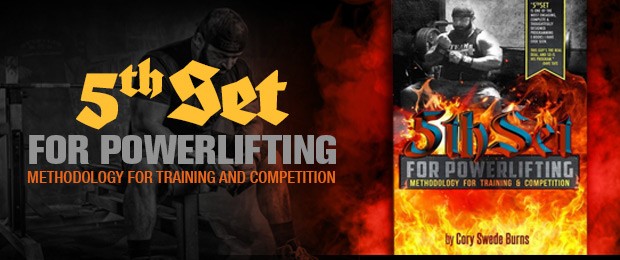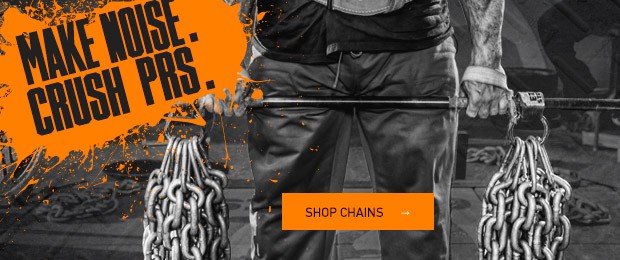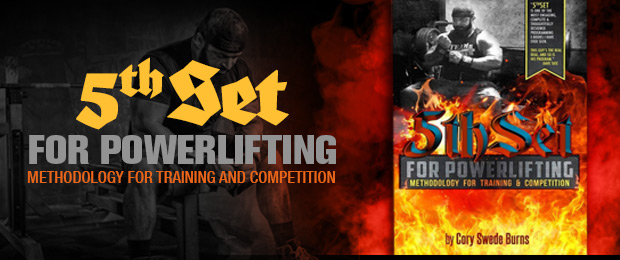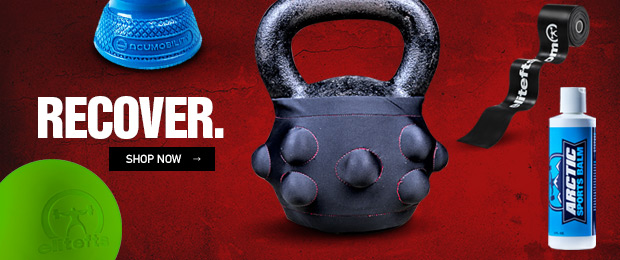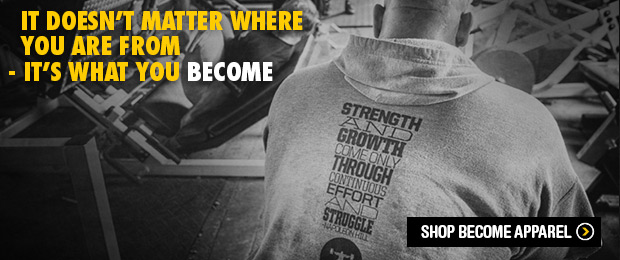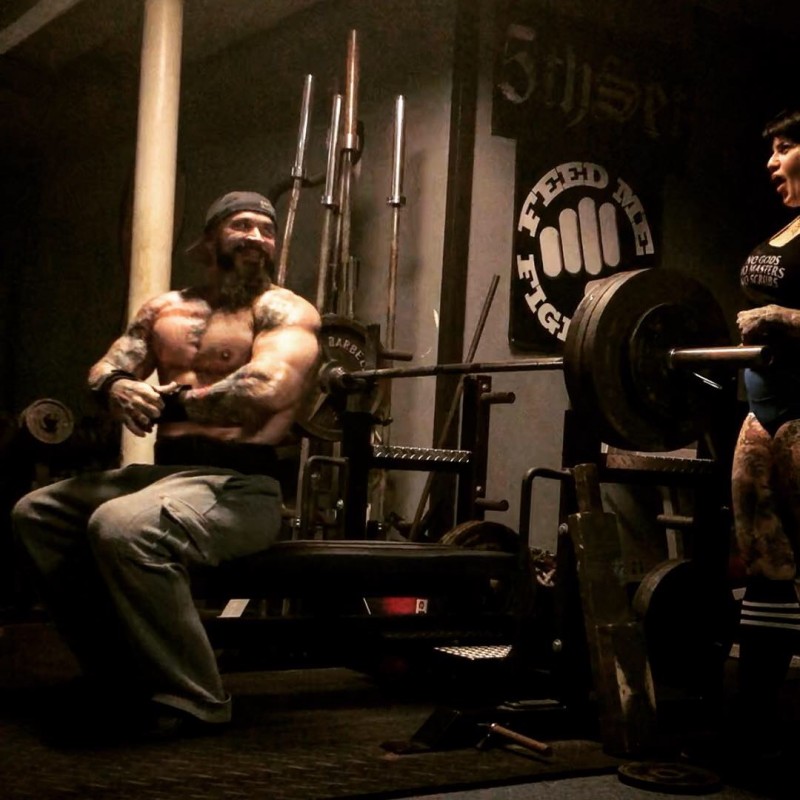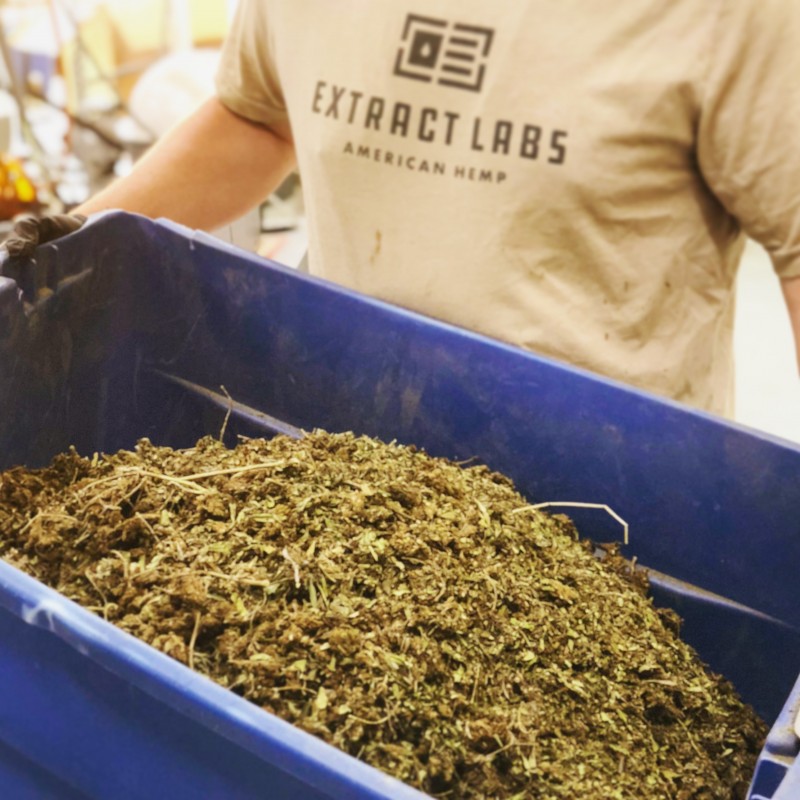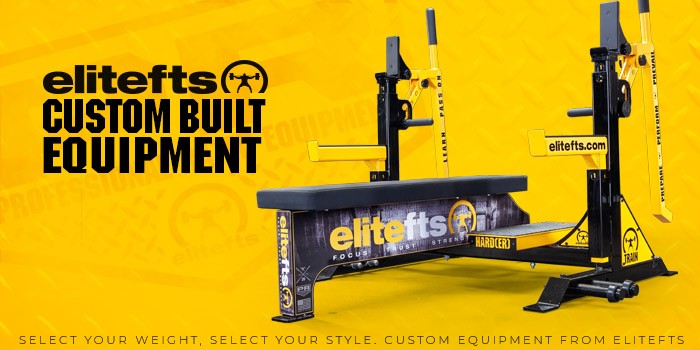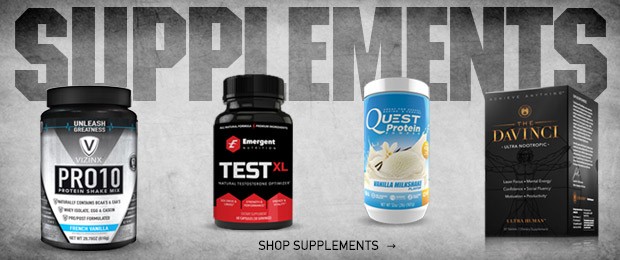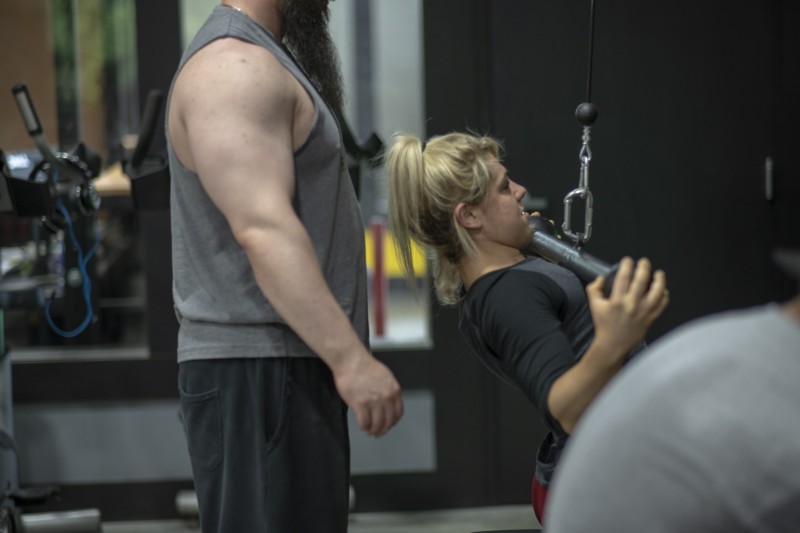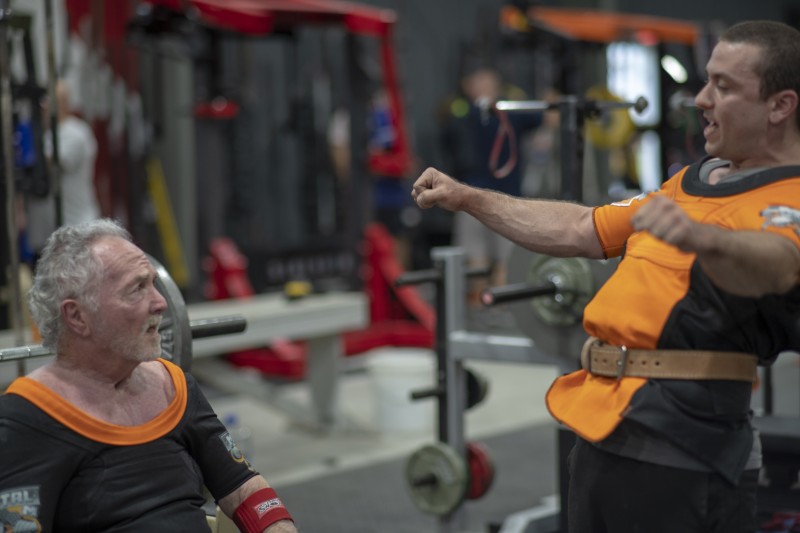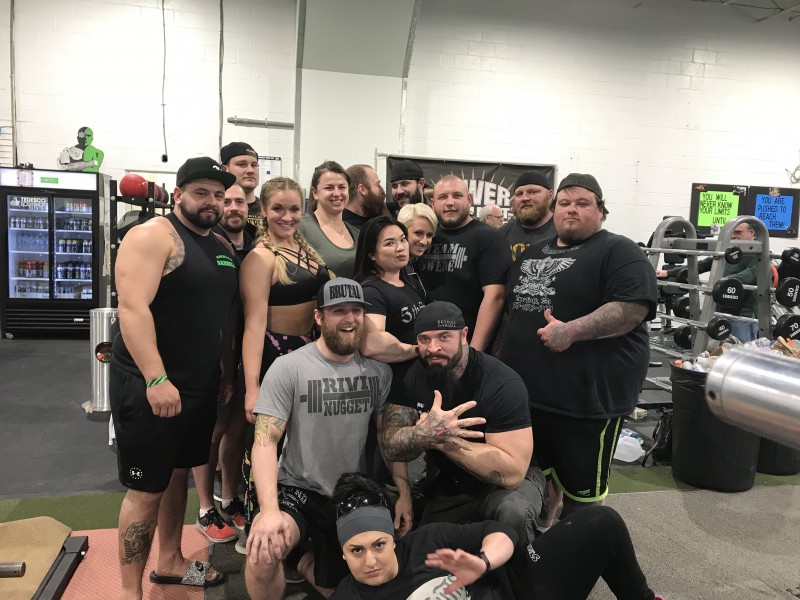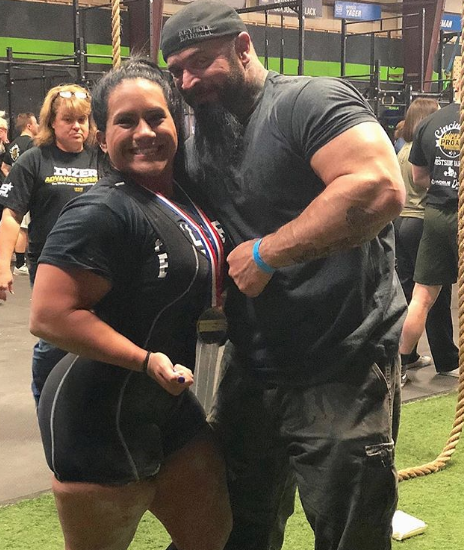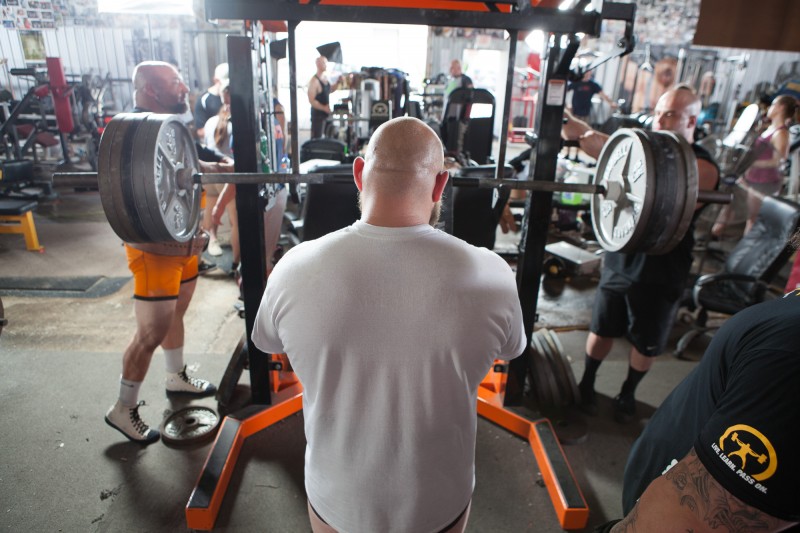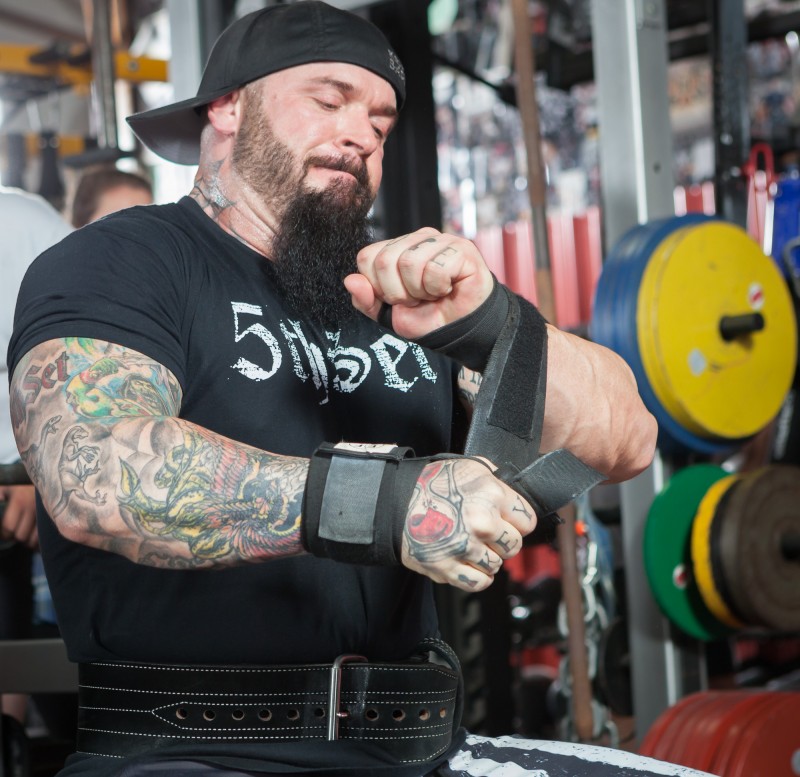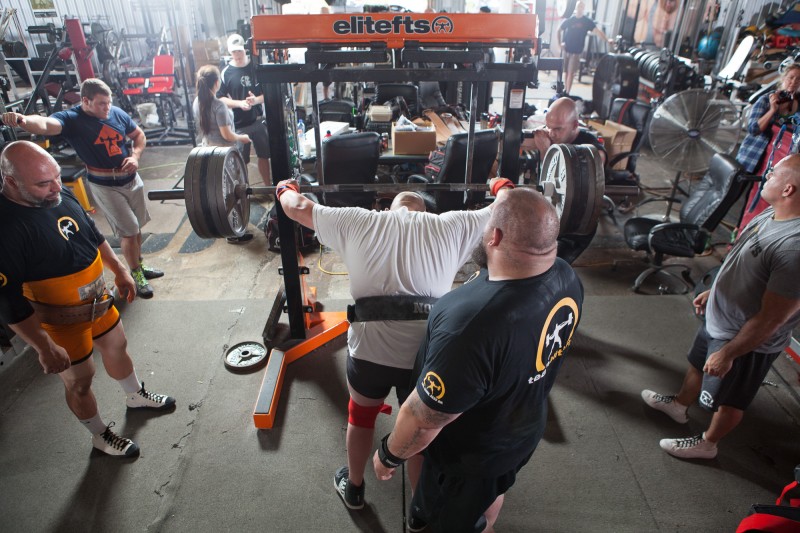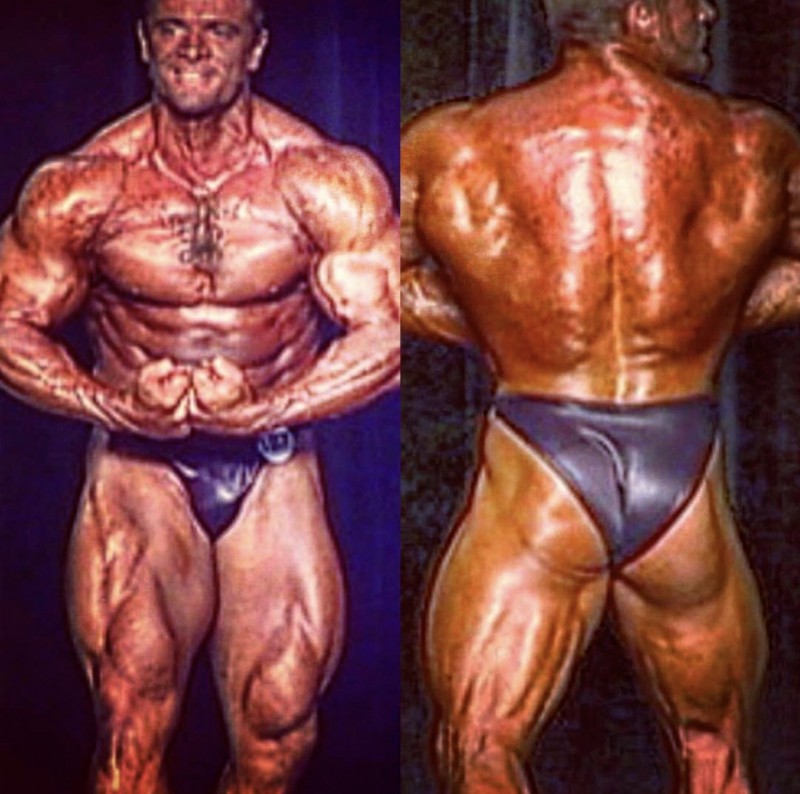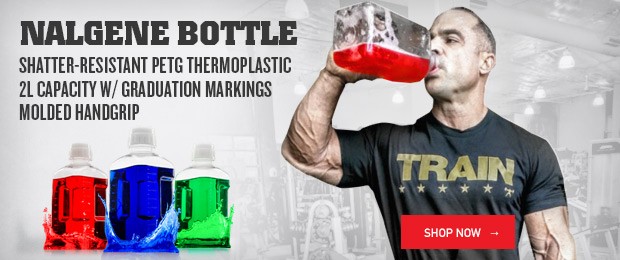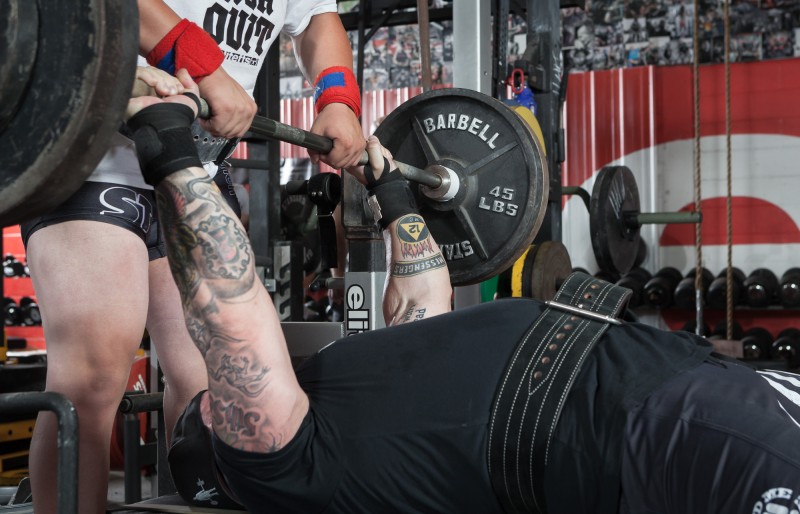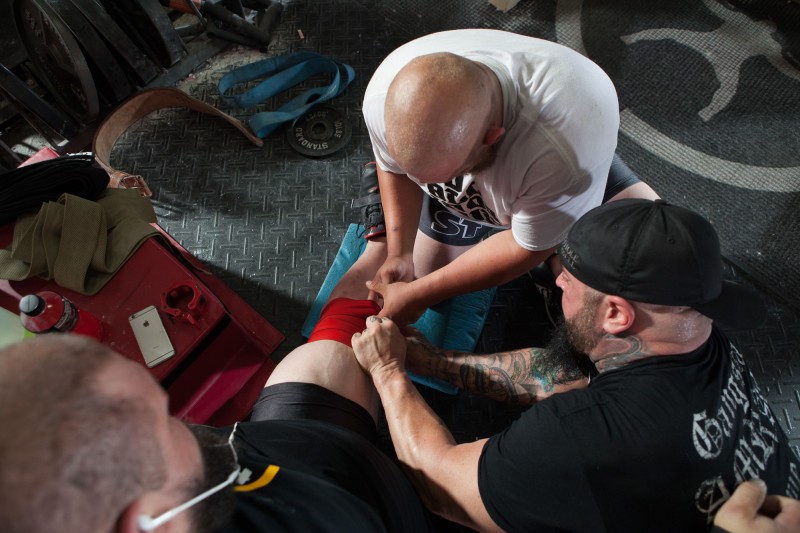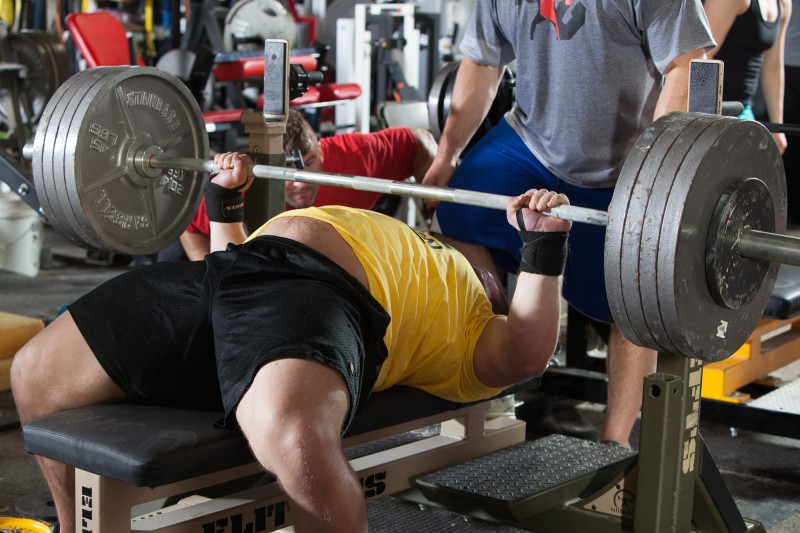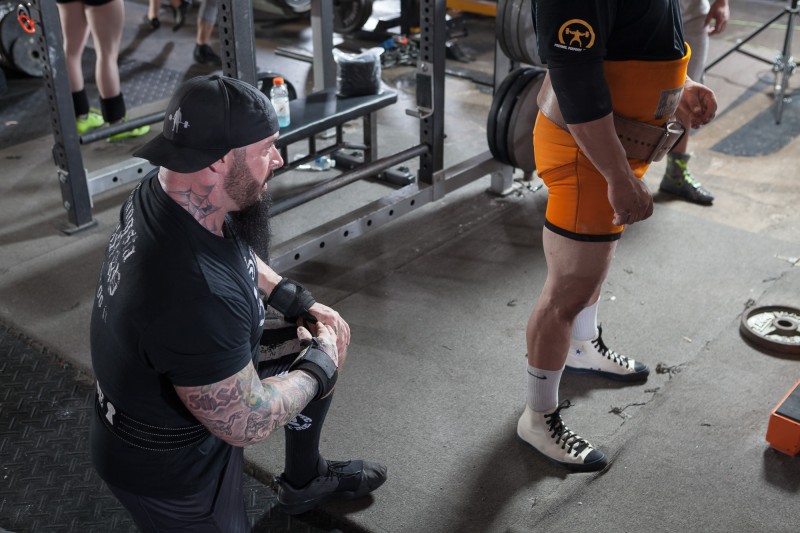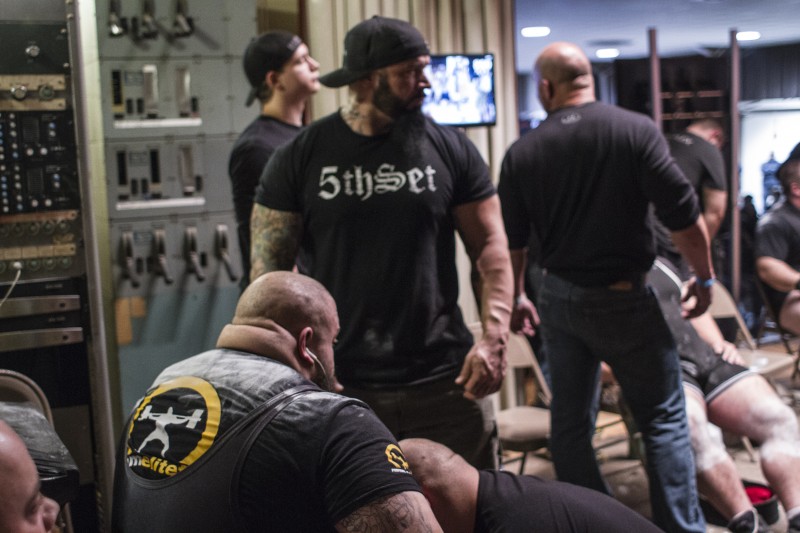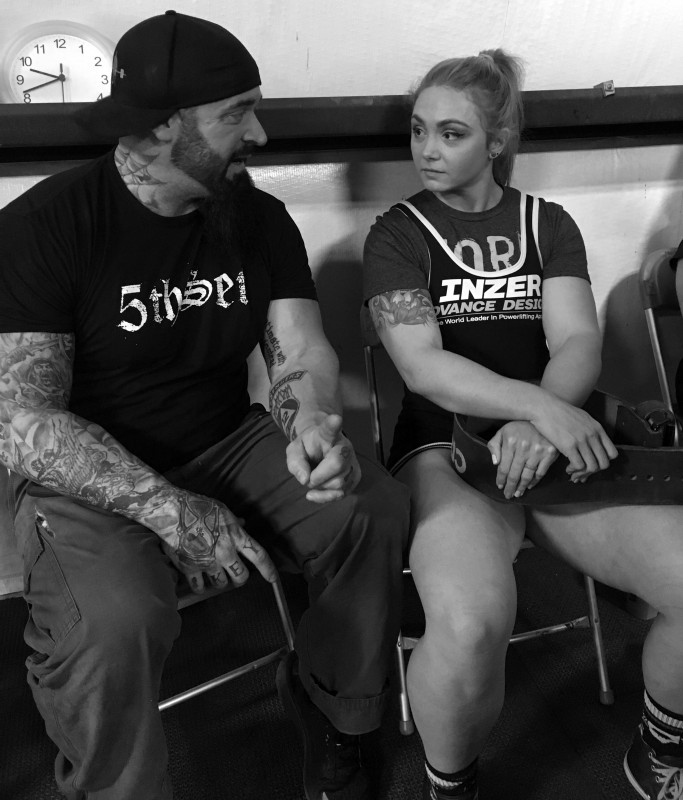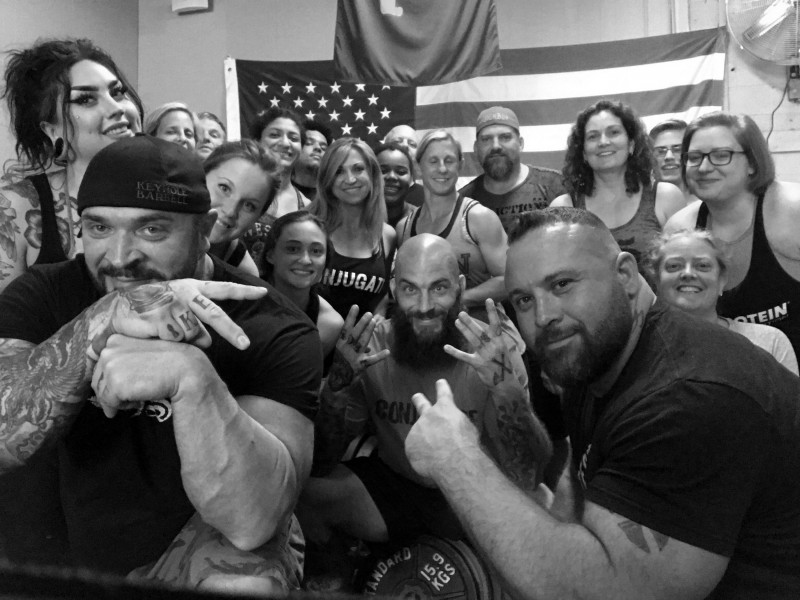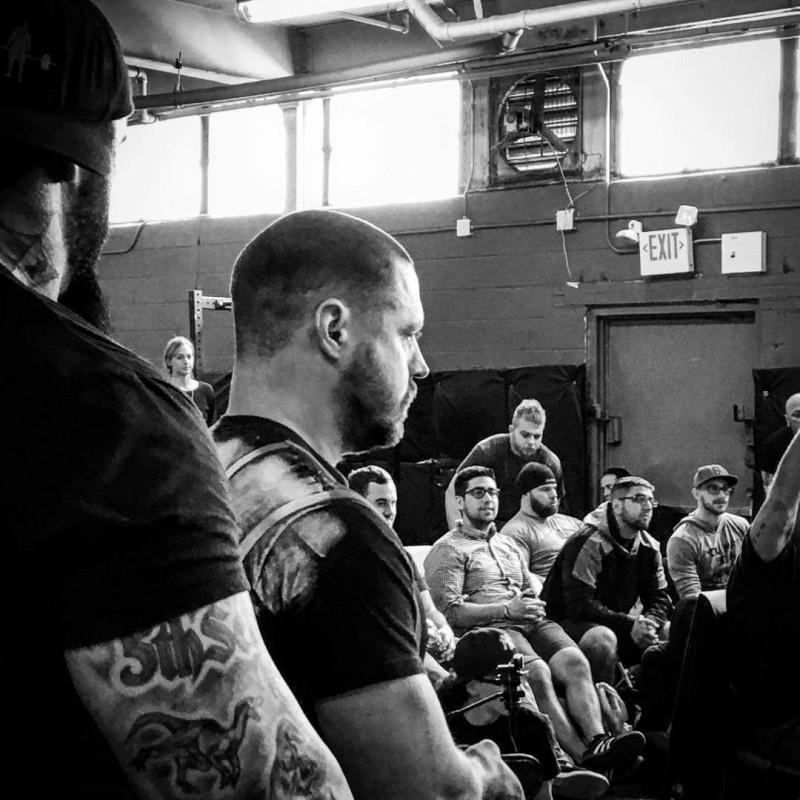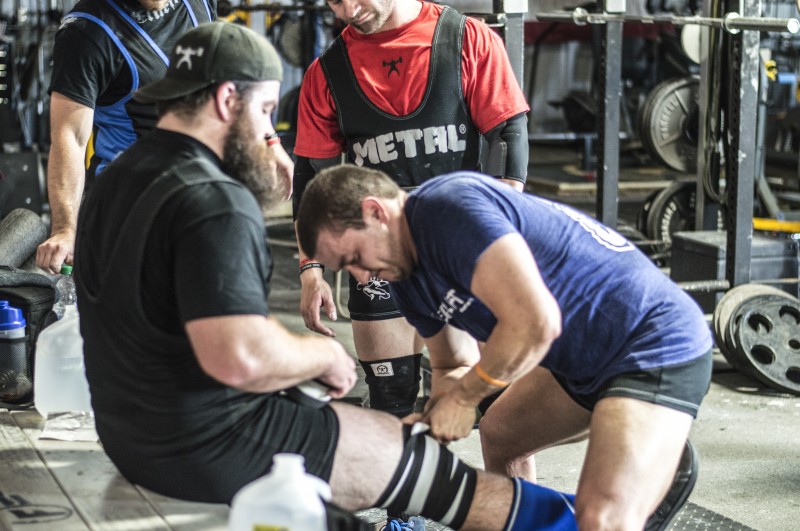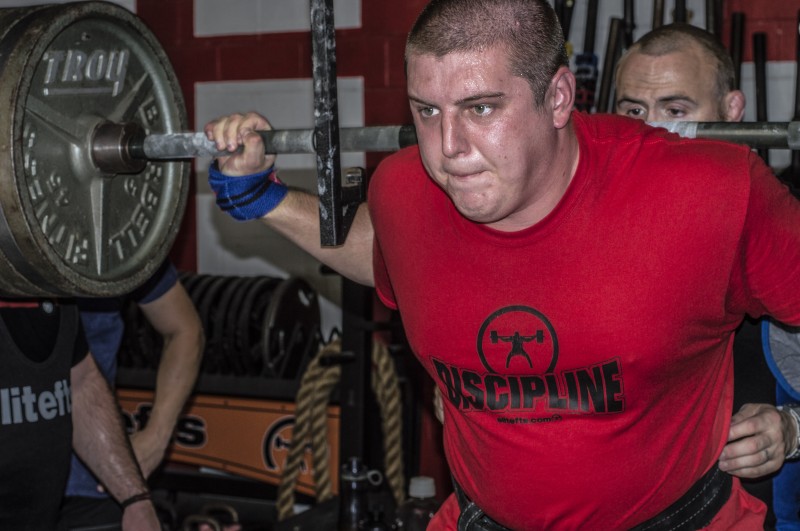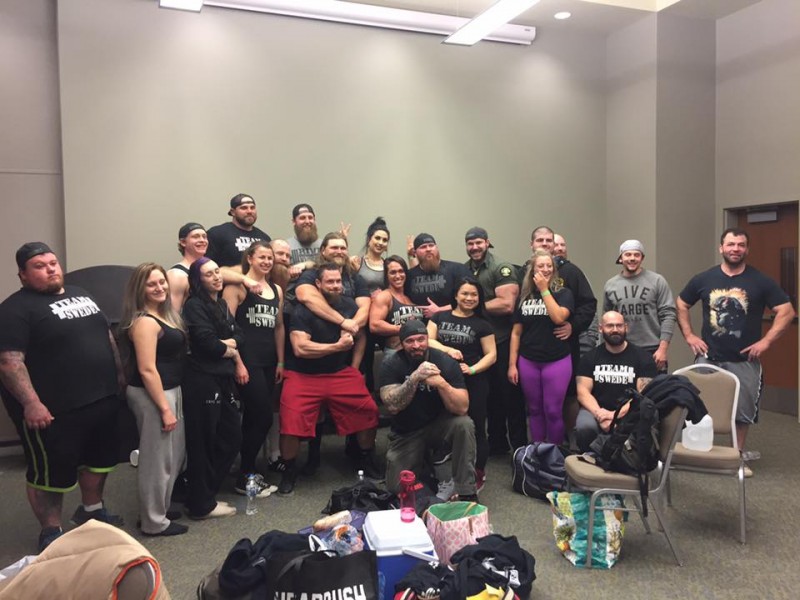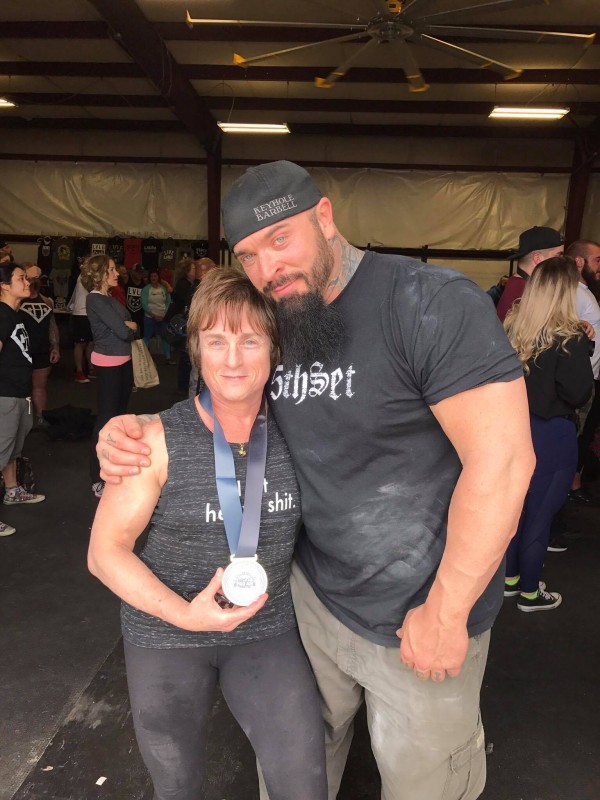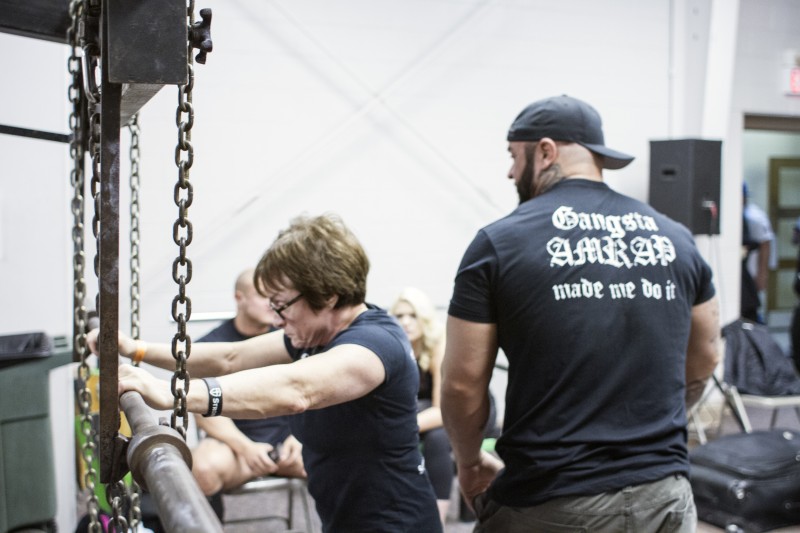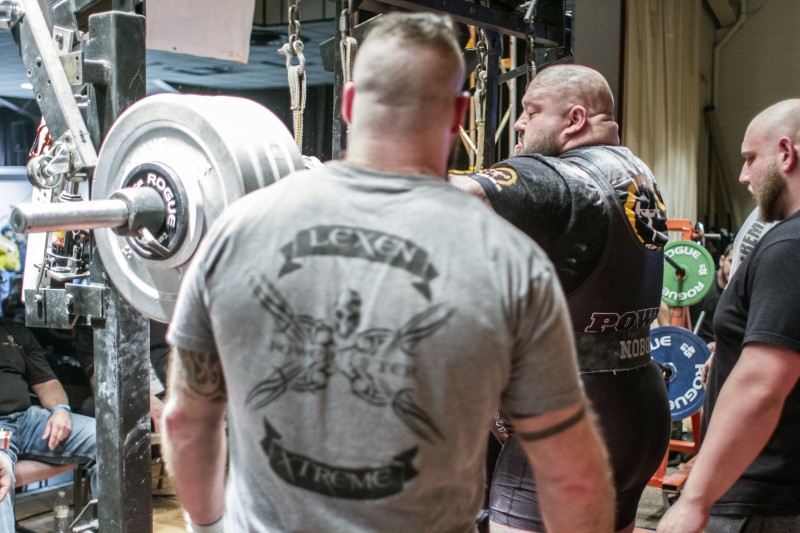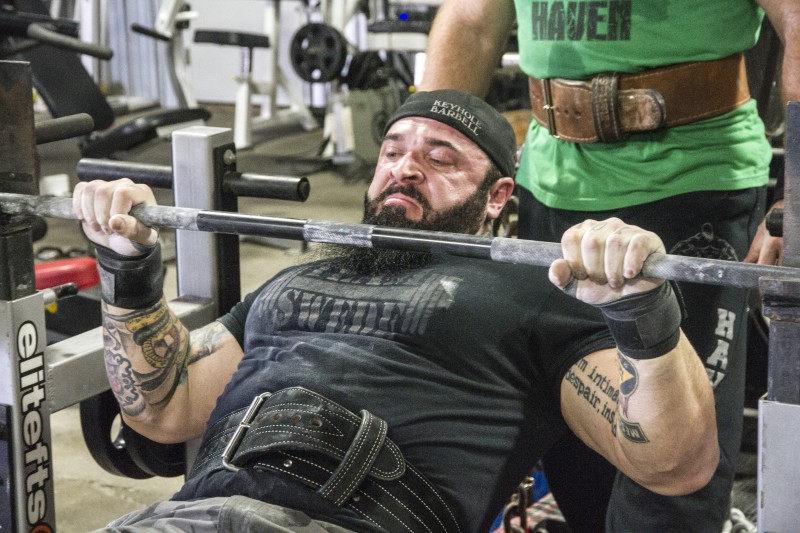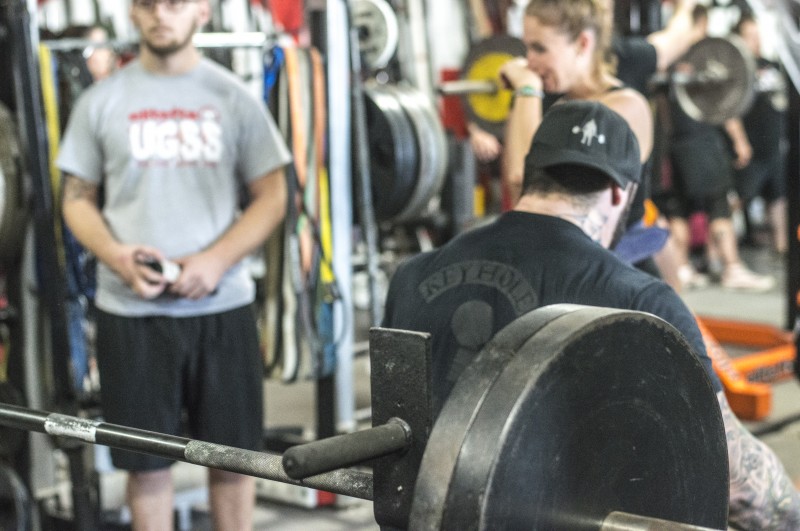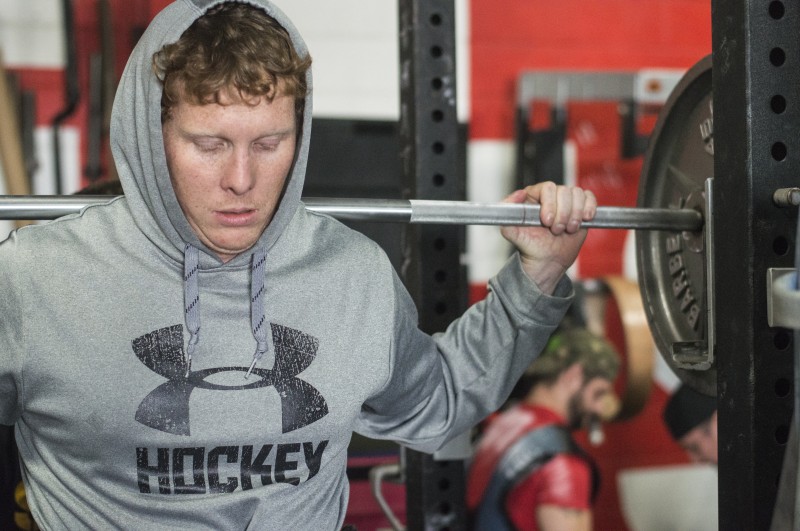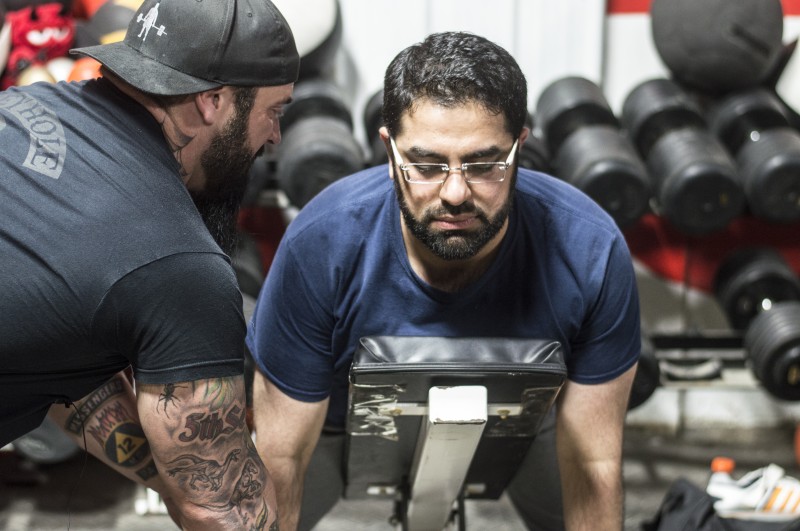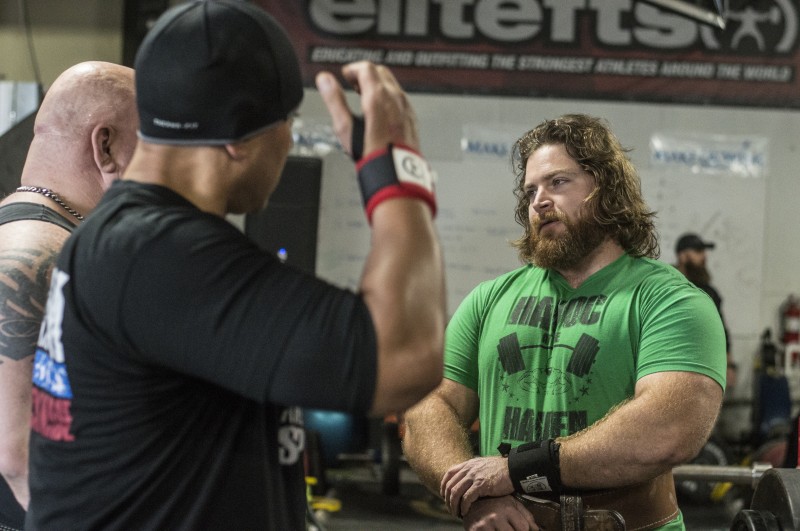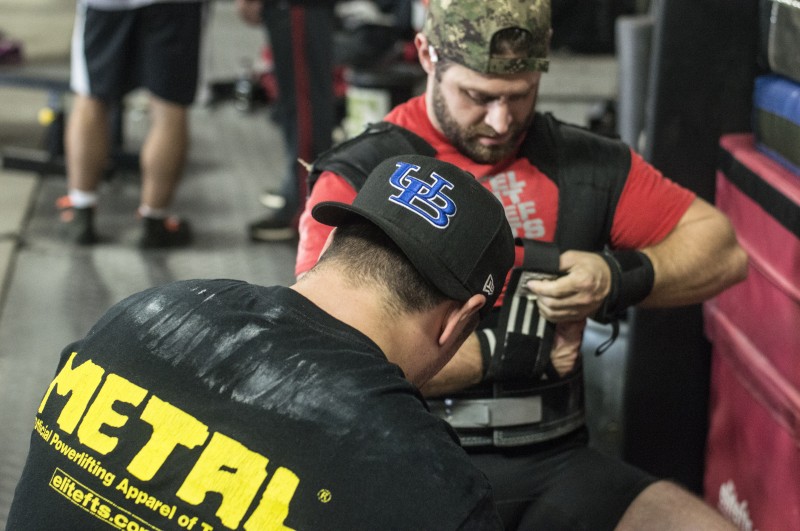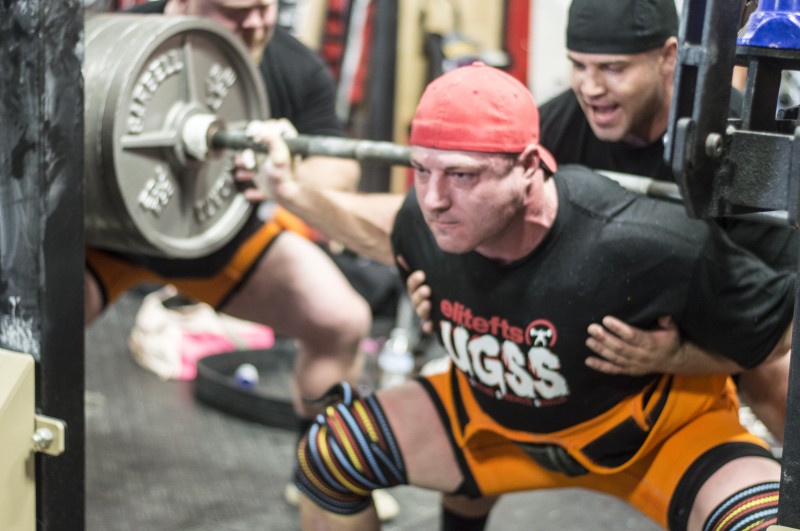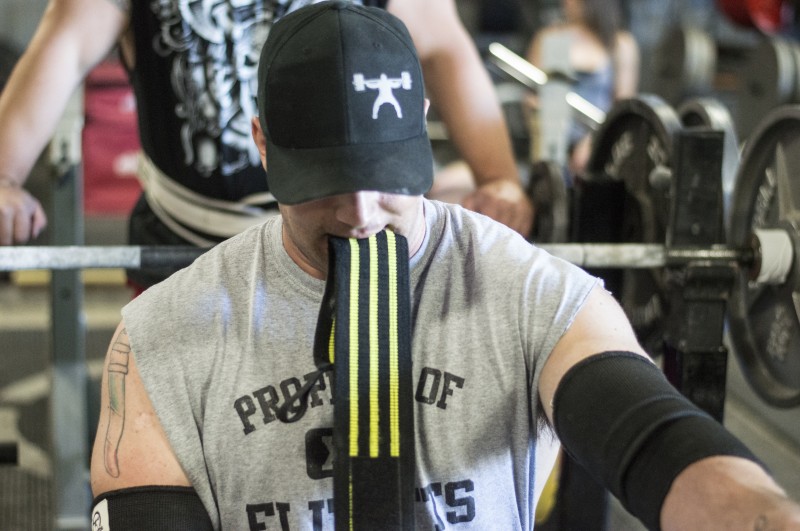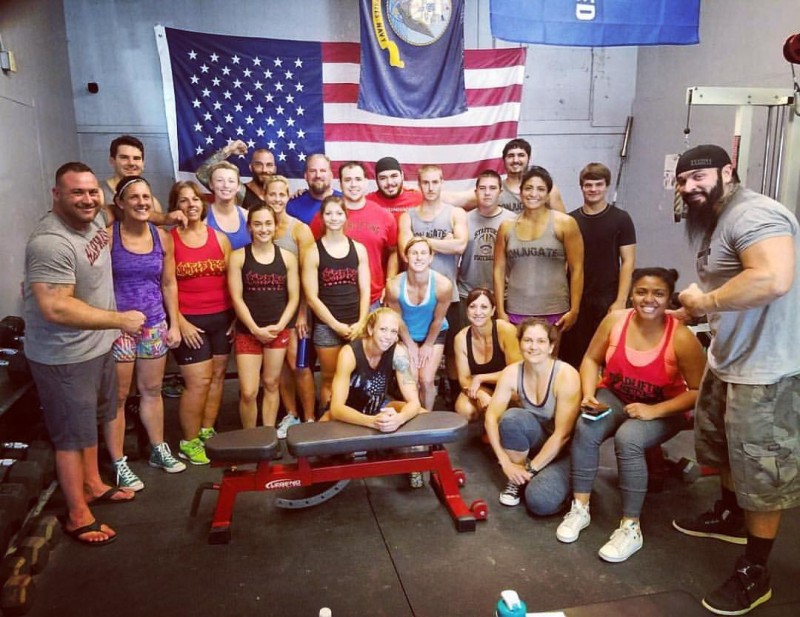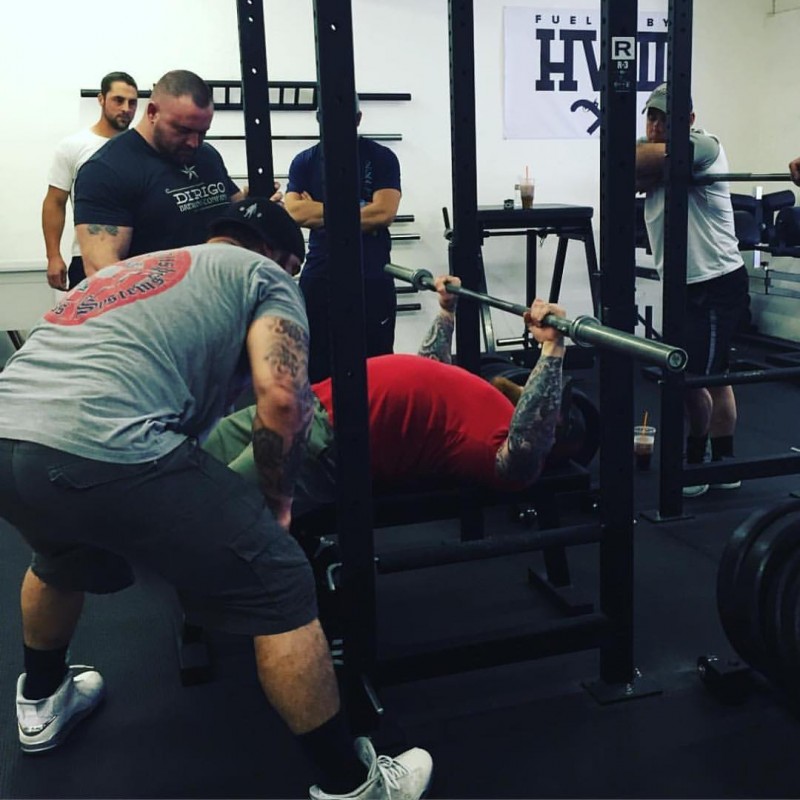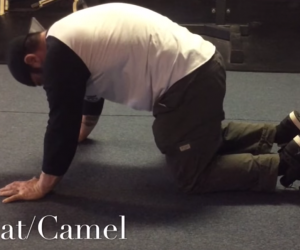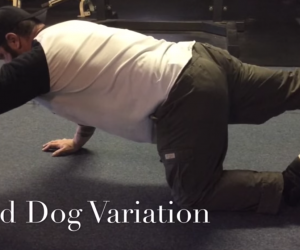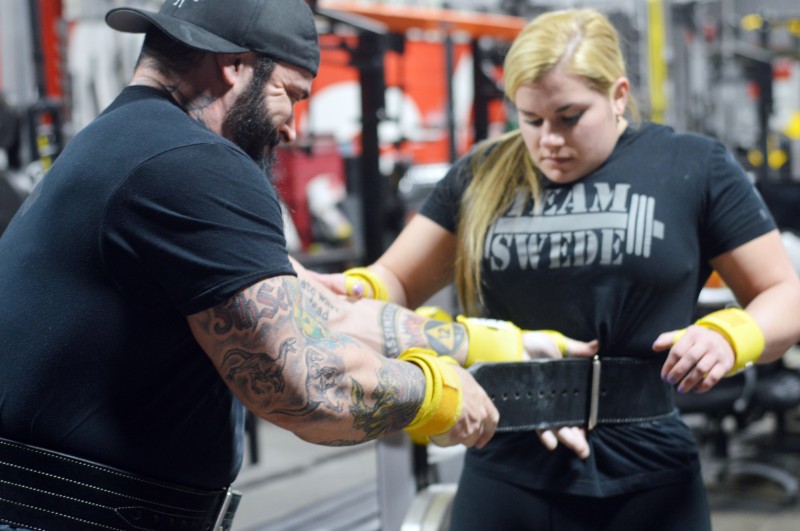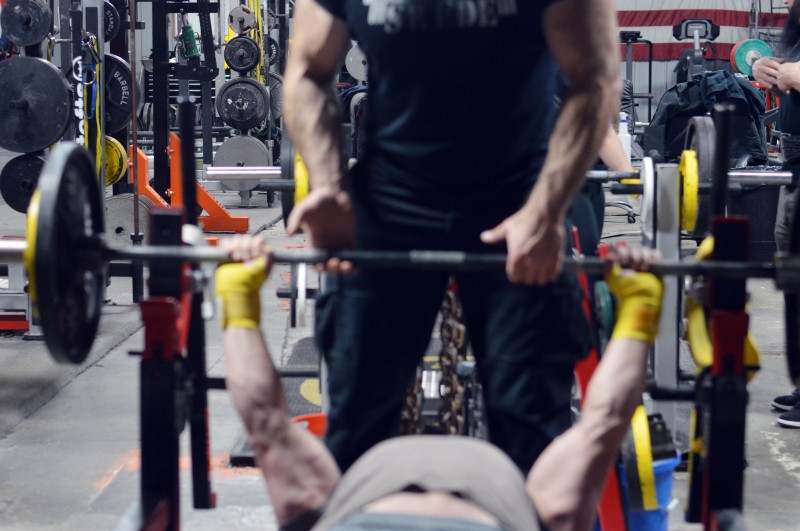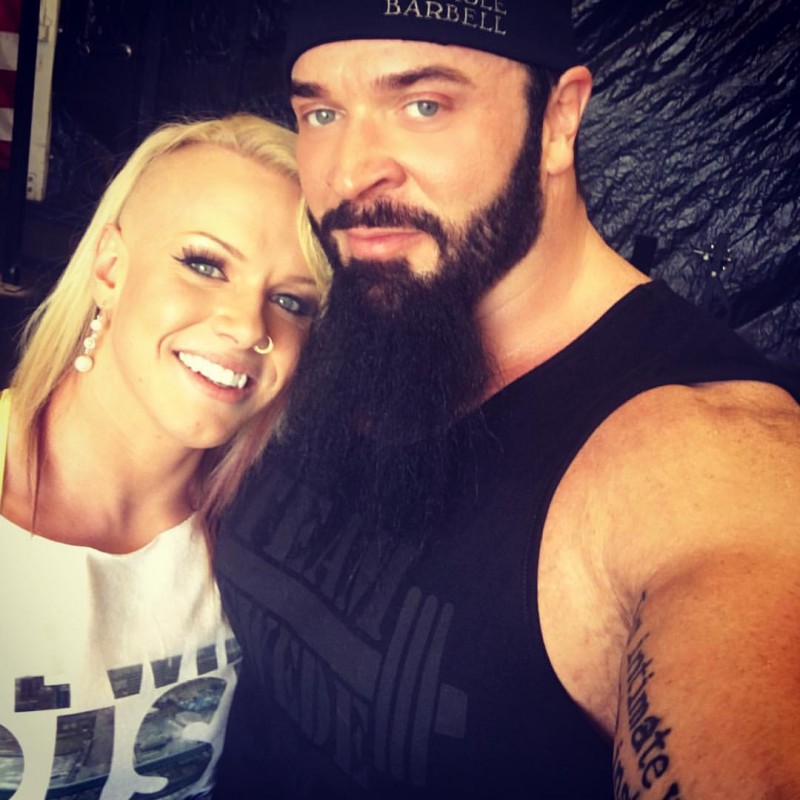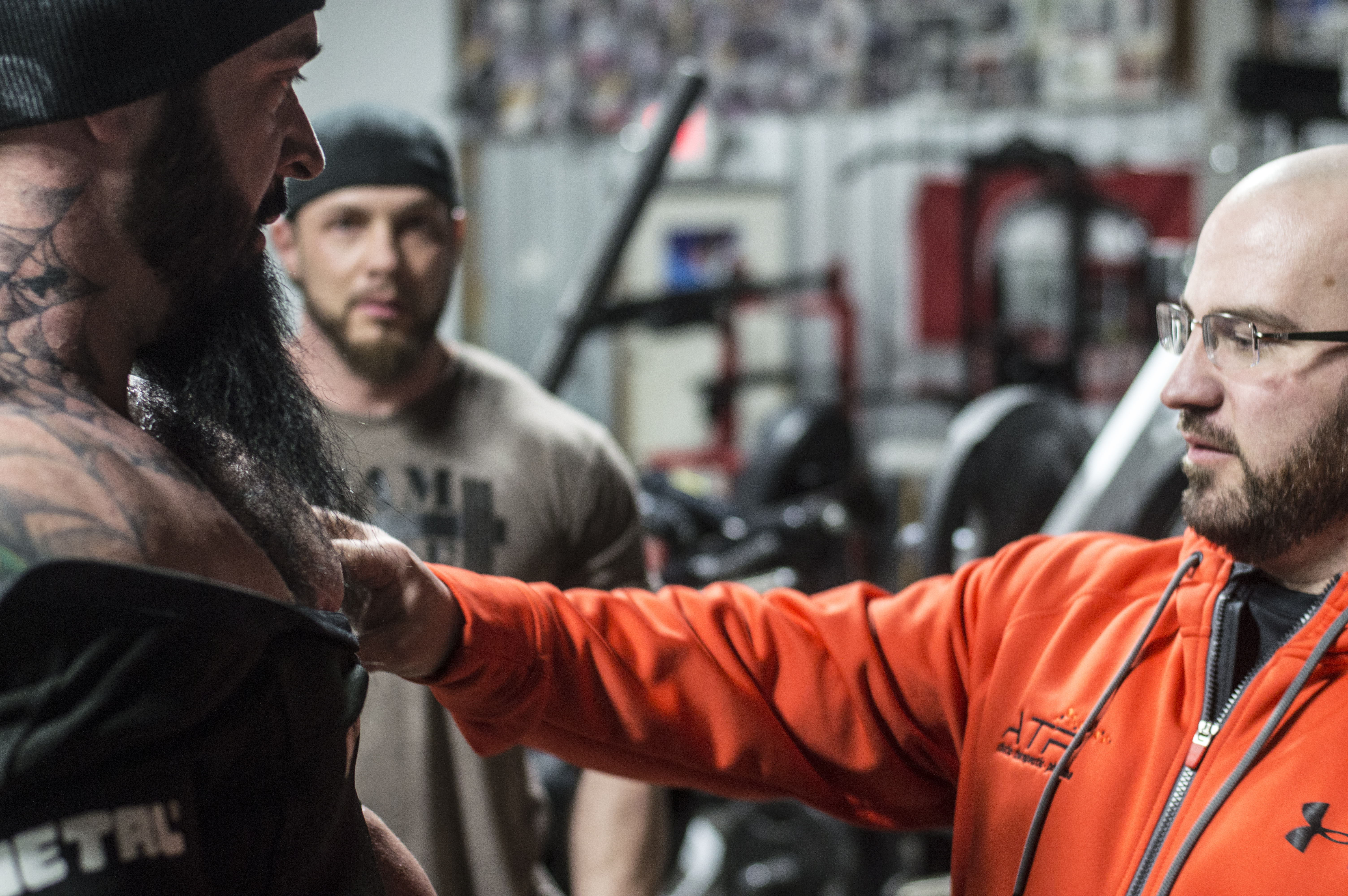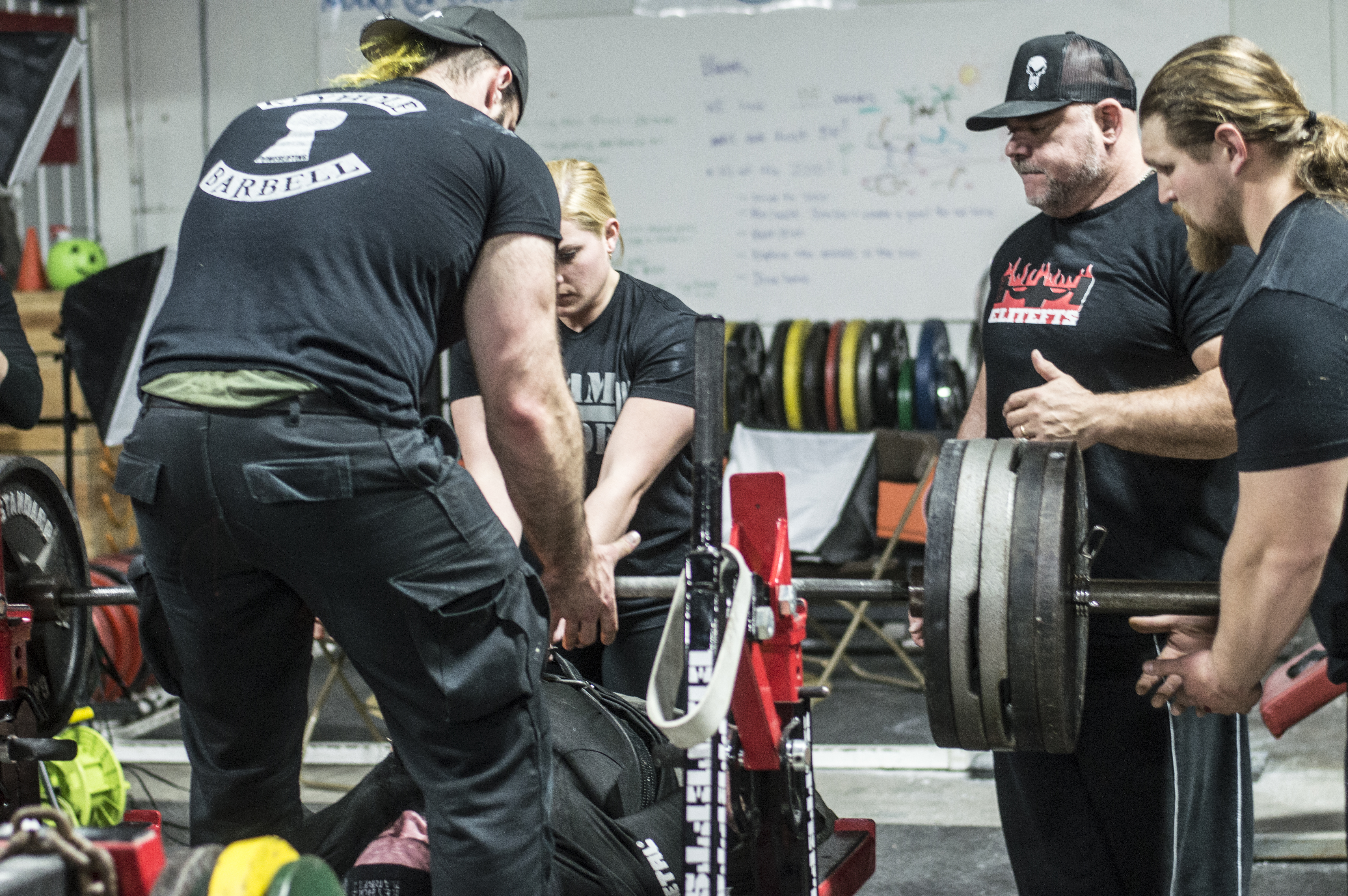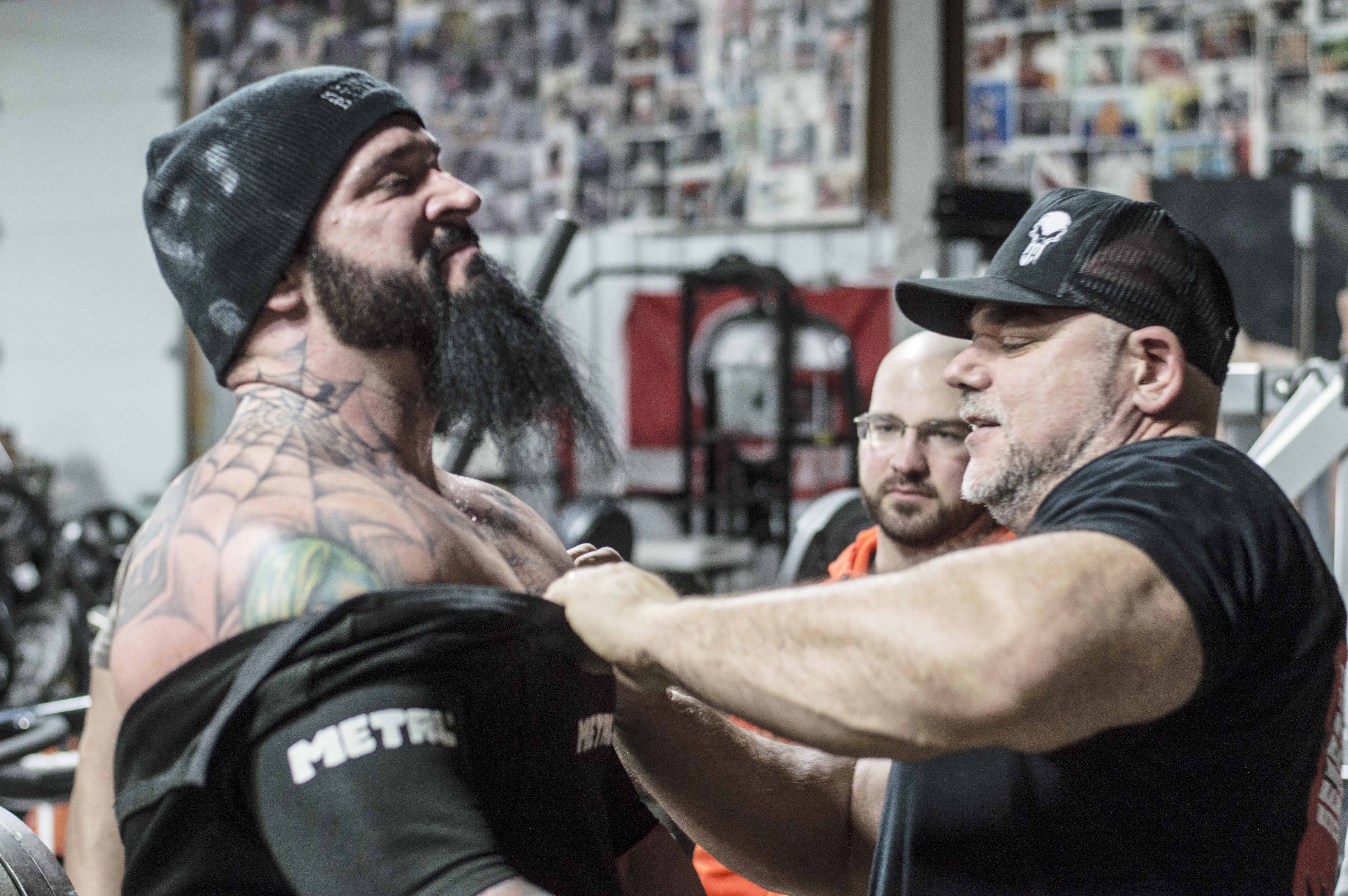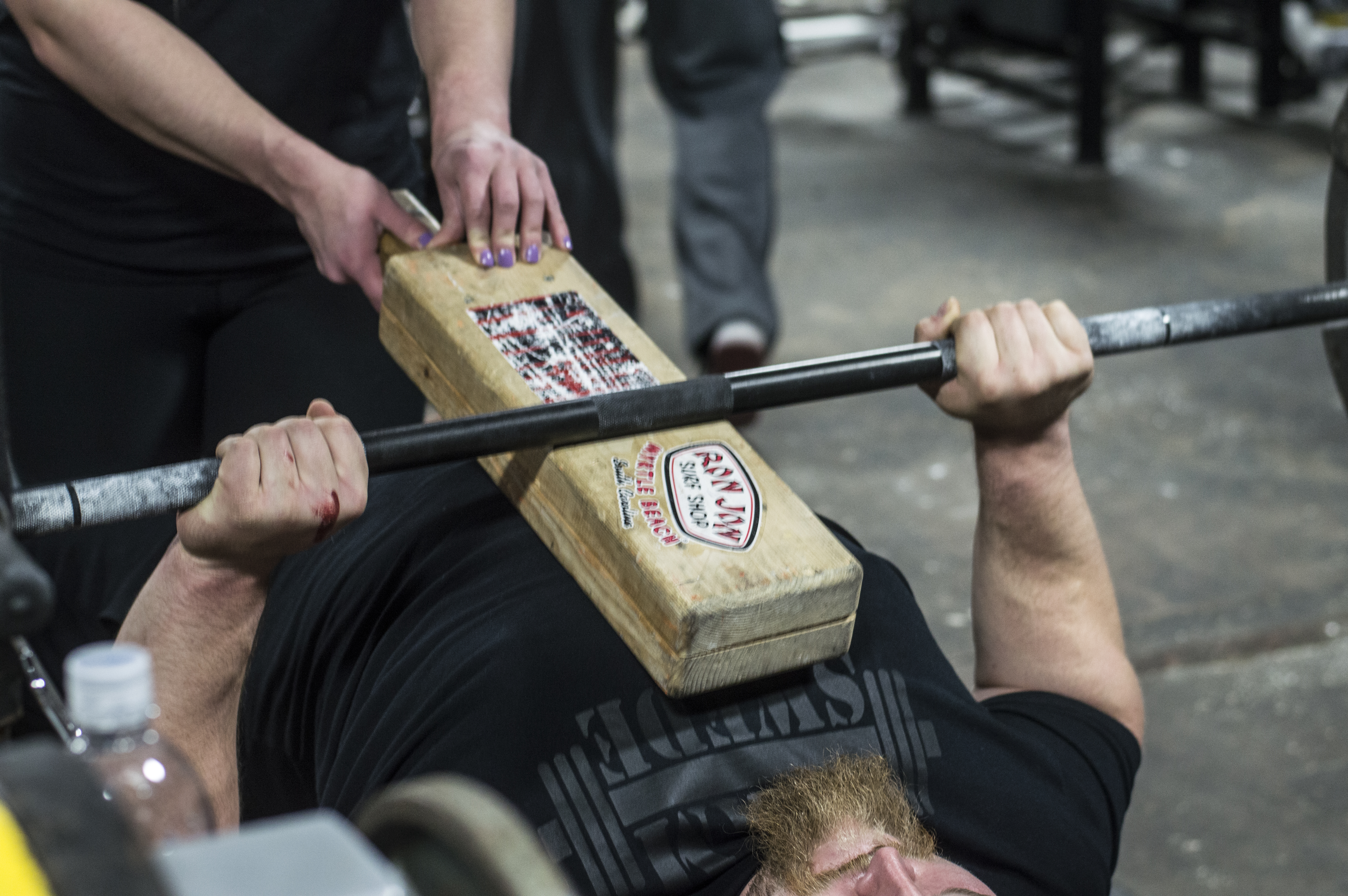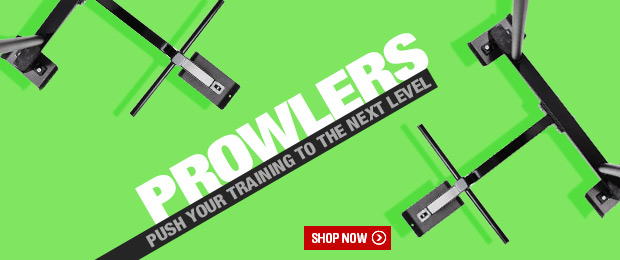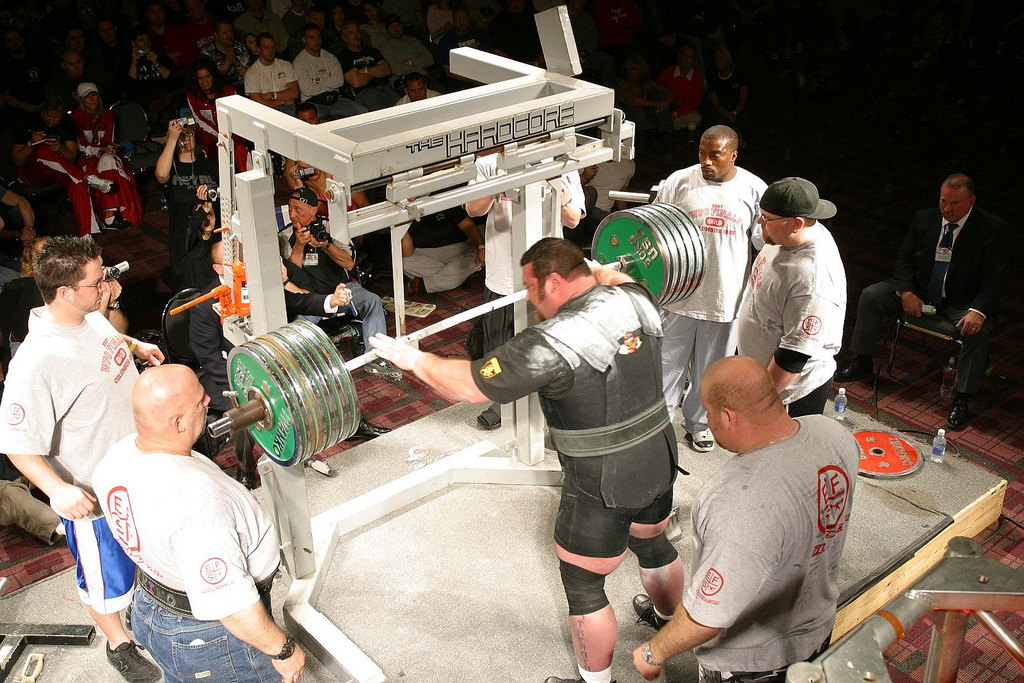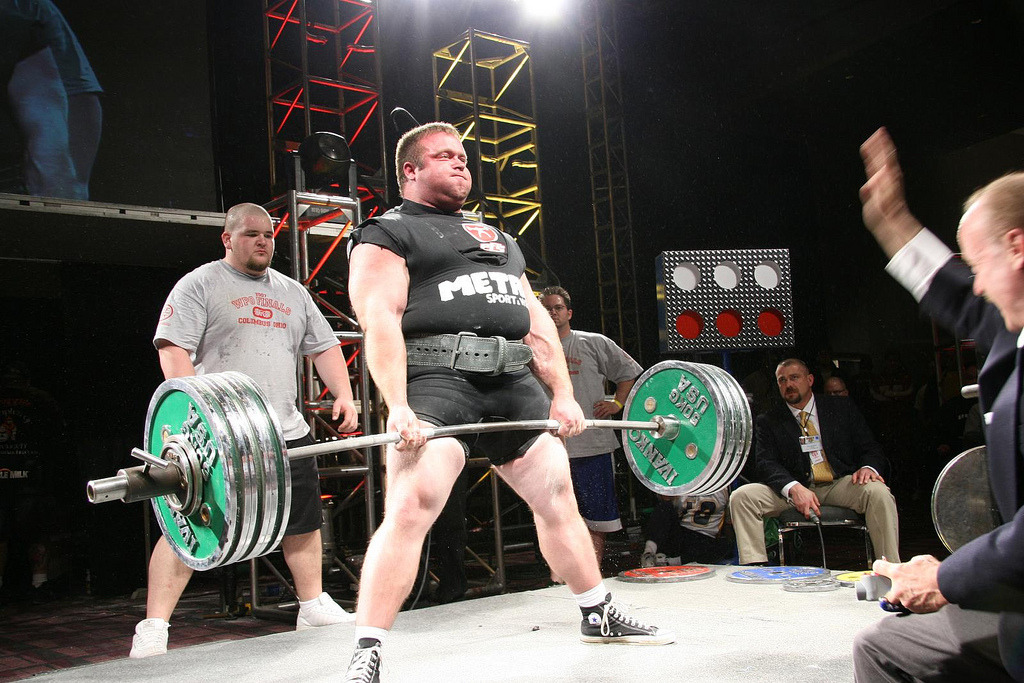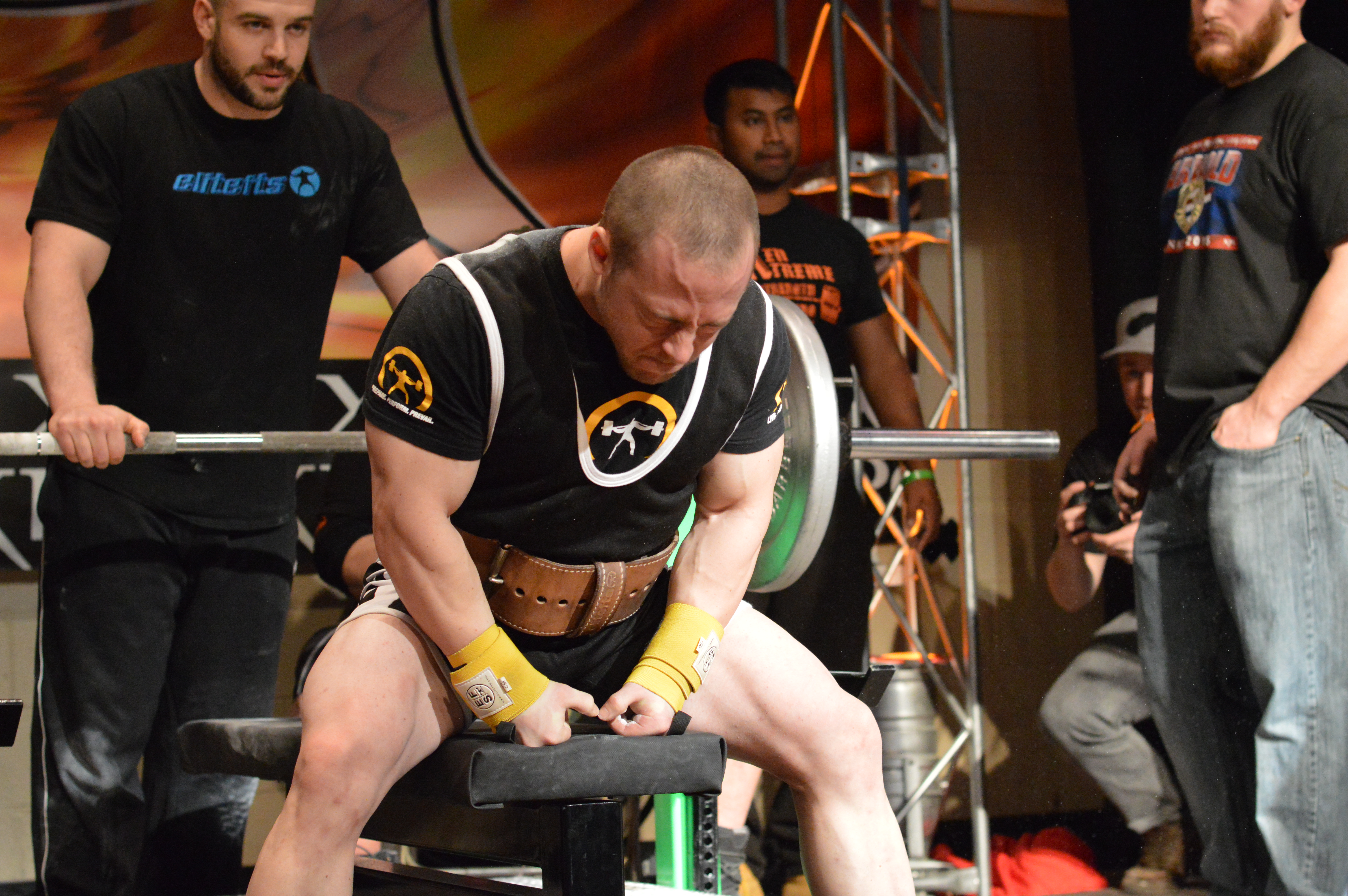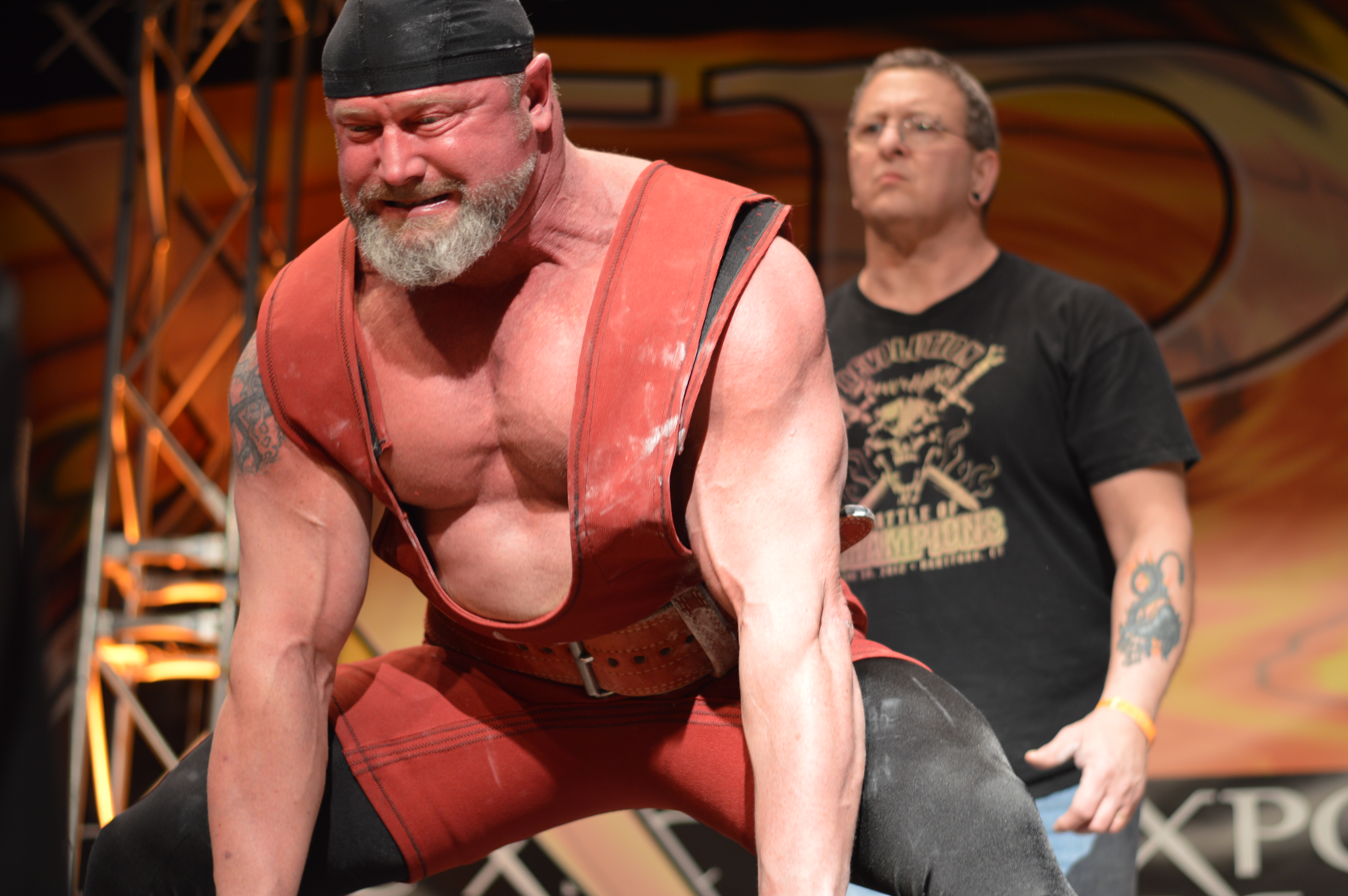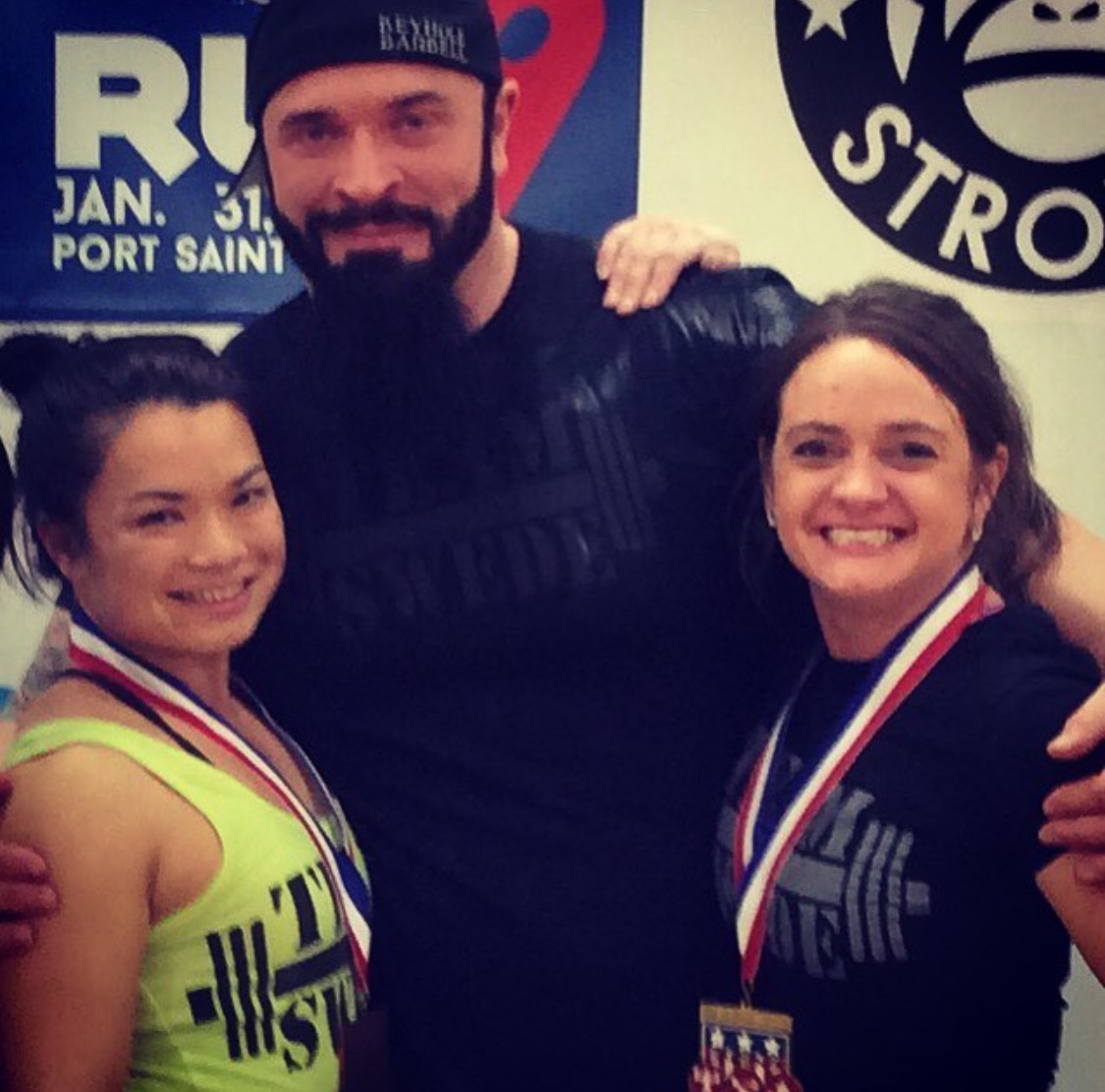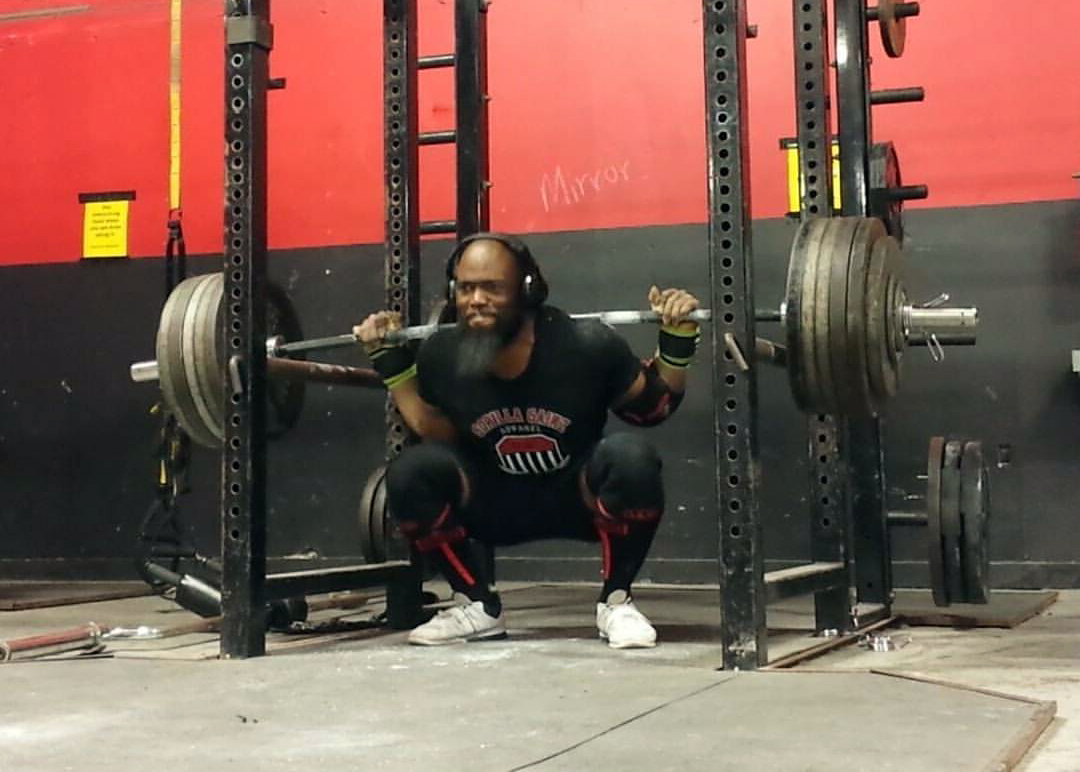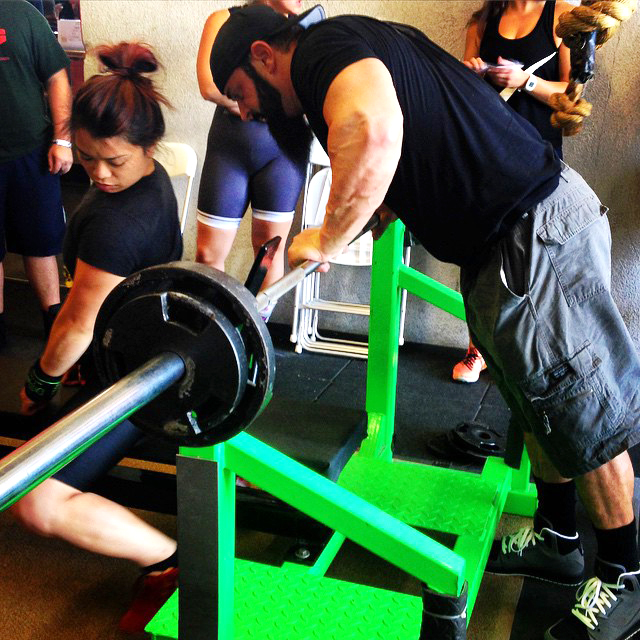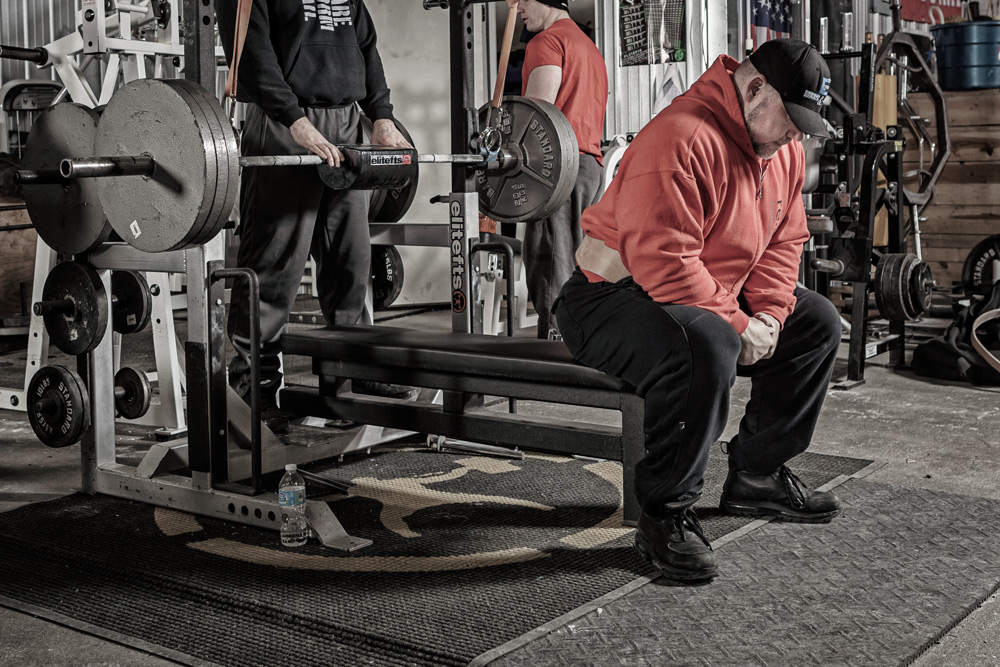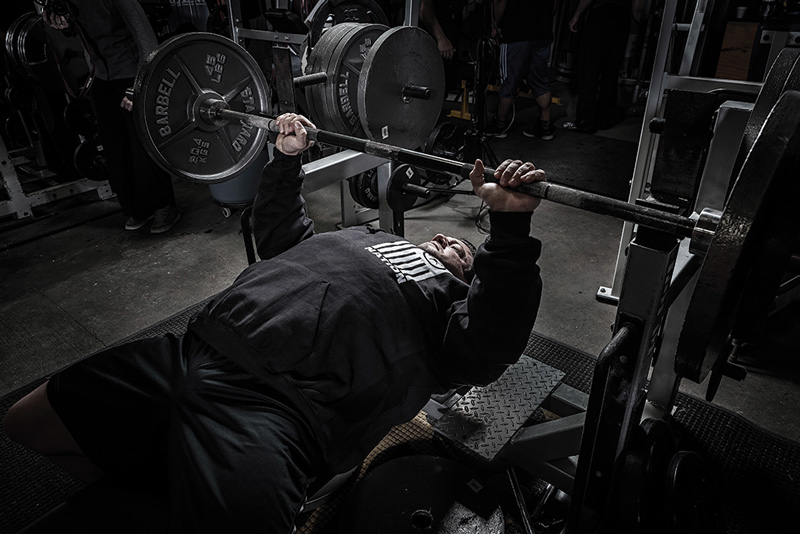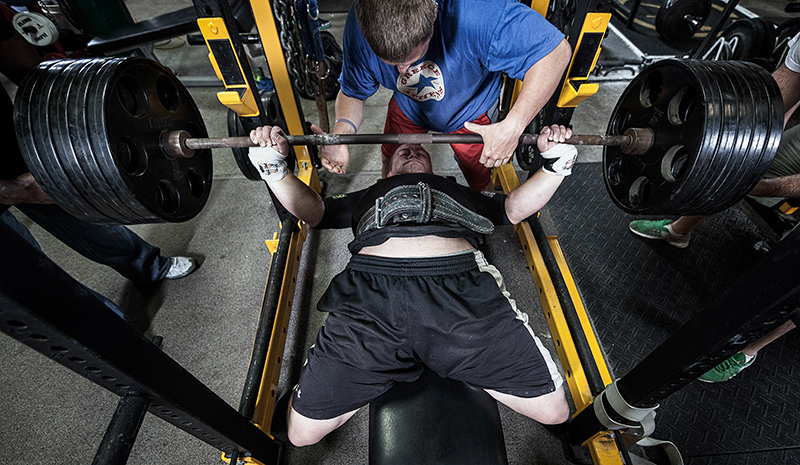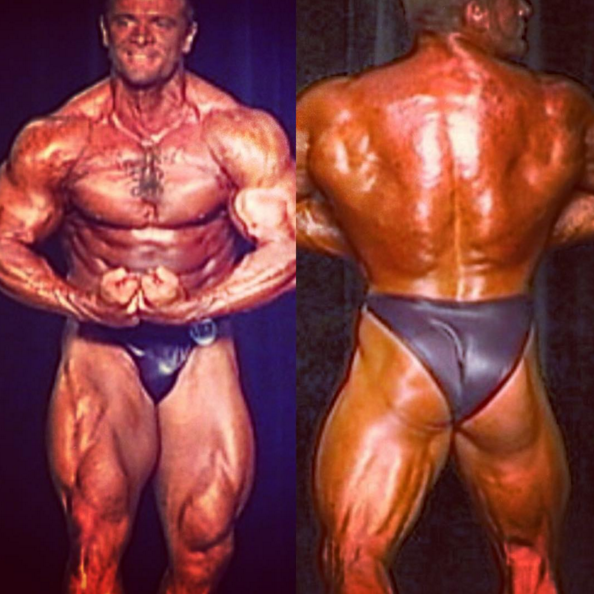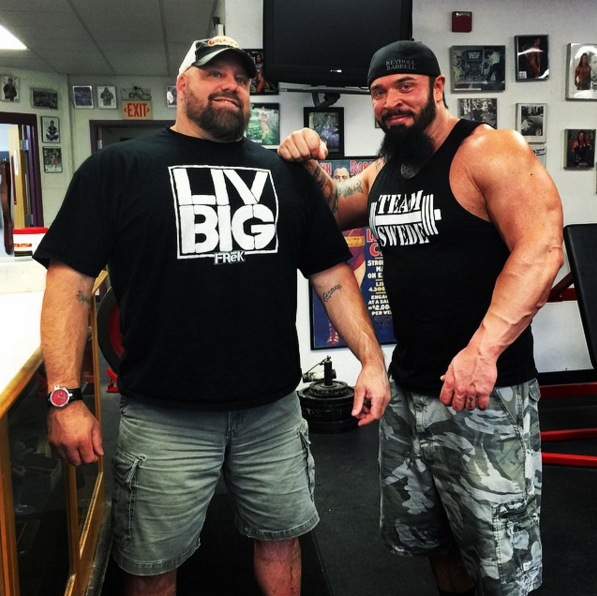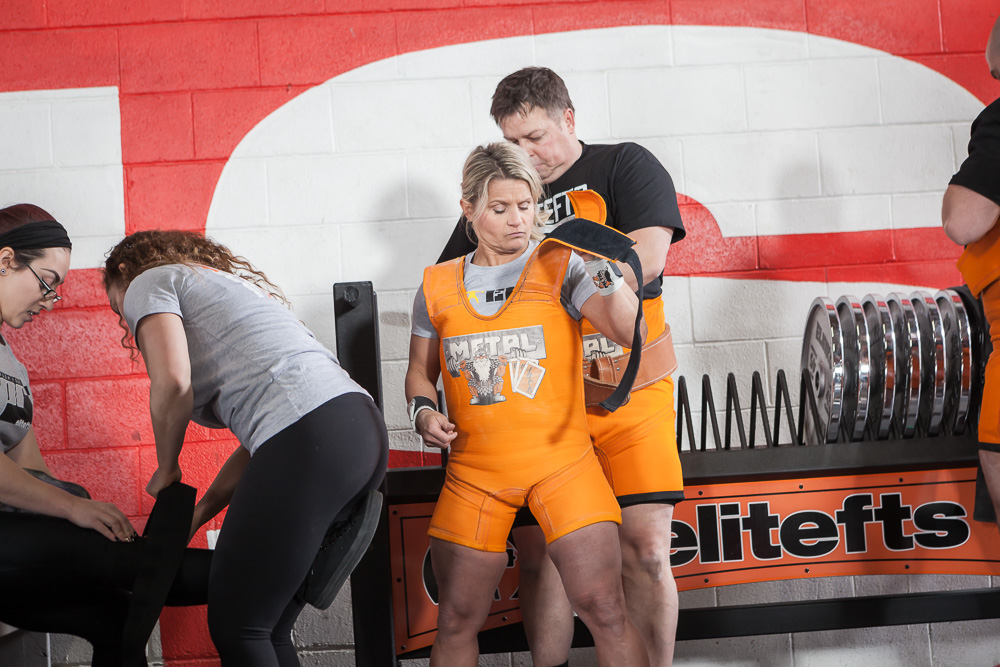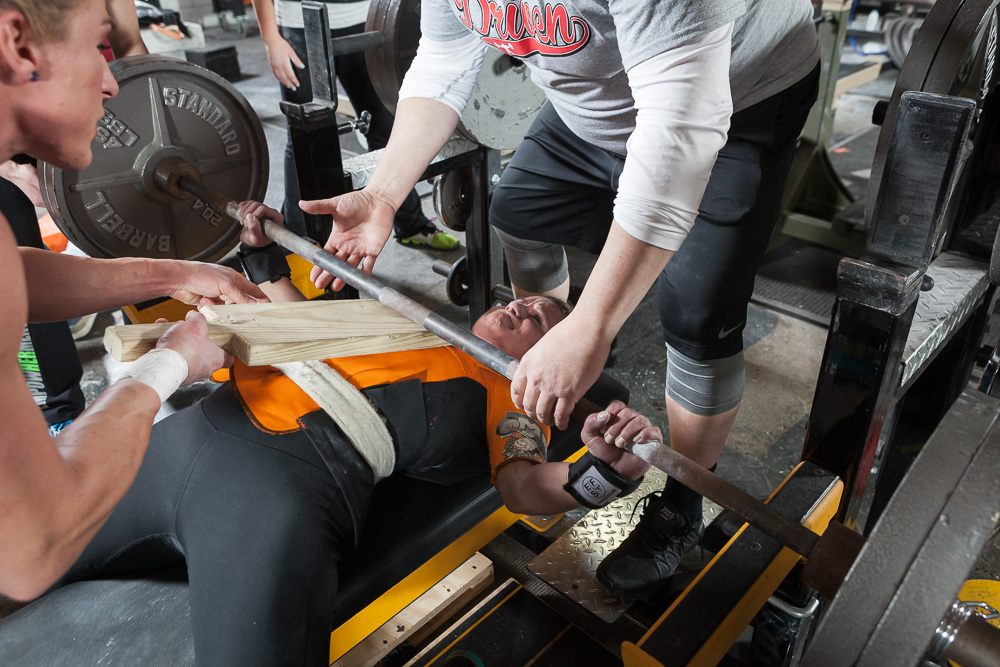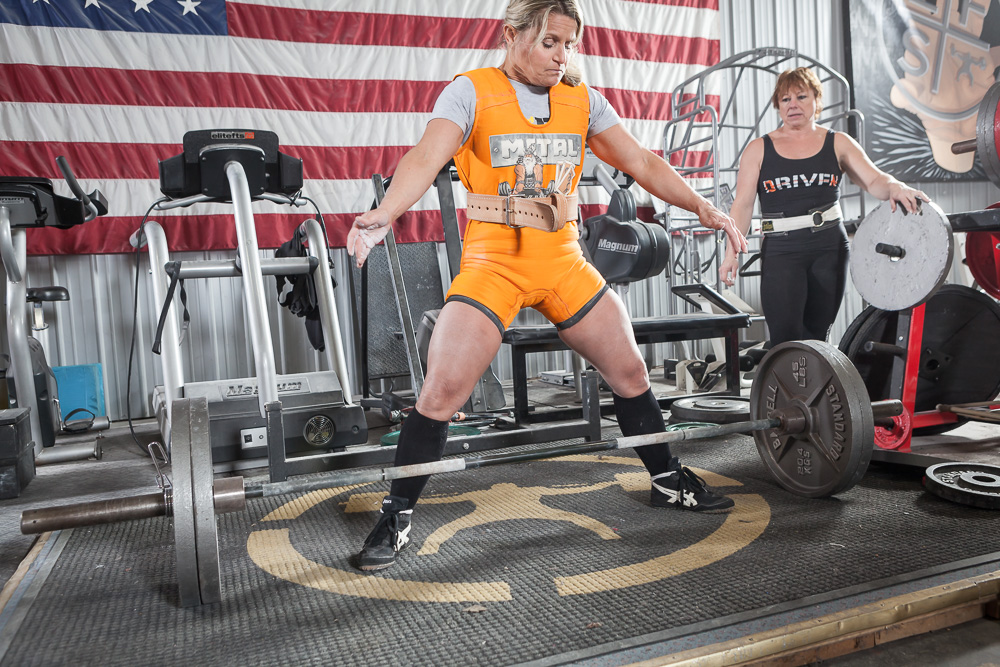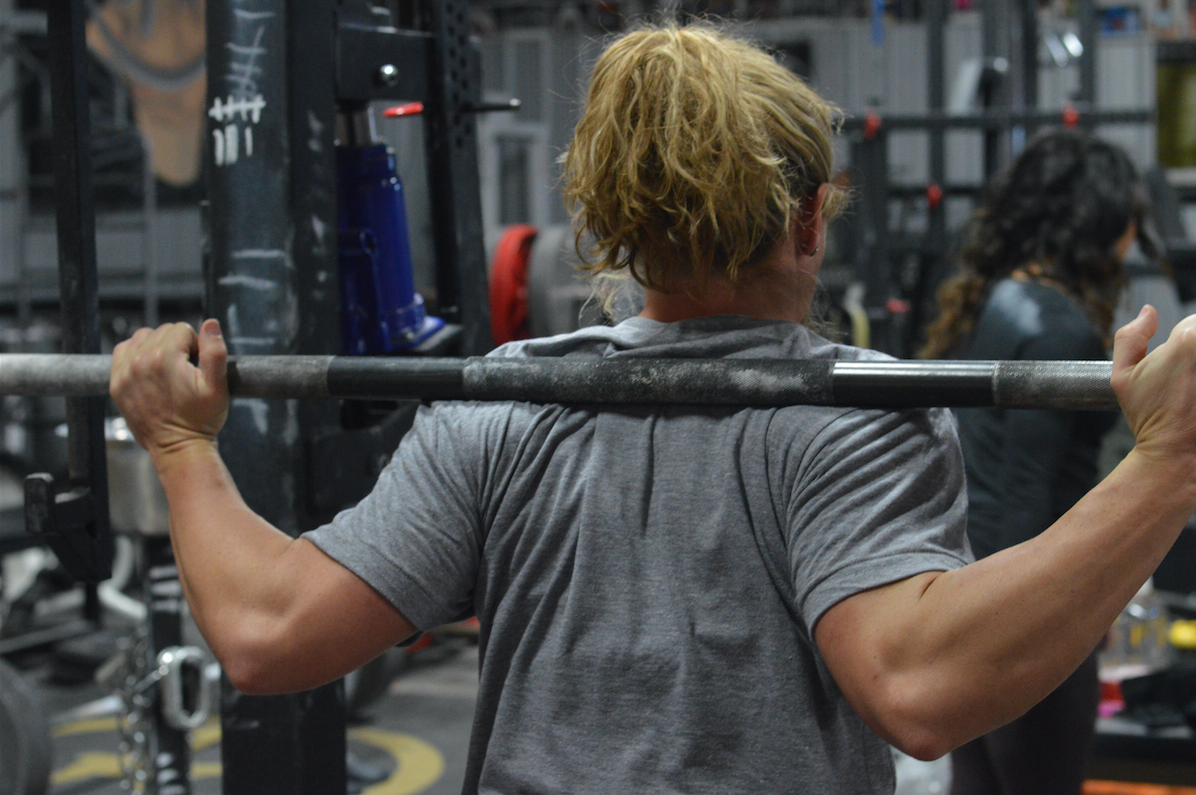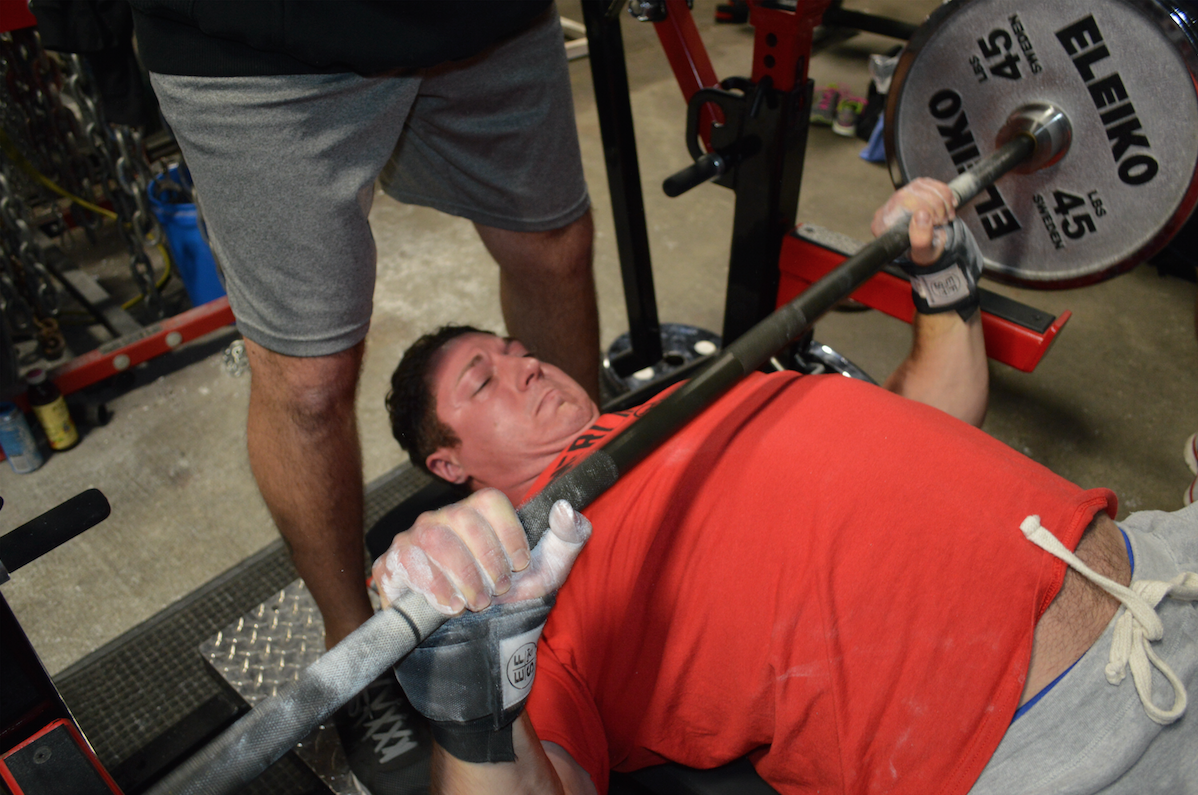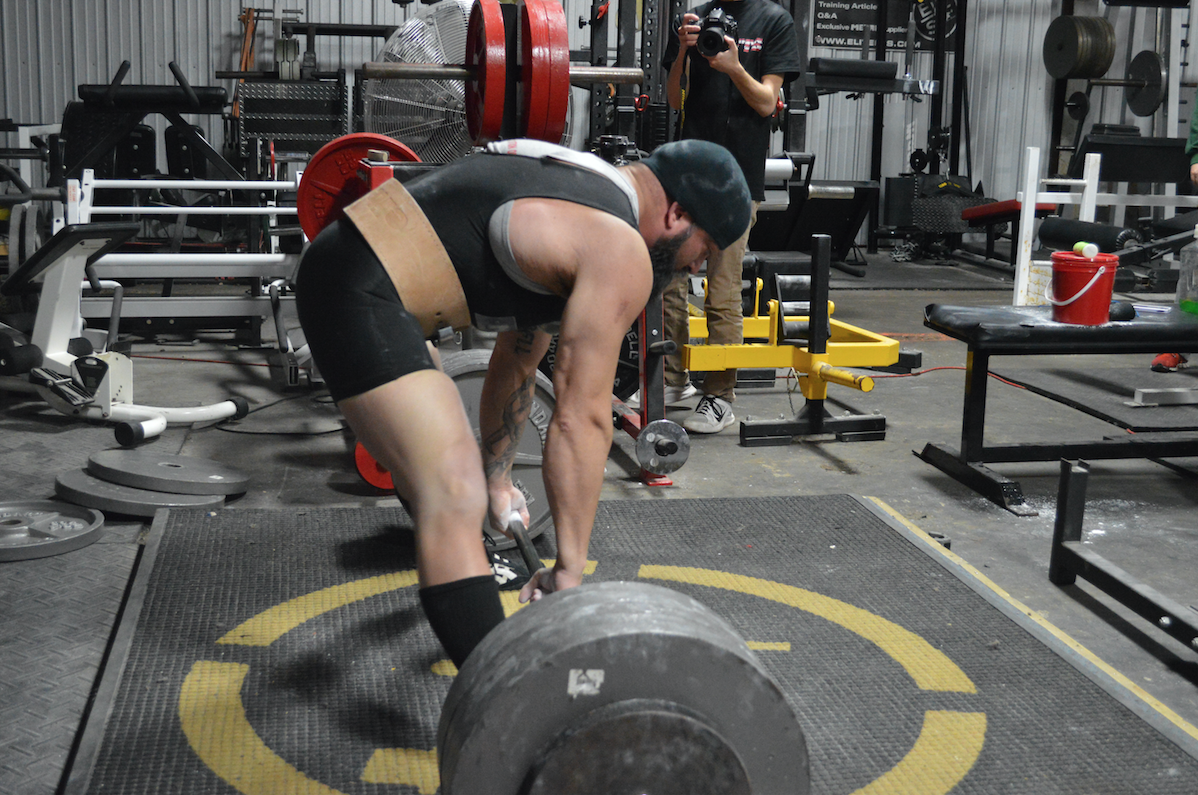I know what you need.
Soak that up. Reading it might comfort you, or it might upset you, but either way: I do know what you need. I don't know the specifics of your circumstances, and you don't know mine (even if you think you do). I don't know the bills, or overhead, or fading love you are worried about. I don't know if your significant other has become unbearable. I don't know if you're able to access food or you're afraid of losing what shelter you've got.
What I do know is that you need the same thing as me.
You need something to fixate on, we all do. A goal that—even in your current, emotionally, financially or otherwise crippled state—you are capable of attaining or, at least, working toward. A goal is what we all need; something to aim at, something which is currently far away. And on our way toward it, we need goals or focal points; sharp and precise, crisp and clear. We need targets that will assure us we are on the right track when we hit them. More than that, we need to commit ourselves. If the thing we commit ourselves toward improves us, it's that much better.
I am doing what I know, but more than that, I am doing what I am able. I suggest you do the same.
Keyhole Barbell is part of my home. It is located within the church, where I also live. With that said, the aggregate of all my current training, beyond activation work, is made up of SSB squats and bench presses. That's it. Anyone with a power rack, an SSB, a power bar, and a bench could easily execute a similar strategy if they had a reason to. I am not suggesting that.
You don't need bars or racks of any kind to set up a plan that will yield positive psychological dividends and help you keep moving through the troublesome situation in which most of us currently find ourselves.
Replace my nonsense with your nonsense. Replace my goals with your own unique goals; goals that fit the criteria I outlined above. As I explain my thinking with my focus, take the time to consider how this sort of thinking might help you with yours.
When it comes to my training, I don't just show up and happen to be able to perform. No one does that. I prepare for each mile marker target ahead of time. I eat enough. I sleep enough. I hydrate. The night before, the morning of; I run my mental game. By the time I get under that bar, I have already completed the task 1000 times. If I had any doubts about my ability to execute, they are gone before my first working set.
A huge benefit of training is the psychological reward we get when reaching short-term goals. There is a physiological aspect to this, too, but even without that, even when the goal isn't something physical, the psychological reward holds true. These "mile markers," in my case, can be as short-term as the goal for a given session.
Meeting a goal is fine, and that is usually enough to keep us going, but I prefer to set up short-term goals I know I'll be able to exceed slightly if I'm organized enough to prepare for them correctly. On the other side of the coin, there are usually psychological obstacles we need to face to meet even our short-term goals in training or any other aspect of life for that matter.
Performing well is, in itself, psychologically beneficial. No one feels great about doing an acceptable job or barely meeting the mark.
So, following a plan that allows for realistic "mile marker" goals like I mentioned above is a crucial piece of the puzzle. But also, we don't want to undervalue the role of psychological preparation in having the confidence we need to execute our plans and meet those goals.
Let me start my training overview by explaining that I rewrote this article in its entirety, after thinking through the way I presented the specifics of my current programming, which is complex and not explicitly relevant to the message I wanted to communicate. I did take the time to write those things out, as well as the templates I'm using for myself and a handful of variations of others I've been using with clients.
Again, that was wide of the point of this column, so I excluded most of it. For those who are interested, I may include these things in the second edition of Evolutions, which will drop on paperback on Amazon at some point in June (depending on the Apocalypse).
If you are familiar with my methodology, 5thSet for Powerlifting, you'll be familiar with the nine-day microcycle we use for it. If you are not well acquainted with the method, you can learn more about the nine-day microcycle here.
I'm still only training four out of those nine days: Two squat days and two bench days. Aside from activation work before each session, I am only doing SSB box squats and bench presses. That's it, and that's enough. Of course, I would not recommend this for a beginner or someone still in the process of basic development as a lifter. I have one high-volume session and one heavier session for each lift, per microcycle.
Right now, I am working with an 800-pound SSB training max, wearing single-ply with no straps (so basically briefs) and no knee wraps. The long-term goal is to squat 900 pounds in a meet, with wraps and the straps up. This seems doable for me, though it may take a year. That's a long time to pursue a goal, but micro-goals every session not only get me through the monotony of work, they also reassure me that I am on the right path and moving closer to my macro-goal all the time. My micro-goal for a volume session might be to improve or correct technique for every rep I perform on that day. My micro goal on a heavier session might be to maintain the improvements or corrections I made while using a heavier weight, or if tech is already good, it could be to get an extra rep or two with a given weight.
The take away from that brief synopsis of my current training structure, I think, is that I have a goal predicated on my ability to optimize the modifiable factors which influence successful performance. This keeps me accountable to prioritize those things because I am faced with the possibility of only performing acceptably or barely meeting the mark. And, as I said before, no one feels great about that. This incentivizes the work necessary to perform well while achieving my short-term goals. Performing well on my short-term goals becomes performing well on my long-term goal. Incremental improvement both "adds up" and is its own reward. It is truly the only path to anywhere worth going.
And that is the moral to extrapolate from our larger story this time, also. Set up short-term goals that not only incrementally support your long-term goals, but that remove as much misery from the process as possible.
Thank you for reading and, as always, please feel free to reach out with topics you'd like me to write about in future columns.
When it comes to my training, I don’t just show up and happen to be able to perform. No one does that. I prepare for each mile marker target ahead of time. I eat enough. I sleep enough. I hydrate. The night before, the morning of; I run my mental game.
I’ve been around long enough to have seen many seasons of fashion come and go in the sport of powerlifting. Some things become a trend and catch on because they are beneficial. More recently, as a result of various social media platforms, some things seem to have gained popularity because one or two highly esteemed lifters or coaches with powerful spheres of influence begin to do them. That’s right—in the second scenario, things become popular for the same reason clothing styles come into fashion.
RECENT: Optimizing My Travel Training Efficiency
Keep in mind that a lifter who respects or admires another more talented or successful lifter is likely to be open to trying the things that the more successful lifter is doing. It stands to reason that someone getting better results while doing something different from you could be getting those better results because of the different thing that he or she is doing. I see no issue with this logic so far. But let’s not pathologically oversimplify. We have to remember that many factors are at play in an athlete’s success or failure. For example, a big one is the fact that a lifter‘s ability to adapt to and recover from training is predicated mostly by genetic predisposition. It’s very easy to let our own confirmation bias get the best of us and convince ourselves that something is helping because we want to believe that it will. In this case, it would make us more like someone we revere. Functionality is not a requirement for that.
I’ll drag you on an embarrassing trip down memory lane here. There was a novelty rap group composed of two children in the early 90’s called Kriss Kross. These 12- to 13-year old kids dropped a music video in which they were essentially dressed with their clothes on backward. Backward jeans, jackets, hats, etc.
There doesn’t appear to be any functional benefit to wearing these articles of clothing backward. In fact, it probably makes your day a lot harder having all of your clothes on backward. The pockets are facing the wrong direction. Any time you put on a coat, someone else has to button it or zip it. It’s a bad deal all around.
And yet, it took almost no time for many other kids in my grade to start showing up for school wearing backwards pants, etc. I realize this sounds absurd, but I swear it happened.
This is a fairly solid example of a trend that defies logic. As a proposition, it makes things functionally more difficult and, in exchange for that hardship, seems to offer no functional benefit. There is an argument for an aesthetic value that could result in better social positioning. But I don’t think it’s a very strong one.
I think it’s safe to assume that no one puts his or her pants on backward under the impression that it would provide some functional performance advantage. This person has other reasons. In this case, the chief motive seems to be that it would set him or her apart from the current mainstream trend in a fashionable way. Again, dubious logic.
In the scenario with the popular lifter, it’s probable that we actually do imitate, perceiving that there is a legitimate performance advantage to doing so. But we should remember that there are other factors influencing that decision as well. Like, it’s fashionable, for one. Even if we are not consciously aware of that fact in the moment, it’s something we can do to either set us apart from the mainstream or draw us nearer to it. Both of which are compelling motives for similar reasons. Think mainstream vs. countercurrent fashion. (Think: wearing our pants backward.) There is also the obstacle of confirmation bias to consider, like I mentioned before. This is the psychological phenomena where humans will unconsciously seek evidence to support what they have already decided to believe and disregard or blind themselves to evidence to the contrary. This is a very realistic consideration when taking advice from an esteemed peer or personal hero.
Pausing in the squat and deadlift in various, typically troublesome positions, began to rise in popularity about four or five years ago. Prior to that, pausing wasn’t something you heard much about, outside of the bench press, probably because benches need to be paused in competition. However, it’s worth mentioning that the first person I knew of using them in the manner they are being used currently, even double pauses, was my fellow 5thSetter, Greg Panora, years prior to that.
MORE: What If No One Was Watching?
I have to say there is a decent logical basis for the theory that pausing in trouble areas could help to develop those areas of the range of motion for a given lift. However, when we pan back for a more holistic view of the proposition and think about the other factors for even a minute, the theory begins to dissolve in our hands.
They seem to teach you to slow down and to prepare to stop in the areas of range of motion that you never want to do either of those things. Some people do well with pauses. There is no question about that, but would they do better, as powerlifters, allocating those recovery and adaptation resources to something else? I think they would.
I base my opinion on the results of my own repeated experimentation with clients and that of other qualified and experienced coaches I’ve consulted. For example, the guy who invented the “double pause,” Greg Panora. I very slyly asked him what he noticed in his experience using pauses with his coaching clients and in his own training before I coached him, and his response was “They get slow.”
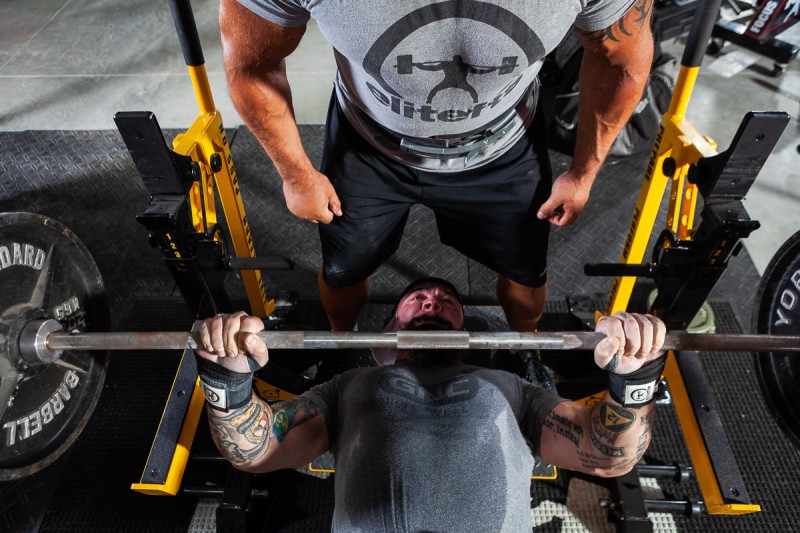
He isn’t wrong. I've noticed the same thing again and again—pretty much every time I'd put them in my clients’ programming until I finally eliminated them. This is why you won’t see them used on a single 5thSet template. Greg also remarked to me about an advanced lifter he coached, who put 40 pounds on a lift in six months after removing pauses. Bar speed improved visibly. This is not surprising to me in the least, because I’ve seen it with my own eyes, many times.
I have a few lifters whom I allow to pause their first four sets, but even in those cases, I do not want them to pause the AMRAPS, aside from resetting on deadlifts. There has to be some ballistic reversal in training the lifts to develop bar speed properly. Deadlift may be an exception to the previous statement, as that lift is about breaking resting inertia. So, repeated attempts to break resting inertia with as much speed as possible is probably a better plan. We do that.
But to address the underlying issue, if we don’t pause in these trouble areas, how on earth can we be expected to fix them? Well, I have a very novel approach. I develop lifters using a volume-based scheme where they will train the competition movement in the 70-85% range. This allows them to employ technical corrections using my cuing system for each lift. Yes, that’s right: my lifters develop the competition lift by learning to perform that movement correctly, meeting volume requirements in a given percentage range that satisfy the Prilepin chart. We don’t rely on “special movements” to develop “weak points” in the lifts. The lion’s share of work in training is performed as the competition lift, performed correctly and efficiently.
I don’t feel that I need to address the fact there is no apparent issue transitioning from not pausing in training for most of the year to doing so only at the tail end of a peaking cycle for a meet, based on the meet performances of my lifters, but I’ll go ahead and do that for the sake of thoroughness. There has been no apparent issue with making that transition in the literal hundreds of lifters I, myself, have coached into competition. With that much said, I remain open to the possibility there is a better way to do things. It’s just going to take more than an Instagram trend to convince me.
I hope you found this article to be helpful, or at least thought provoking, and I welcome you to reach out with ideas for future columns. As always, please share it and discuss this topic with as many different people as you are able. Thank you for reading.
More recently, as a result of various social media platforms, some things seem to have gained popularity because one or two highly esteemed lifters or coaches with powerful spheres of influence begin to do them.
For all of the negative aspects of Instagram, one unbelievably positive fruit it brings to bear is the ability for people like myself to offer a free Q&A session to their followers as a feature on their story. I’ve been doing this since the feature’s inception, at least a few years. Many other coaches and lifters on Team elitefts do the same on a regular basis.
Among the most common questions I get are those about my own training. Now, I typically need to preface any response with the clause: what I do is probably not what I would have you do. I live a crazy life. I’ve been in six cities in five different states in the last five weekends and on the road for 20 of the last 35 days. You can see how my needs and resources in terms of time, help, equipment, recovery, and a host of other factors may vary from yours. I’ve also been lifting for over 25 years.
That is not to say I don’t always run 5thSet, but my assistance work looks very different than most of the templates for the reasons I listed above.
For the sake of educational novelty, I will explain what my current assistance work looks like on the back work days, which are the second part of my squat and deadlift sessions. For those of you who may not know how 5thSet works, we use a nine-day microcycle model. Think of that like a nine-day long training week. Throughout those nine days, we have four scheduled sessions. We don’t schedule back-to-back days.
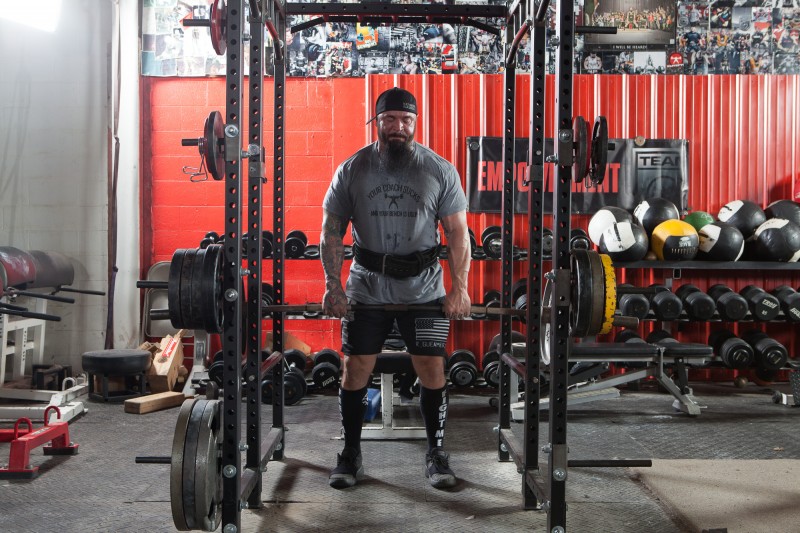
The deadlift and squat sessions involve a lot of heavy barbell work, and so, we will often split the session and do the assistance work, which is mostly back stuff, the following day. This is not a problem, as we don’t have back-to-back days scheduled, so it never overlaps.
These back assistance workouts are set up the same way in terms of framework. They are a series of exercises performed in rounds with no breaks between movements and a maximum of eight minutes between each pass. Failure with these is a different kind of experience. Sudden red-hot jabs of malfunctioning muscle will pull you under out of nowhere. These are performed for four rounds in both sessions. Both of these assistance sessions start with body weight pull-ups. The target reps are 15 currently. From there, the second movement is either a heavy row or a barbell throat pull off an incline bench with 10 target reps, depending on which session it is. The third movement is always a narrow neutral grip pulldown, also for 10 target reps. Fourth is cable or machine rows, also for 10.
Training this way is less expensive in terms of the resources I mentioned before, not the least of which is recovery. The combination of mechanical and metabolic stresses as stimuli remains effective enough for my needs while allowing me to do a tremendous amount of work in a short period of time.
I begin every single training session by doing my bracing/activation work, which is outlined in detail in Evolutions. This activation is also done in rounds but with no rush. That seems to be an easier way to move through things. And this way by the second time through I can “feel” everything working the way it should.
Keeping this activation stuff in my daily-use toolbox has allowed me to maintain a healthy spine, even after the catastrophic injury I suffered to it in 2014 when I dropped over 500 pounds on myself from lockout while bench pressing in a powerlifting meet. It also helped me be able to return to my strongest ever post-surgery. I had a double laminectomy and a discectomy and a root nerve relocation. Before this surgery, I was unable to stand or walk.
RELATED: How to Get Through a Near Career-Ending Injury
The lasting impact and profit from this ordeal came in the form of learning to develop a properly functioning system of muscles to support my torso by bracing effectively, and this made me a better lifter and coach. We have to remain grateful for lessons, even the difficult ones.
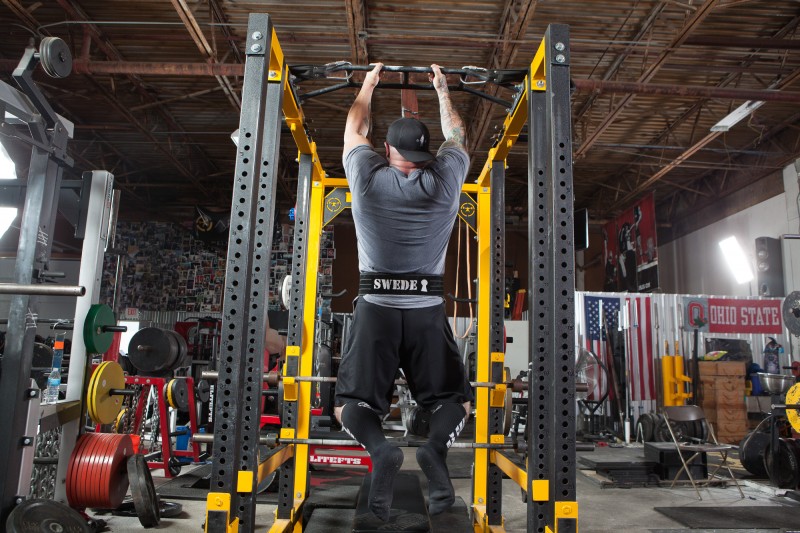
To outline everything more simply, after the bracing and activation stuff, this is what those back assistance sessions look like for me. I’ll add that anything involving the lower body from squat and dead sessions gets finished with the main work. These back sessions are pretty much all upper body work.
- Body Weight Pull-Ups x15 reps without letting go of the bar
- EZ Curl Bar Throat Pulls or Chest-Supported Dumbbell Rows (heavy) x10 reps, 2 count on eccentric
- Narrow Grip Pulldowns x10 reps to bottom of pecs, maintaining thoracic extension
- Cable or Machine Rows x10 reps to the lower torso
These are performed back-to-back with no breaks. Each pass-through is one round. For me, these sessions involve four rounds, but I’ve had them as high as five rounds at different periods. I mentioned before I take eight-minute breaks. This seems to be the sweet spot for this kind of stuff. Though I should mention, I usually feel like I’m going to die for about three minutes after each round, so for about half of those eight-minute breaks, I am probably lying on the floor. It’s alright; it feels good. As far as progressions go, when I meet target reps for all sets, I move the target reps up for the next time through.
When everything is said and done I do two sets of dumbbell curls with full pronation and supination on each rep. These are either sets of 10 or 20 reps, depending on which session.
I train this way when the demands of travel are high for a number of reasons. For one, it is sufficient stimulus to easily maintain my current level of development and inexpensive in terms of recovery. It’s extremely efficient in terms of time and the amount of work I can do. By being proactive, I am less likely to get injured from overuse while struggling to balance rest and sleep because I can more easily recover like this on the road.
I hope you’ve found this article helpful, and if you’d like to offer any ideas for topics for future columns, please feel free to reach out to me by any means. Except for coming to my house; please don’t do that.
With this training-while-traveling program, keep in mind I’ve been in 6 cities in 5 different states in the last 5 weekends and on the road for 20 of the last 35 days. My needs and resources in terms of time, help, equipment, recovery, and a host of other factors may vary from yours.
It’s no secret I spend most of my days traveling around the country, teaching 5thSet Seminars, spreading the gospel of specificity in the sport of powerlifting. I present on quite a few different topics at these events. But I would say the most popular, by far, is my Risk Factors for Injury presentation. That makes sense. No one wants to get injured, but I think there’s more to it than that.
My dear friend Sin Leung texted me this morning at an unthinkably early hour to share something she was told by her boss. This isn’t verbatim, but the gist of it was that while she was excellent at doing things correctly, the real value in her position was her ability to mitigate risk, and, when things do go wrong, her ability to solve problems efficiently. She attributed these skills, to some degree, to many years running 5thSet and traveling with me to seminars, learning the “hows” and “whys” behind the methodology which revolve around mitigating risk and solving problems efficiently, usually by preventing them.
RECENT: Motivation vs. Discipline
While I believe I am able to connect with my lifters well, at least for the most part, I’d have to say the real value of any coach lies with the same abilities she described about her own job. A lot of it is about sticking to the script. Trusting the things that have been proven to work well and prevent issues in the past. Heeding the lessons we’ve learned already. Taking a proactive approach.
For a coach, that should probably look like prescribing corrective technique cues and programming training in a range of intensity and volume that gets the job done, but also allows the cues to be effectively applied and reinforced. It sounds simple, but I’ve found this type of thoughtful approach seems to be more the exception than the rule.
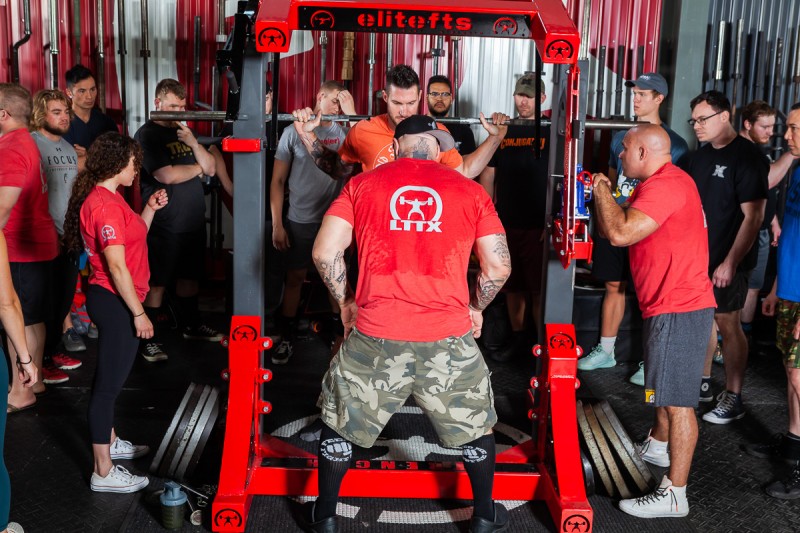
This brings to mind a conversation I had recently on the Kabuki Strength Podcast with Chris Duffin. To summarize, we were exchanging commentary on our respective proactive approaches to handling injury with our lifters, that is to say, preventing it when possible and addressing the underlying causes, rather than simply treating symptoms if injuries do present themselves. I honestly went into that podcast with no preconception of how the experts at Kabuki do things, prepared for a civil exchange of ideas and opinions, which is something I truly enjoy, even when the opinions are conflicting with my own. By being open to new ideas or viewpoints, I am able to further analyze my own stance on things and so improve it whenever possible. It turns out we have pretty similar views on many topics, including the preference to break the mindless habit of the seven-day microcycle. I was surprised, in fact, to find that Chris actually uses a nine-day microcycle in his own training, much the same as we use for the 5thSet methodology.
Chris vehemently expressed his stance that most underlying causes of injury could be addressed before the fact, a point I think we agree on strongly. I went on to explain that there is a chapter in Evolutions, called Risk Factors for Injury, containing a lot of what I present about that topic in seminars. You know what they say about great minds. Well, they tend to be housed in the craziest people, for sure, but they also tend to think alike. At least, in the broad strokes — in this case, the way we look at problems. Yes, I’m referring to myself as a great mind.
The underlying theme here, put simply, is Proactivity > Reactivity. The former is almost always superior to the latter, but humans don’t seem to be naturally wired for it. It’s more of an acquired skill, in many cases. This is where a ranked hierarchy of priorities becomes crucial. When left to our own devices, our natural impulses tend toward the hedonic — the things that feel good in the moment (and profiteers know it). But this is problematic for a number of reasons. The things that feel good or things we expect to feel good in the moment very rarely translate into long-term fulfillment.
These short-term satisfactions in training look to me like a convention of little absurdities and horrors: taking a random max instead of following the scheduled plan, availing the lifter nothing substantive and possibly costing them dearly; taking increases greater than the increment prescribed, again, availing nothing beyond a momentary ego boost, and, again, potentially costing the lifter plenty. The manifestations of greedy, short-term thinking in training are nearly limitless, and often end in derailment of entire training cycles. This, for an Instagram video.
RELATED: 9 Things I Learned From a Social Media Detox
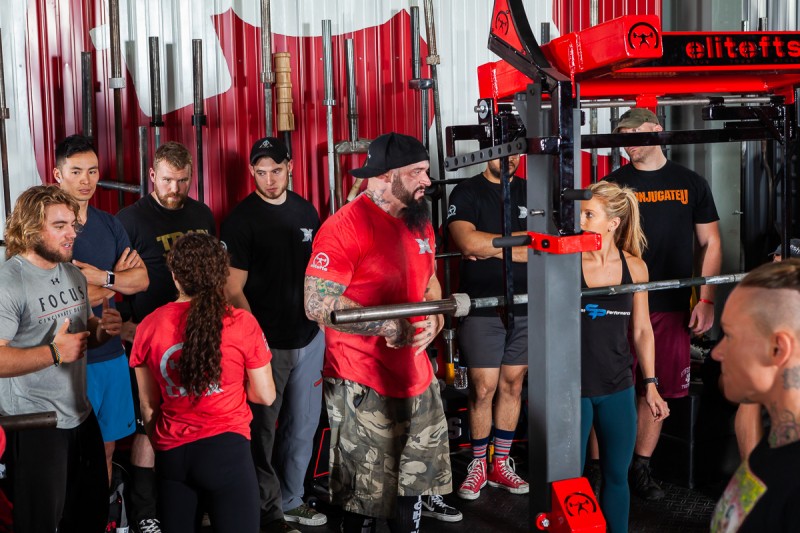
This behavior is not really surprising when we consider that beyond our own natural desire for short-term fulfillment, there is a modern cultural inculcation toward instant gratification. I’ve written and spoken a great deal about my opinions regarding the effect Internet platforms like Instagram, Facebook, and Snapchat have had on our ability to rationalize with long-term, strategic thinking. This spills over on a small scale into our training, and on a massive scale, into impulsive sexually demonstrative behaviors and the way we address interpersonal relationships, even the way we conduct professional affairs. Whoever made the blueprints for these platforms, these roaring, glistening machines, could not have known the resulting cultural impact they would have. Right?
Or rather, they did know the short-term dopamine driven feedback loops created by these platforms could destroy the way our society functions and considered the temptation to exploit them for profit too great to forgo. Chamath Palihapitiya, former Vice President of User Growth at Facebook, admitted as much to an audience full of students at Stanford recently, conceding he felt “tremendous guilt” for the transgression.
Have you ever felt overwhelmed and anxiety-ridden when your phone died, and you realized you don’t have access to a charger? You might rationalize this response with thoughts about how loved ones may need to get ahold of you or come up with some other reasonable rationale for it. But I can’t remember ever feeling that way 15 years ago when my flip phone would die. Something to think about.
History has shown us there are few more spectacular means of departure for a society than its own hedonic technological advances. Ask the Romans. Yet, we continue the dance. But I digress, at least to some degree. Whatever the cause of the state in which we currently find ourselves, as a society, our ability to turn things around on an individual basis remains. The same way we have allowed ourselves to become conditioned, we can detrain and retrain ourselves; we can choose to view the consequences of our decisions from a macro, long-term perspective and reinforce positive habits or stick to a plan that considers the big picture.
In our training, we can be proactive and lay out long view plans of action. These should consider the many variables that affect our ability to adapt to and recover from training and our ability to express our current levels of fitness. Some examples of these are fatigue accumulation, risk factors for injury and specificity regarding desired adaptations. Essentially, all valid considerations are addressed within the 5thSet methodology. Read the rules and run a template. That is, by far, the easiest way to handle a thoughtful game plan for training and competition.
Regarding our personal and professional lives, I am unaware of any such template-based methodological approach to dealing with these issues. That would be nice, but it looks like we are each on our own in the fight to re-program ourselves. It’s a bit outside of my expertise, so I’ll stay in my lane. Maybe it’s not accurate to say we are alone. While the Internet causes many of these problems, it can also help to fix them, if we direct our focus the right places. Some of my favorites are Dr. Jordan B. Peterson, who has hundreds of hours of free lectures on his YouTube, and Jocko Willink, who wrote a book called Discipline Equals Freedom, which I highly recommend, and he also hosts a podcast discussing related topics.
READ MORE: The elitefts Article That's Changing My Life
I hope you find this information to be helpful. As always, please feel free to reach out with any idea for topics you’d like to learn about in future articles.
Try to keep an open mind when trying a new, proactive approach to anything, even if it doesn’t quite feel right at first — whether it be your job, social media, or a new program. Just because it doesn’t feel good right away doesn’t mean it won’t later on.
Motivation
If there is a single topic fitness personalities are asked about more than any other on social media — it’s motivation. And everyone who stands to make money from that concept is capitalizing on it. There are daily motivation accounts on Instagram dedicated solely to curating and posting poached sound bites on the topic from various well-known talking heads. Many people’s newsfeeds read like an endlessly unfolding tedium of pictures of motivational words as quotation. Whenever I ask for topics people want to learn about in my column, “how to stay motivated” is always at the top of the list.
Motivation is clearly in high demand. Business 101 tells you that someone or many someones are going to show up and cater to that demand, providing the things listed above.
RECENT: Top Three: A Hierarchy for Sustainable Success
The problem is these feel-good motivational memes and picture captions about “fighting the good fight” do little to actually modify behavior, that is, beyond the brief dopamine response when we read them and say to ourselves, “This is what I’ve been doing wrong! No more!” Returning later that day for another dose of this “motivation” seems to be the evident change in behavior, sadly.
We should think of our motivation as the deal we make with ourselves; our incentive, a kind of reward for the hard work we need to do. That’s what motivation really is: a motive. It’s our own unique “why.” Now, these are usually extrinsic things: the new car we want, maybe a new camera lens, some sort of praise or validation for our appearance or grades, or some other perceived accomplishment.
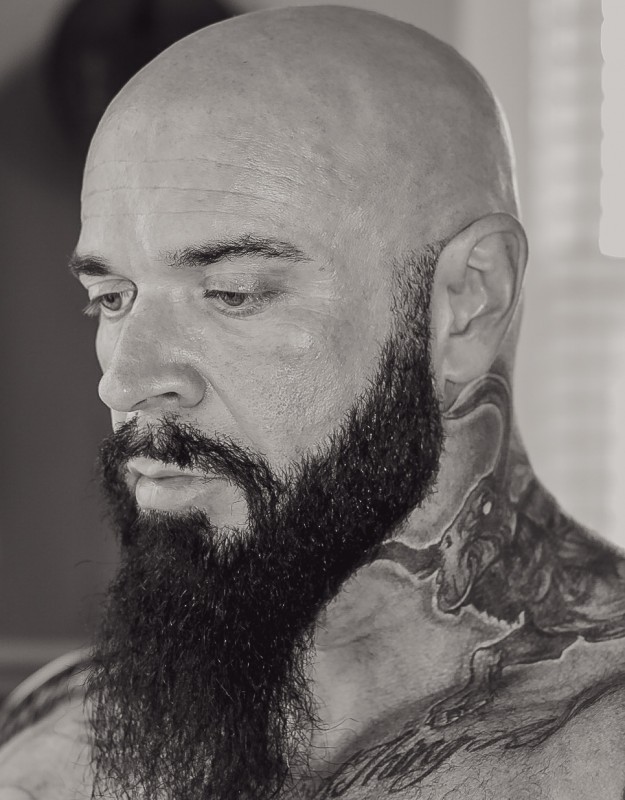
Intrinsic motivations are the motives we have for doing things that are internally rewarding. We may or may not get any praise for these things. Think about the difference between these two scenarios.
In Scenario 1, we consistently lift weights because it makes us feel much better while we are doing it.
In Scenario 2, we consistently lift weights because we want to beat a particular person at an upcoming powerlifting meet.
Now, clearly, in Scenario 1, the motivation is intrinsic; and in Scenario 2, the motivation is extrinsic. That’s not to say that we can’t have both, but as I described them above, those are the motivations. While it does feel good to train, it can be difficult to keep showing up when that is the only motive and often something we are not entirely conscious of. It may take us missing a bunch of training sessions to even notice we are suffering intrinsic consequences. That's if we are able to put cause and effect together at all, which, as I mentioned, sometimes we are not.
Extrinsic motivations can be helpful here. It is, after all, crucial for humans to have an aim or a goal to work toward, and simply “feeling better when we train” doesn’t seem effective for long. This is where things can get confusing. Extrinsic motives can be useful and good, but we can also receive too much of a good thing.
You see, intrinsic motivations can be shit on, believe it or not, when we receive too much of an extrinsic reward for them. That’s right, doing something we are internally motivated to do and internally rewarded by can cause a marked reduction in both of these if we receive too much of an extrinsic reward for that behavior. Less intrinsic motivation, less intrinsic reward. This is called the overjustification effect. It becomes purely work! The external reward, being so great, undermines the pre-existing internal motivation. The task itself becomes much less enjoyable.
So, we know we can’t go too far in one direction, but to be successful at any serious endeavor in the long term, we probably need a bit of both. The thing is, we are peeling a layer deeper into the onion than we probably need to. It’s sufficient to say that motivation is a fickle thing. Motivations may change, and they do, intrinsic and extrinsic, but the goals we are motivated toward rarely change.
RELATED: Implementing Self-Determination Theory in Coaching
All of this word vomit above; is this what you’re looking for when you ask about motivation? Probably not. Probably what you really want is the ability to complete the tasks you need to, whether they be training-, business-, or personal life-related. And what this boils down to is called discipline. Discipline rests a layer above our underlying motives.
Motivation is what makes us want to get something done. But most of us, truthfully, already have that, and still, we fail. Discipline is what gets it done.
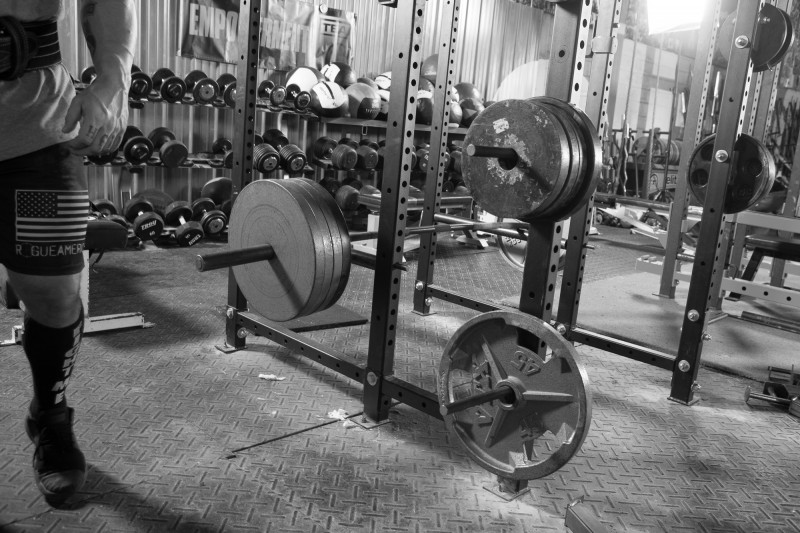
Discipline
People tend to hate this word. Probably because it hangs on them, somehow, the blame for their own failures. They failed to reach their goal because they weren’t disciplined enough. I’ve certainly been no exception in that respect, but I do hold myself accountable.
Discipline, for many of us, brings to mind the idea of forcing ourselves to do things we hate. This is an extremely flawed way to view what is possibly the only path to true satisfaction and fulfillment for a human. At its core, this problem is about our desire for instant gratification.
Don’t believe me? Scroll on Instagram and observe for an extended period. You can even pick an individual and go to their profile and look back. Check out the posts they’ve made which got the most likes or interaction. Then compare those to the types of posts the same person made which garnered the least attention. Before long, these people are conditioned via dopamine response to an external stimulus, and their posting behaviors change to get the thrill of the instant gratification of that response. The brain doesn’t differentiate likes on the Internet from real-world compliments, even though it is highly unlikely we’d receive the same attention sitting in a Starbucks. Most people have no long-term plan for what they’d like to convey, and so, no plan or rules to stick to. Eventually, they will condition themselves to continue whatever type of posting or behavior will give them that instant reward.
Why do we drool when the bell rings? That means food is coming. Ask Ivan Pavlov.
As I write this, I know of many friends in the industry who publicly espouse discipline as a necessary virtue for success and yet consistently fail to demonstrate it in their own lives. After all, it’s no easy task to remain disciplined in the moment when things aren’t going our way. And who among us operates so far above their own ever-changing circumstances and reactive emotions that their discipline is never broken? Again, certainly not me, though, I am better now than I've ever been.
It needs to be said that I do know of a few who have conditioned themselves in this manner, and they are some highly effective individuals.
So, the question then becomes: How do we condition ourselves like those people have? This is a very complicated proposition because the biggest factor in someone’s potential for personal discipline may be genetic predisposition. That’s definitely something to consider, but it also sounds like an opportunity for excuses to be made.
LISTEN: Table Talk Podcast Clip — Why Strength Coaches are D-Bags
Much like genetic predisposition for potential to be successful in powerlifting, where we have little sway on our individual levels of recoverability and adaptability, we can still learn to maximize our ability to reach that potential. More or less, we always have the capacity to improve. This could put us in a much better position than we'd be in otherwise.
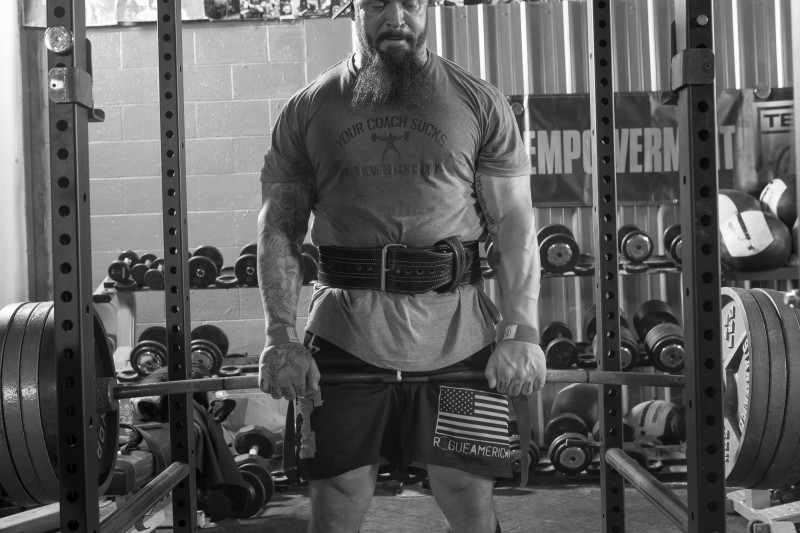
We can tailor our own behaviors to maximize personal discipline in the same way we can tailor our training, nutrition, and other factors to maximize our capacities for recovery and adaptation. It’s not magic, and in some cases, it can take a long time to manifest. But I believe doing so is the surest course we have to reaching our goals, whatever they may be.
The first thing to understand is we can’t be disciplined without a solid plan and a set of rules to follow. Without rules, we run the risk of becoming slaves to our own passions. Passions can feel really good in the moment. But a slave to passion is still a fucking slave. I don’t know about you, but I’ve done enough of that for 10 lifetimes, already.
So what do we do?
Set Clear Rules and Objectives
Like I said before, without a clear set of rules and goals, we run the risk of being led down the path of instant gratification. I’ve seen the end of that road, and I can tell you — it’s no place you’d like to visit. That’s not to say we can’t have reward systems in place that promote positive behavior, but this is not something that should be decided in the moment. We need a plan, and we need to stick to it by any means. We need to commit to these rules and this plan as our own code and take it very seriously.
Choreograph Behaviors
Discipline is about doing what we have to in order to reach a desired goal. We should decide which habits or behaviors are going to be conducive to that in the long term. We can set up the day like a routine or a choreographed dance and go through the motions consistently. Perfect practice, enough of it, makes perfect.
Analyze and Hold Yourself Accountable
This is maybe the biggest piece of the puzzle because if we don’t have the self-awareness to recognize when we have failed, we have little chance of avoiding the same type of failure in the future. Accountability, while sometimes difficult to maintain, can be a very liberating characteristic to develop. Right now, I am more accountable than I’ve ever been, but not as much as I’d prefer to be. Like all of these, this is a process.
When something doesn’t turn out the way we hoped, we should first look at what our own role was in that outcome. Did we fall short in any way? Was there some way we could’ve shifted our trajectory to a more desirable outcome? If the answer to both of these questions is “no,” we should probably reassess because we are heading toward the most dangerous type of crazy with that thinking: the type that sees itself as blameless for its own position.
READ MORE: Strength and Conditioning is Failing: Solutions to the Problems
That’s it; just three things. Progress may be slow and could take a good bit to manifest at all. That’s OK because we are each committing to our own code. This is how we are choosing to live our lives, to move in a direction that is positive and helpful for ourselves and those around us. No one is forcing us to do it. There are no cheat codes. No shortcuts. We have to chip away at this work every single day.
As always, feel free to reach out for topics you’d like to learn about in future articles and feel free to share this on your socials if you feel you’ve benefited from it.
Whenever I ask for topics people want to learn about in my column, “how to stay motivated” is always at the top of the list. Motivation is in high demand: you see it all over Instagram in memes, pictures, and captions. Despite the high demand, it sure seems like it’s in short supply….
Training is medicine for some of us. In this article, I am going to be speaking directly to the readers who fit into that category. Even for those of us who do, it may not always be easy to keep sight of the fact, though that does nothing to make it less factual.
For most of us, the volume of responsibilities we carry on our backs can make it hard to establish or even recognize our current hierarchy of priorities. It may seem the responsible thing to put training on the back burner. I can see how that might appear to make obvious sense. I mean, training is just a hobby. Right?
RECENT: Meet Report: 5thSet at the Kern US Open
Or, is it possibly something more? I can’t speak for everyone, but I’m happy to share my own experience on this topic, which seems to be in line with that of most people I coach. For me, training is a life-sustaining medication. If it came in pill form, it might be more easily accepted that I shouldn't miss a dose. But it doesn’t come in pill form. Maybe that is why its importance is so frequently undervalued. It’s not the highest item in my priority system, but as I’ve recently been uncomfortably reminded, it’s very close to the top of the list.
I try to cover the priorities talk with my lifters any chance I get that seems relevant, though I’ve admittedly strayed from it myself. The talk revolves around what I call the “Top Three.” Think of this as the medals-ceremony podium for priorities. If we keep these Top Three priorities in check, people like us are far more likely to sustainably function on a much healthier plane.
First, let’s look at how the Top Three should be structured, then we can get into some detail about how to define them, as well as the rationale which justifies their ranking.
- Family
- Work
- Training
The top priority should always be given to family. Work follows as a close second. And training should probably never move from the Number Three spot.
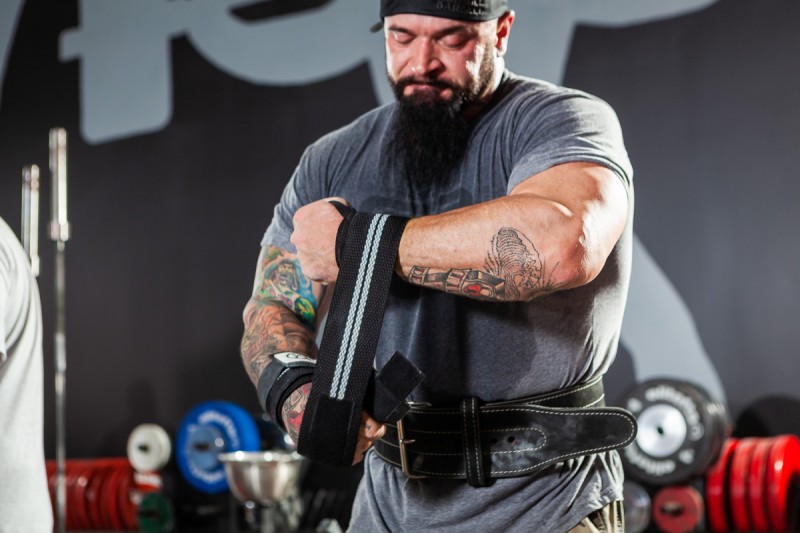
Many people identify training as a hobby, but, like I said in the beginning, I am speaking to those of us for whom training is medicine. For us, hobbies have to rank below training. This is a matter of mental, physical, and, most importantly, emotional health.
Now that we know the ranking for these priorities, we can take a look at what each of them actually means. There can be a lot of confusion regarding semantics, but we don’t want to let that get us off course.
Family
Family can refer to parents, siblings, spouses, long-term partners and in some cases, even dear friends we have accepted and ingrained as members of our respective clans. These are the people nearest to our hearts, the ones with whom we share our struggles and triumphs and labor to develop a healthy and sustainable interdependence.
“The goal is to create a compelling vision of what you and your family are all about,” Steven Covey wrote in his eye-opening book on the subject, entitled 7 Habits of Highly Effective Families.
Covey is a Harvard-educated consultant on the subject, and he is a big fan of single-sentence mission statements regarding a family’s unified purpose. His family’s mission statement is one of the most impressive I can imagine, and certainly one that speaks to my heart:
“The mission of our family is to create a nurturing place of faith, order, truth, love, happiness and relaxation, and to provide opportunity for each individual to become responsibly independent, and effectively interdependent, in order to serve worthy purposes in society.”
Whether or not your family culture and values align with his, the importance of developing a clearly stated purpose is an unequivocal game-changer in this department. Yours can look however you would like, but it should purposefully reflect the family culture you all agree you are trying to develop.
So this top priority, family, isn’t just about paying bills, or doing what other members want. It should be about adhering to a clear purpose you are all striving to serve together. This eliminates the possibility of the personal desires of one family member stifling the greater good of the whole clan, and instead allows us to lean on a system of values we’ve developed or agreed to together.
RECENT: For the Fathers and the Fatherless on Father's Day
People can have dramatically varying beliefs and values, so explicit communication and respectful compromise are often necessary. For us, it’s crucial to communicate the value and importance of our training to our families and integrate this into our system of values via compromise and mutual respect.
Work
While it is important to internalize responsibility for our professional identities, tensions between personal (family) and professional values usually cause problems. If Mom feels called to be a pastor, and Dad wants to pursue his dreams of joining the Thunder From Down Under all-male revue in Vegas, there may be some long-term trouble finding a sustainable compromise. This is part of the reason family stays above work.
Another huge reason is that if our professional lives cause us to lose our families, then we will end up in a worse position and the whole endeavor avails us nothing. I learned that lesson the hard way a long time ago. Family > Work.
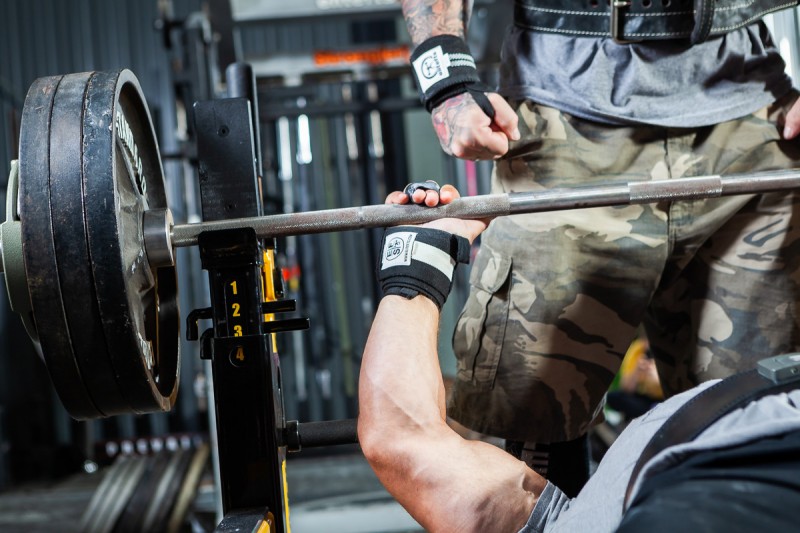
Training
Sadly, this category is often viewed as a rather selfish one. However, if we look more closely, we can see that for us, it is actually a very powerful emotional and psychological corrective. Medicine, even. You wouldn’t stop taking antidepressant drugs you’d been prescribed because it got in the way of going to the movies or bird watching or some other hobby. So why would you ever not train to cater to one of these lesser priorities?
Let’s consider the type of person who decides to make physical training one of the top three priorities in their life. The rationale someone like that uses often relies on an instinctive identification of training as an emotional, physical, and psychological need.
The first thing I do in the application process when I’m interviewing a new client is to send them a list of personal questions to expound on.
I’ll give you a look behind the curtain here. The main questions I’m concerned about are regarding what got the lifter started training, followed immediately by what KEEPS them training. Any answer that doesn’t demonstrate a sincere need for training, tells me they aren’t really one of us, which need training in our Top Three. I can’t help those people. Their applications end up in the recycling bin.
There is a good amount of science to back up what I’m saying here.
Training can increase brain sensitivity for the neurotransmitters serotonin and norepinephrine. It can also increase testosterone and the release of endorphins in both men and women. All of these things make us feel better and operate with less anxiety, depression, and pain — even when we are not in the gym. Think about how much that could benefit someone who suffers from these conditions. Now consider how it can improve mood and interactions with loved ones.
READ MORE: The Monsters on My Shoulder
For us, this is not a selfish pursuit at all. We are better men and women when we train than when we do not. Better for ourselves, better for our families, better for our professions.
It can reduce our risk of chronic disease. It can increase the size of the hippocampus (part of the brain that affects memory and learning), increasing mental function in older adults. It can even reduce changes in the brain that cause schizophrenia and Alzheimer’s disease.
For people like us, training is medicine. We should prioritize and respect it as such.
As always, please feel free to reach out with topics for future articles in my column via my socials. Thank you for reading and please share this.
For some, training is just a hobby; but for others, training is much more than that. It’s what keeps me going, and it’s very close to the top of my list of priorities. But sometimes, we need to remember those other priorities, too. Here’s a reminder of what they are.
I had a 7:30 flight out of Pittsburgh International and very little sleep the evening prior. As soon as I pulled into the airport's extended parking lot, I mean the second the arm lifted so I could drive in with my ticket, it started to rain.
Now, the way Pittsburgh International is set up, to get to the terminal from the extended parking lot requires either waiting in a covered shelter for a shuttle bus (which may or may not come in a half-hour’s time), or committing to the 10-minute walk. I don’t know about you, but carrying a bunch of travel bags 10 minutes in the pouring rain, then squeezing onto a plane, soaking wet, for a six-hour flight, does not sound appealing to me. So I chose the uncertainty of the shuttle shelter.
RECENT: Training and Competition
Like a ray of hope on the horizon, the shuttle’s dim headlights broke through the dark, only moments after I’d dragged my luggage under the shelter. Mere mortals in the realm of travel, who only fly once or twice per year, will never appreciate the grim satisfaction that comes with those headlights, when they show up with time to spare. With that much said, I made it to the terminal without a terrible rush and even had time to buy a big coffee with some espresso shots for the flight. I’d eaten about 100mg of an edible herbal medication around the time of the headlights, which made for an interesting flight with all the caffeine.
I was wedged into a window seat, next to some teenage kid with poor hygiene and wandering eyes, trying to read what I’d type in my notes, constantly stealing glances at my iPhone screen. I covered the phone once with my hand and gave him a questioning look. He took my drift and was snoring before I knew it, but it was still a sub-optimal situation for a number of reasons. To be fair, I was already stressed out of my mind; and my emotional disposition was chaos long before we boarded the plane.
Still, I wanted to suplex this kid into the miniature toilet 10 feet from our seats. I thought better of the whole thing and played with my camera for an hour before giving in and purchasing Wi-Fi so I could work for the remainder of both flights. I was furious that I couldn’t bring Sydney with me. The extra plane ticket would’ve been too much. That’s a relevant factor in this. But I did almost get into a fistfight with the rental car guy, again. It doesn’t matter. I made it out with the keys.
And once I did step outside into the paradise that is Southern California, all of my anger slid through my fingers and I could not hold onto it any longer. I was happy.

© Erika Balasabas
My dear friend Alexander Cortes made the trip down to meet me at my hotel and we drove out to Ocean Beach. Mike’s Taco Club is probably my favorite taco spot on earth, so I never miss an opportunity to stuff my face there. This was no exception. The two of us filled our bellies with tacos and spent the day walking around, talking about life and how age changes us, as I took photos of all sorts of interesting things; from sea creatures to giant insects to puzzling architecture and antiques. That day seemed to be over as soon as it began and the coming three would leave me with little in the tank for myself. I was well aware of this fact. I went back to my room early and ate some microwave chicken and Life cereal from Target as I prepared the whiteboards for the seminar I’d teach the next afternoon.
The seminar itself went well as they always do. Gracie was kind enough to let me use her place. Everyone seemed to take a lot away from it, based on the conversation we all had toward the end. There were only around 10 attendees, throughout, but a couple of people who paid weren’t able to make it — so the cost of my trip was covered, even if barely. I set the seminar up in about a week’s time with the help of one of my lifters, Dan Clancy, and his friend, Jensen Kierulff. If I book a small seminar to cover the cost of my travel so I can coach my lifters in-person, I consider “breaking-even” to be a win. Because plenty of times I’ve had to come out of pocket to cover some or all of the expense of those trips. That’s business. I love doing the seminars and find them to be very rewarding. It all works out in the end, if you do the right thing, in my experience.
Now that I had the trip paid for, I could focus on helping my lifters: the reason I’d flown all the way from the other coast to begin with.

© Lorena Deanda
On Saturday morning, I met Dan and Jensen over at the venue for the Kern US Open, the San Diego Fairgrounds. I arrived around the time he got under the bar to take his first warm-up for squats. Dan battled his way through this meet to a very dramatic end. I can’t say enough how impressed I am with him. He’s been running 5thSet since before he did this same meet last year, and in doing so, was able to add a hundred pounds to his already impressive total. We ran into a couple of minor speed bumps, preparing for this meet, but everything came together on game day. Even if it wasn’t exactly how we hoped.
I would say Dan achieved a truly peaked state for this performance. He was healthy and free of fatigue, though he did go into this with an irritated bicep due to a strain caused by a technique issue. That bicep tore off from the distal end during his successful third attempt deadlift of 843 pounds, which locked-in a 2,072 total, a 100-pound PR. Somehow he managed to hold on and lower the bar under control with that tendon already visibly ruptured. It was one of the most impressive things I’ve ever seen, now knowing what was happening after watching the videos.
The 843 was the upper limit of the range for his third attempt, according to my formula. The second attempt of 788 looked like a warm-up and 843 would more than likely get Dan on the podium by 7.5 kilos.

© Lorena Deanda
And it did. He was able to take the podium and win money at the biggest meet in the world, competing against some of the best lifters in the world at his fourth meet ever. I’m proud to have him as one of my lifters and also as a friend. As I’m writing this, he’s already had the bicep reattached and is on the road to recovery. I see a long and exciting competitive career ahead for him.
First thing Sunday morning, my lifter and long-time friend Salina Vega finished squats with a 16-pound PR of 418 pounds. We had been back and forth about whether or not she would even be able to do the meet as a result of some nerve stuff with her back earlier in the year, which had been going on for some time. We seemed to navigate that pretty well, but her last pull certainly re-aggravated the same issue.

© Lorena Deanda
She held her own and carried herself like the professional she is; and I’m very proud of her performance. I am well-acquainted with the business of nerve pain related to the spine and hopeful this is something we can resolve by simply not loading it for an extended period of time, and also working on bracing exercises in the interim. This has proven effective for her in the past, and in many cases, in my own experience. Regardless, she is following up with the doctor and having imaging done, just to be safe.
The Kern US Open, as a whole, was an extremely impressive event, I’d say. And while there were a few minor speed bumps with the stage stuff, the meet was quite well-run and packed with performances I’ll not soon forget. There was also a bear, which was curious but satisfying. I wanted to experiment by putting someone in there with him to see what would happen, but then even more people would be mad at me. So I just left, grabbed a burrito and hit MedMen.
I was fortunate enough to be at the first US Open, however many years ago that was, coaching; and it was really cool see how far it’s come since that time.
San Diego is still my favorite place. Outwardly, all one can see is a human, writing and taking photos of things worth remembering; shrugging off specters of things worth forgetting. But I’m back at Keyhole in western Pennsylvania now, preparing for a summer full of seminars, meets, and other travels with the love of my life. I’ve never had it so good.
Header image © Lorena Deanda
Now that I had the trip paid for thanks to a seminar event, I could focus on helping my lifters at the US Kern Open: the reason I’d flown all the way from the East Coast to begin with.
If you’ve been at this awhile, you already know what I’m about to say. If not, allow me to provide you with some perspective. To those of you who have chosen to embrace the sport of powerlifting as competitors: you will have good meets and you will have bad meets.
That sounds like some common sense, right? It’s not a very complex proposition. I think we all know about good days and bad days. What I feel is understated within the sport, however, is the amount of sway the competitor actually holds on the kind of meet they have. When someone tells me everything was glued to the floor and they didn’t have the meet they wanted, my first question is always why they think that was.
“Just a bad day.”
As though bad days are simply dropped upon us at the whim of the gods. Fair enough, but if you don’t know why things went the way they did, they’ll probably go that way again, and sooner than later. I know all about bad meets, trust me. I see lifters having them all the time, and I’ve had a few myself.
RECENT: Returning From Injury After a Layoff
The panicked desperate weakness that lies in wait just a few inches from lockout; our own hard-earned muscle betraying us, denying us. The disbelief on our faces. The disgust. You might never see a lifter walk off the platform and look another human in the eye after missing a legitimate attempt. I think maybe I’ve seen it once.
It’s like we are all too ashamed or angry to interact with anything other than canned responses. Eyes are decidedly earthbound. We are probably not even capable of complex thought at that point and all communication is on autopilot. Those who would console us can’t reach us. The silver screens in our brains are all running the same film on repeat: a highlight reel of the lift we’ve just missed. If that was our last attempt, we could end up with an all-night marathon of that feature. Very entertaining.
We are mostly similar, really, powerlifters. It’s funny how many of us hate each other’s guts. But I digress.
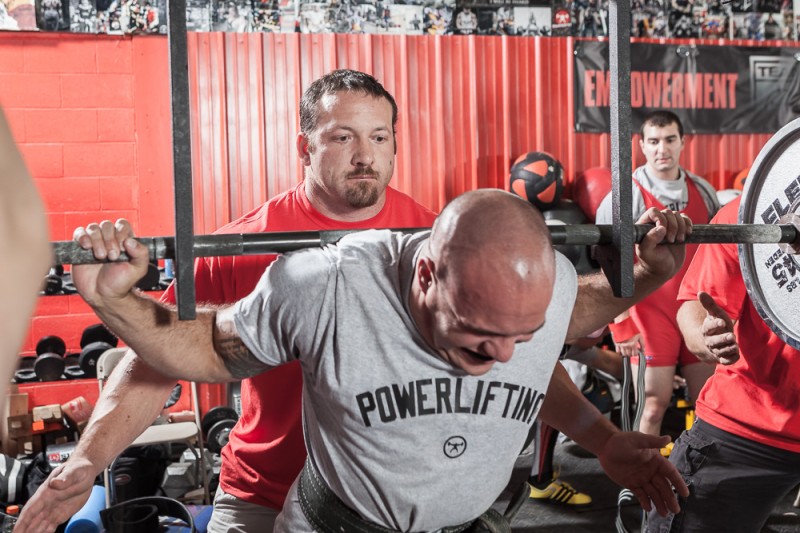
Now, let’s get back to the part where I said the competitor holds more sway than we would probably expect. This is absolutely a fact. So, how does a competitor begin to tilt the scales in the direction of a good meet over a bad one? The first answer is accountability. Taking complete and utter ownership of our own performances. That is huge. The single biggest thing you can do to improve your squat is to be accountable for it, and the same goes for the other lifts and total. You have to compete in order to be accountable as a competitor.
But this is not an article about accountability. We’ve already done that one.
This is about the importance of understanding how different, but also important, training and competition are in their own respects. It is crucial to delineate these two as separate but mutually impactful things. If we looked at the vast majority of lifters who experienced the “bad meet” scenario, I’d be willing to wager they were doing a whole bunch of competition in training, leading up to the actual competition. In fact, they probably did better competing in training than they did on the platform. All so they could gaze winningly at the camera for Instagram, no need to even check for white lights. Let me help you out with a long form explanation of why this is a problem. Recognizing it as a problem is going to be part of the solution, too.
Training is where we do work; competition is where we get paid. Sometimes we don’t get paid what we feel we are worth, but we usually get paid what we’ve earned.
LISTEN: Is An Exercise Science Degree Worth It?
Sadly, as competitors, we never really get compensated in training. We get training PRs, sure. But they spend like McDonald’s coupons, and no one really cares about them except for us. We can post them on the internet and get loads of likes, but those same likers are going to love watching us miss those same lifts directly in the coming meet.
Hopefully, we are developing in a number of ways throughout the course of the training year. Platform PRs sometimes take a lot more than just strength training. Part of that is mental and emotional conditioning. For 5thSet lifters, only about 20 of every 100 sessions will involve going over 90 percent of their training max. The other 80 sessions will be about performing some type of volume-based program geared toward improving multiple characteristics that support maximal strength increases down the road.
Ideally, lifters will learn this lesson as beginners, but some late bloomers have used the 5thSet macrocycle model to learn to train effectively (without blasting gear), even later in life. I can tell you first-hand that it is a very liberating feeling, like learning to walk without a crutch.
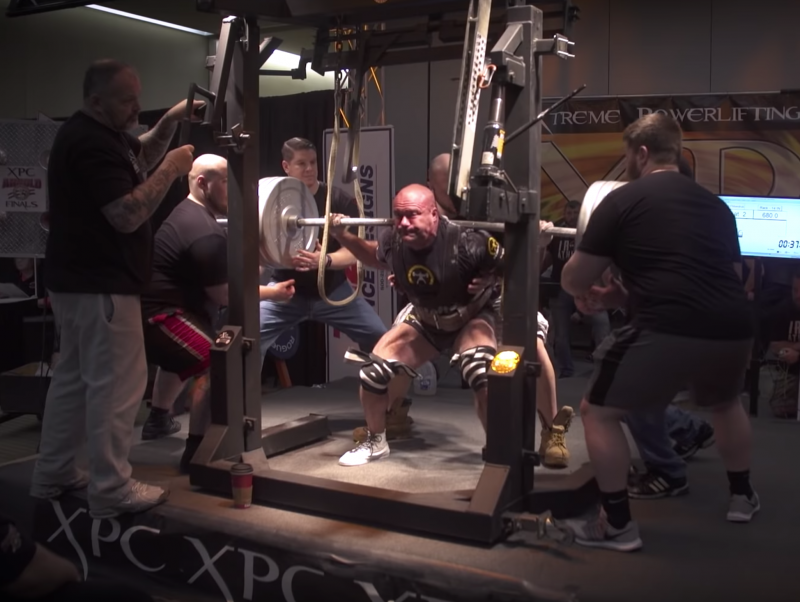
So let’s start by looking at how training should be set up.
These are my current positions, my opinions. I’ve written extensively in books and previous articles about how I arrived at these conclusions and why, but there is not enough room to explain all of those here. Instead, let’s just define the two things and why they are important.
Training
The overarching goal in training is to develop the lifter completely. To develop their strength; their technique (movement efficiency, stability and consistency in execution); their psychology (self-regulation of peak arousal, self-confidence and self-control, and positivity and focus toward challenges): all of it. All of these capacities are developed in training, though many are best expressed in competition.
This is accomplished throughout the year by putting greater or lesser emphasis on developing the various characteristics needed to consistently execute in competition. I think the secondary emphasis in training should probably be rotated based on some premeditated logical sequence, where each mesocycle puts special focus on a characteristic which will benefit the subsequent mesocycle’s objective.
For example, if I was writing a 5thSet program, the secondary training emphasis might be on hypertrophy for the first two mesocycles and then shift to a more pure strength stimulus for the next one. This would probably be followed by a peaking mesocycle, which would ideally start around 44 days out from competition.
In the peaking cycle, the stimulus would be very specific to the demands of the coming meet. The main work would be mostly singles in the 90 to 100 percent range to just beyond the first half of the cycle. Then, in the second half, the goal would shift to reducing fatigue as quickly as possible while preserving the capacities and characteristics developed throughout the training year. This reduction will hopefully allow the lifter to accurately demonstrate their strength without any inhibition caused by excess central fatigue, while at the same time mitigating the risk of injury in competition.
RELATED: Your First Meet Cycle — How to Lay the Program's Foundation
Regardless of how training looks prior to that peaking cycle, if the lifter continues to try for PRs too far into the second half of that peaking cycle, chances are they won’t have enough time to be fully recovered or free of central fatigue in time for their meet. This usually leads to performances on the platform that are less than they were in training and at an increased risk of injury. Not a good deal.
Training allows us to analyze and make corrections or improvements, which are not possible in competition. Thinking while performing a max in competition doesn’t usually work out very well. The movement should be thoughtless by then, after all of the training we've done. This is part of why internal cues can have a negative impact on performance in competition. The thinking slows us down.
In fact, I’ve had a hard time getting anyone to effectively implement corrective technique cues with more than 83 to 85 percent of 1RM in any scenario. This means integrating technical cues is probably going to be extremely difficult, if not impossible, while lifting over 90 percent. However, strength can easily be developed in the 70 to 85 percent range. So while training in that higher range may be necessary as we approach competition, we can see how doing so the rest of the year could become counterproductive. This seems especially true when we consider that technique tends to decay over time when it is not monitored and reinforced, especially as more fatigue is accumulated.
So what about competition?
Competition
From what I can see, the trending overarching goal in competition seems to be to fail on the platform with the heaviest weights possible and to do this as often as possible for as long as possible. (Hint: it’s not very long.)
At different periods in time and even in certain special cases today, lifters have concerned themselves with actually winning a meet against other competitors. I know this sounds impossible with 150 different divisions and weight classes in each meet, but the big ones do actually force you to “compete” against other qualified lifters.
I’m persuaded that the overarching goal in competition should be to build a progressive and robust competitive history that spans a long enough period to develop completely. If we are not allowed enough time and experience to develop completely, if we destroy ourselves first in the process, it doesn’t matter how quickly we improved for a time: we will never reach the heights of strength we would have if we had been smarter about things.
Competition itself is a very important aspect of that. It forces us to structure and prioritize our training because we know we will have to deal with our own performances. That’s not the same thing as being accountable, but it’s a step in the right direction. At least, it sets us up for a learning experience albeit with no guarantee we will actually learn anything, as we’ve already covered. Many of us are all too familiar with these fruitless “learning experiences” to even deny that. But we can choose to be humble, to be teachable. If we do that, we can learn a lot from competition; potentially, how to avoid more long nights with visions of failed attempts dancing in our heads.
READ MORE: How I Trained for a 600-Pound Bench
Competition should allow us an arguably safe environment to hit the heaviest numbers we’ve ever lifted. A well-run competition provides competent spotters, some potentially life-saving safety devices, and top-notch equipment, including bars and even calibrated plates.
This may seem like the ultimate opportunity to see what we are capable of, maybe hit some lifetime PRs, and cash in on all the intelligent work we’ve been doing in training. It can and will be that if we learn to identify it as such. It will almost certainly not be that if we treat every session in training as though it were the same opportunity.
It is crucial to delineate these training and competition as separate but mutually impactful things. I’d wager that the majority of lifters who had a bad meet were doing a whole bunch of competition in training, leading up to the actual competition.
If you know anything about me, not much of what I say here is going to come as a surprise. I am a “plans” guy. I strive to be intentional and methodical with just about every action I take — premeditated, even. Except for any role played in someone’s death, of course. That would have to be the result of an unavoidable accident of some kind and not at all premeditated. Theoretical circumstance and knee-jerk reactive social situations aside, most of what I do is premeditated.
So it stands to reason, whether I am returning from injury or helping someone else with the process, I’m going to put together a long term strategy and plan of execution. I’m not a doctor. I’m not a physical therapist. I am a coach and lifter with a nice amount of experience with what comes after the doctors and physical therapists are out of the picture. I can’t put together individual strategies for all of you, but you can take the initiative using some fairly simple principles as guides.
RECENT: Powerlifting Meet Manual (with Formula for Selecting Attempts)
Before I lay out the three big principles I have to cover, I want to touch on some other things to consider. Last week I asked for some personal experience on this topic from other lifters and coaches on my social media. I’m limited to some degree, but I’ll include a few interesting points which were made by the respondents.
There are some positives if we play our cards right. Sometimes a hiatus from training isn’t such a bad deal. On the short term, it sucks, but if you’re playing the long game, a layoff can present some rare opportunities. For example, rehabbing after being cleared by your doctor is an opportunity for re-education but this can definitely be a double-edged sword. Coming back after a layoff can be a chance to address imbalances you’ve been putting off, but it also presents the opportunity for new imbalances to develop or even worsen if we aren’t careful. It makes sense to pay special attention to this aspect if that’s what caused the injury in the first place.
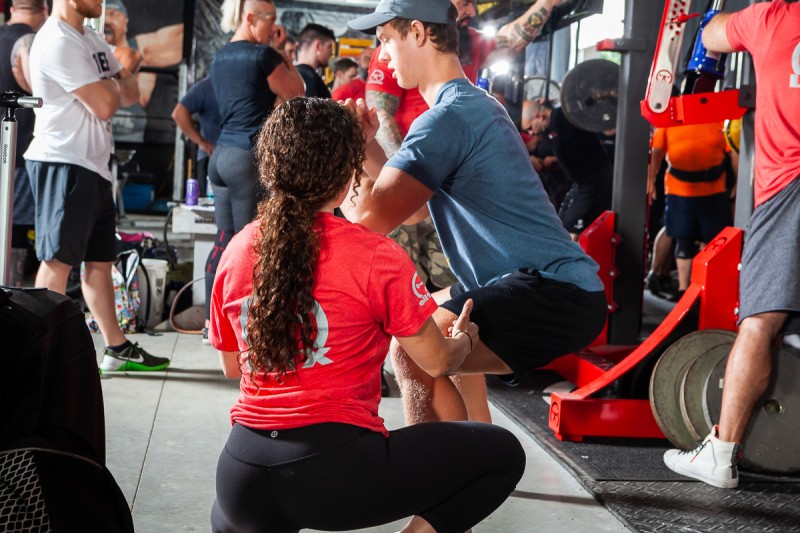
It’s a period that can be used to improve other lagging areas that are not affected by the injury, but it’s also a time when people tend to do some really dumb things in their training. Muscle memory is definitely a thing, and strength tends to come back quickly. As a result, for many lifters, testing becomes a normal and frequent ordeal. Common sense tells us constantly testing our strength after a layoff from injury might not be the best idea. But we will get into that, or more accurately, how to best make decisions about training in these circumstances (that is: way ahead of time).
The number of possible injuries that can put a lifter out of training for an extended period is ridiculously long, and there’s no way I could address them all. Nor can I talk about the best specific course of action in returning for each individual case. The best I can do is offer a few principles to help decision-making in this arena a smoother process across the board.
Have a Solid Plan and Stick to the Script
Have a plan and stick to it, even when things are going well. Especially when things are going well. If I could choose one piece of advice for you to take away from this article, it would be what you just read.
If we take a look at the problems lifters run into when returning to training after a layoff due to injury, we will notice a single thread winding through the entire ordeal: common sense. Or rather, most of these problems could be avoided by employing common sense in decision-making. Why do we struggle with that so much? Usually because we haven’t embraced any solid construct that prevents impulsive decision-making. Laying out a solid plan of action ahead of time can go a long way to help us avoid giving in to impulsivity.
We may be able to make good common sense judgments, planning things out ahead of time, but we could also choose to make entirely unrealistic plans for our return. It may be a good idea to run your plan by a few trusted people with experience in this realm.
Low and Slow at First
Of course, we all want to go back to training after an injury like nothing ever happened. Most of us feel like we have suffered enough, emotionally and psychologically, during the layoff from our passion. After being cleared to train, we are understandably excited to get back under some heavy weights and feel like ourselves again. However, if we head directly for that destination, we are probably going to end up compromising the recovery we’ve made and eventually backslide. This could be a result of either the same injury, which put us out before or something new related to compensation. I've dealt with both.
RELATED: Troubleshooting Strength Injuries: What is Autoregulation?
There is another sort of weakness that comes from any extended hiatus from the iron. That is perceived weakness or insecurity. The internet lets me watch plenty of this in real time, but I’ve seen my fair share over the years from lifters I’ve worked with as well.
It’s a combination of the perceived and actual loss of strength, though the latter tends to be outweighed by the former. This insecurity may account for the heaviest aspect of returning to training after an injury.
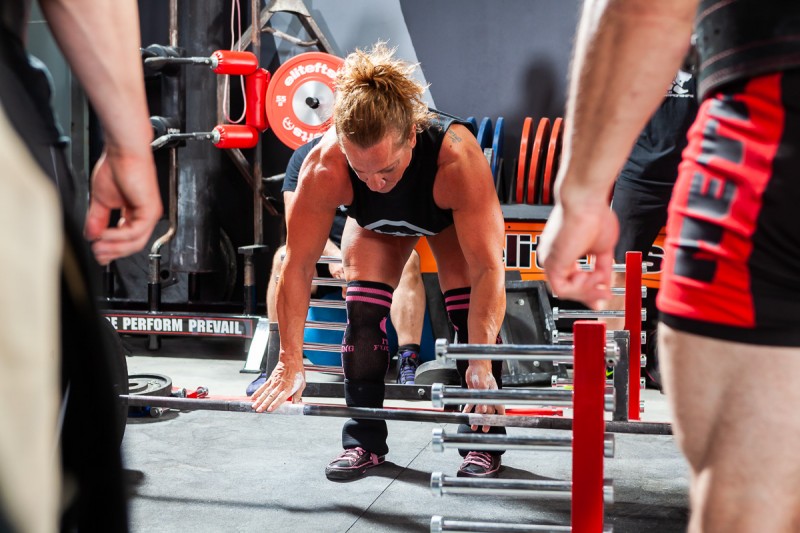
“Can I still lift this?” The answer is: not right now. It’s worth mentioning this is a problem I recognize plaguing lifters of every skill level, regardless of injury status, adjusting training based on mood or current emotional state. Bad business.
“I just want to feel the weight for confidence.” Imagine if being confident under heavy weights didn’t matter at all during this phase. Imagine if your best bet was to follow the intelligent plan we already discussed lying out (before touching a bar). Now accept that both of those are true most of the time, regardless of the injury you’re coming back from.
But one might expect with a still-recovering injury present, it would be obvious starting back slowly is the way to go. I mean, common sense, right? If you’re reading this, you’ve probably spent enough time in the weight room to know common sense is decidedly less than commonplace in there. The blood gets pumping and we begin to lie to ourselves about our capabilities. This is the land of testosterone and impulsivity.
Which is why having a solid plan and sticking to the script is the single most important principle for recovery. I’ve come back from various surgeries (even a serious one to my spine) and more torn muscles and nerve issues than I could possibly count, and this is the short list. Recovering from each of those was a long, harrowing process. Yet I am able to lift and live my life without nerve or back pain of any kind, and most of the muscles I’ve torn are working as well as ever, with the exception being my missing medial delt, whose performance has been underwhelming, to say the least.
How did I pull this off? (The recovery, not the medial deltoid.) I stuck to the script. Plain and simple. Even when I didn’t want to, I stuck to the script in every respect. I started back training below what my abilities were at that time, meaning I did far less than I was able with the affected muscles or areas every step of the way, focusing on proper movement rather than heavier loads. I did not allow myself to move poorly or fight through pain to lift heavier weights. As a result, I was able to lift heavier weights again without pain and without re-injuring myself 97 times.
It’s crucial to keep in mind a full recovery can take more or less time depending on the nature of the injury and the capacities of the lifter. My spine injury and the resulting surgery changed the way I will be able I train for the rest of my life. But that notwithstanding, it took me almost three years to get back to where I was before the injury in terms of poundage.
Nearly every success story shared with me, after I posted on my socials asking for personal experience, mirrored something similar to the point I just made. Some people seemed to beat their heads against the wall at first, but the overarching takeaway was universal. In order to recover, things have to change and the ego has to go.
WATCH: Table Talk — Bicep Tendonitis with Dave Tate and Joe Sullivan
My brother, Vincent Dizenzo, laid it out fairly simply. I’m paraphrasing here, but he said something to the tune of the following: If a lifter tries to come back from an injury after a layoff by training at the same level he was when he left, it’s going to work out about as well as a former heroin user starting back with the dose he was using when he quit.
That’s an apt comparison.
Use Your Pain
Pain can be a useful tool. Throughout this process, we should use it as a guide. It’s our bodies’ way of saying “hey, don’t do that,” almost always.
There are different types of pain, sure, but the kind of pain we experience from being injured is a little different than normal training pain. We know, almost instinctively, the former type of pain is a sign something is wrong, while the other is a sign things are right. As a rule, I personally have followed my own recovery plans to the letter, right up to that point of pain, even just marginally beyond it. But no more. In other words, I do not attempt to “train through” pain or anything like that while recovering from an injury. Ever.
Intelligent application of this principle can make a night and day difference in the outcome of our comeback strategy.
As always, if there is any topic you would like to read about in future articles, please feel free to reach out. And if you found this helpful, please share this on your social media.
Coming back after a layoff can be a chance to address imbalances, but it also presents the opportunity for new imbalances to develop. Common sense suggests that testing strength after a layoff isn’t the best idea. But if you are going to do it, keep these things in mind.
The strongest person doesn’t always win the meet. It’s usually the strongest smart person, the one with the most realistic game plan, who wins. That’s not to say the strongest person can’t sometimes be so much better than everyone else they still win, even making fool-decisions throughout. But they can also bomb out of the meet. I’ve seen some of the strongest raw lifters in the world do it. And even more often than that, I’ve seen them total a hundred or so pounds less than they are able to due to poor attempt selection.
Attempt selection wins meets; it’s really that simple. The protocol and formula I’m going to give you in this article are based on well over a decade of competition performance data. All of that is specific to my methodology but externally valid to any system of training that causes central fatigue accumulation (read: any system that actually works).
Let’s review and expand on some of what I covered in the OG 5thSet book on this topic.
RECENT: Live and Learn (And Pass On, Too)
With everything that's going on and the fact that you have probably trained for the last three to six months in preparation for the nine attempts you get to take on this one day, the last thing you want to have to worry about is figuring out a strategy for selecting your attempts.
This is where having a coach is awesome. You can just sit back and relax. When you are in the hole, you can focus on getting ready to take your attempt rather than stressing about whether it was selected appropriately.
Not everyone can afford a coach, but if you go into this prepared, there’s no reason to stress calling your own attempts anyway. Just make sure to select the next attempt as soon as you can after walking off the platform. Using the guidelines for attempts we’ll get from my formula makes things thoughtless — at least until the second attempt. The bar speed of the second attempt is going to determine how close to the formula limit we take our third. Remember: the formula for our third attempt is the limit. So we don’t go any further than that.
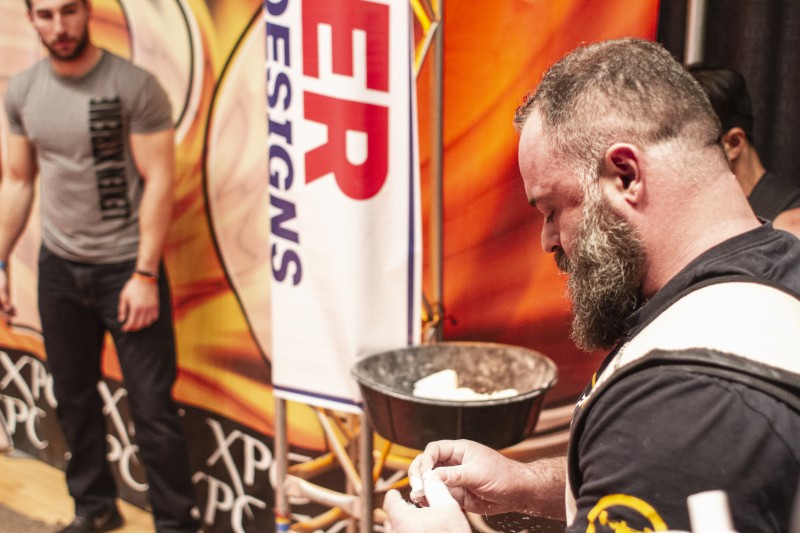
One important point, and I can’t stress this enough, is that you should have someone video your attempts. If you don’t know a single person at the meet, you can still set your phone on a stand or tripod or lean it against something to record your attempt. Of course, it’s cool to have videos of all your lifts for the ‘gram, but beyond that, it’s invaluable information for the lifter to have on the fly — or the coach, if there is one. It’s hard to get a good handle of your own bar speed without actually watching a video. The most common thing I hear people saying in this regard is the weight felt hard, like it moved slowly, but then they watch the video and see the bar actually moved quickly and smoothly.
Formula for Selecting Attempts
I have developed a formula using coefficients for each attempt and the training maxes taken during a lifter’s meet peaking cycle, which makes selecting attempts for the meet as close to fool-proof as we will get (fools are resilient). This is what I use for all of my lifters, and so if I was working with you, this is most likely how I would come up with your plan of attempts for meet day.
Like I mentioned before, this system was designed to be used with maxes taken during a peaking cycle. Preferably those maxes would have been taken on their own days, around a month or so out from the meet, after months of training. That’s how we peak with 5thSet. Of course, there is plenty of specific detail for exactly how we do it in the books, but this manual is for everyone.
Here is how the formula works. We take the best lift and multiply it by the corresponding coefficient for each attempt.
The coefficient for the first attempt is .9.
The coefficient for the second attempt is .97.
The coefficient for the third squat and deadlift is 1.04, but for bench press, the third coefficient is 1.025.
So for example, if the lifter’s max during the peak was 500 pounds for squat, we would multiply 500 x .9, 500 x .97, 500 x 1.04 to get our three attempts. That gives us 450, 485, and 520 for attempts. Remember that 520 is the upper limit for the third and should be called based on bar speed.
If the lifter’s max during the peak was 300 pounds for bench press, we would multiply 300 x .9, 300 x .97, 300 x 1.025 to get our three attempts. That gives us 270, 290 (rounded down), and 307.5 as the limit, which will probably end up rounded down to 305.
Remember the bench coefficient for third attempt is different from the other two lifts. With how we will select the attempts in mind, let’s take a look at how this should play out.
The Ideal Scenario:
- We walk off the platform after a successful attempt and immediately review video of the lift to check on bar speed.
- If that lift was our second attempt, we would determine how close to the limit to call the third; if it was our first attempt, we would stick to the script for the second (97 percent).
- If we aren’t confident about the max we are using from the peaking cycle for some reason, we could call the second based on the bar speed of the previous attempt, as well.
- Once bar speed has been reviewed, we go directly over to the table or expediter taking attempts and clearly state what we have decided for the next.
One of Many Suboptimal Scenarios :
- We walk off the platform after failing a lift horribly and embarrassingly and immediately review video of the lift to determine if hara-kiri would be honorable or advisable.
- We quit whatever nonsense type of training led us to this disgrace, then run 5thSet for an entire macrocycle, pick another meet and go nine for nine.
With the biggest issue out of the way, let’s take a look at some of the other things we can do to help ensure a noble and respectable performance.
Eating the Day of the Meet
Drink plenty of fluids right from the moment you wake up on the day of your meet. Never stop sipping, and never stop snacking, either. Between lifts and when warming up, it’s always a good idea to always be forcing fluids and snacking on salty foods. Be sure to eat enough to perform well. That doesn’t mean stuffing your face so you feel like shit, but be sure to consistently snack on food and sip fluids.
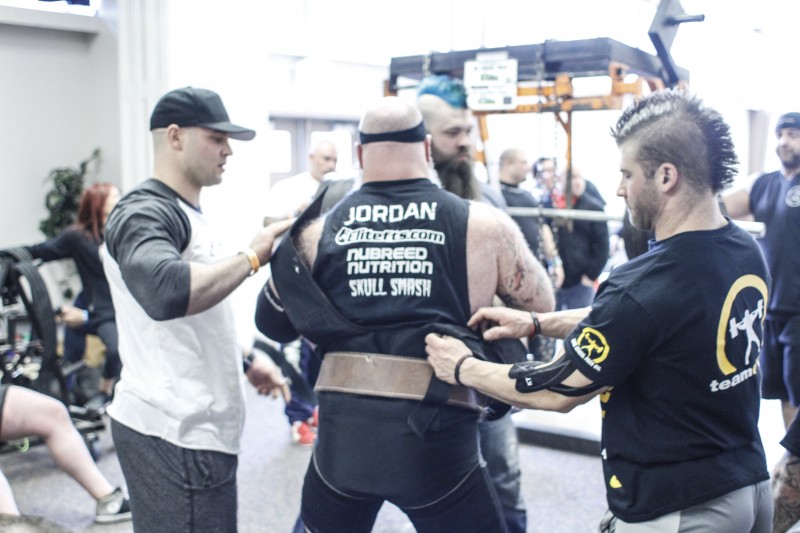
Activation/Warm-Ups
Warm-ups are an important part of preparation for a successful performance on the platform. Correctly selecting warm-ups can have a nice impact on the likelihood of executing all of your attempts. The vast majority of pulled muscles and minor injuries I have seen at powerlifting meets have happened during the squat. If I had to venture a guess as to why that is, I would say a combination of poor fatigue management while moving into the meet, insufficient hydration, and not being warmed up thoroughly before attempts, usually because the lifter waited too long to start.
Getting hurt during the squat is a sure way to stack the cards against yourself for the rest of the meet. Any time you get under that bar to take an attempt, you are risking getting hurt. Do everything in your power to prevent it. Show up to the meet on time so that you can pace yourself through warm-ups. Treat it like the beginning of a training session.
Do some bracing/activation warm-ups. Some great examples of this type of activation protocol are outlined in the 5thSet books, including exercise selection and sequence. From there, you can squat the bar a whole bunch, but make sure to reset every rep and treat each one like a max attempt. Brace hard. Take small jumps with lighter weights and just keep the reps low. Sip fluids between sets.
When You Are Not Lifting, Be Resting
Even meets that run like clockwork can span the entire day if there are enough competitors. Waiting around and stressing about when you are up will sap your strength. Once you are told to warm up for your flight, do it. If they aren't announcing that info, ask the meet director approximately when your flight will be. Until then, find a place to sit and relax. When the warm-ups for your flight come, and you are all done warming up, find someplace close enough to the platform to set up so you can clearly hear who is ‟on deck” and ‟in the hole.” Between attempts, clear your mind and think only about the lift you are about to perform. Visualize the bar moving smoothly. Do not stress.
Demonstrate Sportsmanship
If you miss a lift due to being red-lighted, do not act like an asshole. You have every right to ask a judge their reasoning for giving you a red light, but whether or not you agree, their opinion is what matters, and you have to respect it. It is okay to be angry but demonstrate good sportsmanship. Keep in mind that two judges had to agree you did something illegal for the lift to not pass.
If you have another attempt left, come back and make it perfect. If not, keep your head high and take it on the chin. Nothing earns my respect more than someone being a good sport after getting questionably lighted on a lift that might’ve been good. If you have a coach, they will argue any valid point for you if there is one. If you don’t have a coach, I’d give the judges the benefit of the doubt.
In other words, carry yourself like a mensch. Do your absolute best and accept what comes. If you refuse to accept you missed a lift because of something you can change, you can’t benefit from it.
I hope you all find this mini-manual helpful. If you do, please share it on your socials.
For those of you who’ve never done a meet, save this, and read it again before your first. Or just run 5thSet and take out any guesswork.
For those of you who’ve never done a meet, save this, and read it again before your first. And for those of you who just can’t finesse attempt selection, here’s a formula I developed to make attempt selection as close to fool-proof as it’ll get.
One reality I always strive to be transparent about in my writing and teaching is the fact my current position, in terms of any opinion or belief regarding a given topic, is not a final destination. Rather, it is a step amongst the stairs to the greatest, most complete viewpoint I will reach. There have been times when even one more step up set me high enough to see over a tree line I could not previously.
This ground is not the rock I thought it to be... I was wrong. This changes everything.
Before Maynard James Keenan could see the second thing, he had to accept the first. If you don’t get the reference, it really doesn’t matter in this context. We need to stay willing to be wrong. That’s the meat of the point I am making. I am certainly willing. I’m not always happy about it, but that’s another issue altogether. Who wants to admit that their own beliefs (sometimes foundational beliefs) are flawed, especially when it means stripping down everything built upon those convictions and then reassessing? Well, someone who wants to improve. Like I said, I’m not always thrilled about it, but in the face of enough evidence, I am always willing.
RECENT: The Death of Powerlifting
Throughout my career as a coach, I have actually spent months and even years pursuing ideas that turned out to be, let’s say, less than sound. If I stuck to my guns in those cases and refused to be persuaded the course I was on wasn’t heading where I wanted to go, I would not be where I am right now. That much is certain. There would be no 5thSet, and I’d never have had the chance to help the thousands of lifters I have.
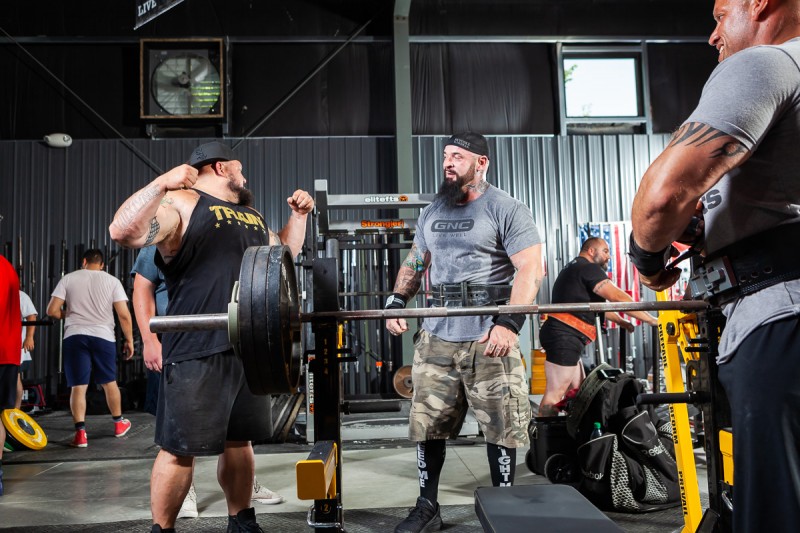
If we took a good hard look at all the things I’ve tried as far as program design over the years, we’d see more failures than successes, I assure you. But each failure gave me more information. Information I used to make better decisions and prevent similar wrong turns moving forward. It’s important to mention the mistakes or lessons I’m referring to came after I already had a solid understanding of almost all of the factors at play in the math of effective strength training.
The greater lesson in all this, like most things I write about, is valid and applicable in professional, personal, and training contexts alike. So I’ll weave a little tapestry for you here. The last bit about “the math” of strength training reminds me of a pretty solid example of what I’m talking about.
My fiancée Sydney is (aside from being a supermodel) a math and computer science geek with a GPA she is happy to brag about. For one of her computer science classes this past semester, she was tasked with writing all the code for a video game. It was basically a knock-off of World of Warcraft for those of you lame enough to know what that is. She went into this semester-long endeavor with a very good working understanding of C++, which is the general-purpose programming code language they used.
Throughout the course of the semester, I watched her struggle, sometimes until three in the morning, with issues her professor would not explain. I became furious she wasn’t getting the help she needed, but Sydney refused to complain. She told me in the beginning of the class when she was given the assignment, the professor explained, “There are quite a few issues that you guys will run into in this process. Hopefully you can figure them out.”
Wow, sagely fucking words, I thought sarcastically. But hindsight is some sobering shit, isn’t it?
RELATED: Who is in Charge Here, Anyways?
As she would struggle and figure things out on her own, each problem became easier. Eventually, the volume of work that would initially take a week of late nights became a single night and sometimes a couple of hours. It turned out knowing the language was not tantamount to using it efficiently for a large-scale project. She knew the variables but didn’t have a firm enough understanding of how they all worked together. That was a skill that took practice, and some of it was beating her head against the wall.
Hopefully you are picking up what I’m putting down here. For those of you lacking in the reading comprehension department, I’m drawing a parallel between her being solid with the computer programming language they used and me having a solid handle on the factors at play in programming for strength training like I mentioned above. We both had to be tested and humbled. Then tested more. Then humbled more. Some things you can’t learn from books.
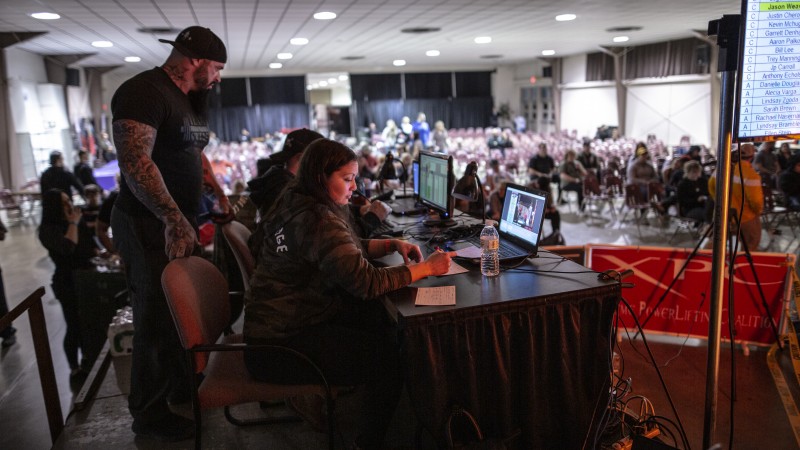
This is the reason the people with the most experience are the most willing to admit they don’t know everything: That lesson has been crammed down their throat enough times it’s become hard to forget.
Now you don’t need to learn any fancy programming language to be awesome at playing video games, and the same is true for being a great lifter. But I’m sure you can find some parallels there, as well.
One more for the road: Almost exactly a year ago, I wrote a semi-sarcastic New Year’s resolution article for my column here on elitefts. I mentioned that I was giving up traveling constantly, obsessing about the ocean, my Hunger Games-esque love life, and I was going to become monogamous — an idea so far-fetched it forced me to break character and admit everything I’d written to that point was satire.
READ MORE: Top 5 Lessons I've Learned as a Coach
Well, fast-forward a year: I’m still traveling and eternally connected to the sea. But I’m engaged and completely devoted to the most fulfilling relationship I’ve ever had, and it’s entirely monogamous. Crazy, I know. Maybe it’s a self-fulfilling prophecy. Who can say?
One thing is for sure. If I were truly convinced where I stood when I wrote that was the greatest, most complete viewpoint I’d reach, it would have been. And I’d have missed out on the best thing that’s ever happened to me.
Some New Year’s food for thought.
Live and learn from your failures and mistakes. Be willing to learn, and maybe more importantly, be willing to be wrong. Now go and pass that along.
Everything is wrong. I get it. I do.
There’s this “coach,” or talking-head on your Instagram, telling you what’s wrong with everyone else, but he doesn’t know a lot, himself. That’s why he’s talking so much.
It’s a distraction; if the mouth keeps moving, the fingers keep typing, your eyes stay focused on the words, far from the more important business of how the talking-head’s lifters perform, or how consistently they fail to. Or if there even are any lifters. But hey, check out that confidence! It makes you wonder if the talker is even aware they’re a punchline to everyone who has been in the sport more than thirty seconds.
Legends in their own minds. Assholes.
I could go on tearing apart what’s wrong in the sport of powerlifting, but, quite frankly, it’s microscopic and it has very little to do with coaching. All that’s wrong with the sport for the most part is it’s been insufflated with whining from cry babies who are too worried about the splinter in their neighbor’s eye to notice the plank in their own. It really comes down to that. I’m done contributing to it. I can’t write an article, bitching about people bitching.
I don’t care enough. And, yes, I’ve been given this as a topic suggestion, repeatedly. But these things are infectious and self-sustaining. So the best I can do is meet you guys half-way. I’m going to sum this all up very quickly and juxtapose the small negatives with some of the myriad and massive positives of the current state of the sport.
What’s wrong with powerlifting? Not online coaching. Not Crossfitters doing meets. Not other lifters secretly being deep cover Nazi operatives. Not anything about other lifters, or coaches, at all. It’s pretty simple for me to address this from a coaching standpoint, since that's my expertise. Like essentially any other product or service being offered, customers are faced with a buyer-beware scenario. The market tends to sort itself out on these matters.
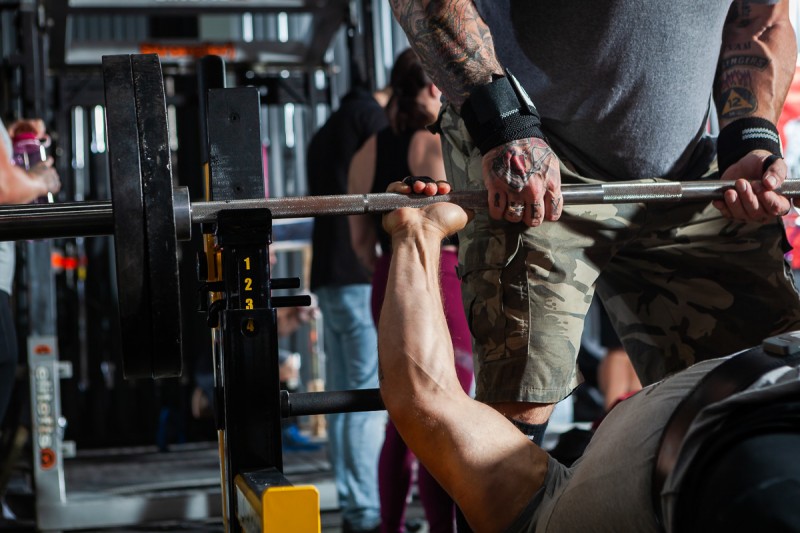
A few months ago I ordered a couch online (not a coach). It came up in my Instagram feed as an advertisement. This turned out to be more evidence for the argument “if it seems to good to be true, it probably is.” Needless to say the couch never came, I lost my money and with no recourse from Instagram, I was forced to eat the cost of the purchase. I will do more research before buying something from an ad in the future, even on a well known and trusted site.
Most beginner lifters end up making a bad choice hiring their first coach, because the coaches who constantly advertise and post about coaching don’t actually do much of it. They might send out a lot of templates, but they don't do much coaching. Again: buyer beware.
I always say my track record speaks for itself. Everyone’s does. Working with someone without a track record of proven and repeated successes is going to be a gamble— regardless of their political views, or way of eating, or how strong their virtue signaling.
All that’s really wrong, from my perspective, beyond the very minor coaching speed bump is this new abundance of public whiners, cry babies, nosey bastards and, again, virtue signaling pseudo-political fucktards, all of whom are focusing on all the wrong things. That group is easy enough to ignore.
Powerlifting is really not so bad. It’s closer to the truth to say it’s heading in an awesome direction. We have human(s) totaling 2500+ raw. I can remember when a 2500 multi ply total had yet to fall. Finally Gary Frank took it. 2600, too. A shitload more after that. How about an 1100+ raw squat? I wonder if Goggins ever imagined, when he took the first 1100 multi ply squat, someone was going to beat that number, raw, and in his lifetime.
Goggins and Frank are both Titans, and yet these numbers are getting flirted with by raw lifters in their early twenties. It’s mind-boggling to consider that.
This leads me to another important point: all of the people complaining and rallying about the various social issues they’ve superimposed onto powerlifting, you know, since they started participating in the sport a year or two ago— they won’t be around in a year or two more. Trust me, I’ve been through ten or twelve of these cycles over the past 22 years. So shake that all off, too.
The few who are promoting this new “diversity,” take a group of people (powerlifters), who have already been very well unified in the pursuit of strength for quite some time, regardless of age, race, gender, religion, sexual preference, diet (yes, diet is somehow relevant to identity now), and they would force us to separate them into groups and analyze whether or not they’re all being treated fairly. This sort of thing usually stems from internal guilt about their own perceived privilege; guilt they believe will be mitigated by “good deeds” and “advocating.” I won’t even begin to touch on the problems with that proposition, mainly because I don’t care enough. Oh, and because those people are irrelevant in the face of time. They are tourists. Here today, gone tomorrow.
Believe me when I say, as someone who has been intimately involved in this sport for a very long time, coaching lifters across every age group, race, gender, religion, sexual preference and so on, I’ve never seen someone discriminated against or made to feel uncomfortable in a meet or any other powerlifting context based on these things. In fact, I have never experienced another environment as universally supportive, regardless of those characteristics, as the sport of powerlifting. So where powerlifting took many and made one, these fools would take that one and separate us back into many groups, all of which somehow need these same fools to protect them and advocate for them.
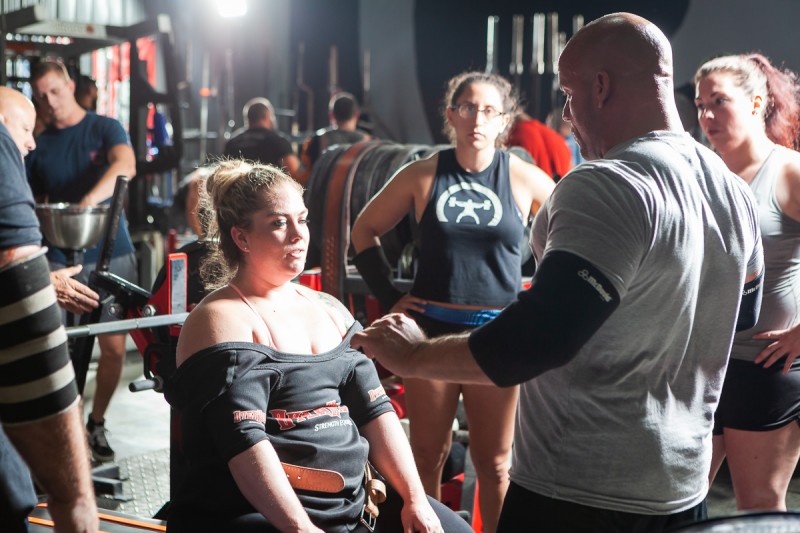
But everyone knows the only things powerlifters really hate each other for are the type of gear we wear, or don’t wear, or how deep we squat. Oh, and who we’ve slept with.
One thing not up for debate is the fact that good information, as well as educational content, is available on a scale not possible at any point previously in the sport. As a result, the average lifter with five or more years experience has a better baseline level of knowledge about training than they likely would in any timeframe, historically.
How do I know? I haven’t done a survey or anything, but I’ve been competing for 22 years. So I’ve witnessed these changes with my own eyes, in real time. 20 years ago, if you asked someone at a meet for advice on how to get stronger, you’d probably get something to the tune of “eat until you gain weight,” without even a question about how you are training or not training. (Not saying that didn't work to some degree.)
Of course, all this information is a double edged sword. There is a legion, composed of wienery internet kids who barely even lift, many of whom have never done a meet, offering advice based on things they’ve read on the internet, or watched on youtube, and never practically applied with any success. On the internet it's hard to tell who is who, most of the time. So we have a situation where someone who doesn't have much experience can easily pose as an authority to anyone who knows less than they do. These people have no experience, which is problematic, I'm happy to admit. Like my man Rollins said, knowledge without mileage is bullshit. But it’s easy enough to separate the geeks from the go-getters. Check their track records. If they don't have one of those, you can be sure they don't know as much as they think, whatever excuse they give.
At the end of the day, the net impact of all this has been tremendously positive, evidenced by the numbers continuing to climb, now to previously unthought of heights. So why are all the talking heads focused on what’s wrong? The same reason every wolf in sheep’s clothing is busy pointing out other wolves. Meanwhile, I will probably see an 800 pound raw benchpress in my lifetime. Think about that for a minute.
Participation by females in the sport is also at an all-time high. And that is by a nice margin. Female coaches have begun to emerge and make names for themselves. I know of at least one successful powerlifter who, after identifying publicly as transgender, moved on to coaching with great success and almost universal support within the lifting community.
Powerlifting is the most inclusive it’s ever been. Lifters are more accepting toward one another than they’ve ever been. Totals are larger than they’ve ever been, across the board. Prize money at single contests has crossed over into the six-figure range.
To the the people who say the sport is in poor shape or heading in a bad direction, I would pose a question.
What metric could you possibly be using to come to such a conclusion?
Please share this if you’ve enjoyed it and feel free to reach out with any topic ideas for future columns.
The 5thSet Black Meet and Women's Pro Am Weekend: Back-to-Back Wins
What’s wrong with powerlifting? Not online coaching. Not Crossfitters doing meets. Not other lifters secretly being deep cover Nazi operatives. Not anything about other lifters, or coaches, at all. All that’s really wrong, from my perspective, is this…
Just now, spinning in the thrall of some stupid “mindfulness” exercise intended to keep my brain from running off the rails, it suddenly sprung up to me I should jot down something more productive. Like the third and final installment of this series of CBD articles: my own first-hand experience.
In the first article, I gave an overview of the current state of my own body— after 22 years of competition. (That state is maybe best described as FUBAR.) I explained I’d decided to compete in at least three more full power meets before retiring and I outlined some of the obstacles I was facing as a result of the reality of my circumstances. The topic of Cannabidiol as a potential alternative to NSAIDs, as a means to control inflammation and related pain was introduced, as well as the fact that I’d spent a nice amount of time researching and reviewing the available data. There turned out to be a considerable amount.
The second article covered a bunch about my tour of a cannabis processing facility, Extract Labs, where CBD concentrates and tinctures are produced. I touched on the specifics I learned about the chemical processes involved in the isolation of certain compounds, such as CBD. I explained a bit about what I learned from the available scientific data and my take on the “why,” “when” and “how” for Cannabidiol as I understood it. Also, I outlined some key points to consider in terms of requirements when choosing where you purchase CBD, given the fact that there is no current regulation or oversight regarding purity or label claims of dosing.
If you would like to brush up on the above-mentioned articles or read them for the first time, which I’d strongly recommend, they can be found here:
Like I mentioned, this final installment will simply be a summary, recounting my experience using CBD as a means to combat some complications of inflammation, including the pain related to that. As I write this, it’s been just over three months I’ve been using the stuff. The results have been positive, for certain.
I had two main points of concern when I made the decision to embark on this vain, selfish journey to compete again in full power. The first was inflammation in my right hip from training with the weights I would need to, for the volume I would need to, in order to properly prepare for a meet. A little inflammation in a hip never killed anyone, but, like I touched on in my first article, when I broke my spine and had pieces of two vertebrae removed, had part of a disc removed, and had a root nerve relocated: considerations like inflammation in my hip became a bit more unnerving. All stupidity and frankness on my side, this was a lesson I learned the hard way the last time I attempted this foolish pursuit.
Hip inflammation became SI joint dysfunction and that changed the way I was loading the vulnerable portion of my spine during training. The end result, which was cumulative, was less than desirable, to the tune of me laying flat on my back on the floor of an airport terminal, by myself, in the most excruciating pain I could imagine.
Luckily I didn’t do any permanent damage to the repairs and I was able to treat the issue with nonsurgical means. You’re probably asking yourself why on earth I would continue to break myself against a thankless pursuit like this, with so much on the line. But it’s human nature. At least, it’s my nature.
I cannot find a lucid enough epithet to describe this characteristic, this relentless pursuit of miseries disguised as freedoms that we, as a species, largely seem to take part in. Maybe “confused sick, hunger” is the best I can do.
My second concern was my right knee, which I’ve already had cleaned up once, and I will certainly need a replacement for at some point. In the recent past, consistent, heavy squat training has wreaked havoc on it. Again, this is a cumulative issue and directly related to inflammation.
I’d already decided to wear single ply briefs in training and committed to taking CBD regularly, both of these as preventative measures against the concerns I listed above.
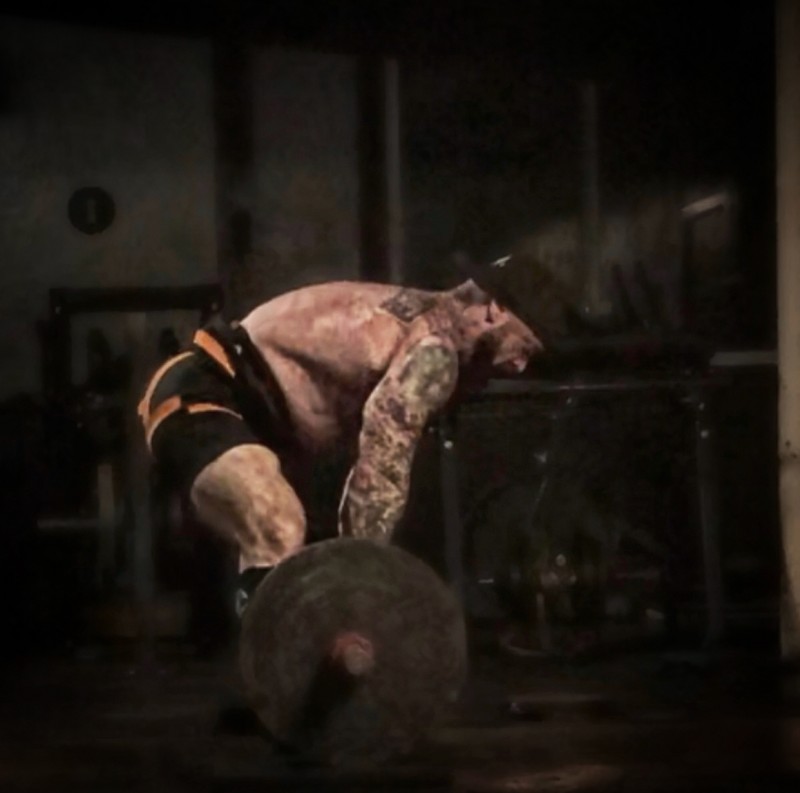
So how did it all work out?
First I will tell you that I was not always consistent with wearing the briefs. Sometimes I did, sometimes I didn’t. Most of the time I did wear them. I was very consistent with the CBD, however. I started dosing it at 33 milligrams 2-3 times per day. This dose gave me a noticeable effect, but I’d say it wasn’t anywhere near the point of diminished return, based on what I tried next.
After the first month I upped my dose to 66mg, twice per day, and sometimes I’d go as high as 100mg per dose. Between 66 and 100mg per dose seemed to be the sweet spot for me. I realize this stuff is expensive. So it sucks to hear that higher dosing may be necessary. But I used a third party tested product from Extract Labs, and there are measurement lines on the dropper— so I know the dosing was accurate. Between 66 and 100mg per dose is what it took for me to achieve the desired result.
And achieve, I did. I never would have thought in a million years my body would be able to handle the weights or volume I’ve been able to consistently train with these past months. Yes, all my stuff still hurts. I’ve been doing this for a quarter century. I am not operating under any illusions that I’ll make it through this unscathed.
But, for now, I’m making it through.
I’m almost scared to type this, but both my hip and spine are functioning at 100% with no day to day pain and nothing residual after training, other than normal training soreness. It feels great to be able to abuse those areas enough to actually build some of the muscle back up.
On the topic of my knees, the bad one is as good as new. The good one, however, not so much.
Last night after about fifty total deadlifts, including MSM’s, I got on the leg press to knock that part out before cutting the session and finishing in the morning. Let’s just say I wish I had cut it. On the second rep of leg press I felt a pop in my left knee. And on the third. And the fourth. I stopped there and I could feel that it was heating up and getting angry. I thought for sure I did something to the meniscus like I did on the other one, but now I’m not so sure.
My fingers are crossed and I’m hopeful, because after a couple of megadoses of CBD (135ish mg) I’m able to bend it and walk on it today. I’m not out of the woods by any stretch, but I’m hopeful that in a few days this will resolve and be back to normal. My instincts tell me this is nothing major, but I have to take these things seriously if I expect to finish this course.
There is one more aspect of regular CBD supplementation I want to mention. This was a kind of serendipity, really.
I struggled with anxiety for many years, though I developed a skill set to battle it proactively over that time. It worked so well, I can honestly say that until this year I hadn’t dealt with anxiety of any kind in a very long time. More recently, some circumstances in my personal life have leveled stress on me in a way I was not able to escape using my conventional means.
When I began to take my nighttime dose of CBD after training, I can honestly say there was a noticeable impact on anxiety. Not just anxiety, but my restless mind in general. It helps me to stop the wheels from spinning in my problem-solving brain, as I lay in bed at night, waiting for sleep. Once I do go under, I am usually able to stay there for a decent amount of time, even after my last dose has worn off.
That is, of course, unless I am jerked into consciousness by some shrill, hoarse moan from my gargantuan dog or a gust of wind blowing against the church. Once something wakes me, this same wall of wretchedness is always waiting, and I know I won’t get back to sleep again. CBD or not.
Essentially everyone I work with who is supplementing with CBD (including the living legend Ellen Stein) has reported a similar positive effect with sleep. Ellen says it makes her “sleep like a bear.”
I don’t understand the mechanisms at play there. It could have something to do with the action CBD has on the TRPV1 receptor we discussed in the last article. It could be something else, entirely. Regardless of mechanism— it does seem to help. So that may be an added benefit for those using it to battle inflammation.
Clearly, I am giving this stuff a thumbs up for reducing or preventing inflammation and offering a wholehearted recommendation on a “definitely worth a try” basis.
If you’ve found this series to be insightful or helpful at all, please share it on your socials. As always, feel free to reach out to me with topics for future columns.
I’m almost scared to type this, but both my hip and spine are functioning at…
In the previous installment in this series, I touched on the current state of my own mangled body, my goals moving forward, the obstacles I’m currently facing, as well as my plan of action to deal with them. The short version is: I’m training for some meets, I have a ton of chronic injuries that limit the way I’m able to train for those meets, and, until recently, I was desperate to find a sustainable means to mitigate the pain I was in as a result of those things. So, I began to research and experiment with Cannabidiol as an alternative to NSAIDs, like ibuprofen, which I’d been forced to resort to in the past.
You should definitely go back and read that article [here], if you have not already done so.
As promised, in this installment I will talk a little bit about what I learned from my tour of the Extract Labs facility, from my research of the available scientific data and my thoughts on “why,” “when” and “how” for Cannabidiol, as I understand it.
First of all, the tour Logan gave me was a real eye opener. I had no idea the current level of sophistication involved in the processing of cannabis. Extract Labs is serious business: an actual large-scale laboratory to the tune of 14,000 square feet of mostly work stations and chemistry equipment.
For a brief overview of what CBD actually is, I’ll touch on a few key points, here. It looks like there are eighty five chemical substances, commonly referred to as “cannabinoids,” present in the cannabis plant. CBD accounts for approximately 40% of the total extract available, making it the second most plentiful compound, behind the far more well known THC, which is intoxicating and illegal in most states.
This is a major point of confusion for the general public, for a number of reasons. Some people have reached out and expressed fear regarding failing a drug test from using CBD products, since Cannabidiol comes from the same plant as THC. However, when dealing with any reputable company that employs third party testing of each batch of their products, these concerns seem to be entirely unfounded.
The importance of the point mentioned above, about having the results of third party testing of the products available to customers, cannot be overstated. During my research I came across a study published by JAMA in 2017 which found almost 70% of the CBD products they purchased and tested did not meet label claims for dosing within a reasonable margin. Some hardly contained any CBD at all. And worse, some contained unacceptable amounts THC, enough to actually cause a consumer to unwittingly fail a drug screen. I will touch on this again in my recommendations, later.
One of the people concerned about the THC issue hit me with a whole line of questioning about the process of separating the CBD from the other chemicals extracted from cannabis plants, if it involved filters, how reliable it was— so on and so on. Quite frankly, I wasn’t sure what to tell them at first. I’m someone who prefers to be clear on the facts before forming opinions. As a result, I did more research, on my own, and consulted the experts I am so fortunate to have at my disposal.
To give you a clear picture of how this works, we need to touch on some very surface chemistry. I’ll keep this as simple as possible, but no simpler.
Cannabidiol is a polar molecule. That just means the distribution of electrons between the covalently bonded atoms of the molecule are different and the shape is asymmetrical. This causes it to exhibit a charge imbalance. A more commonly discussed polar molecule you are probably familiar with and learned about in high school is: H2O, or water.
One of the coolest things I learned during my tour of Extract Labs was the way they force CBD to crash out of an extract solution, into its purest form, by a process which exposes that solution to extreme non-polar conditions. This leaves us with a giant white crystalline chunk of CBD, which is 99% pure, after being purged of any solvent. Pretty amazing, I have to tell you. I can’t imagine how smaller companies are able to pull that off in their basement labs, but I am sure they do their best.
I mentioned earlier I would expound on the “why,” when it comes to the idea of using CBD as a novel anti-inflammatory supplement. Let me touch more on that now.
Cannabinoids have been tested and shown, in several scientific experimental models, to induce multiple anti-inflammatory pathways. So we know there is a logical basis present for how this could be working so well— and it seems to support the many impressive anecdotes. While there doesn’t seem to be any scientific consensus regarding the efficacy of Cannabidiol when compared to the various NSAIDs available over the counter, I can tell you it blows them out of the water in my own experience. My baseline levels of pain have dropped from nearly unmanageable to nearly non-existent since I’ve started using it at an effective dose. I’ll get to my recommendations for what that dose looks like in just a bit. First, let’s look a little more closely at how this compound seems to work.
The cannabinoid receptors CB1 and CB2, though they are still not very well understood, are an important part of the endocannabinoid system and are thought to be involved in regulation of appetite, immune system function and pain management. This makes sense, knowing how much CBD has helped me with my own pain, as well as so many others. In a study involving a rat model, CBD was shown to reduce the hypersensitivity to pain caused by damage to peripheral nerves in pathological conditions like neuropathy.
However a follow-up study demonstrated the effect of CBD on at least this type of pain is likely to be independent of the cannabinoid system, altogether. It doesn’t seem to be mediated by CB1 or CB2, but rather TRPV1, a different type of receptor which serves as a molecular integrator for various types of sensory input (like pain). So, even aside from the possibility that various problems with constant inflammatory influence (even various types of cancer) could be dampened or mitigated by supplementing with this stuff: it looks like there are a host of other potential benefits, right down to the way we perceive certain types of pain.
In other words, it looks like CBD not only addresses the causes of some types of pain, but also the way the pain itself manifests. And most importantly— the safety profile is already well established in a number of ways, like the literature review I mentioned in the first article noted.
Based on anecdotes I’ve collected from various lifters who use the extract, as well as my own experimentation, effective dosing for pain management seems to fall somewhere between thirty and one hundred milligrams at a time, and can be taken as needed.
When used orally, CBD begins to take effect thirty to ninety minutes after ingestion and seems to work for four hours or more. I’ve done very well with twice daily dosing between sixty and one hundred milligrams. It’s worth mentioning that I am two hundred seventy pounds. It seems like someone suffering with pain related to inflammation should start with around thirty milligrams and adjust upward, if needed, using the lowest dose that seems to be effective for them.
So, in review:
- The safety profile of CBD is well established in a number of ways.
- CBD seems to address the causes of some types of inflammation, as well as the way pain itself manifests.
- CBD should only be purchased from companies who employ third party testing, for each batch, and have the results of that testing readily available to consumers.
- When administered orally, CBD begins to take effect within 30 to 90 minutes.
- For pain management, a single dose of CBD seems to remain effective for at least four hours.
- Effective dosing for pain management seems to fall between 30 and 100mg.
In the third and final installment of this series, I will provide an in-depth report of my experience using CBD as a novel anti-inflammatory for three consecutive months.
Please feel free to share this article on your social media and reach out with any questions or concerns you’d like to see addressed in my conclusion.
In this installment, I will talk a little bit about what I learned from my tour of the Extract Labs facility, from my research of the available scientific data and my thoughts on “why,” “when” and “how” for Cannabidiol, as I understand it.
As sports go, powerlifting is about as unforgiving as any of them. Talk to anyone who has been doing this for a couple decades and you are likely to hear a laundry list of injuries that would make any sane person reconsider this endeavor. No surprise that lifting weights the human body was never intended to handle can lead to some serious wear and tear over time. Chronic pain is par for the course.
Those of us who do this sport for any appreciable run and continue to pursue it do so because we need it. That’s the only reasonable explanation—a lesser evil.
RECENT: How Not to Suck as a Training Partner
The crazier we are, the more we seem to need it. The more we need it, the further we tend to push it. I’ve said this before: powerlifting is a sport where the objective is to eventually get strong enough to get under weights that can kill you.
Let that marinate.
Chronic pain is one thing. But during the decades I’ve been doing this, I’ve definitely seen and suffered my share of acute injuries. I’ve torn just about every muscle possible, including tearing a medial deltoid off completely, multiple pec tears, a bicep tear, multiple hamstring tears, and a QL tear. I tore one gastroc off and suffered labrum tears in my right hip and shoulder. That’s just the soft tissue stuff, and I’m sure I’m missing some things from that list.
In 2014, I broke my spine and had pieces of two vertebrae removed, a discectomy, and a root nerve relocation. I was smart about my recovery at and I employed every resource and modality available to me. I continue to do so, which has allowed me to return to my former strength and still train my ass off, although I have permanent nerve damage and can’t feel half of my right foot—don’t ask.
I’m grateful that the skill set I developed can still help other people. Being a coach has allowed me to do this much for myself, but I’d be lying if I pretended I didn’t still suffer nerve pain after intense training sessions, especially now that I am back in preparation to compete in full power rather than only bench press.
As a rule, I do my best to stay away from NSAIDs. Though they can be very effective in treating the type of pain I deal with, they are also known to cause a whole host of health issues for which I am already at risk. It’s been a while, but in the past when I’ve tried to return to full power, I’ve had to give in to using them at high doses for extended periods of time.
Even then, the fear of health consequences as a result of using those drugs the way I’d need to has caused me to abandon the pursuit of my own goals in competition time and again after I had spinal surgery almost five years ago. However, for the last year or so, between fixing some imbalances and figuring out some other ways to proactively deal with my recurring issues, my training has been going extremely well. I started training part of the time in single-ply briefs, which has allowed me to go much further without the hip inflammation I always get from heavier squats and pulls.
The hip stuff is probably a result of the pelvic fracture I sustained in a motorcycle accident about nine years ago. This inflammation usually results in S/I joint dysfunction (conveniently, that’s right below the spine surgery), and this leads to crippling nerve pain for me that can last weeks.
With all the preventative maintenance and wearing the briefs in training, I’ve been able to mitigate this pain to a good degree. But like I mentioned before, when things get rough toward the end of a mesocycle, I’m hurting almost all of the time.
With that said, I’ve committed to doing a few full-power meets before I retire in 2020. Ideally, I’d like to post a decent total at 308, 275, and 242 on my way out. So, this left me searching for some alternative means to deal with the pain related to the previously mentioned inflammation.
Enter Cannabidiol (CBD)
If you’ve been on the Internet at all in the past couple of years, you’ve probably seen a veritable storm of companies advertising, selling, and trying to use influencers and other means to market various Cannabidiol (CBD) products as a safe alternative to painkillers, touting myriad other potential health benefits and magical outcomes as a result their use. If you’re anything like me, you kept scrolling and wrote that shit off as wishful thinking based on some unsubstantiated hippie bullshit. I did—at least at first.
I think my initial reaction had more to do with the way the concept was being marketed than my own preconceived beliefs. I pride myself on being open to the possibility that my own conclusions, at any point, could very well be faulty—on any topic, even my own expertise. However, you’re going to need to present a solid amount of evidence to the contrary of said conclusion to really get my attention. You see, it took a certain amount of supporting evidence for me to arrive at that conclusion. I’ve never been someone who just believes anything.
In the case at hand, overzealous, ostensibly unsupported claims were all the evidence I had, one way or the other. Sound like anything you’ve seen on the Internet? Maybe it’s a cleanse or some other marketing scheme where the seller is more motivated by the idea of getting other people to sell the idea of getting other people to sell the idea than the product they are supposed to be selling.
Don’t worry, though. It’s actually a great product and you can get all set up with auto-ship and start building your own entrepreneurship in no time.
The chief difference with CBD compared to other products was that, while it was seemingly being marketed virally, I was continuing to hear good things from people I respected who had tried it. This sparked my curiosity and made me want to dig, especially given the issues I was having at the time.
LISTEN: Kava—The Stress-Reducing Drink That Made Its Way to the NFL
When I began my research on this topic, I was surprised to find a wealth of studies and literature reviews supporting some of the claims. For example, one review substantiated and expanded the often described “favorable” side-effect profile of CBD. The review noted that there are some small knowledge gaps that should be closed with additional clinical trials, but that the safety profile was already well established in a number of ways. Cannabidiol seemed hopeful in being effective for a tremendous number of applications, including the treatment of both chronic and acute inflammation, some types of cancer, some psychiatric disorders, autoimmune diseases, and a list of other things (not directly relevant to this story). It was apparently nontoxic and non-psychoactive.
Alright, this got my attention.
At that point, I was ready to try the stuff. As fate would have it, I knew a chemist named Logan who worked at a cannabis processing facility in Colorado. She offered to get me some oral CBD tincture to try for my nerve pain, as well as some “muscle cream,” which would be applied topically. With my interest recently peaked, I told her to send both over and asked if I’d be able to hit her back later with some questions about how they worked. She was more than happy to help me.
In time, I was able to tour the facility where she worked, Extract Labs, and learned all about how the stuff is made, how it is purified and separated from THC (an important point for those who have to pass drug screens), as well as what to look out for when purchasing CBD products.
I feel like I need to mention that I have zero vested interest in this company, I’m not being compensated in any way by them and they had no influence on me deciding to use CBD or write about it. So, there is no conflict whatsoever. They’ve simply been a tremendous resource for information and Logan has helped me understand more than a few points I was confused about.
I’ll go more in-depth on these points and what I learned from my tour of the facility in the next installment in this series.
I am also going to discuss my experience, to this point, in using CBD to help me try to get my grizzled, old, Frankenstein body back in shape for full power (spoiler alert: it’s working), as well as the “why,” “when,” and “how” for Cannabidiol, as I understand it.
Stay tuned.
Committed to doing a few full-power meets before I retire in 2020, I’m searching for some alternative means to deal with the pain related to inflammation. Enter Cannabidiol (CBD).
Having the right crew or partner to rely on, and to train with, can make or break a lifter. It’s one of the most sought-after and difficult-to-find things for competitors and hobby lifters alike.
But the title of this article suggests it is about how to be good training partners ourselves, rather than how to find solid ones. This is pretty much for the same reason we would focus on how to be good romantic partners if we want to find good ones. It’s always a smart idea to work on being able to provide the things we want to receive to the people from whom we expect to receive those things. So, learning to be good training partners will dramatically increase our ability to find good training partners.
RECENT: A Manual for Implementing Technical Cues
Take my word for it: Having even just a single dependable training partner can be great. I’ve gone long periods of time kicking ass with just one partner (and even on my own, when I had to). But ideally, if we are able to do so, we want to create an environment that is conducive to cultivating a solid training group structure. The atmosphere that accompanies that kind of structure is like an incubator for developing lifters. Seems like common sense, right?
So, then, the question is: How do we create that?
Be the partner or partners we want.
In the quest to build a quality training environment, we should always start by leading from the front. Even if we aren’t the strongest lifters in the world, we can still lead by example when it comes to embodying the characteristics of someone with whom we’d want to train. Here are some examples of the most important qualities we can demonstrate in training, which will not only set the standard for the environment we want but also set the stage for others to contribute to it.
Work hard.
To quote my man Dwayne Johnson, “Always be the hardest working person in the room.” This is the kind of thing that starts off as an easy mission, but if you’re consistent, I think you’ll find it spread like wildfire, and you don’t even have to be strong to pull it off. No one wants to be outworked in training, least of all by someone weaker than he or she is. (No one worth knowing, anyway.)
Be dependable.
Before we can realistically expect to be able to count on others, we should first focus on being someone others know they can count on. This is as simple as doing the things we say we will do. This includes showing up to the sessions we’ve agreed to attend, loading plates, being attentive during our partners’ sets, and being ready to hand off, crack the mono, provide a spot, or do anything else our partners need.
Be punctual.
If we are supposed to train at 6 PM and others are counting on us to do so, it should go without saying that we need to be there by 6 PM. Of course, some of us have families and other responsibilities, but this is definitely an area where we get what we give. If we don’t make our training partners’ time a priority, we can’t expect them to stick around and help us to finish our training, either.
I can’t begin to tell you how many times I have heard people complain about training partners not staying for them to finish when they showed up late! This is pretty self-explanatory.
Be an imposing or intense presence.
This can look a few different ways, but they all boil down to something valuable.
We don’t have to be big or even jacked looking to be imposing. We simply need to carry ourselves in such a way that no one ever doubts we are going to say what needs to be said and not sugarcoat it. Personally, I’m a different animal when I am training. I’m quiet and forcible, and my tolerance for foolishness is decidedly lacking. Anyone who has ever lifted with me knows that I have chaos inside of me. You can see it scratching beneath the surface, and that’s enough of a visual deterrent to keep everyone on his or her toes. It helps.
If we are shy in our personal lives, that’s our own business. If we carry ourselves as though we’re afraid to speak up and hold the people with whom we train accountable, however, we’ll never be worth much as training partners.
Just as we need to have that fear of being called out to keep us accountable, so do our partners. It’s indispensable, and it’s just as effective from a 123-pound female as it is from a 308-pound male. Maybe even more so.
It’s also worth mentioning that we don’t have to be complete lunatics to be good training partners, but if that happens to be the case, it definitely does not hurt, either. Fear has a far greater influence on human behavior than the potential for euphoria ever could. If I can’t view you as a threat on some level, even if it’s just knowing that you won’t let any bullshit slide, I can’t respect you. If I can’t respect you, I can’t train with you.
Always keep the bar of expectation set high, for ourselves, and remain accountable.
Although it is important to have a healthy understanding of the fact that the hardest worker doesn’t always win, it’s still not a bad idea that we strive to be those hardest workers. My own work ethic is a point of personal pride, but there is more to this than just that.
If someone with whom we are training offers feedback, we should take it into consideration and not take it personal. Even if it isn’t exactly what we want to hear. The high-five brigade hasn’t turned out to be a good lifter yet, which leads us to the next point.
Communicate.
This goes both ways (like your mom). If something a training partner is doing is getting you off your square, tell him or her. And along the same lines, if you suspect something you’re doing is distracting, ask your training partner if it bothers him or her. A good example of this is texting while we are lifting. One person might not care at all, but for another— it can get under his or her skin and really ruin his or her training mindset.
Remember that the other person’s lifting should always be a priority. That’s the only way this type of relationship can work.
I’m not saying you can never send a text or touch your phone without being a shitty training partner, but do consider that this type of thing doesn’t affect just you. It might be enough to ruin the focus of the person or people with whom you are training with, like I said, and if that’s the case, it’s unacceptable. This could be any number of specific examples. Don’t make your partners tell you that. Almost always, this kind of respect is reciprocated.
We need to get to know the needs of the people we train with is the point I am making. A good example of this is the difference between people who do well with positive reinforcement and those who do much better with some negative reinforcement. Until we know what our training partners need, we can’t give it to them. (I feel like there is another mom joke here.)
At one point, I used to train with an extremely talented girl who was generally pretty apathetic about the whole affair and would absolutely never respond to positive reinforcement. But this girl was easily motivated, to an insane degree, by the negative. Without someone verbally doubting her ability, she was just too lazy most of the time to do what had to be done. Once I figured out what she needed, I always did my best to give it to her. This is not a super uncommon need to run into.
Keep personal drama and relationships out of training.
Anyone who has been lifting for an appreciable length of time knows at least one lifter whose training took a nosedive as a result of a significant other. Unfortunately, that shit spills over into everyone that person trains with. We do not want to be that person.
Be real.
We should do our best to maintain honesty with our training partners in the interest of injury prevention and realistic feedback about a lift being acceptable. We don't want to be the constant negative voice, but we aren’t helping anyone by pretending that a shitty lift looked okay or that depth was there on a clearly high rep.
I believe that bringing the above-listed behaviors into play will help us to become the best lifters and partners we can be. By doing that we are likely to eventually find ourselves surrounded by competent help when we need it the most.
Thank you for reading. Please share this article if it has helped you, and as always, feel free to reach out to me with ideas for topics you’d like to read about in the future.
Having the right crew or partner to rely on, and to train with, can make or break a lifter. It’s one of the most sought-after and difficult-to-find things for competitors and hobby lifters alike.
I’ve often said that a movement like squatting should not be very difficult for a human to learn. I’d think, at least at one point, it was among the most natural and necessary movements for our species. We would squat down and work, squat around a fire at night and talk, or squat behind a tree to evacuate the colon.
Almost every baby comes out of their mother instinctively knowing how to squat, and using decent mechanics, too. The deadlift—AKA picking something up from the ground—is not a far cry behind, as a matter of course, in terms of being innate, instinctive, and necessary for survival. Bench pressing, on the other hand, is a can of worms, being the most unnatural and difficult to master, technically. But some of us are so off-track with the first two that it’s basically a level playing field.
The problem with the two that should be easy arises as a result of the birth of civilization and the millennia of technological advances that ensued from there. We have chairs, cars, cranes, and forklifts. Most of us sit on our asses, on those chairs, about 12 hours per day. We’ve lost the basics. Every generation we lose them again. But fear not, it’s an easy fix as long as we don’t overcomplicate what should be a very simple process to learn.
RECENT: A Day in the Life of Swede Burns
This is where corrective technical cues come in.
Everyone can benefit from technical cues, with the contingency that they are employed properly, consistently, and under the correct circumstances. This is not a groundbreaking concept. People have always used cues, but mostly, at least from what I’ve seen, they’ve done so ineffectively. So much so that many lifters are convinced they are a bad idea. I’ve actually started running into this more and more.
“Oh, I’ve tried using cues and it throws me off.”
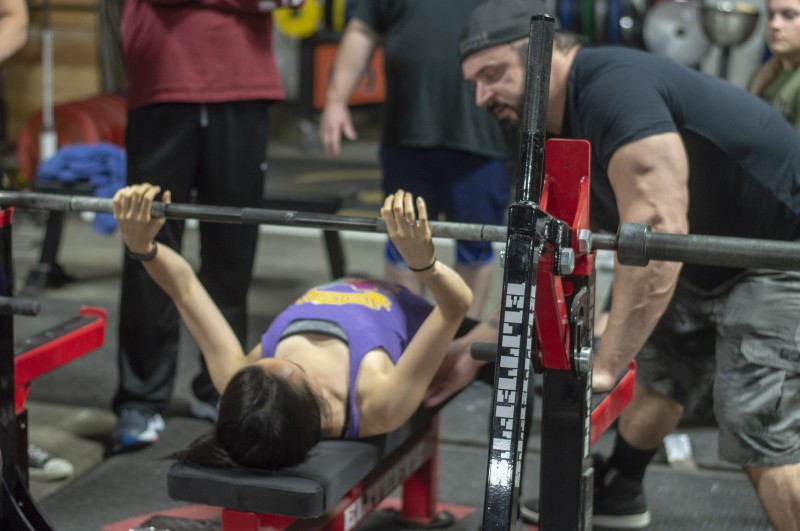
Yes, because you are so unique and special.
To me, this is tantamount to saying you’ve tried training to get stronger and it didn’t work for you, so you're writing the idea off altogether.
It does sound simple enough a thing, but a good number of people who work as coaches or even just try to give back by helping other lifters, while their motives may be good, lack the patience or skill set to teach much of anything effectively. This is where cues get a bad rap. Screaming random, confusing words or phrases at someone while they attempt a max lift will usually do more harm than good. Most of us have had a taste of that and figured out the obvious of ourselves, quickly. But I assure you, there is a better way. I am going to explain exactly how to do it, but first, let’s look at what cues really are. Then we can talk about how to implement them efficiently.
Cues are shortcuts or keywords. They are abbreviated instructions for your body, used to modify and improve a given movement pattern. They work the same way cue cards do: repetition and reinforcement. For a cue to be useful, it should make a something that may be a complex process easier to understand or execute by placing the majority of our focus on that very specific modification.
A cue can be repeated, silently, in your head as you execute it during a movement. It can be verbally cued for you by a training partner, if you have trouble thinking about it during the lift, at first.
There are good cues and bad cues, for sure. The cues, themselves, can be poorly formed, which presents another set of issues, where it seems like the cuing is the problem, but in reality, the choice of cues being used and how they are being applied are the stumbling blocks. A phrase that makes perfect sense and really clicks for one person may not for someone else. Different strokes for different folks, as it were. So it’s important to have multiple means of cuing for the same desired result. I’ve compared notes time and again with good coaches in other sports and even in powerlifting, and the consensus is that it’s best to load your arsenal with multiple options for cues that have the same desired result.
I’ve found the cues I employ most frequently, the primary cues, to work with maybe 85% to 90% of the lifters I coach with little more than a brief explanation of the desired result and maybe a visual aid, providing an example of the cue being used. For online coaching, I have a series of videos demonstrating the use of each cue. In the cases where even visual aid and explanation do not seem to get it done, I use a secondary set of cues. There is more than one way to skin a cat. (Please don’t skin a cat.)
I’ve never worked with someone I wasn’t able to help by prescribing cues to focus on from session to session, and I have run into just about every problem you could fathom via the literal thousands of lifters I have coached, either in one-on-one online coaching, training on my team, or hands-on in a seminar setting. But things didn’t always flow so smoothly.
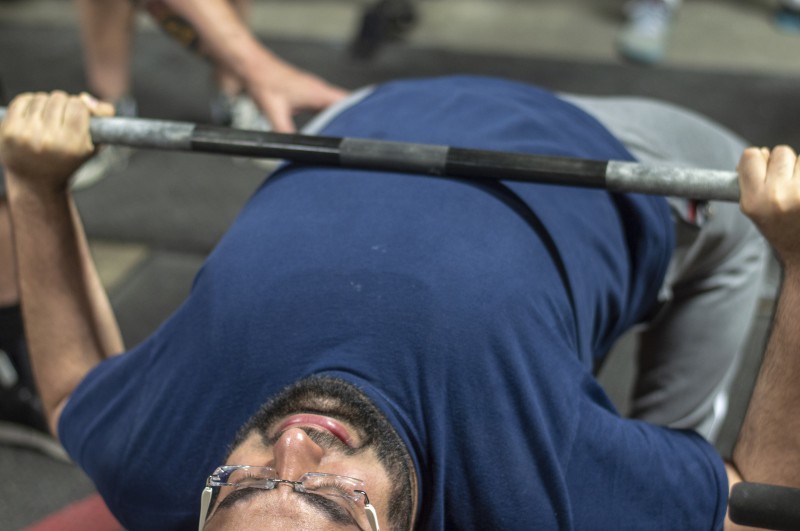
The cuing systems we use now are a result of over 15 years of logical trial and error. I don’t believe there is a better way to do it, or a simpler index of cues than what we have put together, but I will always remain open to that possibility. Staying open to new information has allowed me to learn as much as I have to this point.
As I mentioned earlier, I use the same system of corrective cuing in online coaching that I developed working with lifters in person throughout my career as a coach.
It’s been my experience that a very small minority of lifters will ever be able to cue or reinforce technical corrections effectively while under loads exceeding 90% of their one rep max. Anyone who tells you otherwise, assuming they are not a beginner, is likely very gifted in terms of talent, and so they expect you to just work harder and be like them. Kind of an absurd proposition, if you ask me.
If you do fit into this group, my hat is off to you. You’re probably somewhere on the far right side of the bell curve and you will do well regardless of how you train, as long as it’s heavy enough and progressive.
However—and this is the thing—even if you are in that group, you’d still do better training between 70% and 85% of your max for your main work, at least most of the time, meeting volume requirements and focusing on drilling technique with cues. Doing so will allow you to last a lot longer and continue to make the foundational improvements, year to year, which will eventually allow you to reach your potential. I think this much is manifest if you take a look at any lifter I’ve worked with for an extended period of time.
Before I go too much further, let’s back up and look at exactly how this should be set up. The first thing is to start with a good, proven cue. I’m not going to provide you with a list of specific cues to use for each issue here, though we do have a very thorough index included in the curriculum for our 5thSet Coaching Certification. Rather, I want to focus on giving you the tools to be successful in implementing any effective cue.
What makes a cue effective?
For starters, it should work like a shortcut that kind of tricks the lifter’s body into doing what we want it to, without throwing everything else off. A really good cue can fix multiple issues, just by continuing to reinforce it.
An example of an awesome cue for the bench press might be my “heels to traps” cue. It protects the lifters shoulders, improves elbow tracking, and enables the lifter to use leg drive with efficient transfer while also keeping their butt on the bench. How’s that for killing multiple birds with one stone?
Once we have selected the appropriate cue to correct a given lifter’s technical issue(s), the next question is: how do we best apply it?
The first thing to consider is that we don’t want to overwhelm the lifter with too much to correct at once. So it’s best we limit corrections to one or two related cues at a time. Then we can build from there.
Keep in mind that applying a cue changes a preexisting movement pattern. That’s the whole point, right?
Right. So understanding that, things could very well get harder after adding the cue, at least until you’re able to “grease the groove” of the new movement pattern. This is normal. You may experience it for a few sessions or not at all. Either way, the end result is the same: better movement.
With 5thSet, we use a layered system of coaching, based on a hierarchy of importance. Technical flaws that put the lifter in danger need to be addressed and corrected first. From there we move on to tech corrections that improve the mechanical efficiency of the movement. For the sake of this lesson, let’s say the lifter had an issue with excessive lumbar extension on the bench press, which put them at risk for S/I joint and other lumbar issues. (I’ve covered this problem in a previous article.)
Now let’s say we have already made the adjustments to correct that issue according to the hierarchy of importance (safety over efficiency), and now the lifter is ready to move on to issues with mechanical efficiency.
The lifter is still having issues with getting high enough on their traps to maintain good thoracic extension under a loaded bar, which would allow the scaps to safely move the way they need to during the press. Also, their leg drive is not effective, and bar placement is all over the torso.
Simply learning and reinforcing the “heels to traps” cue, along with cuing “reaching” for the bar with their chest will eventually solve all of these problems. Like I mentioned before, applying these cues under a load in the neighborhood of 90% of the lifter’s max is probably not the best idea. But starting with even 70%, before the lifter understands the physical information involved in applying the cues, is still not the ideal.
I have them start with the bar. I don’t care if they do four or five sets with the bar while warming up in the subsequent session, just reinforcing and learning the cues and how they feel. From there, it’s a matter of preserving the cues and reinforcing them as the load increases.
It won’t take long to get the lifter in the 70% or higher range, while still adequately implementing the cues. Usually within a couple of weeks. Then it’s just a matter of meeting strength volume requirements (Prilepin) in that effective percentage range.
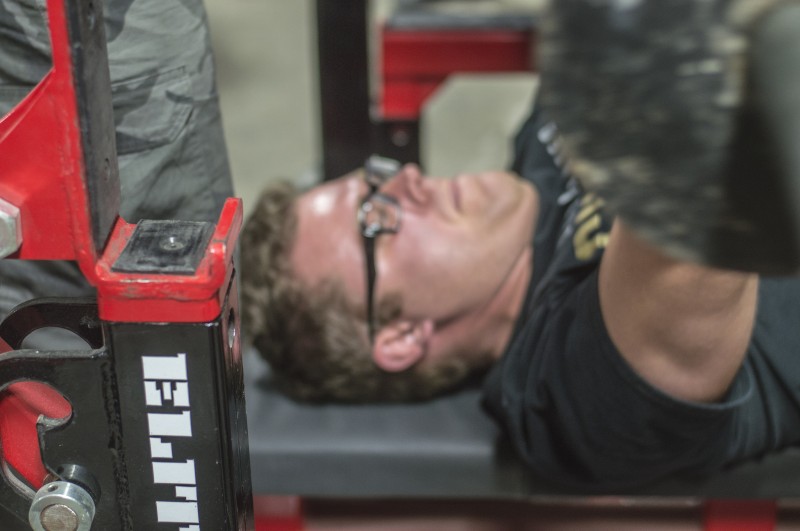
Doesn’t sound like much, but it’s a process that can sometimes take two to three months to really manifest dividends. It doesn’t always take that long; some people are able to integrate cues overnight, but with most, it is a process of gradual improvement. Either way, if the lifter is consistently implementing the cues in training and meeting volume requirements in the 70% to 85% range, they will be able to carry those improvements over into peaking cycle training at over 90% of their max and certainly onto the platform.
That sort of mechanical efficiency is the reason my lifters often get accused of sandbagging and leaving too much on the platform. People are used to seeing convulsing and bleeding during a platform PR, as sad as that sounds. And when they don’t see the lifter falling apart, they think something is wrong. This is powerlifting, not the fucking colosseum. I’ve yet to see some blood-soaked competitor win a meet by plunging a sword behind their rival gladiator’s chest plate. But, like I said, I’m open to new things — so maybe one day.
We have covered how to select cues, how to determine the order in which tech issues should be fixed with cues, how to implement and layer the cues, and now finally let’s talk about when we should absolutely not throw new cues at a lifter.
While they are indispensable tools for coaching a lifter in their training, some cues are not the best in competition. An example would be any that they are not already familiar with. A cue that a lifter doesn’t fully understand can actually hurt their performance in competition. It’s possible to help beginners at meets with cues they’ve never tried before, assuming they are very easy to understand and implement, but for an experienced lifter they can be a recipe for disaster. This comes back to the idea that it’s very difficult to correct technique under a max load, and dramatically changing anything in competition can result in a safety issue and send the lifter’s risk for injury into the stratosphere.
This usually comes down to coaches or wannabe coaches trying to cue lifters they don’t work with as a means to generate business. If you’re going to do that, you’d better keep it pretty simple and stick to helping beginners. This is for the reasons I’ve already explained above.
If I can’t understand what you’re trying to cue and I don’t have any weight on my back, I don’t think anyone is going to be able to figure that shit out under a max load — no matter how loud you scream it.
In training, we learn the cues. In competition, we use them naturally.
This is a topic I could write an entire book about, and I’m working on that. For our purposes here, I think this is sufficient. Hopefully, you found this helpful. If you did, please share it on your social media and save the link to refer back to later.
Everyone can benefit from technical cues, with the contingency that they are employed properly, consistently, and under the correct circumstances — which is more rare than you might expect.
I know. At some point or another, you were minding your own business, sitting on your tuffet, eating your curds and whey, when along came a spider. You may hate them, but I love them. You'd be hard-pressed to find a living thing more polarizing on the planet. Maybe snakes, but they are in the same vein and I love those, too. We see these creatures and we know they are dangerous. Some of us just can't get past that, like it's something primal in our DNA.
People either love spiders and are fascinated by them, or they can't stand them and wig out like little girls and want to crush them instantly when they see them. There doesn't seem to be much middle ground or indifference on the topic, when faced with it up close. They are designed and inclined to kill, but they are also capable of magnificent things: spinning beautiful webs and moving with the speed and rhythm of an impossible dance; sensing dangers so early and acutely they seem to have presentiments before the fact. They are miraculous beings, and though well-suited to kill and consume, they are not at all singular in purpose. A lot like humans.
To my point more specifically, a lot like lifters. I feel like there's a lesson there.
Sure, we lift. It's something we are compelled to do. For many of us it is a mechanism for surviving ourselves, psychologically, and a major part of our identity. For others, lifting is a hobby that came naturally and, though we may not be conscious of the fact, it serves to keep us busy and distract us from the growing nearness of our own inevitable conclusions. But I would hope lifting is not the only thing for any of us. We are also miraculous beings, and though we may be well-suited to lift, neither are we singular in purpose. I love lifting and coaching, and both are strong aspects of my identity (punny, I know). But they are certainly not all of my identity. Not nearly. These may be the things I am most known for, but there is a lot more to me than that. I pride myself on the fact that I excel in many categories, even if most people won't ever really know it.
RECENT: The 5thSet Black Meet and Women's Pro Am Weekend: Back-to-Back Wins
Whenever someone tells me they want me to do a podcast or they want to film a video about me (crazy that it happens, I know, but it does), I automatically assume it will be exclusively covering the topics of my killing and consuming, or lifting and coaching, as it were. However, I'm a personable guy, so I always make an effort to hear people out. Having already covered these aspects of myself to the point of nausea, I grow weary of the repetition. And beside that fact, it becomes boring for listener or viewer, much the same way articles about only lifting become tedious and eventually off-putting for the reader. I mean, how many times can you read about how I think it's a bad idea to max out for YouTube and Instagram, and that it should be saved for peaking or the platform?
Knowing all this, when Kendall Alston and his crew approached me with the idea of filming a documentary about what a normal day in my life looks like—and not simply my lifting or my coaching—I'm sure you can imagine that it hit me like a breath of fresh air. I mean, who doesn't want to do something new? Of course I agreed. After an entire day of filming (I mean an entire day) and months of work on their end, the project turned out to be just that: something fresh. Something new, in an industry of repetition. My hat is off to the guys at Mortal Athlete for this piece. I'm honored that someone thought I was interesting enough to invest the time and resources to put this together.
It's worth mentioning these same guys put together a documentary about my legendary lifter Ellen Stein, and got stories out of her I hadn't even heard before. Apparently she ran with the Olympic torch at one point! Be sure to check that one out, too. On a side note, for any of you who may be interested some of the other things I spend my time on, I recently published a collection of poetry, which is available on Amazon, titled Clues About Ghosts. They touch on that in the documentary also. You can grab a copy today.
If you think this is something your friends would like to see, please share this article on your social media. And, as always, feel free to reach out with ideas for articles, or questions you'd like answered in future pieces. We will be back next time with your regularly scheduled training and coaching advice, don't worry.
Here is the documentary:
5thSet Trial and Error — The Failed Experiments
When Kendall Alston and his crew approached me with the idea of filming a documentary about what a normal day in my life looks like—and not simply my lifting or my coaching—it hit my like a breath of fresh air. This video is the result.
Friday was a sunny day, but not oppressively hot. Unloading all of the equipment from Gene's trailer did make me sweat, though — me and everyone else helping, which was a crew made up of mostly Keyhole Barbell lifters, but also a couple of rag-tag groups of 5thSetters from Illinois and Maine. One of their names you might know: Greg Panora. He insisted on helping, even though he hadn't slept after the drive in.
I never mind physical labor. It makes me feel alive and distracts me from the thoughts and feelings stillness brings. We worked and unloaded everything, piece by piece, out of the trailer and up onto the loading dock of Tedesco's Body Shop. Three monolifts and as many competition benches, deadlift platforms, countless bars, tables, and all sorts of staging equipment. That was the facility I booked for the inaugural 5thSet Black Meet. The gym's employees were very helpful as well. I say inaugural because this would be the first time it has held that title, though last year, just a short drive from where we worked, there was a similar event on the same weekend, just as full of my lifters. This time it was officially my meet. The first of many, I hoped. But would a rose by another name smell as sweet? Time would tell.
We loaded all of the equipment into the building during the afternoon, but had to keep it to one side of the large open floor plan so classes could be run until 8 PM. At that time we returned and finished with the setup. We were out of there by 11, with everything ready to go for the morning but with only eight hours left before we needed to be back.
And back we were. Bright and early, I pulled into the parking lot in the morning with some of my helpers who traveled from out of town and stayed the night at Keyhole. From the second I stepped out of my car, people were hitting me with questions and I did my best to get everyone squared away. Luckily, I have a solid system for coaching at meets. With my formulas for attempt selection, third attempts are multiple choice and the rest is autopilot. It's hard for someone inexperienced to mess things up and, for me, next to impossible. Aside from one of my lifters, Levi Cater, who competed a few weeks prior and just didn't want to miss the meet, everyone PR'd. Most of them on every lift.
Like my heart, Sin Leung, who even after losing another potential 30 pounds towards her total with her very easy third attempt deadlift being red lighted on a technicality, was still able to PR about 70 pounds above her best raw total. It was her first meet in wraps. She totaled 1005. We will take that. Chicago 5thSetter Sandy Jiries started the day with a 72-pound squat PR of 435 and looked like she was on track for an easy 1100-pound total after hitting a 16-pound bench PR of 230. Sadly, she tweaked a pre-existing back strain during warm-ups and had to settle for her opener, which was 47 pounds less than her current deadlift PR. This was all still good enough for a 47-pound total PR of 1050, and the rest is money in the bank for next time. Don Stemen managed to total an easy 1800 pounds his first time without wraps, coming dangerously close to his best-wrapped total and setting the bar nice and high for the next time the wraps come off. For bench and deadlift he broke current PRs, and of course, the squat was a PR, this being his first meet without wraps. My former intern-turned-Canadian-Keyhole-Barbell-nomad Aneta Wilga totaled 870, naked knees, for an unreal 90-pound PR. Michael George-Reichley PR'd his total by 35 pounds, too. Many other 5thSetters kicked ass and PR'd at the meet.
I don't want this to turn into a list of numbers, but I would be remiss if I didn't mention that Will Richards put together his first 2000-pound total. My hat's off to him for that, and to Greg guiding his way with solid 5thSet coaching. I can't say enough how proud I am of Greg as a coach. I'm also very proud to say that, with the help of Gene, Ame, and RPS, the meet ran smoothly and my own people made sure every single lifter who stepped on that platform was safe in the hands of some of the strongest and most capable spotters anyone could hope for. Aside from a bit of confusion about a squatter wanting the mono cracked on his opener, I didn't see one screw up.
Which reminds me: As raw powerlifting has grown in popularity, the amount of freak talent that's come out of the woodwork has been mind-boggling. It's hard to keep up. I'm sure most of you reading this have heard of the young phenom Larry Wheels, but how many of you have heard the name Chris Weist?
Well, you will. At only 22 years old, he came through and smoked a 915-pound American record deadlift that had the entire building on its feet. This secured him a 2080-pound total. He upped the ante and went for 940, which was a near miss, but that will be there before long. I have zero doubt. Or how about Oran Smith, who bested our own Greg Panora (he should've slept instead of helping us unload) with a 610-pound raw bench press at just 28 years old? Keep an eye out for big numbers from him. He's already totaled over 2000, as well.
Like I said, the meet ran smoothly, so most people were out of there before dinner time. Those of us running the show, however, couldn't leave until everything was loaded back into the trailers for Gene to bring home. That added a couple of hours to the day. I was running on only a few hours sleep, hoping for a nap that never came. After eating dinner with everyone, I spent some time with Sin, Greg, and Will before getting on the road to Cincinnati for the Women's Pro Am the next morning. I drove all night just like last year, the chief difference being that it was actually me driving the car this year. My helper from the previous trip was decidedly unavailable, apparently on her honeymoon, having just married a one-eyed longshoreman, whom I must admit looks strikingly similar to a marginally younger (but not young) Sean Connery — like in that movie where he broke out of Alcatraz. Congrats and best wishes to them both.
Meet Report: Back-to-Back XPC Finals Super Heavyweight Champion
But don't cry for me, Argentina. Her hotter, more youthful replacement—Instagram meme queen and big-booty-heartthrob Kelsey Clifton—was waiting with open arms and my Dunkin' iced coffee in the parking lot at the end of my six-hour all-night cruise. This would be my 47th (I think) iced coffee in two days, and I'd taken enough modafinil to cause the skin to peel off of three large men, according to Google. The Pro Am was a blur, clearly.
(I was joking about the modafinil, but not the 47 coffees. I really drank those. Somehow I was still able to coach and actually make myself useful.)
Ellen Stein, the 5thSet matriarch, was lifting in the first flight. Luckily, my friend Jimmy Pacifico and his girlfriend Emily came out to help with wrapping, because I was not on my A game, to say the least, exhausted from sleeping only three hours in about as many days. Big thanks to them both. I was able to hold it together better than I expected, though, and I know she was grateful to have me there. Ellen went nine-for-nine, as usual, continuing the 15 or 20 meet streak of progress, carving out another seemingly impossible 10-pound total PR with 1035 pounds at 132— and she's 65 years old. Needless to say, she won her class and some of the money, which is never a terrible way to end the day.
Jordan Buchla, another 5thSetter out of Hellbent Barbell in Connecticut, was all set for a performance I didn't want to miss. I love that whole crew and facility. Jordan is one of those lifters who are entirely incapable of hiding the joy on their face when locking out a lift. She was glowing for every lockout. It's really hard not to get behind someone like that. Long story short, she was able to add 130 pounds to her total in six months and still leave plenty on the platform.
My motivation here can be summed up in a single sentence: I love powerlifting. People stay up for days straight so they can pretend to be homeless at Coachella; of course, I'm willing to do that and more for the sport and people I love. I wouldn't miss this shit for the world. An incalculable number of "lifters" have come along and professed their commitment and undying love for this thankless sport in the time I've been a part of it. The vast majority of those people don't even lift anymore. I'm still here.
I've still never had it so good.
After the inaugural 5th Set Black Meet on Saturday, I drove all night to Cincinnati for the Women’s Pro Am. My motivation for a weekend short on rest and long on PRs can be summed up in a single sentence: I love powerlifting.
In my early 20s, I spent some time in Austria. Not a terribly long time, but not a short time either. It wasn't one of those "Travel Europe" scenarios, where you're crammed into a bus like sweaty sardines, staying in hotels in different cities every night, and taking in rushed, guided tours throughout the days. Those always seemed like work to me, and I don't need to fly thirteen hours to do that.
I rented an attic apartment in a small town called Kuchl with my girlfriend at the time, Annemarie. We would ride the rail to different places and train at new gyms when we felt like it. It wasn't much hassle to find the places, as long as we knew the names of the facilities so we could ask how to get there at the information centers in each town. We even trained at a gym in Gratz, where Arnold Schwarzenegger lifted as a young man. What was more of a hassle were things like trying to shop for groceries, or asking for directions to a laundromat in the small town of Kuchl, where basically no one spoke English. We had to pick up specific German words for things like milk so we didn't end up with cream, or chicken so we didn't end up with pork. We actually got pork by accident once. It wasn't bad, but it wasn't what we wanted either. And try to explain to someone on the street who doesn't speak your language that you need to find a laundromat — by playing charades and pulling on articles of your own clothing. They will look at you like you're out of your fucking mind, I assure you. But simply say "Wäsche," in this case, and you'll get a nod and a finger point in the right direction.
READ: 5thSet Trial and Error — The Failed Experiments
My point here is that sometimes you have to give in and learn the terminology, just because it makes things easier. This applies to programming terminology for your training, for sure. If you are someone who will hire a personal trainer to walk you through every session then you have nothing to worry about. You can just show up and do what he or she says. That's like if you travel with a tour group and have all your meals in restaurants and hotels. Hell, the hotels even have laundromats most of the time.
But most of you reading aren't going to hire a personal trainer and, even if you plan on hiring a coach, you'll need to learn enough German to be able to purchase milk and not accidentally grab a bottle of cream. In other words, enough terminology so the two of you can communicate effectively. My advice: don't resist this. Keep things as simple as possible, but not a bit simpler than that.
I know there is an entire subset of would-be "coaches" out there trying to make things as complicated as possible so they can establish and demonstrate a need for themselves, to justify their own existence. All this when, in fact, many of them truly don't have much to offer. That's not what I want for you at all. I want you to understand that all of this is not as complicated as some would have you believe. In that understanding, you will be liberated from the idea that you need some interpreter with special knowledge to hold your hand and decipher the next move for your training on a weekly basis. The more you understand about your own training, the freer you will become.
If you run 5thSet, you can think of me as your coach. I can handle the complex parts, but you need to know enough terminology so we can understand each other. Some terms are specific to 5thSet and I'll touch on those later in this article. But first I want to define some universal terms you should have a decent handle on, regardless of the method of training you choose to run.
When you hear terms like microcycle, mesocycle, or macrocycle, don't resist. Understanding them can only help you. I'll make this as simple as possible, but no more.
Universal Programming Terminology
Microcycle
A microcycle is the smallest repeating cycle in any program. These are what most programs refer to as a week. Why not just refer to them as a week, like other programs do? Well, on 5thSet, microcycles are not a week. They are nine days long.
Mesocycle
A mesocycle is a group of microcycles, which are to be executed in a sequence. I can't think of a more succinct way to refer to this type of cycle than to use the proper term, mesocycle. On 5thSet, a typical mesocycle consists of six microcycles, though peaking cycles contain fewer. In reality, no matter the style of training, if a coach can't lay out what a full mesocycle will look like, ahead of time, with a narrow margin of deviation, I don't believe that coach really knows what they are doing. They are probably making it up as they go. The only alternative is that they want to keep you making payments, so they are giving you bite-sized portions of programming, which is all well and good until you can't get ahold of them for a few days and have no idea what you're supposed to be doing. (Sound familiar at all?) The role of a coach is to provide a program and to be present to help navigate problems, if and when they arise.
Macrocycle
A macrocycle is the largest type of repeating cycle in any powerlifting program. It should consist of a series of progressive mesocycles, ending with a peaking mesocycle leading into competition. On 5thSet, this looks like four mesocycles, the last of which is a peaking cycle.
Here is an example of another piece of terminology that is specific to 5thSet, but understanding what it means and the reasons for it could benefit you regardless of how you train.
MSM (Mechanically Similar Movements)
What 5thSetters refer to as "Mechanically Similar Movements" are a huge part of what makes the methodology so effective. Some other common names for this type of movement are "supplemental" or "secondary" movements.
The MSM term when running 5thSet refers to the movement performed immediately after the main work, which is modified in some way that makes it possible to safely add additional strength training volume load while remaining similar, mechanically, to the main lift. This can look like a slightly reduced range of motion, for example, using a board press as MSM for bench press. It could also be a slight variation of the main lift, like using an SS Yoke Bar or front squat as an MSM for squat.
The idea for the first option is to remove the most vulnerable range of motion from the movement, because this will allow the lifter to continue to load additional volume without as much risk for injury. It's important when using a board press or a rack pull—or any reduced range of motion MSM—to make sure to mimic the mechanics the lifter would have from that portion of the movement had they pulled from the floor or benched from the chest. Doing so will improve dynamic correspondence or carryover to the main lift.
The second option is to use a variation of the main lift that changes the emphasis in a way that could prevent overuse but still preserves a full range of motion. The options here are vast, but it's important to make sure that the variation is not too similar to the main lift in this case. For example, using front squat or SS Yoke Bar for a squat MSM changes the emphasis by putting more stress on the quads and upper back. This prevents the lifter from overusing the muscles of the hips and posterior chain, as long as the intensity and volume guidelines laid out in the method are honored.
Hopefully, you learned something new from this article. At very least, I hope it gave you some things to think about. Please feel free to share it and don't hesitate to reach out to me with topics you'd like to learn about in future articles.
Trying to understand programming without knowing the terminology is similar to navigating a country without knowing the language: you can do it, but it won’t be easy.
In creating 5thSet—the method we all know and love, I'm sure I don't need to tell you: there was a good deal of trial and error. Experimentation has always been my thing. I've been persistent from the beginning and always willing to try new things, the only contingencies being that I have some logical basis for what I am trying and that my approach is structured and systemized in such a way that I can be somewhat confident what I am testing is what causes the effects (or lack thereof) I am observing.
For all of the protocols which proved useful and survived a decade or so to be included the first book, and the evolutions of these building blocks which were introduced in the second book, aptly titled: Evolutions—there were many, many other well-meaning ideas which simply did not make the cut. They were tested and, for some reason or other, fell by the wayside. It's important to note, there was always a good reason they weren't kept.
Now, people love to change things. It's in our nature. We see something good and we want to improve it, give it our own twist. I talk about this a lot in the second book because it presents a massive stumbling block to the average lifter, who is not qualified to modify programming beyond the scope of the moving parts of a methodology. Things can get off track, wildly and quickly, even from changes that seem small.
I'm writing this article because when I asked for topic ideas on my social media, this one was the least boring that was even marginally powerlifting related. The person who suggested it led in by asking my rationale behind giving one protocol as an option, and then asking why another was not allowed. I gave a brief, succinct explanation because I didn't think it was enough for an article. Then he suggested I cover a bunch of protocols and idea that didn't make the cut and explain why. Considering what I mentioned above, about people tending to modify programs outside of scope of the method they are using, I thought: why not use this as an opportunity to discourage that kind of mistake? By listing a couple of ideas that sounded good in theory, but didn't work out in practice—I'm hoping I can do just that. And anyway, we learn even more from our failures than we do from our triumphs. At least, we can, as long as we are able to look at them objectively and not be offended by them or make excuses for them.
Failed Experiment #1
Very High Rep Protocol for Squat or Deadlift
For those of you who are not intimately familiar with 5thSet, one of the four training sessions we do per microcycle is referred to as our "Second Pressing Day." The main movement on this day is usually set up to be performed using the Very High Rep Protocol. This can look like 2 sets of 25 rep Wide Grip Bench Presses, 2 sets of 30 rep Incline Dumbbell Presses, or any one of a bunch of other pressing movements with similar rep schemes.
This protocol has worked wonders for a ton of lifters who just couldn't seem to develop a good bench press. That is probably because most of those people lacked the specific muscular development necessary to stabilize heavy bench presses. Doing these can absolutely be effective in that department.
So being logical and reasonable people, such as we are, the next question would seem to be— why don't we employ a similar tactic to improve our squat and/or deadlift? Yes, I've already thought of that, and tried it and tested various ways I could apply to a variety of lifters in a variety of different circumstances and what I came up with was: NOPE!
That's not to say that this protocol can't be successfully applied to squat or deadlift for anyone, ever. Just that it doesn't seem to be useful for the vast majority of lifters in this context. There are a number of reasons.
To sum things up, we seem to be able to handle much more volume for assistance on upper body training than bar-loaded lower body training. This is probably because the axial loads from squat and deadlift cause much more systemic stress/neural fatigue than the upper body work. So applying the very high rep protocol on those lifts presents issues with recovery, in most cases, when operating within the framework of the 5thSet methodology. We've experimented and run into the same issue time and time again.
Luckily that does not present an obstacle for 5thSet lifters, because the same needs can be easily addressed on any lift at any time, using the 75% 5thSet protocol. To learn more about that and all the other new protocols, grab a copy of Evolutions here on Elitefts, today.
Failed Experiment #2
6thSet — A Second AMRAP
Maybe the most easily identifiable piece of the 5thSet puzzle and a cornerstone of the methodology is the AMRAP. You've probably seen some 5thSet titans on the internet, battling each other, week after week, for the most reps on their AMRAP. But, like any useful tool, an AMRAP can easily be mishandled.
Some lifters try to push their AMRAPs beyond their own threshold for technical breakdown. This is a really bad idea. Garbage technique in training breeds garbage technique in competition and both of those propositions put the lifter at risk for injury and minimize efficiency in execution.
Others will not even run the method correctly, just doing some arbitrary number of sets of doubles or triples at whatever percentage and then they will follow that with an AMRAP.
Dumb, dumb, dumb. And the results speak for themselves.
Obviously, neither of the scenarios listed above meet the criteria for an experiment I mentioned at the beginning of this article. But what about a second AMRAP? It's not the craziest idea in the world. If the sets are terminated prior to tech breakdown, it stands to reason that a second AMRAP could provide a little more of the same benefit as the first.
So for a while, I tested using a second AMRAP as an option, in place of an MSM (mechanically similar movement), after the main work. The results can be easily summarized: lifters kept getting hurt.
MSMs seem to work best when partial range of motion movements are used which eliminate or minimize the portion of the lift that puts the lifter at the most risk for injury.
Board presses are a great example of a way an MSM can be an effective means to load more volume, specific to a given lift, without much-increased risk for injury. This makes them a much better choice for MSM than another AMRAP. There are similar MSM options for each competition lift, where the benefits outweigh the risk for injury.
So, the second AMRAP experiment was eventually abandoned.
The moral of the story is stick to the script. If you're thinking of it, I've probably already thought of it. The method works exceedingly well without going outside of the rules and the new book gives enough options to ensure you'll never get bored or stall out. So why mess with a good thing?
Thank you for reading and please share this on your socials if you found it helpful. As always, feel free to reach out with ideas for topics you'd like to learn about in future articles.
Are you thinking about adding a second AMRAP to the program? What about extending the Very High Rep Protocol to squats and deadlifts? If you’re thinking of it, I’ve probably already thought of it.
Maybe you know me. Maybe you know of me as a powerlifting coach. Maybe you just clicked on an article based on the title. Nevertheless, prepare for a trip down memory lane. (Mine, not yours.) I'll tell you that among those who do know of me, I am probably best known for my ability to excel at pragmatic and strategic planning. Remember that part, it's important.
It is a big part of why I am so effective as a coach. These and similar talents were a tremendous help in developing what might be the most effective methodology for the sport of raw powerlifting to date. (Ahem, 5thSet.) But these attributes have also permeated into every other aspect of my life; sometimes for the better and many times for the worse. I tell you all of this, not to brag, but to draw an important story out from the back of my mind and onto this page. You see, there was a time I believed training was to be carried out like a boxing match, the fighter who landed the most blows and remained standing would become the victor. An idea which stands to reason, but that was about all the reason I would allow in my training at that time. Any more, I was afraid, would turn into excuse-making; a means to rationalize sidestepping the hard work of the path I had chosen.
Keep in mind, I was very much a pragmatist and strategic on the long term in every other endeavor in my life at the time, including my diet. But training, I was convinced, was about working harder and longer than anyone else and there wasn't much more to the picture than that.
So travel with me, if you will, dear reader, back to turn of the century— in the winter of the year two thousand, and meet a very different Swede than the man writing this today. Some of the things I'm going to tell you may be hard to believe, but I won't lie to you. I did some impressively stupid shit.
Around this time, I was working as part of a stone setting crew, doing manual labor in cemeteries for about ten hours per day. I'd taken a hiatus from powerlifting and committed myself, entirely, to the idea of becoming a professional bodybuilder and my dreams of glory seemed to be peaking at me from just beyond the horizon. I was already over three hundred pounds with a relatively decent body composition, due to diet and genetics far more than training intelligence. I can tell you that much for certain.
All of my training was done in a long since closed down basement facility called Eastern Athletic Club. It was located underneath a strip mall that still exists in Springfield, PA. There was a Borders bookstore above, where I'd been reading poetry books for free while drinking coffee from the cafe inside for years. Another favorite past time in that store was perusing the myriad muscle magazines available right next to where I'd sit. Those publications are where I was first introduced to the most impressive physical specimen of a human being, possibly ever, Greg Kovacs. He stood about an inch taller than me at six foot, three inches, and cast an imposing shadow over everything in his path, setting the bar for what I believed was possible in terms of muscular development. As fate would have it, through an almost unbelievable series of happenings, we would become very close friends, shortly after this period and on until his untimely and tragic death, in the winter of 2013. It was a devastating loss to everyone who knew him, one of the kindest and funniest men I've ever met. He got me my first endorsement contract as a bodybuilder.
The meat of this story is the training that took place in the that dank, basement facility, down below the bookstore, baristas and beauty salon.
A former Gold's Gym, Eastern was a haven for locals who wanted to sling serious iron and home to quite a few competitive body builders, though, I may be the only one still living today. And that doesn't come as much of a surprise to me, considering the absolute insanity some of us passed off as training. That sort of behavior is usually a symptom of something more troublesome, within. A guy in there told me once, during the maybe six months he was a member, fresh out of state prison, "You don't have to be fucked up in the head to do this stuff, but it doesn't hurt." He was strong; benched 455 for a double his first session out of prison and added almost a hundred pounds to that before getting kicked out of the gym for stealing the wallet of another guy I trained with, Joe Pacini.
Joe had won the heavyweight division and overall at a big NPC bodybuilding contest in New Jersey called the Gold's Classic. He always seemed very level headed and I looked up to him as a competitor. I guess things spun out of control for him at some point, because he was shot to death in his car by police officers in Upper Darby, just after Christmas, in 2014.
With all of this, I'm assuming you are starting to get a picture of the kind of training environment we had in this place. It was pretty intense. For a moment in time, every session was a war against myself, even if I was the only one watching. And I've never been one to be outdone.
Read that last sentence again.
My training was very organized and consistent as far as movement selection and rep scheme, but it lacked any complex forethought, beyond training the target muscle groups within a rep range and weight limit that was predetermined for each exercise. That sounds reasonable, right? Weight limits and rep ranges. Might be something I'd recommend today, even.
No. Here's the catch: if I was still able to get reps within the target range for another set, I wasn't done. And I put no limitation on rest periods.
WATCH: Building Armor-Plated Pecs with Josh Bryant and Jonathan Irizarry
To give you a picture of what this insanity might've looked like on any given squat session, the weight limit was 585 pounds and the rep range was 4-8 reps. So let's say I was able to get on the high end of that rep range for a few sets, which I was able to do during this time period, I could easily start taking ten-minute breaks and keep getting 4-6 for a few more sets, at least. Often, the first exercise of the day on leg day, squats, would keep going until I literally fell into the safety pins trying to get four reps.
I would vomit during these sessions, almost always, and feel like I was going die before even starting the second movement of the night, hack squats. And the punishment continued from there. Hopefully, you're asking yourself why in the holy name of fuck I would ever do this. The answer is that it served as a coping mechanism for the combination of self-loathing, obsessive, violent thoughts and risk-taking which eventually landed me in prison. But I am wide of my point.
The only way I could recover from these grueling, over three hour-long sessions was to train just three days per week and nap during training times on off days. The split was chest/shoulders/triceps on Monday, legs on Wednesday and back/biceps on Friday. I would train at night and have to be up for my job in the morning, so that meant taking a very long nap after work from 5-9pm. On non-training days I would try to make myself go to bed after dinner. My life was largely about eating from the minute I woke up until I fell asleep. Training nights I'd take 50-75mg of ephedrine with 300mg of caffeine and drink an entire bottle of Diet Mountain Dew during the session. Of course, I used anabolics, but so did everyone else and none of them were insane enough to keep up with what I'd do, least of all other huge bodybuilders. I feel like I have to mention what we (most bodybuilders) used in those days, even Kovacs, was less than half of what I hear about the average teenage wiener using who can't bench 300 pounds, nowadays.
Every session started in a similar manner. Chest, Shoulders, and Triceps, for example, started with incline barbell presses with 405 as the weight limit and with the same 4-8 rep range. I would not last as long on these as I did on squats, but there were more movements to cover on that day. You get the idea.
Did this work? Yes. Mainly because I was gifted in terms of recoverability. But this type of training ruined other lifters I trained with inside of a few months.
Would I do it differently if I could go back and do it all again? 1000x fuck yes. I've been paying for that insanity ever since and I know I could've made the same progress without the damage, had I not been so crazy. But when we are in a situation, we don't see things as they are, we see things as we are. During that period, I was chaos. Madness.
Clearly, I've turned things around since then, in many regards, but this is where I was at that time, and it's part of what led me to where I am now; my experience of living as a male human.
The moral of the story is this: even if you're actively training like a lunatic and destroying yourself in the process, every passing moment is an opportunity to turn that shit around. The sooner the better. Take my word for it.
It’s story time. So travel with me, if you will, dear reader, back to turn of the century— in the winter of the year two thousand, and meet a very different Swede than the man writing this today.
This is it. New year, new me. Cliche, I know, but needs must.
I'm done with all of the behaviors and actions I've used to make life harder for myself these past thirty-seven years and, at long last, I am prepared to test my own resolve.
That's right. Like most of you, I have a laundry list of characteristics about myself, which my life would probably be much easier without. So, now-now that the calendar has flipped and I've squandered yet another of the very limited — but also indefinite — sum of formularized measurement metrics of life that I've been blessed with by either god, or fate, or the universe, or chaos: I am finally ready to do what needs to be done.
RELATED: Benchipedia: Dave Tate's Free Bench Press Manual
Another chapter closed in the book of my successive life experiences, and another host of lessons learned along the way. 2018 is going to be a very different year for me. No more obsessing, poetically, about the ocean or traveling, so endlessly. No more Hunger Games-esque love life, complete with a beautiful, female cast, rotating in 3-6 month seasons, each hoping to survive and become a victor.
Nope. Monogamy for me, from here on out, too.
I can probably stop there, huh? Surely, wise reader, you have been able to detect my satirical tone, even without a special font. So, I won't hold you up any longer with fake resolutions. I love my life, vices and all and I'll never change for anyone but myself. That's not going to happen anytime soon.
If I gave up those things, I wouldn't be Swede. Some things you can't give up without changing who you are. Ask Eminem.
But clearly, I'm big on new beginnings. To that end, I will offer you some small advice about life for the new year. Feel free to pare down any area of your life that doesn't bring you joy or the feeling in your gut that you're doing what you should. If it brings you that joy and fulfillment, hold it close and never let it go. Before agreeing to change something about yourself, make sure you're one hundred percent it doesn't do that.
With that said, there is no reason in the world you can't give up sucking at bench press. No one gets joy from incompetence in the greatest lift ever. No one. That's something I can help you with.
In this article, I'm going to cover some of the most common technical errors in the bench press. If the issues I describe seem familiar, they are probably costing you serious poundage from your max and possibly putting you at risk for injury. So let's start with identifying a couple of the main culprits.
No Leg Drive or Ineffective Transfer From Legs
Possibly the most confusing aspect of the competitive bench press is the concept of leg drive. Leg drive is applied under the assumption that kinetic energy can be transferred from driving the legs into the floor, during a press, and this can effectively assist the lift. I assure you this is very possible when executed correctly. In most cases, however, that's not how things pan out.
The problem lies in a series of misunderstandings.
The first one being that extreme lumbar extension can, in some way, help improve your raw bench press. It cannot. Here we have one of those ironic situations where we attempt to improve something and end up making it much worse for ourselves. Lumbar extension doesn't shorten the range of motion for the press. (Thoracic extension does, but that's mid-back, not lower and I'll get to that.) It also fails to help with leg drive. Lumbar extension actually makes it nearly impossible in most cases to effectively transfer energy from your legs to the bar during a raw bench press, and it can increase the likelihood of S/I joint and low-back injuries. Going far beyond neutral with the lumbar spine makes it difficult to keep the pelvis neutral when feet are tucked, and so it changes the force load at the S/I joint in a way that can cause sprains to that joint or other injuries to that area. It bears repeating that this expensive list of risks won't decrease range of motion or help with leg drive at all.
The second misunderstanding is that leg drive in the raw bench press is a conscious thing which should be "turned on" when you begin the concentric portion of the movement. This is partially true. It should be turned on, but that has to happen before the bar comes out of the rack. It's reflexive. For effective leg drive to be applied, the lifter's torso should be braced, hard, with legs driven, the entire time that bar is in play. If you're doing that, leg drive will do its part. Don't worry.
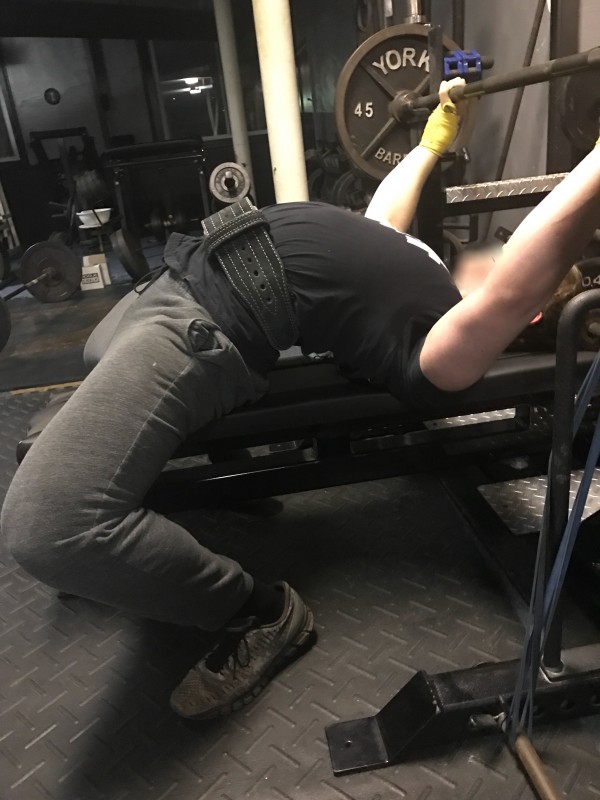
Incorrect
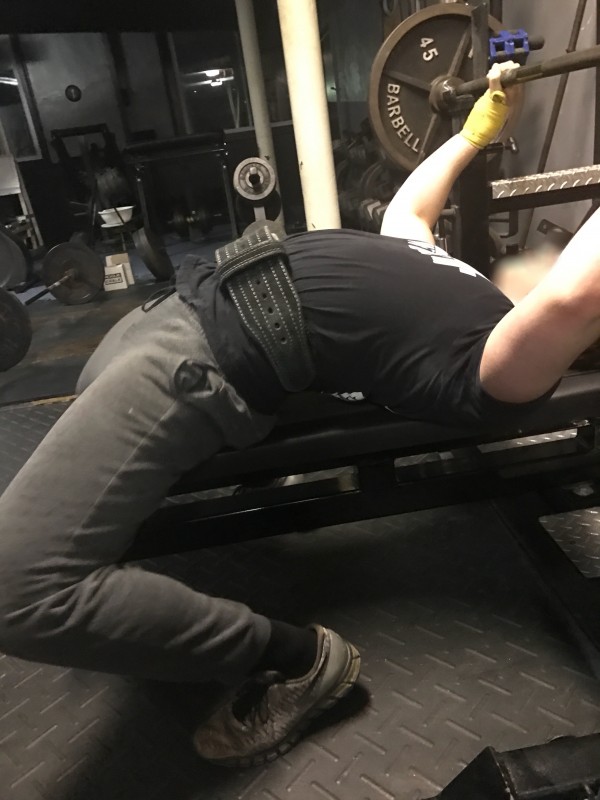
Correct
"Losing a Shoulder"
Ideally, the scapula will remain retracted and depressed throughout the bench press. This requires thoracic extension which will reduce range of motion and simultaneously promote optimal mechanics for the press.
"Losing" one or both shoulders during the concentric portion of the bench press can cause unnecessary failure on a near max attempt in nearly any range of the movement and also puts the lifter at risk for shoulder or pec injury. "Losing a shoulder" is when a shoulder blade comes untucked and protracts during the press. It can put the pec major in a potentially vulnerable and ineffective mechanical position, while also destabilizing the shoulder. It's a bad deal all around.
Sometimes this can happen as a result of upper back underdevelopment or weakness, but usually it's due to an ineffective set up or improper cuing.
I've made a video for the cuing system I use to solve both of the technical problems listed in this article. The cue is called "heels to traps" and I think I've done a fairly good job of explaining how to apply it here:
In review, the lumbar spine and pelvis should be nearly neutral, the lifter should be full and braced and his feet should be driving him up onto his traps before the bar is un-racked.
This simple checklist-style cuing system works wonders and is easy to integrate into your training. Obviously, there are other cues which can be helpful for individual needs, but simply doing what I outlined in the video can make a huge difference, in most cases, correcting the tech issues that rob the most poundage from your bench press.
Hopefully, you found this article helpful and in 2018 your bench press will hit the stratosphere and you will win the lottery eleven times. If any of those things, it seems, are true, please feel free to share this on your social media. And never hesitate to reach out to me with article ideas for the future.
There is no reason in the world you can’t give up sucking at bench press. No one gets joy from incompetence in the greatest lift ever. No one. That’s something I can help you with.
Reason. It's how we form logical conclusions or judgments and generally solve all kinds of problems. Reason is something that separates humans from every other species on the planet. We want to understand the "why" and we want to know if we are able to exert influence on that.
Reason allows for forethought, and forethought allows for planning and preparation, both of which allow us to go further than we've been able in the past.
No other life form seems to have such an intrinsic need, or even any real use, for a complex or deep understanding of the reasons behind the things they experience or observe. Not the way humans do. It's the way we are wired and a huge part of how we've subjugated every living thing around us and bent those things to our own will, and to our own purposes.
RECENT: Sequencing Assistance Work
Humans want to figure things out and more than that. We want to use this information to further increase our sense of control and influence. But really, it is the complexity of our thinking that separates us. It isn't as simple as just understanding cause and effect. On a surface level, even horses understand that concept.
A horse is bothered by flies all day long.
It's hot and the bites hurt. He tries to move around because he understands on a very surface level that the flies are causing him pain and he wants to get away from them and that. But female horseflies will chase and keep on biting if they don't get to feed on enough blood with the first strike. The more the horse moves to try to get away, the more carbon dioxide he exhales. Horseflies are attracted to carbon dioxide, so here come some more. The horse cannot think far enough ahead to outmaneuver the much weaker, thoughtless horseflies. So while he understands that the flies are causing him pain, he's not able to form an effective plan to deal with them.
Enter Human. Lucky for the horse, Human is sympathetic to his plight. Human uses sprays, gels, and ointments on the horse to repel those flies. Human uses fans, strategically placed, to control the air and keep them away. He provides the horse with some solace in the shade, where many types of flies will not follow. Human is quite a few steps ahead of both the horse and the flies. Human has reason and forethought.
If Human were to wander into the Okavango Delta, a lush wetland near the Kalahari desert in Southern Africa, the lions he'd see in that area are the largest in the world. Truly fantastical creatures and magnificent killing machines, but they don't think too far beyond their next meal.
Approaching one in an attempt to explain that he is, in fact, a member of the dominant species of the planet would show a striking lack of forethought and all but ensure him becoming that next meal the loin had been laying around thinking about all day. But Human has run into this problem before. He recognized that these beasts were physically superior predators and, by thinking a few steps ahead, he was able to come up with ways and means to avoid getting eaten. Eventually, he developed weapons that made him more dangerous than the lions. Still, the few that remain are sprawled out in the shade, thinking about lunch and not much beyond that. They function on instinct and in very simple, usually single-step thought processes.
Marc Hauser, director of the cognitive evolution lab at Harvard University, is quoted as saying, "mounting evidence indicates that, in contrast to Darwin's theory of a continuity of mind between humans and other species, a profound gap separates our intellect from the animal kind."
In other words, we aren't just the most intellectually evolved version of our evolutionary predecessors, we are in a class of intellect all our own. We possess a good deal of capacities which support this line of reason, not the least of which is the fact that we are the only species able to identify — wait for it — a line of reason.
As humans, we have used reason and forethought to develop societies and civilization. We specialize and dedicate our individual efforts to specific fields. This has allowed progress on a scale which would have been impossible otherwise.
I am a powerlifting coach. My job is to consistently control variables in a way that will eventually result in the most favorable outcome for my lifters, considering longevity and performance in competition. So, I use logic and reason to predict and plan as many steps ahead as possible. A lot of people in my line of work don't operate in this manner. In fact, there are a good deal who think more like horses than humans. Something hurts? React to it.
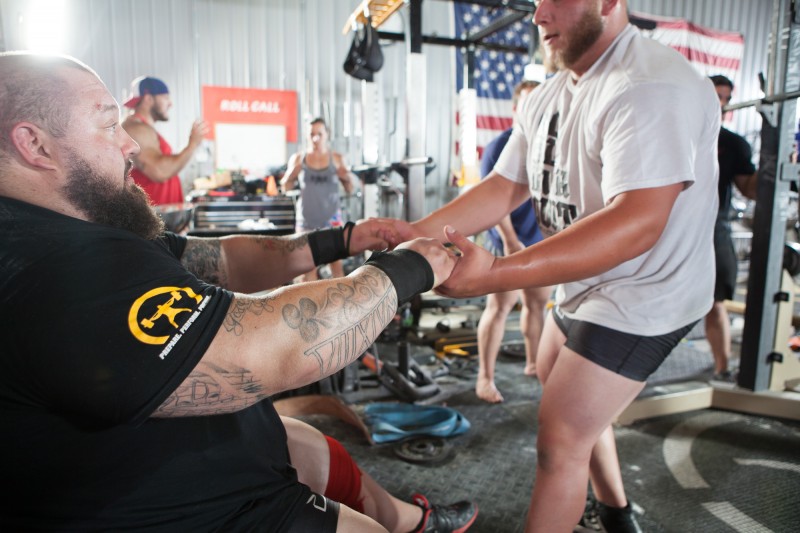
There is no complex forethought, just very simple, single-step thought processes like the lion.
Coach:
"Here's your workout for next week. Do more weight than you did last week and pick a different movement. We will have you go really heavy, because if you train heavy enough, you'll get stronger."
Lifter:
"But Coach, I have tendinitis and can barely bend my arms, because we've been training like this for six months. How am I supposed to keep training this heavy?"
Coach:
"Sounds like we need to pick a variation that's easier on your elbows."
Lifter:
"Fuck this, I'm running 5thSet."
At least, that's how I like to envision those interactions ending. Now, for "coaches" who are essentially programmers, I'm sure this next part will be hard to read.
The reality of it is this: one aspect of coaching is identifying the needs of an individual lifter. That much is undeniable.
This can look like identifying what phase of training the lifter should be starting in relation to competition (when selecting programming), identifying a weakness (most of which will come out in the wash when the lifter begins to use a balanced program with activation work before each session anyway) or, by far the most important individual difference, identifying technique issues which do not maximize the lifter's potential considering that lifter's unique physicality or which put the lifter at an unacceptable risk for injury.
But when it comes to customizing and entirely reworking programs on a daily or weekly basis, based on some type of feedback, and citing "individual differences" as the reasoning behind the need for it, I think that's a bit of a stretch. This type of scheme is great for client retention because the lifter has no idea what to do next and so he must continue to pay the programmer, but it's counterproductive to the lifter's progress more times than not.
It's short-sighted and if changes need to be made on that scale, on a daily or weekly timeline, that's more likely evidence of the "coach" being inept than it is of the client getting really-extra-super-duper-good service. Remember, Human thinks further ahead than the horse. It's alright for the lifter to function as the lion or the horse in this context, but the coach has to be the human here.
If a coach has a good handle on concepts like specificity, volume loading, fatigue accumulation, the neural consequences of that fatigue being accumulated, the longterm delay training effect, and most of all, the fact that what a lifter is capable of doing within a session and what a lifter needs to do within a session to improve (these are separate cities with a valley between them) then, it becomes fairly easy to lay out a plan. It's a plan with a narrow margin for error, which is safe and effective on a timeline of months, not days or weeks.
I realize powerlifters are all lions, beasts, and savages, but let's not lose sight of the forethought and reason which have set us above every other living thing on the planet, simply because we choose to lift weights. Let's go with a plan that respects the big picture and not just the next meal.
I realize powerlifters are all lions, beasts, and savages, but let’s not lose sight of the big picture.
I'm sometimes asked questions, the answers to which are too complex for me to effectively cover in passing conversation; or to type out, again and again, to each person who messages me. So I will usually draw the asker's attention to the fact that I've written several really thorough books on these subjects, books which do answer everything they are asking me, usually in great detail.
But some people are broke or they have no sense of logic or priority, or work crazy hours and have kids or some other obstacle which makes purchasing and reading a book an endeavor all its own. It is what it is. Those people need help, too. I've been a member of that group in the past. This is the chief reason I've provided over 100,000 words of content via my column, here.
RECENT: An Argument for Specificity
These articles provide bite-sized, easy to chew bits of information; Cliffs Notes, if you will, on specific powerlifting related topics, free of charge. More than that, when people ask the type of question I was referring to earlier, I am able to provide a complete answer by simply linking them to the appropriate article. How convenient is that?
(It's pretty fucking convenient.)
Today I'm going to cover a few common questions regarding assistance work and the concept of the "law of accommodation"; and finally, identify the use of bands, chains and specialty bars for assistance work.
One of the more common questions I get regards how and when assistance exercises, and the protocols used for them, should be changed or rotated, both in general and specifically when using the 5thSet methodology. This is such a popular point of confusion, due to a pervasive misconception which finds its roots in what is usually referred to as the "law of accommodation," more precisely the ham-handed approach some popular methods of training use to address said "law."
To answer this question we need to get to the root of that misconception. The problem is not with the law, itself, but rather how the potential obstacles it presents are usually handled. Or, I should say mishandled.
The law of accommodation states, what is essentially a reiteration of some of Prof. Yuri Verkhoshansky's early writing, that a training means can lose its potential over time.
Now, a "training means" is defined as any exercise performed according to a given system or protocol. So, Triceps Extensions, performed for a hypertrophy protocol, or let's say three sets of twelve repetitions, would be considered a training means.
I should also explain that the term "training potential" is defined as the limit of efficacy for a given "training means" or system. So, if you were to perform those triceps extensions, using that hypertrophy protocol over a very long period of time, that training means would probably work well for awhile and then eventually, gradually become less effective. This is pretty simple stuff, right?
Maybe not.
Somewhere, someone decided (won't point any fingers, here) that the solution to the problem presented above was to change the training means a given lifter would use every few weeks; in some cases every week. Eventually, the idea became accepted that the training means, itself, was less important than the fact that the means was changed, and frequently. (Unfortunately, this is categorically untrue.)
Things progressed to the point where exercise selection for many became arbitrary, to the tune of "What variation do you feel like doing for squat today?" (It doesn't matter what you feel like, by the way, in case I've ever been unclear about that.)
The situation I described above probably sounds familiar to you, but it presents far more problems than it solves.
- Arbitrariness has no place in your training.
- The training potential for a training means actually increases over time before it begins to gradually decline (think months, not weeks). So, if you're changing your training means every week or every three weeks, you're never getting nearly what you could from any of them.
- If the subsequent training means used does not possess a greater training potential than the means used prior to it, it will not be effective. Read that again. This is why we don't just start with, and rotate into, all of the training means with the highest training potentials. A) The cost/return ratio would be devastating. B) The roads from there don't take you anywhere you'd really want to go. That is unless you're into doing different exercise variations and rep schemes without really getting much bigger or stronger.
Here we see the problem with randomness: it sets up the lifter to stall out, and much sooner than they need to.
Understanding all of this, what is the best solution? Don't worry, dear reader, I would not drag you this far to leave you hanging.
If you've read my most recent article, you know my stance on specificity for the powerlifter — that the lion's share of focus or volume load should be dedicated to the competition lifts and, furthermore, this type of specificity should be honored year round. You'll probably also remember that specificity in terms of training intensity is something which becomes more of a priority as a powerlifter gets closer to competition. So with all this, we can see that first, we should limit exercise selection for our "main work" in order to honor the year-round demand for specificity, which leaves us with only intensity and volume load as modifiable factors to change the training means.
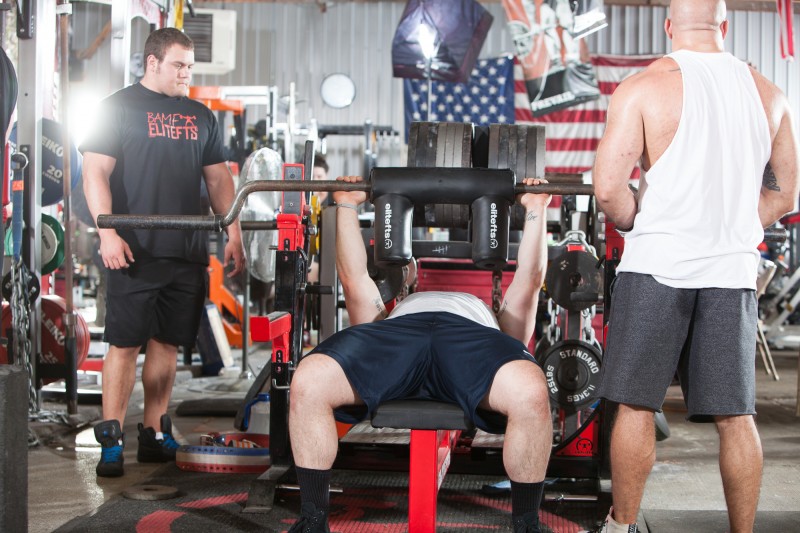
Given what we've just learned, it seems like we would want to start with intensity lower for the main work and move on to gradually more intense means throughout each training cycle. The 5thSet protocols do a very good job of that within the course of a mesocycle. From a high-level overview, we'd see the same is true throughout the course of an entire macrocycle (about six months).
So far, this is all pretty cut and dry. But things get a little more complicated when we look at how assistance work will fit into this picture. On the bright side, since we've already met our requirement for specificity via the volume load and intensity prescribed in the main work, the door is now open to address the second half of the questions I will answer with this article: how specialty bars, bands, and chains can be used as an effective piece of the 5thSet methodology puzzle. Or the puzzle of any method of training for the sport of powerlifting, for that matter.
Assistance work should be broken into two overarching groups, one being significantly more impactful than the other. The first and most important group would be secondary movements, which are referred to as MSM's or "Mechanically Similar Movements" when operating within the confines of the 5thSet methodology (which every powerlifter should be doing). A good example would be performing board presses as an MSM for bench press, after the main work. The second group would consist of both compound and isolation exercises which are not similar to the competition movements.
Since we have more freedom in selecting exercises here, we can begin to effectively implement those specialty bars and even the bands and chains I'm so often asked about. But how?
Accepting that the initial training means used must over time be exchanged for those with greater training potential, we can see that we must start with something which may have only a moderate training potential. These training means can be used to develop characteristics, like hypertrophy, which will support the development of other goal characteristics, like maximal strength, via the use of an enhanced or more intense training means in a subsequent mesocycle.
If we plan everything out correctly, we will use the means with the highest potential in the mesocycles just prior to competition. After competition, we can very easily reset our MSM's back to a moderate training means and begin the process of this sequence once again.
Specialty bars can be used as excellent choices for MSM's for the competition lifts. The Safety Squat Bar, for example, can be used as an excellent MSM for squats and performed after the main work in that session. These can be used and rotated according to the needs of the lifter throughout the course of a macrocycle with respect to the need for a gradually increasing training potential.
WATCH: Table Talk — Should You Train Assistance Movements to Failure?
To be clear, I believe accommodating resistance devices like bands and chains can be used to create training means which possess the absolute highest training potentials for the powerlifter. But there is a time and place for that, and in my opinion that rests within a peaking mesocycle, immediately prior to competition.
My MSM sequence system was built, and operates, upon the axiom that any training means does, in fact, lose it training potential eventually; and so, should be replaced in sequence with training means with gradually higher training potentials. But it also addresses the fact that the training potential of a training means takes time to develop.
This is all covered in the 5thSet Evolutions book in detail like I said, but these general principles and the information I've laid out here can be applied to any method of strength training.
Sooner or later we've all got to wrestle with the ghosts of our own failing identities as lifters. We all will reach a point where further progress becomes, or at least seems, impossible. I don't know about you, but I'd much rather do that later than sooner. Sequencing assistance work in the manner I've described is one tool to help make sure that will be the case.
How and when should you perform assistance exercises? What protocols are used for assistance work? Should exercises be changed or rotated? What about bands, chains, and specialty bars?
You might be surprised by some of the topics I am asked to write about. I'm a powerlifting coach, but quite frankly, most of the suggestions I get are marginally infringing on the periphery of powerlifting-related, at best. That's not to say none of these subjects interest me. They do. And I'm comfortable offering advice on them.
However, while these may be interesting ideas, there is usually not a lot to go on about which is within my scope. Meaning: I don't think an article is there. One example I've been asked for a few times is an article about my general recommendations for strength training for rugby players. Rugby players benefit from both types of strength endurance (linear/non-linear) as well as starting strength, explosive strength, maximal strength and at least a moderate level of muscular development. All of these capacities are effectively addressed throughout the course of a typical 5thSet mesocycle and so the method can easily be modified to suit the strength needs of a rugby (or similar) athlete by reducing total assistance work volume and running the program that way. I've done this with great results in the past when I was still splitting my focus and working with athletes outside of my own forte. That is the extent of my very general recommendation for strength training in rugby players and about as much as I feel qualified to offer. About a half-paragraph. Much more important than the strength training, in these cases, is the sport-specific work they will do in practice. That's how come I glaze over topics not directly related to my field of concentration.
Most people take things at face value. They do not possess the requisite skill set to dissect and critically assess facts effectively. It isn't good or bad, it's something that just is. Most are wired differently than I am, and so their lives are much more simple than mine. Sometimes I envy them. Even a quick explanation like I gave above can be very helpful. So I do understand why my inbox stays full and I always make an effort to respond when I can. But I can't let much of my focus shift away from the fact that where I excel professionally is in my own lane, as a powerlifting coach.
So I decided to write an article about just that: specificity.
Staying in my own lane and keeping a laser focus on pursuing excellence in the sport of powerlifting is what has allowed me to rise to the top of my field as a coach; specializing, not generalizing. I think the same is true for most people in positions similar to my own. The best brain surgeons are probably not splitting their time between surgeries and law school.
Common sense, right?
Specificity is a term with a broad range of types, all of which are fractal in nature. They are all reiterative, though each is applied on its own scale. For the remainder of this article, we will examine all of these which are relevant, and how they apply to training for the powerlifter.
Exercise Selection
The first type of specificity we should look at refers to keeping the competition lifts, themselves, the main priority in training, and dedicating the lion's share of focus or volume load to them. This type of specificity should be honored year round. It is sacrosanct, in my opinion. The competition lifts should always be treated as the most important movements used in training.
While the protocols used for these lifts may shift slightly throughout the course of a training year, with respect to proximity of competition, the lifts themselves should always remain preeminent. Squat, bench press and deadlift are all we have to do in a powerlifting competition, and so, most of the training we do for said competition should, logically, consist of those lifts.
Very few lifters have what I would consider proficient technique in the big three lifts. Understanding that, the only effective way to improve technique I am aware of involves consistent reinforcement of corrective cues while performing those lifts throughout the course of normal training.
WATCH: Table Talk with Swede Burns and JP Carroll — Keeping Good Form Through Every Rep
But some lifters do have great technique. Would those individuals be exempt from such a need for this type of specificity in their training? My answer to that questions is absolutely not.
Even the most beautiful technique will degrade over time if it is not practiced and correctives are not reinforced. If you are telling yourself that you know of some lifters who have good technique and they rarely perform the main lifts to competition standard in training, I would offer that their technique would be much better if they honored the specificity I am referring to here.
Remember when I said sport-specific work was more important than strength training to the rugby player? The sport-specific work is the strength training for the powerlifter. Or, at least, the exercise selection for it should be.
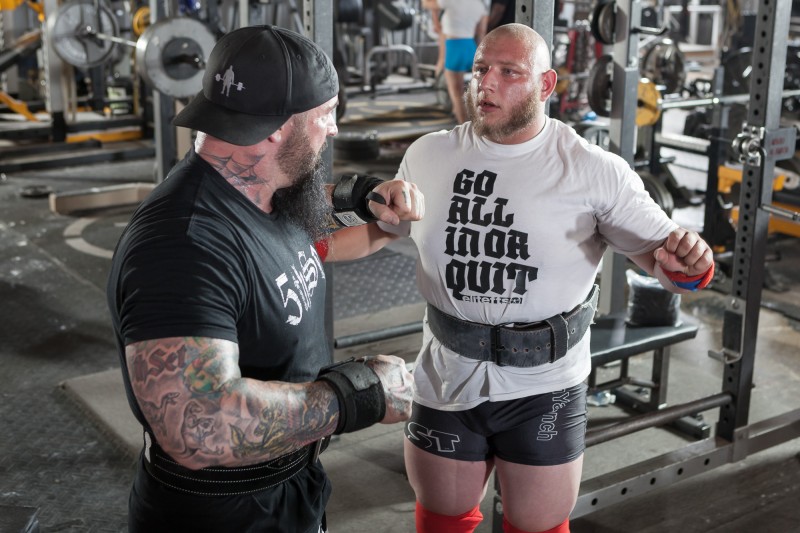
Training Intensity
The next type of specificity we need to consider refers to training the lifts in the intensity ranges which will be used on the platform. While this is very important, it is something that becomes more of a priority as we approach competition.
Quite frankly, taking heavy singles in training year-round is not the best way to develop an athlete for competition in the sport of powerlifting. There are a bunch of reasons for this and in order to appreciate them all, we need to take a look at the bigger picture.
Technical proficiency is a capacity which is most easily developed and maintained while training in percentages ranges slightly below those we should ever see on the platform. It is very difficult, if it is possible at all, to make technical corrections in the 90-100% of 1RM range. Yet, there doesn't seem to be any down-side to training at intensities in a range marginally lower than those figures. Doing so allows the lifter to safely elicit the same or better strength adaptations and get much more practice executing the lifts while providing far greater opportunity for repetition and reinforcement of cues via increased training volume load. If we look at Prilepin's Chart, we can see those volume recommendations for a lifter using 75% of 1RM are roughly triple those for a lifter using 90% of 1RM.
Improving technique is a process which takes some time. It usually does not happen overnight. We've already established that most lifters have plenty of room for improvement in this regard, but even those who don't will benefit from training in ranges of intensity where technical breakdown is less likely. In my opinion, lifters will develop most effectively, all around, training the lifts in the 70-85% range anytime they are not in the process of peaking for competition. A peaking cycle should only make up approximately the last six weeks of a six-month macrocycle, so that should give you a picture of how often I think a lifter should be lifting in the 90+% of 1RM range (the range we use on the platform).
Hypertrophy
Hopefully, no one reading this will be surprised to hear that hypertrophic adaptations are a very important part of development for any powerlifter. There is not much room for contention on this topic, but I am open to hearing any opposing argument to that end. Muscle is what we use to lift weights. It's both protective and assistive.
With that said, all hypertrophy is not created equal. The hypertrophy we develop doing isolation movements or various other assistance exercises is good. However, lift-specific hypertrophy, stimulated by performing the competition lift (or similar) in an appropriate rep or intensity range is much more useful. So this is another consideration.
Am I suggesting that we all only squat, bench, and deadlift in training and vary the rep ranges? No. Of course not. I have very specific (SEE WHAT I DID THERE?) recommendations for everything from the activation, to the main, to the assistance, to the corrective, to the recovery work a powerlifter should perform in training and even competition, and I have covered all of those in great detail in the two books I've written on the subject. They are both available on this site, by the way. Shameless plug, IDGAF.
I hope you found this article helpful and it gave you some things to think about regarding your training. If that is the case please share it and feel free to reach out to me with anything you'd like me to write about in the future.
Staying in my own lane and keeping a laser focus on pursuing excellence in the sport of powerlifting is what has allowed me to rise to the top of my field as a coach; specializing, not generalizing.
A question. What have you heard about me? Apart from the muttering, under breath, that surrounds my skill as a powerlifting coach — dear reader, what have you heard?
You might have heard it whispered that I am a tireless debauchee. And that's good, I like that. Because as history repeats itself, whispers are exchanged for sighs, and whatever face accompanies my own seems to soon disappear, anyway, which lends breath to a new round of whispers. And well, before long, a self-sustaining economy of self-fulfilling prophecy is established. Or so it would seem. But maybe I'm chaste as a fucking monk. (There is only one way to know for sure, and I would not recommend that.)
Nevertheless, this all likely held some sway over the fact that when I posted on Facebook last week asking for input on what topics I should write about for my column, the clear champion was the issue of sex within close proximity to competition and how it should be handled. I agree this is a topic which needs to be explored objectively, and I believe I am truly the man for the job. So here we are.
RECENT: Hunger Is Not Enough: Attempt Selection
As is usually the case, it's best we start at the beginning.
Athletic competition is nothing new. The ancient Olympic Games are traditionally dated to have begun around 775 BC, which has us creeping up on 3000 years of engagement in recorded history. The controversial concept that pre-game visits to Poundtown might hinder sports performance dates back just as far.
Experts in those days are said to have suggested athletes not engage in sex prior to the games, yet it seems almost no one got the memo. In fact, it's highly unlikely anyone got much sleep in the Olympic village. It was a giant, tented encampment, where parties continued into the small hours, every night, including hundreds of prostitutes (all male), who worked their asses off until the sun came up. So, while there is some conflict there, we can use our historical imaginations to put together what actually happened.
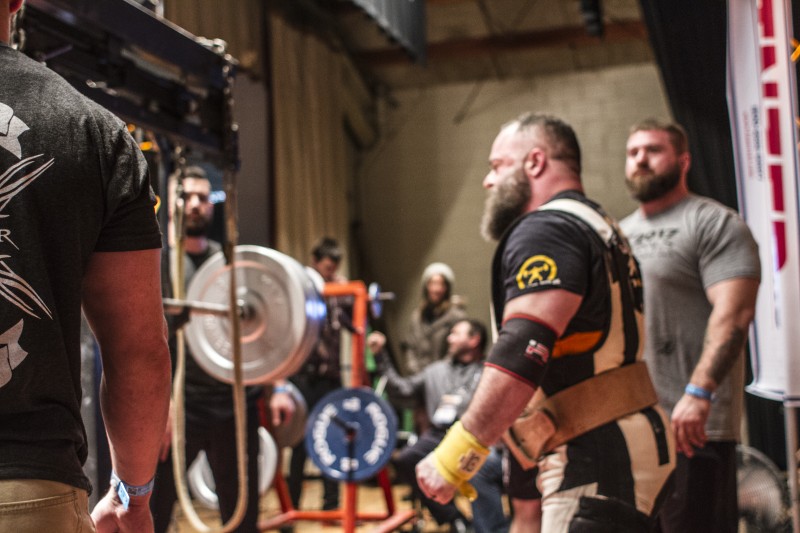
Married women were forbidden to attend the ancient Olympic Games (conveniently) and if they managed to make their way somehow to any part of the event grounds, they were rewarded with an all expenses paid, one way trip off a cliff, directly down to their own dramatic conclusions. And we know how women love to jump to conclusions, so one can assume this happened rather frequently.
Females were not excluded entirely from the games, though. In fact, all the single ladies were welcomed with open arms; more than likely as fodder for the orgies, but at least ostensibly to find husbands. This is all in spite of athletic recommendations to abstain from sex around the competition.
It is worth mentioning that women were allowed to compete in games of their own, which were an entirely separate, though well organized affair. A festival called Heraea: to worship Hera, the goddess of women and marriage (also married to her own brother, incidentally), consisted of entirely female competition. The "Women's Games," if you will.
Mostly young spartan girls competed in these games, which were really just foot races on a track not quite the length of the men's. Spartan women were encouraged to compete and train alongside the men (which they did naked), because increased athleticism was thought to breed better soldiers. And there is reason to believe these female athletes were just as sexually active before and even during their games as their male counterparts. Again, in contrast to what was suggested at the time.
Fast forward 2700 or so years to the 2016 summer Olympic Games in Rio. Organizers distributed just shy of a half million condoms during the games or over 40 condoms per person. The conventional wisdom among coaches remains that abstaining from sex is the best bet for performance, but so does an apparent stark contrast between recommendation and practice.
If we look to the scientific community for help on this matter we are decidedly underwhelmed by what is available. The only systematic review of studies conducted on the topic of sexual activity and athleticism I'm aware of looked at a total of just nine studies. Yes nine. Out of 512 references, only nine studies met the inclusion criteria (that the studies were regarding athletes having sex prior to competition, and if comparison was made it was to athletes abstaining from sex, and that an outcome on performance was included). Even the nine studies that made the cut had some serious issues. For example, none considered the role of confounding factors, none observed acute exercise or measured hormonal modification caused by sex in this context, a few of them were so poorly designed they did not use appropriate scientific method or reflect real life situations well, meaning they had little or no external validity and the list goes on. So, the conclusion of this review should be obvious without even reading it, but I will share with you my synopsis, since I did:
As of now the topic has only been poorly investigated, scientifically, but even the garbage quality literature available does not support the concept of a negative impact on performance being caused by sex, up to as close as 10 hours from the athletic event. So while the same recommendations survived 2700+ years of competition, there doesn't appear to be very good reason for that. Good thing, because basically no one listened to it.
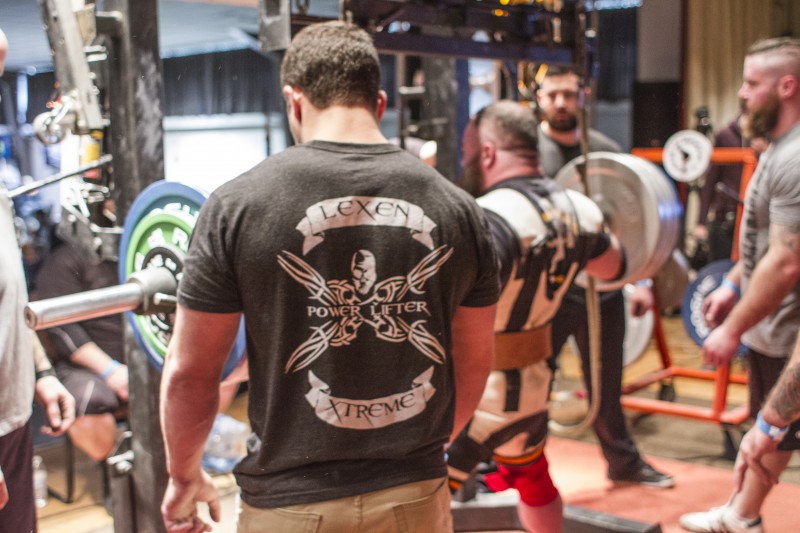
Getting to the bottom of this is a problem which is multifactorial on both ends. The frustration of going without sex for more than 24 hours is probably going to be more detrimental than any potential negative effect the sex would have on performance, due to the psychological and emotional implications of abstaining in people who are regularly sexually active (like most athletes). Psychological and emotional stresses aside, there are some awesome physiological benefits to banging which we may not want to miss out on.
Sex improves sleep, for example, in a number of ways- and these effects can be plenty valuable to your regular training, not to mention the night before competition. Orgasms reduce cortisol, which is a stress hormone, so that effect is welcome. Sex, itself, stimulates the release of oxytocin, a hormone which can help establish an emotional connection with your partner and mediates those orgasms. And we know what happens after orgasms. (Well, some of us do.)
We fall asleep more easily.
According to a 2003 study in the journal "Regulatory Peptides," oxytocin released in the brain under stress-free conditions naturally promotes sleep. I'm sure some of you females reading this article are echoing a sentiment to yourselves I've heard from many partners over the years: that you don't feel drained or sleepy after sex the way men are known to — what the French refer to as "le petit mort" or "little death."
WATCH: Table Talk with Swede Burns and JP Carroll — Keeping Good Form Through Every Rep
Well, it may surprise you to hear that women actually have a gender-specific leg up when it comes to sleep after sex. This arrives in the form of elevated estrogen levels, which, in women, can enhance REM sleep. That suggests sex has the potential to improve sleep quality, at least for the ladies.
So, while the scientific jury is still out on the issue of sex in near proximity to competition (and likely to remain so for some time), I've been happy to explain the few things we do know, and now I'll get into the more plentiful things we think we know. I will outline my current position and recommendations on the topic in just a bit.
Generally and hypothetically at this point, regular sex seems to have a net positive effect on performance right up to as close as 8-12 hours from competition. After that, things get a little nebulous, and anecdotal reports (which are really all we have) begin to conflict. If we separate by gender, there are some interesting things to note, however.
This week I conducted a survey of 48 strength sport competitors who have had sex within 12 hours of competition. The vast majority of respondents were male (38), but I think enough females participated (10) to get a useful picture from them, as well.
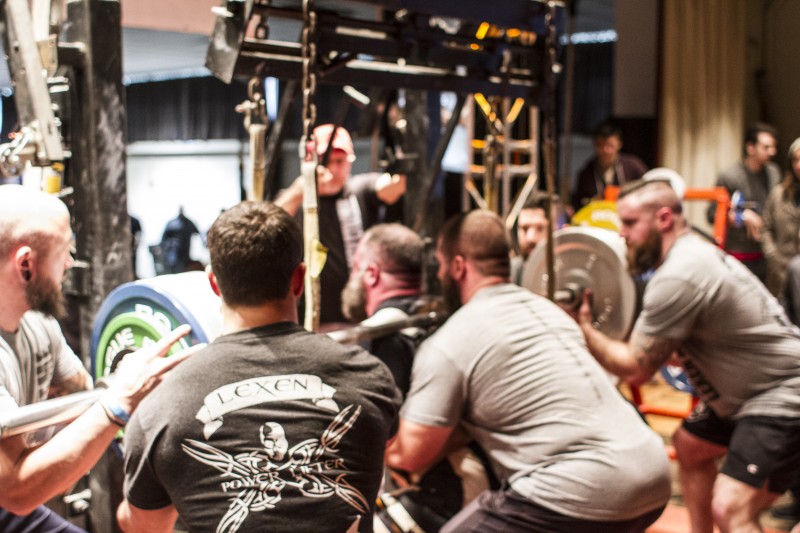
Keep in mind this is all self-reported and the main point of interest was whether or not the competitor "felt" like the sex had a positive impact, a negative impact or no impact on their athletic performance. This is problematic data for a bunch of reasons- namely that there is no way to accurately compare a control group to the people interviewed or accurately measure the result and so we are relying on the athlete to self-report their own outcome and there is probably a good amount of bias at play. Still, it's interesting anecdotal evidence at the very least.
Points of interest I took from the survey:
- Men seem much less likely than women to have sex on the actual day of the meet, prior to performance.
- ~90% of men and every woman interviewed felt that sex as soon as the night before competition did not have a negative impact on performance.
- Women seem about twice as likely as men to report a positive impact on performance from sex (80% of women interviewed compared to only 37% of men).
- The vast majority of men (~53% compared to only 20% of women) reported the sex had no impact whatsoever on performance.
- Strength athletes, on the whole, fucking suck at reading comprehension and following directions.
All of this jives with what I have seen and heard reported throughout my career as an athlete and coach. I was mildly surprised, however, to see that so many men were comfortable having sex the night before competition. I have always had sex the night before, myself, and not taken any issue with my lifters doing so, but I've heard from many others in the past who were afraid it would have a negative impact on performance. So it was reassuring to see that so many outside of my sphere of influence are actually on the same page.
In closing, my current position and recommendations on this topic are fairly simple:
- Men should have sex as often as they like throughout the course of normal training cycles up to as close as six hours prior to training, with no such limitation imposed on women.
- Men should probably abstain from sex any sooner than the night before competition with no such limitation imposed on women.
- Women might actually do well to have sex in close proximity to training or competition (2-4 hours), but that is by no means clear. Feel free to experiment.
That's it. Nothing too complicated. There is no reason to believe at this point that extended periods of abstinence will improve performance. Don't make yourself miserable for nothing. If I had to give up sex for powerlifting, I'd probably just collect stamps instead. Seriously.
If you found this helpful, please share it on your social media and feel free to reach out with topics you'd like to read me prosing-on about in the future.
I posted on Facebook last week asking for input on what topics I should write about for my column. The clear champion was the issue of sex within close proximity to competition and how it should be handled. Let’s start at the beginning.
Let me start this with a cliche, commonly applied to the subject of attempt selection for powerlifting.
"It's a marathon, not a sprint." Sound familiar? You've probably said it.
What cliche could possibly be more tedious than these words falling from the mouth-breathing lips of a 300-pound powerlifter who couldn't run 300 feet to save his life?
None; yet there is no tedium that we will be exposed to more perpetually. Hang around powerlifting meets for any extended number of calendars. If those words don't begin to make you long for seppuku, you're a better-evolved creature than I.
Is it bad advice? I've heard the thing spewed on the platform more times than I care to recall. Once by a lifter who only hours later went on to make an indefensible, ambition driven, misjudgment in attempt selection, which resulted in injury. Yes, in the same meet where he warned another lifter, via cliche, not to do exactly what he went on to do right away.
WATCH: Table Talk with Swede Burns and JP Carroll — Why an Advanced Powerlifter Needs a Coach
Good advice that doesn't get followed is bad advice.
Well, plenty of people are great at giving advice and suck at taking it. Right? That's definitely true. But, I think there is more to it than that. Something gets lost in the cliche. We've said it and repeated it so many times, the value begins to blur; it's somewhat contradictory and equivocal. Then, also, analogies involving marathons may not be the most easily digestible for the powerlifting population. That's another consideration.
"It's a marathon, not a sprint."
No, it's fucking neither. It's powerlifting.
The truth is: when we view our decisions as either black or white, pacing or sprinting, single factor equations, they do become a lot easier to swallow. But, in all fairness, things are rarely ever that simple. So advice like that is a trap. Believe me, I wish it were that straightforward. It never is.
You want that total. You have your heart set on it.
If things are black and white, just set your attempts to the numbers that will add up to it. But wait, it's a marathon, not a sprint. That adds a layer of complexity. You're either pacing yourself or sprinting. Still pretty black and white, I guess. But how do you decide which is appropriate and when?
You want that total. You have your heart set on it.
You are going to need this number on bench press to get the total you want. Black and white. But you strained your pec five weeks ago. That adds another layer of complexity to an already convoluted situation. Pacing yourself and sprinting. Black and white.
How about if I tell you that a powerlifting meet is actually a microcosm of a powerlifting career? Or that the same is true for a single training session? Like looking into an endlessly repeating, magnifying mirror; the entire picture painted, a fractal universe of recapitulating knowns and unknowns spinning into themselves and each other; that the answer lies somewhere within.
If I told you that, it would be absolutely true, but you'd still look at me, bewildered as fuck. Wouldn't you? Yeah, you're probably googling shit right now trying to figure out what the fuck I'm talking about, and so that bit of wisdom, though it is the truth, would be terribly difficult to swallow. Obviously not the best thing to feed you during a powerlifting meet, but about as useful as a well meaning, ill-conceived cliche.
Could it be that we are looking at numbers in powerlifting and this entire attempt selection process from the most backward, obstructed, fairy tale, fucking fantasy view possible? I think we are.
When we are selecting our attempts, let's forget about that total we have our hearts set on. Let's not try to feed this donkey by shoving carrots up its ass. I think there is a better way.
Rather than starting with what we are wishing and hoping for when selecting attempts for a meet, why don't we begin with our feet firmly planted on the ground and use some solid compass point to determine what we are going to be safely capable of on that day? I have a very effective (the most effective) way to determine what attempts should be for a given lifter, in three steps.
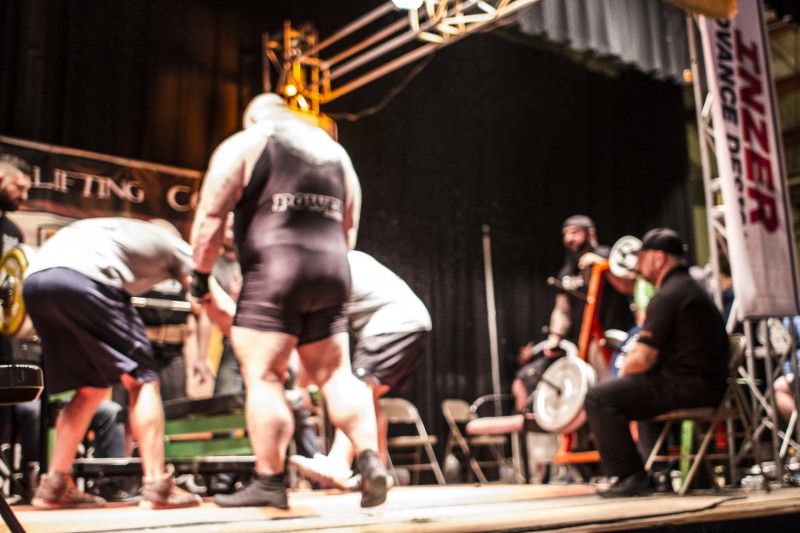
The first step is outlining the attempts based on the most accurate compass point available: that lifter's performance during their peaking cycle for that meet. This, or something like it should be step one. My methodology employs a formula which makes this part of the process almost thoughtless, but any realistic way to select numbers ahead of time, based on something other than hopes and dreams is a step in the right direction. A good rule of thumb is to never let the jumps between attempts exceed 7.5% of the lifter's max for that lift. I prefer to stay as close to 7% as possible and to never exceed 104% of the best lift that has already been successfully completed in training for the third attempt.
The following is a brief excerpt from my new book, 5thSet: Evolutions.
"A final point I want to touch on for attempt selection is number goals. I would strongly suggest all lifters make waste of preconceived notions they have about number goals for their meet. I am unable to calculate how many times I've seen a lifter throw away an awesome PR total, and unnecessarily risk injury in the process, reaching for something which is currently beyond their grasp.
Please don't think the appeal of round numbers is lost on me. A 2000 pound raw total. A 600 pound bench press. These are sexy numbers. I get it. I want you to hit all of the numbers you've dreamt about and worked toward. The surest, quickest, safest path to doing that is following the formula. We have to function in reality here. Your wishes and goals should not be factors that influence the selection of your attempts.
Trusting the formula dramatically increases the likelihood of successfully completing the heaviest attempt possible for each lift, leaving you with the heaviest total you're capable of. Believe me when I tell you that putting together the heaviest total you can is going to feel a lot better than missing unrealistic thirds which would have added up to some arbitrary figure you might have preferred."
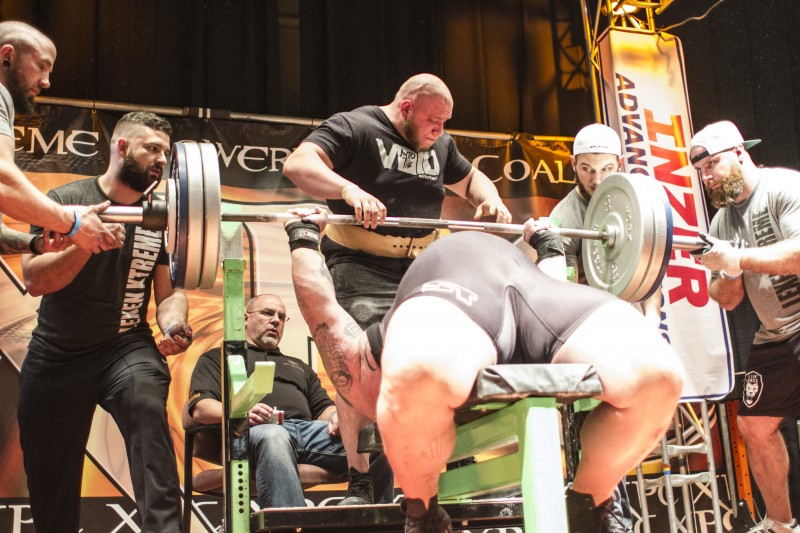
So that is the first step, but the second is also very important. We need to ditch the black and white. As many of us as there are who screw up step one, there are plenty who nail that part and completely blow it anyway. On this planet, there are almost no absolutes.
For this reason, it's important to consider any confounding variables, which is a fancy way of saying we need to think about anything else going on in our lives that could interfere with our ability to perform the way we should. For example, a pec strain, not getting enough sleep, not eating enough food, sleeping in your car for the week before your meet because your wife hates your guts or any other type of bullshit that could throw you off your game.
This leads us right into the third and final step to intelligent attempt selection: considering sustainability. Recoverability and adaptability are finite. We can only recover from and adapt to a certain amount of stimulus in a given timeframe. Understanding that is understanding progress is powerlifting is a process and it's going to take a lot of time to reach our respective potentials if we ever even get there. Most get sidelined or ruined by injuries long before they ever reach it. This is the basis for the 5thSet methodology. Finishing the course. To do that we need to consider sustainability. We need to be able to finish not only the meet but also finish our careers, whole. Competing is dangerous enough without making stupid decisions.
Why do so few accomplish what they are capable of? We'd like to believe the answer lies in a lack of hard work and sacrifice, and at first glance that makes sense. These are two important factors of the equation in the math of success, in any endeavor. But, believe it or not, most of us with the potential for greatness who fall short do not do so in those areas. Most of us are hungry enough. It is, in fact, the same hunger and passion that drives us to go as far as we do, which is more likely to sink us, if we submit to it completely. The stronger that hunger, the more vigilant we must be about every decision we make. We have to be strategists. We have to play the long game.
So, in review, the items on your attempt selection checklist should be as follows:
- Start with realistic numbers based on something solid.
- Consider confounding factors.
- Consider sustainability.
If this helped you, please share it.
You want that total. You have your heart set on it.
For the final Table Talk with Swede Burns and JP Carroll, the two elitefts team members discuss the similarities and differences between bodybuilding and powerlifting. Answering three questions on the topic, they begin by discussing the benefit powerlifters can receive from a bodybuilding background:
"How did your background in bodybuilding help you in powerlifting?"
Most importantly, Swede addresses the importance of muscle hypertrophy and the huge benefit it can be to powerlifters. More muscle means more stability, and especially if you aren't competing in gear, this is important for stabilizing the joints. If you're meager or underdeveloped, the likelihood of injury goes up. Lifting the same weight at a lighter bodyweight may be more impressive, but it's also likely more dangerous.
"What were the similarities and differences between the two?"
One of the biggest similarities in how Swede trained for bodybuilding and powerlifting is AMRAP (as many reps as possible) sets. Swede has always done AMRAPs, both when he was doing bodybuilding and also now as part of 5thSet. For bodybuilding, unlike with the 5thSet model, Swede would do AMRAP many times. So he may have loaded rack pulls up to 765 and done AMRAP, but then he'd do AMRAP again, and again, and again. This may not have been ideal, which is something Swede has learned over time. If one set to failure is good, two isn't necessarily better. Capacities like recoverability and adaptability are finite, which means you will experience diminishing returns as your push things further and further.
"Would you do it any differently if you were to do it again from a training and health point of view?"
Anyone who answers "no" to this question is probably lying — or hasn't learned anything along the way. Swede says he has made a lot of stupid mistakes, which is why he's made it his life's work now to help other people not make the same mistakes. You have to learn from the people who came before you.
He mentions Isaac Newton, who said, "If I have seen further it is by standing on the shoulders of giants." The thing to remember about Isaac Newton is that he said this as a way to respect every person that came before him, but he still transformed the world of science. Despite the fact that he greatly diverged from what had been done in the past, he still paid respect to those people.
The same should be true in powerlifting. JP points out that a lot of people fucked themselves up in the past so we wouldn't have to now. It would be stupid to not go back and realize the lessons we can learn from the mistakes of others.
WATCH: Table Talk with Swede Burns and JP Carroll — Why an Advanced Powerlifter Needs a Coach
Despite many similarities and differences between bodybuilding and powerlifting, there’s one key aspect of bodybuilding that powerlifters need most.
In this Table Talk series with Swede Burns and JP Carroll, so far the two elitefts team members have answered questions about training elite lifters, trusting the process, accessory exercise volume, sequencing of assistance work, and making every rep perfect. For today's video, they discuss why an advanced powerlifter needs a coach.
First they answer a question for JP:
What's one thing you learned from being coached that you wouldn't have figured out yourself?
Though there are many things he has learned, JP answers by saying that the most valuable change in his training from working with Swede is the focus on the execution of every single rep. Before starting with Swede, he was simply strong and could move a lot of weight. His technique sucked, but he had mostly gotten away with it by simply being so strong.
It wasn't until working with Swede that he started to develop the technique he needed to keep improving — and even then it took some time. At the start with 5thSet, he would try to pump out his reps too quickly. It wasn't until he slowed it down and started thinking of every single reps as singles that he started to improve his technique.
Swede follows up on this by pointing out that this not only made JP stronger, but it also made his lifts safer and a lot more clean. The lesson was to make every rep right, every single time you do it. You have to make those cues natural so that by the time the meet comes you've done it hundreds of times. Swede explains that he manages this with every lifter he works with. In video reviews, he continually reinforces technique. It may seem like he's saying the same thing again and again, but it's a process. You have to always focus on fixing the lift — as one thing starts to get fixed, another issue will pop up to address.
If the massive increases in strength for JP don't have you convinced, consider this: Imagine you're doing five sets of five as your workout. Your first two are perfect and your last three suck. What hapepned? You just did 60% of your training as shit. You trained your body to suck 60% of the time. If you're doing lots of volume, this can become even more of a problem. Practice doesn't make perfect — perfect practice makes perfect.
So when do you cut your 5thSet? As soon as you can't do a rep correctly anymore. Your last reps before failure need to look like exactly like your first reps.
WATCH: Table Talk with Swede Burns and JP Carroll — Keeping Good Form Through Every Rep
Even the strongest lifters in the world can’t figure everything out themselves.
In this edition of Table Talk with Swede Burns and JP Carroll, the two elitefts team members answer a question about consistency in technique:
"How do you keep the same focus at getting all of the steps down to ensure good form through every rep in a workout?"
To explain the way Swede accomplishes this, he shares his approach to teaching a new lifter. When he makes corrections at the start with a new lifter he has never worked with before, he has to prioritize corrections. The first priority is always stuff that is dangerous and could lead to injury, such as lifting in lumbar flexion. After safety is no longer an issue, he only then moves to correcting the things that will make the lifter technically proficient at the movement. The goal is to eliminate any wasted energy throughout the lift.
To do this, Swede uses a checklist. For example, in the squat: air, neck, brace, squat. For each of these mental cues, the lifter knows what to do for better execution of the movement:
- Air: Fill and expand the lower abdomen
- Neck: Pack the neck neutral
- Brace: Use the muscles of the midsection to pull the ribs down toward the pelvis
- Squat: Now the lifter is ready to squat
Swede says that going through this checklist often fixes 80% of technical issues. To ensure this checklist is always used, Swede has his lifters reset between every single rep in a set. Even on an all-out set with 5thSet, the lifters go through air, neck, brace, squat between every rep. This not only improve technique on every rep but also makes training more specific to what is required on the platform in a meet.
Similarly, JP shares what he learned about consistent technique once he started training with Swede's guidance. He had always been able to "muscle shit up" even if technique sucked, but when beginning to incorporate more volume he recognized that the more crisp the movement was and the better the technique, the more strength he was able to actually apply to the movement.
In using learning and reminder tools such as the checklist, Swede warns that these cues must become internal. In training, hearing these cues is meant to be corrective so that a lifter can fix mistakes and build better technique. But once the meet comes around, the execution of the movement should be thoughtless. The focus at that point should be on moving the weight quickly — not on listening for cues from a coach.
WATCH: Table Talk with Swede Burns and JP Carroll — The Growth of 5thSet and Training Elite Lifters
Learning proper lifting technique may be a challenge, but being able to recreate it rep after rep is even more difficult.
I am reticent moving into writing this article because I know so many of you, when you read the topic, will shake your heads and dismiss it as something you already have covered. I would. I have in the past. After spending so much of the last week reeling, in my own mind, I can see areas where I've fallen short.
The topic is accountability, but there are levels to this.
There is the type of accountability I was discussing with JP Carroll on one of our Table Talks last week, which was more about trusting someone, like a coach, or a group of people, like the crew you train with, to hold you to a standard and, for lack of a better term "keep you accountable." Sometimes when you're in the thick of things, it's hard to see clearly or make the right calls, because each of us influenced by our own personal pair of rose colored lenses, through which we view the world. Feelings, emotions, impulsive desires and a list of other factors about as long as an Alaskan winter can skew the way we perceive our decisions and the resulting outcomes, as well as the interconnective nature of the two.
They say hindsight is 20/20, but that's not always the case. It's a lot easier to accept that you made a poor decision which resulted in a shitty outcome, or that the poor decision you're about to make will result in said shitty outcome if you hear it from someone you trust.
You're about to max out in the middle of a training cycle, even though your prescribed work calls for sets with 77%. Having someone you trust and respect to "keep you accountable" can make all the difference in the world regarding how you will approach that decision. Reading the scenario I just mentioned, it seems like a forgone conclusion it would be a stupid idea. Those rose colored lenses, though. They can change the picture you see in real time. Trust me.
Life is like that, too.
Now to some degree, this is still you being accountable, by allowing that person or those people to hold sway or influence on your decisions and point out when you make bad calls. It takes some heart to be open to it, and bravery of that kind is almost always rewarded.
What I want to talk about in this article, however, is another level of accountability, altogether. One which I strive to keep in check, consummately. I'm talking about removing the rose colored lenses, cleaning them off and placing them back in their case for a bit: improving the level of clarity with which I view my circumstances, options and eventually decisions. This is called personal accountability.
But, how do we do that?
It's no easy mission. I will give you that much. Reactions, impulses, feelings, and emotions are all intrinsic to the human condition. Though they tend to bring to bear results which oppose what we'd prefer, most of us still allow them to color our choices. We long for the things which will ultimately undo us.
Allow me to share the way I navigate these treacherous waters, in hopes that you can use these ideas to take the helm of your own affairs, in training, business and even your personal life. I have a list of "adversaries to accountability" I use check myself. If the factors I listed above which distort our perceptions are rose colored lenses, think of addressing these "adversaries" as wearing clarifying, prescription glasses. When we recognize them, we can use that to improve our chances of seeing everything in our path and on our horizon, clearly, so we can make the calls, before and after the fact, which suits our best interests.
Part of personal accountability is self-awareness. No checklist or cheat sheet is going help you if you're not willing to go into things with your eyes open, and willing to be wrong. Self-awareness is as rare as it is important. Those who have it go light years further than those who do not.
How sad is it to watch someone who doesn't?
When faced with the consequences of their own decisions, they fumble to point their finger in any direction but their own, as desperate, emotive phrases fall out, inexorably, more like prayers than normal means of communication. Yet, the consequences remain and there is no hope in sight for similar choices to not be made in the future. We've all been there, but no one has to stay there.
Use these tools to hold yourself accountable, before and after the fact.
Adversaries to Accountability
- Pride
- Dishonesty
- Anger
Pride
Ask yourself: "Is my own pride affecting how I view this situation?" A good way to test this is to take yourself out of the equation.
If someone else did what you have done, or was making the decision you're about to make, would your perception of that action or decision change? I do this all day long in my head. I'm always asking myself: If one of my lifters was going to do this, or had done this, what would I say? I'm in a unique position, as a coach who gives advice for a living, which provides me a lot of experience to draw from, but anyone can use this problem-solving tool. You'd be surprised how sobering it can be to take yourself and your own pride out of things.
When I feel good in training and I want to do some extra work in a given session: What would I say to one of my lifters about that decision?
I'd say "no." Pretty simple philosophical razor, that.
Things get a little more sticky, after the fact. This is even more so the case when dealing with pride in our personal lives and how our decisions affect those around us. Pride will rush to the defense of our egos when we've made or make decisions with shameful consequences.
"Is this going to hurt someone I care about."
"Did this hurt someone I care about?"
We don't always do the best with these things. Owning mistakes after the fact can go a long way in preventing the same behavior from happening in the future. This leads to the next "adversary."
Dishonesty
Personal accountability is all about taking responsibility for our actions. The first part of accepting the consequences of the choices we make and actions we take is being honest about every aspect of them
Let's use the same example from before and apply it to this. The guy maxing out when his prescribed work is at 77%.
"I didn't think it would mess things up if I took a max."
Now that is some Mike Tyson "I broke my back. It was spinal." type of shit right there.
You knew damn well that wasn't the best move and you chose to do it anyway. We need to own these decisions and be honest about our motives, in order to learn from mistakes and prevent them in the future. Lying to other people is one thing, but when we allow ourselves to be dishonest with ourselves, we are in sad shape.
A good exercise in accountability is saying it out loud or writing it down. That's what I do. If someone else was affected by my actions, I make myself say it to them.
"I knew that was a bad decision and I did it anyway because I wanted to. Now I'm willing to face the consequences."
Something as simple as that can make a huge difference moving forward and help stop me from repeating the same mistake again, down the road. I don't enjoy admitting when I'm wrong like most people don't. But it keeps me from becoming a scumbag and railroading my personal life, business life, and training life. Without those things in check, I'd end up couch surfing in my thirties instead of living the life I love. Who wants that?
Another facet of this is being honest about the fact that, some decisions, we have no business making for ourselves. We simply aren't qualified. That does not lessen us in any way and acknowledging it puts us in a better position to be successful.
I hire an accountant to do my taxes because quite frankly, I don't know enough to handle that shit on my own. More than likely I'd miss things which could benefit me and do things which could get me all messed up. Staying in our own lanes is an important part of personal accountability and we can't do that if we aren't honest with ourselves about what our roles should be.
If you've been lifting for three years and think you are qualified to change the programming your coach gave you, you're probably falling into the category of someone who isn't being honest with himself about what his role should be. (You should be running 5thSet.)
Anger
When I mentioned feelings and emotions earlier, this one right here is definitely the biggest culprit in that group. Anger is a very base emotion and can seem like a reflexive response to pain of nearly any kind. But there is a little more to it than that.
Hit your thumb with a hammer? Anger. Betrayed by someone you trusted? Anger. Crashed your car? Anger.
I say it's a base emotion because anger reactions seem thoughtless, but they never really are. In fact, pain by itself is not enough to cause anger. Plenty of people who are in pain are not angry. There is a thought process behind anger which results in someone or something getting the blame for our pain, even if that process is instinctive.
Anger is easier to deal with than pain. It's distracting. People who are in pain tend to think about pain. People who are angry are focused on harming whoever caused them pain. There is always a target at which our anger is directed, even if it's ourselves.
If you look back on something you did, or a decision you made, while you were really angry, chances are: that emotion influenced things dramatically. This is common sense, but it's human nature to make excuses after the fact for our actions or try to defend or justify them. However, if we are being honest with ourselves, the way I mentioned in the last adversary, we can acknowledge that we should've handled things differently.
The guy who wants to max when he isn't supposed to knows it. He's mad about something that happened earlier and even though he probably knows maxing is going to have a negative effect on his training, he does it anyway. Maybe he blames himself for what happened and is trying to sabotage his training to punish himself.
We will probably never fully grasp on an individual basis why we do the things we do when we are angry, and that's alright. We can learn to acknowledge they were mistakes and not defend them. We can eventually learn to identify when we are angry and take a step back before doing any dumb shit.
I have to step off and have "Swede to Swede" talks before I end up acting out at least once a week. This type of thing is highly advisable for those of us who are able to identify our own anger before we act on it. It's kept me out of prison for creeping on twelve years now.
Personal accountability can be a struggle, but it's a point of pride for me. The kind of pride that comes from maintaining my own integrity, not the kind that will get me in trouble. I'm human and I err. Anger is always going to be an issue for me. But when I am wrong, I am the first to admit it. The reason is I don't want to keep being wrong and I realize being accountable is the surest way to prevent it. It's cyclical in that way.
As always, thank you for reading and please feel free to reach out to me with topics you'd like me to address in future articles. If you enjoyed this, share it.
Use these tools to hold yourself accountable. My hope is that you can use these ideas to take the helm of your own affairs in training, business, and your personal life.
It's easy to find recommendations for how you should set up secondary work in a powerlifting training program. There's a lot of advice floating around about what types of accessory or supplemental movements you should do after your main squat, bench, or deadlift work, and how many sets and reps you should do. But there's one piece of the puzzle that's often left out: sequencing. What should change over time as you get closer to a meet? This is the topic of today's special edition Table Talk with JP Carroll and Swede Burns.
They begin by responding to a question about the relationship between main lift percentages and assistance work percentages:
"Would it be wise to follow the same percentage for a given workout for both the main lift and the assistance work? Or should the assistance work be planned differently?"
Swede answers these questions by going into detail not only about the percentages of main lifts and assistance work, but also about the entire process of altering assistance during a training cycle. He calls this "sequencing assistance work" and gives a rough outline of how he suggest setting it up. There is a time that your mechanically similar movements and your secondary stuff should be in the same percentage range as your main work, but not always. As you get closer to a meet and are doing training that is more meet-specific, the secondary work should be similar, but further away from a meet it should not.
For example, consider a six-month macrocycle. In the first mesocycle Swede will have lifters start with movements and set and rep schemes that have lower training potential and are less specific to the sport of powerlifting, such as high rep work (like sets of 10 on rack pulls or sets of 15 on a high board press). As the lifter nears the meet, changes to do more powerlifting-specific work will be made, such as lowering the boards but keeping the reps high. Then the reps drop and the percentages of the secondary work matches the main work. Finally, during the peaking cycle, accommodating resistance can be added.
So, after all this, what is the answer to the initial question? It depends. Like all things in training, there is no clear answer. For novice lifters, and Swede reminds that most of you are novice lifters, you can get stronger during almost any part of this process; training doesn't need to be highly-specific or incredibly complex for novice lifters to improve.
WATCH: Table Talk with Swede Burns and JP Carroll — PLing Difficulty, Deadlift Leverages, and Accessory Volume
Would it be wise to follow the same percentage for a given workout for both the main lift and the assistance work? Or should the assistance work be planned differently?
Swede Burns and JP Carroll are back at The Table to answer more of your questions in this third installment of the series. Today's video includes three topics: what makes powerlifting hard, leverages for the deadlift, and accessory exercise selection and volume.
For JP:
"What do you consider hard about powerlifting?"
JP wastes no time in his answer. What makes powerlifting hard? Absolutely fucking nothing. It's lifting weights. It isn't hard. You choose to do it. Swede follows this up with similar sentiments: You can find people on social media complaining about voluntary water cuts to make weight for meets or dieting to do a bodybuilding show. Does it suck so bad that you can't keep yourself from complaining about it? Then stop. Don't do it.
For Swede:
"How many accessory exercises are okay to do after your main lifts? Should you keep it to a few to help the main lift and increase the volume of those?"
This comes back to a previous point Swede made about the daily training layout. When we're talking about assistance work, we're talking about something that is meant to assist the main lift. The secondary exercises that get the most volume should have dynamic correspondence to the main lifts. In 5thSet, these are called mechanically similar movements (MSM), such as sumo block pulls and rack pulls for deadlift, or pause presses and board presses for the bench press. These are the movements you want to spend the most time on after the main lifts.
For JP:
"How did you master your leverages on the deadlift? The majority of big dudes have a hard time getting close to the bar. How long did it take?"
JP's leverages for deadlift are admittedly not the best — short arms and a long torso don't make for a good deadlift. But instead of getting caught up on this, JP says, for a long time he simply decided he'd make up for his poor deadlift with a huge squat and a huge bench. This worked for a while and then he decided to finally take care of it. He worked with a fellow lifter who was very talented in the deadlift and really focused on his pull. After 16 weeks, he went from a 725 deadlift to pulling 800 in the gym. He says that leverages can suck but it's possible to work around them. The key is that you can't be complacent with sucking and you have to keep working. Everyone has obstacles to deal with, but you can get past them if you approach the problems head-on.
WATCH: Table Talk with Swede Burns and JP Carroll — Trusting the Process
Have you ever wondered what makes powerlifting so hard? Look no further — these guys have the answer.
Novice lifters tend to hop from program to program, always excited by the prospect of a new style of training and the progress it can bring. The problems with this are well-documented, and any experienced lifter will tell you that the best thing a new lifter can do is pick a proven program like 5thSet and stick with it for a while, grinding away slowly and developing a foundation.
Elite and advanced lifters sometimes have the opposite problem, however. Elite lifters know how they got where they are. They know the techniques and the training methods that built them. This can make it a very real challenge to trust changes in your training style. If you built a 2200-pound raw total, how likely would you be to abandon the style of training that got you there? Wouldn't it be difficult to trust your new programming?
This week's Table Talk with JP Carroll and Swede Burns focuses on this exact topic. They answer the following question, addressed to JP:
"Was it difficult to trust the process leading up to your most recent accomplishment at the Arnold where you destroyed everyone?"
JP's answer, in one word: absolutely. JP had never trained with lower percentages with volume like that, and it was hard to see how it would correlate to strength on meet day. But as he progressed through the training cycle, not only did he stay healthier but he also simply felt better. He says that although the lower percentages mess with your head at first, once you start to get used to it, you begin to see the benefits and really enjoy it.
To this point, Swede shares a conversation he and JP had soon after JP started training with 5thSet, during the first peak. JP had just taken a max and still felt great after the lift, full of energy. The reason for this, Swede explains, is the difference between lifting over 90% every week and doing 75% or 80% for 15 to 20 lifts. This difference in volume and intensity during the course of a peaking cycle has a dramatic impact on both physical health and general feeling of well-being.
Two other important factors are the moral effect that fatigue can have on performance and the risk factor for injury. For instance, even if you can perform well and lift heavy at any time—and thus do so frequently—connective tissue recovers at a much slower rate than muscle tissue. You have to find a way to mitigate that risk factor if you want to stay healthy and keep improving. Otherwise, you end up with injuries like the common biceps tears, pecs tears, or blown knees you find at a meet. After peaking and going through a deload, you should be ready on meet day. If your functional state is still disrupted by the time you're ready for the platform after a deload, something is wrong with your training.
WATCH: Table Talk with Swede Burns and JP Carroll — The Growth of 5thSet and Training Elite Lifters
A lot of lifters think you have to train over 90% week after week to get stronger. Adjusting to a program like 5thSet may challenge you mentally to trust the process, but it won’t be long before you experience the benefits.
This week's Table Talk is being taken over by two of elitefts' best: Swede Burns and JP Carroll. Swede, known best as the creator of 5thSet and as 2016 Powerlifting Coach of the Year, and JP Carroll, known best for being incredibly strong (with a 2250-pound best raw total), are answering questions posted directly to them from elitefts readers.
For Swede:
"Swede, as 5thSet has evolved, would you still have people new to the methodology start with the original principles? And during its evolution, did you see a need for it to evolve with beginners, more experienced lifters, or just saw that it could be more efficient?"
To answer this question, Swede breaks it into two parts. First, yes, someone new to the methodology should start with the original principles because the principles haven't changed. In the original ebook, Swede focused on the most important aspects of the methodology without overcomplicating it with too many variables or options someone could alter.
The second part, regarding the evolution of the program, was heavily influenced by one thing many lifters struggle with: adherence. No one wants to stick to one program for an extended period of time. This is why there is so much counter-productive program hopping. To help combat this, Swede looked at some of the techniques he uses with advanced lifters to see if it was possible to alter them for use by lifters of all experience levels.
Beginner and intermediate level lifters have what Swede refers to as "artificially lower" maxes, because they fail based on underdevelopment or meagerness of body. These people tend to get higher reps on their fifth sets, which has led to changes in the programming Swede has made over time. In other words, as 5thSet has evolved, Swede has given more options and extended the capabilities of the program, but the foundational principles remain the same.
The new ebook was about providing more options and not about changing anything that has made 5thSet as successful as it is.
For JP:
"You're a seasoned lifter. Was it difficult to have someone else completely take the reins on your training?"
The answer to this question includes both yes and no. JP says it's easy to get into your own ways and not want to change, but then sometimes you have to wake up. For JP, it was a when things started going backward due to a pec injury and he had to find a way to turn things around. The results working with Swede have been exactly what you'd want — including a 585, pain-free bench during his most recent training cycle. The approach has not been, as Swede says, "driving it like you stole it."
This answer then leads into a conversation between JP and Swede about peaking. You shouldn't always be running a peaking cycle and you shouldn't be peaking in the gym simply so you can post it on Instagram. This might work short term, but it won't take you to the heights of your potential.
JP's final thought on letting Swede take the reins is about the mental benefit of doing so: You need someone in your ear telling you to hold back. You need someone telling you when not push things just for the sake of hitting a number in training. You need someone stopping you from doing stupid shit because you get too worked up. Could JP have hit 600 in training the other day? Sure, but what would have been the point? What would have been the long-term benefit?
WATCH: Westside Misconceptions — High Standards
What has changed about 5thSet over the course of its rise to popularity? And what is it like being an elite lifter that hands his training over to someone else?
In the past, I have talked a lot about training environment and how it can influence progress. Truth be told, it's one of a few factors that can make or break a lifter. You'll hear motivational talk about how a good lifter will make-do with what is available to them. And there is some degree of truth to that, but to make the most of your potential, sometimes you have to take the wheel and steer a bit, even if that means thinking outside of the "box."
Like most of you reading this, I've had to spend a good deal of time training in commercial gyms, throughout the course of my career. It has its pros and cons.
During my hiatus from powerlifting, for the seven years I competed in bodybuilding, there were quite a few pros, actually. Like a wide variety of different machines to isolate muscles from unique angles, providing useful stimulus variables, and a good selection of cardiovascular devices to keep the typical monotony associated with that type of training at bay. But even then, the negatives had no problem tipping the scales in their favor.
Many commercial gyms won't let you deadlift, citing some type of insurance clause which disallows it. Even among the few that do, some will force you to deadlift with those hexagonal plates. Ever tried it? I've done it, but honestly, fuck that. And who wants to wait for a bench or a squat rack to open up? Add insult to injury with the fact the person currently occupying it is more than likely not only wasting your time with the nonsense they're doing, but also their own. These places are a haven for asinine training behavior. It's as simple as that.
It is possible to train effectively and even do really well in those conditions with the right mindset. My first bench over 500 pounds was in a gym with far more machines than free weights, with a spot from some random clown who probably couldn't deadlift what was on the bar. But I was always running into conflict with other members and know I would've done better, sooner, if the environment had been more optimal. What's truly optimal is an individual thing when it comes to strength training, but for most of us, that doesn't look much like a commercial gym.
There will always be strongholds, sanctums for those serious about strength, but in today's fitness landscape they are few and far between.
If you talk to the owners of any of these places, you'll understand why. It's hard to compete for the average person's business when there are places charging ten dollars per month for a commercial atmosphere and you need fifty per member just to keep the doors open. With the good facilities like these spread out the way they are, even those of us for whom strength training is a top priority sometimes get stuck in a big box nightmare. Though, lately, I've seen a change.
I work with lifters across the country who hold their training sacrosanct. When they realize my method requires very little in terms of specialty equipment and provides a means to reach their respective potentials without being surrounded by dipshits, it doesn't usually take them long to connect the dots. In the last couple of years since I released the original 5thSet book, I've witnessed lifters in droves, leaving the machines behind, for an environment that allows them to set the tone: their basements and garages.
I realize people have always trained at home, but I'm speaking from my own experience, here, and what I've seen recently. For example, I'll tell you a story about two lifters. I call them the Shane's because they are both named Shane (I know, I'm creative). One Shane sees the other Shane wearing a 5thSet shirt at the globo gym where they both train and asks if he is running the program. Long story short, they both start to order what little equipment they need (a rack, a bench, a yoke bar and some bands) from elitefts and a 5thSet Powerlifting crew is born. They go back and forth, training every other session at each other's place, and they're actively looking for others to join.
JP Carroll and his 5thSet crew are working on stockpiling equipment, as well. More and more posts are showing up in the 5thSet Facebook group from others who have decided to join the exodus. That's good, I like that.
Their training is a priority and they are taking steps which demonstrate that. I don't take for granted how fortunate I am to have an environment like Keyhole Barbell to train in. And it's not about the equipment, either. Sure I have all the toys I want now, but I started with a power rack and a bench. We trained on some of the shittiest equipment imaginable when I was in prison and still made better progress than most lifters ever will. When there is a foot of snow on the ground and you have to train under a pavilion, exposed to the elements, it tends to set the mood for a "no fucking around" kind of session. The memories of those workouts will always remain the clearest in my mind. Not for the number of rusty, welded and repaired plates we had on the bar, but for the standard of expectation we held each other to. We were in control of that. I still try to approach my training that way.
In the future, I hope to see more people wake up to the fact that most of us have a very real choice. We don't have to settle for squatting out of a rack that doesn't let us get our hands where we want on the bar, or deal with some wiener behind us checking out his abs and almost getting hit by the plates as we lift. We don't have to train in gyms full of shit we don't need and people we'd rather curb stomp than ask for a spot. This is a call to arms for those who need to hear it.
If you can't find a solid facility to train in buy a rack and a bench. If you can't afford the ones we sell on the site, buy them from some joker on Craigslist who is using them as clothing racks.
Take control of your training.
Training in commercial gyms has its pros and cons. This is a call to arms for those who need to hear it.
I woke up at five in the morning on Saturday. Well, that's not entirely true. My eyes opened to the "summit" alarm tone on my iPhone at five. I'd already been conscious for at least an hour, sinking and spinning scenarios and possible outcomes for each of the twenty-one 5thSet lifters I would coach that day, at the first meet of the weekend.
Sunday, it would be off to the Women's Pro-Am in Cincinnati. But, one task at a time. I was prepared and organized.
People say I am crazy for working with the number of lifters I do. Those people are correct, but I don't take on more than I can handle.
RECENT: Excuses Don't Count Towards Your Total
"I don't know how you do it." They say. And that's also true, they don't know. I will tell you, though, reader. I do it the only way it could possibly be done. The used system, protocols, and formulas I developed over a lifetime of playing the numbers. It bears repeating I would never take on more lifters in one meet than I thought I was able to effectively coach and handle. But, one day, I will hollow out and decompose beneath the dirt, where maggots will have the final say of what becomes of me. So for now, I want to accomplish as much as I can, always testing, trying to find that upper limit where it becomes too much for me.
This weekend would be more of that testing, coaching twenty-one lifters over the course of a single day. Then, a bonus round on Sunday with a handful more. My primary concern is results. Those results would not disappoint. I'll get into more detail as the story goes on.
By the time my feet hit the floor, Britt had a cup of coffee waiting. She handed it over without a word and began to pack up my CPAP machine.
Oh, did I neglect to mention she was in the ranks of the twenty-one lifters I'd be coaching later? Yes, to an already convoluted situation, add another measure of complexity: This was to be my significant other's first meet.
Team Swede
My travel bag for the weekend was already packed from the night before, so we were out the door and rolling down the highway to breakfast before I was quite beyond the twilight of achy shoulders and hips with which I am greeted every morning. Throughout the ride, I had to intermittently oscillate between reviewing attempt selection plans for the morning on my phone and talking Britt back from the ledge of anxiety.
When we arrived at the venue, after a long walk from the event parking lot, we were met in the warm up area by a small swarm of teammates. A sea of belts, gym bags, snacks and coolers packed with Gatorade, water and ice covered most of the floor. I made my contribution and began about my business.
After they were finished with their bracing protocols, I gave each of my first flight lifters their "last warm up" numbers and made my way around to talk briefly with those in the second flight. Among them was one of my nearest and dearest confidants, Sin Leung. "We have some checks to cash," I whispered to her.
Gene Rychlak got things rolling right on time like he always does and by ten minutes after nine we were well into the first flight of squats and Britt was "in the hole," meaning two lifters out from her first attempt. She was rattled and I could not calm her. Though, I did try. Her opener came and went, leaving her crushed and feeling defeated. I could see her wild eyes on the unrack and knew before she descended it would be a missed attempt.
Once she was scooped up and off the platform I walked her to the side for a minute, realizing what she needed to hear. Britt is very confrontational and the fear on her face was way out of character. I knew I needed to use that. Three sentences changed the trajectory of the day from that point:
"What is this look on your face, is it fear? You wouldn't be scared if this was a fight. This IS a fight."
She nodded and her demeanor began to change immediately. After some technical cues, she went on to go 8/9, finishing the day with a 295 deadlift, which was a sizable PR.
The remainder of first flight squats went off without a hitch and the day was mine from there. Decisions would make themselves now, I was "on."
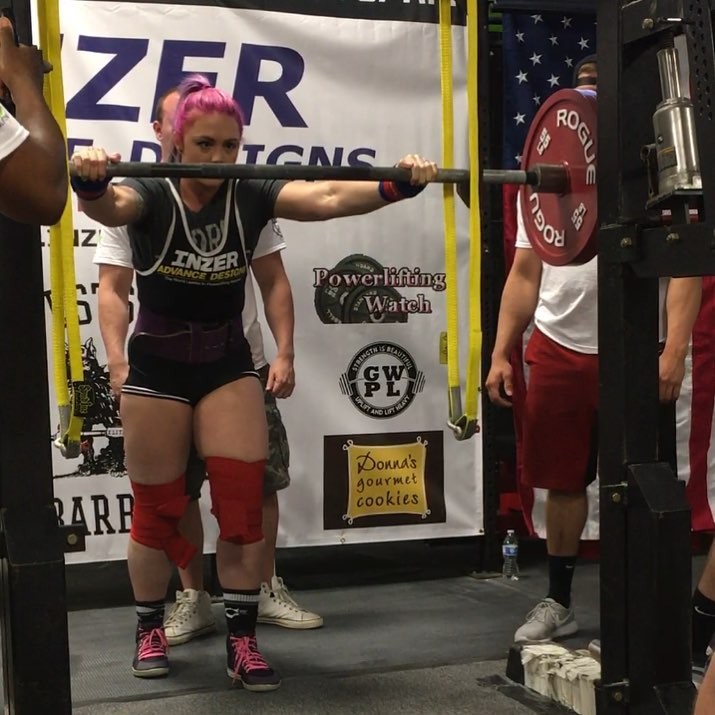
Crystal Guzniczak
Sin's opener was a smoke show. The second was a PR and faster than her first. Any issues she had in the past, squatting with a bar too thick to even wrap her tiny hands around and almost twice as long as she is tall- those had given up the ghost and found their final resting place far below the platform, exorcised forever by 5thSet specificity. Lots of practice with a similar bar did its work.
Finally, on her third, the main event:
Panda vs. a 35-pound squat PR.
Flawlessly executed, her adversary was not a worthy opponent. There was more in the tank. That's good, I like that. A close miss on her third deadlift left Sin with a 56-pound PR total, 910 without wraps. A four-digit total in wraps is peeking at us from the horizon, I think.
With each name called, and so each corresponding face, came an onslaught in my mind of the problems solved or mitigated throughout the course of their training, creating a list of issues to scan for as they executed attempts. I'd love to recap the performances of the other 19 lifters I coached on Saturday, but they wouldn't mean nearly as much to you as they did to me. Every single one of them showed up for this meet, and I do mean showed up. They brought their hearts with them, from all over the country and even Canada, shedding blood and fighting like soldiers to the end. I love my team. Seeing them in action made my own heart swell with such pride it nearly burst.
If coaching a lifter in competition is a game of chess, I won twenty-one games in a single meet on Saturday, many of them played simultaneously. As a powerlifting coach, I am lethal. No feigned declarations of modesty here. You were not expecting that, I hope.
Everyone PR'd and almost all of them went 9/9. Jack O'Rourke even kept track and claimed the auspicious honor of 27/27 white lights. I am laughing as I recount. Maybe this will become a thing for people who get bored never missing lifts.
We got out of the meet in time to have dinner with the two birthday girls, Sin and Tiff, as well as some of my lifters who traveled to the meet from afar. By midnight, Britt and I were on the decidedly long road to Cincinnati, with her driving. I tried to sleep, but couldn't remember the trick of it at all. We were parked before dawn and managed a brief nap, in some random lot, roughly ten miles from the venue.
Ellen Stein
There was a Waffle House across the street, so we filled our bellies and then took bird baths in the restrooms.
Around eight o'clock we pulled into the Sweatt Shop parking lot and Britt finished getting ready in the car while I ran inside to get my lifters started. I walked through the warm up room and felt the twinge of a ghost passing through me, but shook it off and centered my focus on the tasks at hand. The first lifter in my line of sight was Crystal, waiting for me with her beautiful wife Sarah, both of them aglow with nervous, excited and welcoming smiles. Ellen Stein came up and hugged me. She and Crystal were in the first flight, so we got right down the business of going over their warm-ups.
I ran the mono while they both warmed up along with a nice group of other familiar faces. Before I knew it I was wrapping Ellen for her first attempt.
I was "on" again, working my system. It's would be another good day. I could feel it. Ellen was nervous like she sometimes is. It didn't help that I moved up her opener once she told me she put in a lower number than I gave her. We go back and forth, it's how we work. As usual, she smoked it and was very pleased with herself. This increased her confidence by an order of magnitude and I knew we were set.
Crystal blew through all of her squats, including a ten-pound PR that looked like it was one of her warm ups. This was her first meet since we've been working together. When we first got together she was unable to deadlift over 300 pounds in training after an injury while pulling 450 pounds on her third attempt, last year at the Arnold/XPC. We broke everything down and started from scratch, integrated my bracing/activation stuff and set up a long-term plan. It including doing the Women's Pro/Am and lifting pain-free. After pulling 450 on her third, we broke off into the back and talked by ourselves for a minute. She told me she felt good, and wasn't in pain, among other things. I'm expecting big numbers in her future, now that we have a solid base to build from. Keep an eye out for her.
Ellen went on to shock as amaze everyone like she does at basically every meet. She went 9/9 and upped her 1000-pound PR total from the Arnold to 1007 at 64 years old and 130 pounds body weight. That is why they call her a living legend. The highlight of her performance, in my opinion, was the 202-pound bench press she didn't want to take, but I put in anyways. Somehow, Ellen is genuinely surprised with herself every time she PR's. She jumped off the bench and ran right over and hopped up on me like a spider monkey. It was an awesome lift.
My elitefts teammate Steve Goggins could not make it to the meet, so I wrapped and handled his lifter, my dear friend Molly Mullikin. She also knocked it out of the park with her first 1200-pound total, rounded off nicely with a 525-pound deadlift. Britt and Molly are also good friends, so we all went to the zoo the next day before heading home. As I type this I am just finally making it back to Keyhole and I will be sleeping for a week if anyone needs me.
This weekend would be more of that testing, coaching twenty-one lifters over the course of a single day. People say I am crazy for working with the number of lifters I do.
Excuses don't count towards your total.
At least, not at this point. It wouldn't shock me much if I found out tomorrow that some federation was planning to add a "Really Good Excuse" division, where you could count one or more missed attempts toward your total with a good enough argument as to what went wrong. Or a poll where your friends and family get to vote on what your total should be. I would take it in stride. If one of these new divisions were to come about and gain widespread acceptance across the powerlifting world, I would modify my coaching strategies accordingly.
As it stands, however: we are left with adding up our heaviest successful attempt for each of the three lifts, and the sum of those is how a powerlifting total is born.
RECENT: 16 Week 5thSet/Conjugate Mash Up
I realize some of you may believe totals are dropped off by the mythical, jacked-as-fuck powerlifting stork, since no one in the history of mankind has had the patience to actually sit through an entire meet and watch things play out. (I think Arnold lasted about two deadlifts in the XPC audience.) But, no. No. There is a strategy to this, or there definitely should be. Those of you who know me as a coach, know I have a very rigid system for everything. When it comes to attempt selection, I usually have specific numbers in mind for my lifters, for all nine attempts, long before we get to the platform. People have a hard time swallowing that and I can understand why.
After all, how could I know how a lifter will perform on the day of a meet? The answer is pretty simple. There are diagnostic mechanisms, intrinsic to the 5thSet methodology, which allow me to accurately predict how a given lifter will perform in a meet based on how they did during their peaking cycle, fatigued. I have a formula for attempt selection based on method specific data I've curated over many years and countless meets coaching hundreds of lifters. These are not arbitrary figures.
Using my methodology and attempt selection protocol can allow any lifter to perform well on the platform, almost all of the time. That is pretty cool to be able to say.
However (and this is huge), the more advanced a lifter gets or the closer they come to their potential: the more the minutiae matter. There are more factors at play in these cases, and it takes a lot of both knowledge and experience to identify and correct for them. There is no way around that.
This is where the coach comes in. The guy over on the far right-hand side of the screen, in meet videos, leaning over the weight tree, yelling some unintelligible shit to the person lifting. (That's me.)
When I have a guy who is capable of totaling 2250 raw, where every attempt he takes could kill him, or a woman in her mid-sixties capable of totaling 1000 raw, taking the same risks: I may need to deviate slightly from what is ideal for the average lifter. These are exceptional circumstances. I coached both of these to those totals, recently, at the Arnold XPC. Both are lifters I know well and that I've worked with on long term plans for some time, and both achieved exactly what we set out to. The deviation, believe or not, was on the side of caution in these cases. Whenever possible, I like to keep it that way.
Remember, we only get credit for the attempts we are successful with.
MORE: 2017 XPC Finals — JP Carroll Secures 1st Place
In the beginning of a meet "what will be coming next" should stay in the front of any good coach's mind. But most lifters are much more focused on what's happening in that moment than what is still coming down the road, and rightly so. This is where we run into some conflict with lifters who choose to coach themselves. For the athlete, focusing on "right now" is imperative. For the coach, attention must be split between the endgame and the present moment. It's easy to see how it would be hard to do both.
For me, coaching is about separating myself from the moment as much as possible and keeping my eyes on the prize. Observing and correcting technique on a lift is a thoughtless endeavor at this point, but making the correct calls, which often go against my own animal imbecility: that can be more difficult. Working with the lifters I mentioned above at the XPC was no exception, but as usual, I stuck to the plan and it paid off.
Probably the biggest point of controversy during the meet was when I passed on JP Carroll's 3rd squat attempt, even though his second attempt of 905 was the deepest and fastest squat of his career. I had five separate people come up and ask me whether JP was injured or if I'd lost my mind. That's good; I like that. It means I'm seeing things other people aren't: the big picture.
There was only one person who approached me and truly grasped what I was up to, right away. It's worth mentioning, that was Dave Tate.
It's history at this point, but the result was JP benching, deadlifting and totaling more than he ever has (by fifty pounds): 2250 raw, to be exact. He had the biggest raw total at the XPC.
Could he have squatted more? No doubt. He will when it's time.
I predict a 2300 total in six months, and then from there, we will go after the four digit raw squat. Check my track record for the predictions I've made with my lifters in the past, and you'll find it's pretty solid.
It would be an error, operatic in scope if I didn't include another endgame focus which came to fruition around the same time as JP's. The same day, in fact: Ellen Stein's 1000 pound raw total. At 64 years old, weighing only 130 pounds, she was finally able to put it together. This has been a goal for as long as we've known each other. Back to when I first started helping her, wrapping her knees at meets in between my lifters, when I was not even her coach yet. This was the heaviest XPC raw total in the 132 class, which was full of elite lifters 30+ years younger than Ellen. This also gave her a current "open" top-five total on powerlifting watch.
A training year for a powerlifter should be looked at like like a night of poker. You can play it smart, grind some, and leave with the mortgage payment you brought to the table plus some spending money, or you can press your luck, maybe win a big hand here and there, but more than likely hobble out broke as fuck with a bunch of excuses about how thing should've gone. The choice is yours, but I promise you this: the bar is going to call your bluff every single time. Know that going in.
At least, not at this point. As it stands, we are left with adding up our heaviest successful attempt for each of the three lifts and the sum of those is how a powerlifting total is born.
I mentioned in my first book that I experimented for awhile with working mesocycles of conjugate style training into a 5thSet macrocycle. This didn't really play out as a good deal in the long run, for a number of reasons. Mainly it was because while strength seemed to increase at a good rate, I couldn't make it through a full macrocycle (about six months) that type of raw training without getting too banged up to make progress. It's fair to say that I have a high level of recoverability and I was having issues with recovering, so I didn't even bother testing this type of protocol on anyone I didn't think was above average in that regard. The results were not favorable in every case; tendinitis and overuse injuries left and right (even women). There is an argument to some of this being due to the amount of assistance work I prescribed, but I honestly do not believe that was the issue. Around that point, I abandoned the endeavor.
With that said, programming is largely about context and selecting the right tool for the job, so I didn't do away with the idea entirely. I simply put it back in the toolbox, along with what information I had gathered from the experiment.
RECENT: A Little Knowledge is Dangerous
Around June of 2016 I suffered a moderate tear to the belly of my right pec major and after a short period of laying off it entirely (about ten days, actually), I began rehabbing it. I won't go too far into the details, but it involved a bunch of reverse band benching with light weight for high reps, some manual therapy and using an SSB to squat (squatting with a straight bar would irritate the pecs.)
Towards the end of the year, after about four months of limiting weight on bench press to 185 pounds and performing very high reps, I found myself severely detrained in my capacity for absolute strength. I knew that over the course of one mesocycle of 5thSet, my strength would return so quickly, I'd be working with a ridiculously low percentage of my true 1RM by the end, it would be silly.
This is one of the few times, in my opinion, where using a method which revolves around percentage of 1RM would be less than ideal. That is when the 1RM is likely to change dramatically in a brief period. This is almost never the case in someone who has been training consistently for any length of time.
I knew it would be relatively safe, given my level of development (a relatively lean and muscular 290 pounds), to chase the strength as it came for a bit, at least until it leveled out and I could return to a more sensible and specific long-term program. That is to say: 5thSet.
Rather than explain, in great detail, when and how I think it would make sense for you to do this, I'm simply going to recount how I did it while coming back from this injury. And I promise I will tackle the particular answers to those questions in the new 5thSet book, which will drop later this year.
[Please don't email or message me to ask when it will be available. I've taken the month of February off from traveling to finish putting it together and I'm doing my best, but I won't release it until I feel it is truly complete. Stay tuned to elitefts.com and you will know before it goes live.]
Rehab Weeks 1-16
Week 1:
I didn't touch a weight, stretch or massage the pec at all. I ate, slept, cursed the name of every god and plotted my reemergence, to spite them.
Weeks 2-4:
During this three week period, I performed extremely light, full ROM, reverse band bench press three times per week. I set the band tension so the bar was basically weightless at my chest; so that it would touch my chest without me pulling down, but just barely. Of course, throughout the movement, the tension would increase slightly as the bands deloaded. My thinking was this would preserve range of motion and allow me to pump plenty of blood into the muscle, to speed the healing process, without aggravating the injury. It had proven effective in the past.
I performed 4-5 sets of 25-35 reps in each session, using pain as a guide for when to stop each set. After week 4, I removed the reverse bands.
Weeks 5-16:
At this point, I returned to using strictly bar weight with no assistance from bands. I started with 95 pounds for 4 sets of 25 reps on the first week. I did two pressing sessions per week and each successive week I added twenty pounds to the bar until I got to 185 pounds.
Everything was recorded and reviewed to ensure I didn't favor the other pec and develop bad habits.
I used Donnie Thompson's Bow Tie by Spud for 5 minutes after warming up, before the sets I outlined above. Then I'd throw it on again between each set, while the muscles were full of blood. I've continued this protocol ever since, and I attribute the pec healing as well as it has to that fact.
I believe this protocol has completely eliminated fascial adhesions in my pecs, which (one could assume) have contributed to the myriad pec injuries I've suffered over the last two decades.
Somewhere around the 16th week, I came up with a game plan for my return to 5thSet training.
Other Rehab Considerations
I used the SSB to squat with one of the new 5thSet protocols, throughout the rehab phase. The same protocol was used for rack pulls from below the knees after the first four weeks. Both of these were performed in one session each week from there out, and very minimal assistance work was employed, nothing involving the pec directly. 5thSets were capped at ten reps for both movements and training maxes were dialed back. The objective for these lifts was to emphasize recovery while preserving hypertrophy and strength as much as possible, throughout the body.
Conjugate/5thSet Mash Up
The program outlined below uses 9-day microcycles, rather than the 7-day "weeks" I'd been using throughout my rehab. This is an integral component of 5thSet framework, so I had to reintegrate it before moving forward with heavy weights.
Squat and deadlift were split back into their own days and spread out the way they would be on a traditional 5thSet template. The 2nd Pressing Day was reintroduced with incline dumbbell presses for sets of 30 reps used as the main movement.
For Phase One of this program, I did a conjugate-esque type of sequence for the main pressing day.
What I mean is: I selected the four mechanically similar variations of a bench press, which I believed would have the most carryover into the competition lift and rotated them, performing a different movement each microcycle for four microcycles. Four microcycles covered all four movements and completed one mesocycle. At that point the mesocycle was repeated and new PRs were set for each lift.
In each session, a movement was trained for progressive triples to singles. That is to say, triples were performed with progressively heavier weight until they felt difficult and from that point forward singles were performed. I'd continue with progressively heavier singles until I felt like I might not make the next lift. Then I cut it.
The movements were:
- Bar Weight + 80 Pounds of Chain
- Bar Weight + Red Shoulder Saver Pad
- Bar Weight + Monster Mini Bands
- Buffalo Bar with Straight Weight
MSM was performed after the main movement and was the Red Shoulder Saver Pad, performed using the hypertrophy protocol, even on the cycles where it was the main movement. The rest of my assistance work was the typical stuff you'd find on a 5thSet template.
During the first mesocycle, my best two lifts for each movement were, respectively:
- 365, 375 pounds bar weight
- 450, 460 pounds bar weight
- 385, 405 pounds bar weight
- 440, 450 pounds bar weight
Then in the second mesocycle, my best two lifts for each movement were, respectively:
- 415, 435 pounds bar weight (S4 compound)
- 460, 480 pounds bar weight (no sleep)
- 410, 420 pounds bar weight
- 470, 480 pounds bar weight
I was beyond ready for a deload by now and as you can see my capacity for absolute strength was nearing what is normal for me. So it was time for Phase Two: transitioning back into 5thSet training for bench.
I'd say it was safe to extrapolate from the previous mesocycle that my training max should have to be set at around 500 pounds to pull percentages for the 5thSet template I wanted to run for the coming mesocycle. That is exactly what I did.
For Phase Two, I made some minor adjustments to the squat and deadlift days, like adding some secondary MSM's (mechanically similar movements), but the rest stayed the same.
I switched my main pressing back to the new 5thSet protocol I'd been using prior to the injury and it's been smooth sailing from there. As I write this I am about to begin the last session of this mesocycle, before the scheduled deload and I could not be any more ready for it.
If you found this peek at my training interesting or helpful, please feel free to share the article.
Rather than explain, in great detail, when and how I think it would make sense for you to do this, I’m simply going to recount how I did it while coming back from a pec injury.
A little knowledge is dangerous.
Wait, what?
Knowledge is a good thing, right?!
Yes, beyond any doubt, knowledge is a good thing. The same can be said for experience. It's very useful and we can learn a lot from it. However, a little experience can be dangerous, as well. And the same goes for raw data.
I am happy to explain what I mean.
You see, a little raw data can paint a very different picture from a large amount of information. Let's say for example a given individual claims that saturated fats are, in fact, not bad for your health and cites that their best friend's grandfather lived to 102 years old, eating plenty of bacon, butter and red meat at every meal.
In this example, the grandfather, living much longer than the average human, is presented as "smoking gun" evidence to the contrary of what is at this point conventional wisdom: saturated fats are linked to negative health outcomes, specifically an increase in LDL (a type of blood lipid), a major risk factor for heart disease.
RECENT: A (Battle) Cry for Help
The story about the friend's grandfather is what I would refer to as the fallacy of anecdotal evidence.
It is a sampling error and an attempt to persuade, using bad evidence, that a valid answer, which suits the presenter's preferred beliefs, has been reached. Often the presenter is not even aware of what they are doing, due to confirmation bias. That's a very formal way of saying that people tend to search for and remember things that confirm what they've already decided they want to believe while giving less consideration to alternative possibilities.
This is probably beginning to sound familiar to some of you, as arguments based on a small amount of anecdotal evidence run rampant in the strength training/fitness community. Though, rarely are these arguments presented by actual professionals. I will get to why that is later on.
The American Heart Association recommends limiting saturated fats in the diet. The decision to make this recommendation was based on decades of sound scientific evidence, suggesting high saturated fat intake can increase blood lipid-related risk factors for heart disease. There are many factors which influence heart disease, like exercise, body weight, blood pressure and genetics; and when making decisions about what to recommend, much the same as experts in any field, physicians tend to go with what the preponderance of data suggests.
Of course, we can always use more research, but a small amount of anecdotal evidence, going against a wealth of valid data to the contrary, can easily be explained. In this case, it can be explained by some of the other factors effecting heart disease (listed above) without even getting into biases or other issues with validity. So, while it is interesting that ol' boy was able to last 102 years, all the while doing what the evidence suggests is the wrong thing, it does little to dissuade me from continuing to believe what is widely accepted (for good reason) at this point.
Going against what the science suggests, when there is a good amount of solid evidence, is usually a bad idea. In this case, there is plenty. There might be some stylistic changes in recommendations from one expert to the next on this subject, but nothing dramatic.
Some may stress that other risk factors, like overeating in general, lack of physical activity or hypertension are more important to look at than reducing the intake of saturated fats because these could have a greater impact on the likelihood of developing heart disease. This is a position I tend to agree with (for what it's worth, I'm not a doctor). These facts notwithstanding, I don't think you will be able to find a physician or nutritionist worth her weight in dog shit who would recommend that a patient eats a diet high in saturated fats.
So you see, while the wheel is being refined constantly, it remains pretty round. I won't say no one has tried to reinvent it with another shape, but the vast majority of wheels will always be round. The reason for this is rather simple. They have been shown to roll down the road very well that way. That is not to say they haven't been improved on in many other ways.
We use tires on them now, too, which can absorb a lot of the vibration from surfaces we travel over. Some even have big knobby claws protruding, which allow them to grip the ground better in the snow. Some wheels don't have tires at all, but rather, a series of them will be wrapped in caterpillar tracks to propel a tank across a variety of different terrains. Stylistic and application differences are many, but the wheels remain round. We know that works best.
Someone would have a hard time at this point trying to convince us that an octagonal wheel is a better idea, even with the testimony of their uncle who gets great gas mileage in his Prius, sittin' on octas. You see, just about everyone has enough experience with wheels to scream "bullshit" at that proposition.
Every vehicle on the road is on round wheels. But even if someone showed us, five idiots, rolling down the highway in Prius' with oddly shaped footings, getting 85mpg, most of us would still shake our heads and say "It would have been 100mpg on round wheels."
Common sense, right?
We tend to lose some of this when it comes to training and competition. Most of us don't have as much experience with it as we do with wheels. If we've done twenty powerlifting meets, our experience, though valuable, is really only applicable to ourselves. And even then, we still don't have much data.
I would classify the things we just discussed about wheels as pretty basic information. Common knowledge. Conventional wisdom, if you will. Things that we know based on the tremendous volume of examples we've witnessed of wheels in action, throughout our lives. The same way that when it comes to training, we all know lifting weights generally gives us bigger, stronger muscles. However, the mechanisms at play, we may know a lot or very little about.
Let's liken this to the specifics about wheels. If we wanted to find out what type of tire or wheel was best for a certain terrain, we could read an article on the subject or watch a video about it on YouTube. No matter what information source we chose, what we gathered about the factors that influence tread life, what type of tire is best for which weather condition, how they are manufactured, and so on, would not make as much sense to us as it would to an expert on the subject. Selecting the right tire may not be the science of rockets, but it is certainly not my expertise, either. I have found that the best way to learn about any subject, by far, is to consult an expert (or many experts).
Even if we bought and used, ourselves, 50 sets of tires in our lives, what we learned would really only be applicable to our specific needs and it would be a drop in the bucket compared to the volume of experience, feedback and specific information the average expert has gathered. We would still have a lot to learn.
Me? I'm going to defer to the expert every time.
I don't have any desire to develop an expertise in tires, but even if I did, I'd still defer. I learned the basics in my field from trusted experts, decades ago, and using those tools I have continued to test, refine and perfect my opinions from there to here. It's worth mentioning that I tested them for many years before I even claimed they were solid.
So if I want to learn about tires, I may do some research to help me discern an actual expert from a charlatan, but all my research will tell me is what the majority of experts are doing, and maybe some terminology I can use to not sound like an idiot (or misuse and really sound like one).
To bring this back to training and competition, as athletes we are like drivers. We operate vehicles that roll down the road on wheels, but the driving is where we keep the majority of our focus (or it should be). We may find, through trial and error, that we prefer a certain brand of a tire over another, but very rarely will we be going against what the majority of successful drivers use to any immoderate degree.
Now, some of us are also coaches, like me; and some are still working hard toward becoming coaches (pay close attention to what's coming, if this is you). Some of us have even gathered enough good information and practice to be considered experts or specialists. You will have a hard time finding one of us who fits into this category and goes countercurrent to what are the accepted principles in our field. Again, stylistic differences are common, but a dramatic conflict in recommendations: not so much. Experts tend to hold the fundamentals sacrosanct, and sometimes disagree about the minutia.
We should always start with what we know, the things that have been shown again and again to work. We should also be very suspicious of anyone trying to convince us that the overwhelming majority of evidence is incorrect. In short, if every expert (or even a large number of experts) in a given field agree on a certain thing, it's probably because that thing has been shown to be correct. There are exceptions, of course, and it's important to remain open to them, but they are rare.
This is general advice, here, but these are pearls I'm giving you. Most people stumble over this shit for years, convinced they've figured out a secret everyone has missed.
Question everything, and feel free to experiment with different things for yourself, but if you want to help others, the best place to start is developing a very lucid understanding of the things that have already been shown to be true and effective.
Sir Isaac Newton was no dummy. He is widely recognized as one of the most influential scientists of all time. If anyone managed to pull off the trick of reinvention, it was him. (Mention Leibniz and I'll smack you.) He formulated the laws of motion and universal gravitation and is considered to be the founder of modern classic physics. But even with the leaps and bounds he took, dragging the scientific world along on its head as though it were tied to his foot, he still admitted, freely: "If I have seen further than others, it is by standing on the shoulders of giants."
When I developed 5thSet, which is now one of the most widely used methods of training in powerlifting, I didn't reinvent the wheel. I just tried to climb up on the shoulders of the greats who came before me and see what I could make of things. The result was the only complete methodology for powerlifting that I am aware of, and I was able to do that without a single piece of it going against the principles which are generally accepted to be true by other experts.
A little knowledge can be dangerous, but with enough of it, just about any problem can be solved.
Wait, what?
It does seem to me that we live more for the internet and social media, to report what we have done, than for the actual doing of the things, now. We have bodies, but we feel only curious distraction as we use them to move about. And the world slips by as we glide through it, eyes fixed to the place we've learned will always provide our much-needed reassurance, probably where yours are right now: a smartphone screen.
We have bodies. We are swaddled up in their warm, automatic encasement of muscle and blood and nerves. We get away from that reality by sharing pictures and video and going on about our current objectives, what we would like to do with these things. But, again, sadly, mostly just so we can post about it. I get away from myself.
With that said, I have reached my lifetime quota for seeing Instagram and Facebook posts of mid-lift photos of a squat or deadlift, nostalgically captioned by the lifters, themselves, expressing a longing for the movement they will "soon" be able to perform again. We have all seen our fair share of these, I'm sure.
"Can't wait to start deadlifting and squatting again. My back is feeling better."
Is it a bad decision to stop performing lifts that cause an axial load on the spine when the back is injured? Not at all. It's the only decision.
The problem is, if you've ever seen these hopeful posts, you probably know how they play out in the weeks that follow. There is no cohesive plan of actionable steps or timeline. Vague advice is being followed from a friend, or chiropractor, or friend's chiropractor, or someone who attended a clinic on back pain, or all of the above; who may or may not know anything about lifting, or what is involved in a lifter recovering from these types of injuries. And ultimately, what we end up with a mishmosh of ostensibly good, non-specific advice, from a handful of sources, which usually ends up doing more harm than good.
Fast forward six more weeks and the lifter is posting about how they are staying hopeful, but in more pain than ever.
Some might say I have no room to talk since I've been sidelined from doing "full power" and competing in the "bench only" division for a couple of years, myself. It's worth mentioning I had pieces of a couple of different vertebrae removed from my spine, as well as some disc and, contrary to popular belief, I squat and deadlift heavy every week at this point. Also, I am back pain-free. I've made the choice, to this point, to not try and max all three lifts on the same day in a meet. That may change at some point, but I digress.
I am not a medical doctor, chiropractor or therapist of any kind. (Though, I do feel very much like a psychotherapist on any given day as a coach.) What I am going to share with you here is not to be misconstrued as medical advice. It's just an example of how one lifter used my bracing activation protocol and various other protocols I developed (while rehabbing my own spine) to recover completely after an MRI confirmed that she had a disc herniation at three levels of her lumbar spine.
Enter: Jade Socoby, a competitive powerlifter from Bangor, Maine. She is probably best known for using powerlifting to help her lose over 100 pounds of body weight and keep it off. With almost 50,000 followers on Instagram, it's safe to say she picked up a nice following along the way, including myself. She has an interesting story.
Even before I met Jade, last year, at one of my seminars, I'd already followed her for quite some time. One of the many perks of traveling around the country, coaching at my RRS events, is getting to meet and work with people I would otherwise never see in real life.
Jade and I were fast friends and we "kept in touch" after the seminar. I knew she had a meet coming up, on May 7th, a little more than a month down the road. By that time, my travel schedule had become unmanageable and I only remember checking in to see how she did.
Her performance included PRs on every lift and an awesome new back injury. Who doesn't love those?
We had a few short conversations over the weeks that followed during which she reported experiences that may be familiar to some of you, who've suffered similar injuries. She was unable to tilt her head back in the shower to rinse her hair without agonizing low back pain. To put on a pair of pants, she had to lay down. You know, fun stuff like that.
When it comes to people sharing their experience with nerve pain from spinal injuries, l am especially empathetic. It's taken me off of my feet in the past, quite literally. It is a type of suffering beyond classification. Most of my readers know the specifics of my own powerlifting mediated spinal disaster.
Those of you who do not are welcome to read the entire How The Mighty Fall series, here.
By the time I heard about Jade's injury, she'd already started working with someone who was trying to help her and the worst thing you can do in these situations is follow a bunch of different advice from a bunch of different people, so I told her that I wasn't going to offer any, but if things didn't work out with what she was doing, I would be there. She mentioned she had an MRI scheduled, which was a relief.
Fast forward about ten weeks to mid-July. Jade and I had not really spoken in as much time. I reached out to see how she was doing. Sadly, she was worse than ever, at least in terms of back pain, and four weeks prior, the MRI showed three herniated discs in her lumbar spine. At that point, she asked for my input.
I asked if she had discussed surgery with the doctor or considered physical therapy. The doctor mentioned the possibility of going the surgical route during her follow-up appointment, after the looking at the imaging. She was determined to avoid it, if possible. A few weeks into physical therapy, Jade did what a lot of lifters do and just stopped going. What the therapists had her doing were all things she was already doing on her own in the gym. I know Jade and her patience is fucking absolute zero. So I'm going to assume that played a role in her decision, as well.
Knowing it would take the full vigor of my considerable influence on Jade to keep her from being a dickhead, I agreed to help her recover and rebuild in the same manner I had. So we were off.
Strength training was limited to bench press for the first six weeks and absolutely no axial loading of the spine was permitted on any exercise, or in day-to-day life. My bracing/activation protocol was employed three times daily, and I mean DAILY. You can find a basic outline of that here. This was a point of contention, so I made certain to check in and bother about it on the regular.
For bench press, a typical 5thSet protocol was employed and assistance was tailored to the movements she was able to perform, given the restrictions I noted above.
By the end of this initial six week period, following the plan to the letter, her back pain was decidedly absent from Jade's day to day life. She could stand up to put on her pants like a normal person and rinse out her hair in the shower without anxiety about nerve pain. In fact, after only four weeks of sticking to the plan, life started to seem a lot more livable.
This is a crucial turning point and where most people go off the rails, wildly and quickly. When we follow a plan and it starts to work, we go ape-shit and start trying to set PRs or resume normal lifting altogether. After all, the pain is gone, right? Not for long if you start to act like an asshole. Luckily, Jade was on point with her ability to follow direction. At least, back then when it really mattered she was. I'm laughing as I type this.
After the first six weeks, we threw squat and deadlift back on to her template. These movements were performed using the 5thSet protocol with drastically reduced loads, well below 50% of the previous 1RM. The idea was to relearn the movements and integrate proper bracing while improving mechanics. The 5thSet AMRAPs were limited to ten reps. Thrice daily employment of the bracing/activation protocol was maintained throughout, including before every single training session. Jade admitted to skipping the movements before a session or two and reported that she could definitely feel a difference. So, she made sure to never miss again.
We added five pounds to the bar for both squat and deadlift, per cycle, for the first six microcycles that we put them back on her template (about eight more weeks). As I mentioned before, 5thSets were cut off at ten reps. I would have liked to maintain the ten rep cut off a little longer from here, but I think I was lucky to get her to throttle things as long as I did. Anyway, she just starting red-lining AMRAPS from around this point without my consent.
The story from here reads like copy from the purchase page on a snake oil website, but I assure you, I'm not selling anything. Jade gradually and consistently improved until she recovered completely, and that did not take very long.
She has since squatted 350 in training with her meet PR previous only being 370. Very recently, Jade was able to bench 200 pounds in training, which was a huge all time PR, a full thirty pounds better than her previous best of 170. As far as deadlift, well, she pulled 375 like a joke a few weeks ago, and prior to her injury 380 was her best. I think she has more than that in the tank right now.
The best part? For the first time, all of those lifts were back pain-free.
It's safe to say that the future is looking bright. As far as why this worked, I've stated many times that I believe with injuries like these a period of complete abstention from loading the spine is necessary. You're going to have a hard time convincing me otherwise. I also believe that motor unit recruitment patterns for compound movements can be altered or improved by using a sequence of "activation" movements beforehand, thereby increasing the degree to which a certain —possibly underdeveloped— muscle group is utilized. I'm persuaded this can be protective and help prevent recurrence of the injury.
But an ounce of prevention is worth a pound of cure. So, rather than worry about how to recover, why not a little time out of your day to reduce the likelihood of these injuries happening? How about following a logical method of training that considers things like overuse and includes deloads and activation protocols? I'm open to any good reasons for not doing these things, but I have yet to hear any.
As always, thank you for reading and please share this if you found it helpful.
Is it a bad decision to stop performing lifts that cause an axial load on the spine when the back is injured?
Fear is a god to some people. It's basically viral and if it infects one aspect of your life, it can metastasize and show up all over the place.
Earlier tonight, my plane back to Pittsburgh was forced to turn around and land, unexpectedly, at Dallas-Fort Worth. This was not our intended destination, nor was it even the airport we took off from. You see, we were experiencing engine failure within parameters that demand the plane be landed immediately.
Before we'd even taken off, there was a mechanical issue that caused us to turn around on the runway and go back so the plane could be serviced. Now, when an airplane has an equipment malfunction and is forced to return to the gate to possibly be "repaired" before takeoff, people start to look at the emergency exit doors like they just might be willing to jump out onto the tarmac.
Everyone was nervous at that point.
You could see the fear on their faces. And who wouldn't be afraid? Something wrong with the plane, before it is even in the air, sounds like the kind of ominous foreshadowing you witness in the first five minutes of a horror film. But this was no movie. Hell, even if it was, I'm not really a fan of Tom Hanks. So, I'm not sure what happens after a plane crash in movies. Based on the previews I've seen, I think you either end up on a deserted island with a soccer ball as a best friend or survive unscathed after floating around in the Hudson for a bit. In real life, though, I was pretty solid on the idea that we'd all die horrible, fiery deaths.
Nevertheless, after a mechanic made some adjustments "downstairs," we were assured the jet was in perfectly safe shape to fly.
It was about an hour later, at 30,000 feet, when our worst fears were confirmed. Some passengers began to notice that the plane seemed to be turning around because the picture on screen on the headrests in front of them showed a map of our course as we traveled. The pilot then announced that we were, in fact, heading back in the direction we'd come from. He informed us that one of the engines was not working correctly and the plane was not good to make it to our destination. He said we needed to land as soon as possible and were redirecting to touch down in Dallas, about fifteen minutes behind us.
Some people need silence to write. That has never been the case for me. I was alone in my own row, writing my ass off as all of this was going down. No fucking way was I getting a row to myself on the next flight if we even managed to make it to the ground safely. Cocksuckers. Anyway.
The plane was convulsing through some turbulence like an epileptic and packed with trepidatious passengers, most of which were carrying on loud, unintelligible conversations.
It didn't distract me from what I was doing at all. I may actually prefer some of background activity while I write. Of course, I would much rather it wasn't on a plane that seemed to be, both figuratively and literally, going down fast.
We survived the landing, but anyway, you slice it, the fear on that aircraft was understandable, absolutely. The thing about fear is that it can be understandable and still not be justified or helpful.
Last week, I lost another loved one. She was the closest to my heart of them all, and yet, somehow I am at peace with it.
For me, 2016 has been a year well seasoned with loss. While I haven't quite developed a taste for it, I am getting better at shoveling it down and carrying on with the other business of the day.
More palatable business like consuming tacos and writing. Both of which I am handling, right now.
Multitasking.
Grieving, eating, processing the events that transpired earlier tonight, writing, and soon to be arriving at the lesson I hope to offer with this article.
That is back where we started, at the thing which acts as an almighty deity to some us: fear.
I like to use the acronym FEAR with my people in some situations, the Frequent Exaggeration of Anticipated Risks. It's something which affects both lifters and coaches alike, and recently it seems like it does so in epidemic proportions. This type of fear is paralyzing.
But let's start by playing the devil's advocate because sometimes fear is justified.
An example of a time fear would be justified and the risks not exactly exaggerated would be under-qualified "coaches" (and I use that termly loosely in this context) who are afraid to allow their clients to learn from other coaches. The fear being that their clients will discover they are charlatans once they are exposed to real coaches who actually are qualified. They are right to be afraid of that.
This is something Dave Tate and I were discussing, after John Meadows' seminar at the S4 compound. He said I should touch on it in an article and this one is a good fit because here's the thing: if you're qualified and a good coach, you can't be disqualified by someone else simply based on their qualifications. That is assuming that you are actually qualified, which is a hefty assumption, considering the state of saturation the industry has with under-qualified and altogether unqualified coaches. This is a huge red flag lifters should watch out for and an easy way to identify them.
With my seminars, here's a recent story. I had an event host tell me he let another group of lifters in the area know we were going to be having a full day teaching and coaching event that they were welcome to attend. Apparently, their "coach" had already told them they weren't allowed to attend the event. Now this wasn't a federation issue, the way the IPF will ban certain seminars, these were not USAPL lifters, in fact, we had an IPF gold medalist in attendance at that event who learned a good deal from it. This was just a group of lifters who worked with a coach who hadn't even competed in powerlifting.
Are you shaking your head? It's actually pretty common.
The confusion about who is who is understandable, given the current landscape, especially for newer lifters who are eager to learn. However, a coach discouraging clients who want to learn from other teachers or experts, well, there is really only one obvious motive for that. They are afraid of getting exposed. And I can tell you first hand that it does happen in a seminar setting, though not as often as you'd think.
We don't teach to prove other teachers wrong. Rarely will I even comment on another coach's methods, unless what they are doing is outright foolishness. I teach these events with two different coaches who have different methods and opinions than my own and somehow we all manage to avoid being disqualified at any point. See how that works? We are qualified so that isn't something we have to worry about. It would be an exaggeration of anticipated risk. In other words, an irrational fear. Yet, what coaches do you know who'd be comfortable teaching alongside others with opposing views? I think it suffices to say only the good ones.
I've even heard of newer coaches with very little experience discouraging their lifters from reading articles from coaches with opposing views. This is reprehensible and on par with government sanctioned book banning. But I digress.
We can wrap that subject up by saying if a coach is trying to keep clients in the dark to the other options out there, there's an obvious reason for that. On the other hand, if a coach encourages their lifters to learn as much as they can from as many people as possible, even if that coach is not the most knowledgeable, they can still do a great job of helping clients on their way and hope remains for improving their own skill set. I'm really talking more to these coaches, here, than their lifters.
The moral of the story, aside from the warning signs of a shit coach, is that our fears, though they may be understandable, are often overstated.
MORE: The Obstacles You'll Face Becoming A Great Powerlifter
That stuff on the plane had everyone shook, but let's look at this rationally. A commercial jet is designed to be able to take off even if one engine fails on the runway. Most are Airbuses are certified to fly at least 180 minutes on one engine and it's possible to land with no engines working at all. Even if the plane does crash, survivability rate is 95.7%. If you took one flight per day, on average, you would need to fly every day for 55,000 years to be involved in a fatal plane crash. You're more likely to get electrocuted to death. Seriously.
So while the everyone being so terrified was understandable, even relatable, it wasn't helpful or justified. If we can recognize that, assess every situation and make rational decisions, desirable outcomes are more likely. How many things in powerlifting can that apply to?
In the example of a plane, there is not much we could have done to fuck things up, as far as an outcome, short of jumping out or breaking into the cockpit and trying to land it ourselves. But in powerlifting, man, people do all sorts of stupid shit, out of fear, which detracts from their chances for a positive outcome.
Program hopping, coach hopping, adjusting prescribed volume mid-cycle; as I meditate on this it becomes clear that fear, itself, directs so many poor decisions. Certainly fear can be useful, but it can also be crippling, sabotaging relationships (there might be someone better for you), progress in training (there might be a better program for you) and a "grass is greener" attitude toward business partnerships usually isn't conducive to long-term success, either.
I will leave you with a final piece of advice. Have the courage of your convictions. What I mean is make a decision and have the resolve to see it through. You'll thank me later.
Aside from the warning signs of a shit coach, there’s a moral to this story.
Let go or be dragged.
It has been said that hope is the nursemaid of misery, and there may be something to that line of logic. But we can't really be expected to give up all hope, can we? That would leave us, after all, hopeless, not a far cry away from the misery we were trying to escape.
This presents a riddle most all of us struggle with. If you haven't yet, don't worry. Stay alive long enough and you will. I promise.
Your health will falter. Your loved ones will die. Relationships will end or change in ways you won't want to accept. Your skills and abilities will dull and begin to fade. These things have already begun and are happening right now, actively, as you read this.
This is quite possibly the biggest source of anxiety for a human being, the impermanence of it all. Namely, the things we would like to keep.
RECENT: How to Wrap and Why — A Guide to Wrist and Knee Wraps
We are gifted with a measure of talent, intelligence, vitality, love and an identity, all our own. But if we are honest with ourselves, we know that the moment we had the presence of mind to recognize these things, we also knew on some level that they were not here to stay.
In fact, nothing is here to stay.
Now, powerlifters are mostly humans. There are a handful of exceptions, but even those are subject to the same rules we are.
The thing about a lifter is just that. The lifter is a lifter. It is a thing we do that can very quickly become who we are. As a coach of lifters, I play the role of priest, psychiatrist and father to many. So, I am uniquely familiar with a wide variety of the obstacles we run into. In fact, I wrote an expansive article on the subject awhile back.
If you have read it, you'll remember that some of these obstacles were universal. Meaning they applied to lifters and non-lifters alike. This topic is another one of those, and though it runs right to the heart of most powerlifters, probably any human can relate.
I am going to pull the heart strings, here, and use the example of losing a loved one. Sometimes we lose someone we love suddenly. Sometimes it is a process. Sometimes loss can seem sudden when really there were signs present all along and we simply refused to recognize them. And even when the loss arrives it can take time to accept, but I'll get to that.
This comes back to introspection. Let me be clear, I am not some fucking sage. Nor do I claim to be a bastion of self-awareness. The people who do are usually the most petulant and clueless. I am in touch with myself enough, however, to recognize that sometimes it takes me, looking in the rearview, to see the truth of things.
Every fire dies. Sometimes it is the fire inside of us, keeping body and soul together. Sometimes it's the fire keeping a romantic relationship or marriage afloat. There are exceptions to what I am going to say next, but in most cases, either of these is a process.
It doesn't usually happen all at once. Though, many times, we don't accept these things until we have no other choice.
All of these parallels hold true for the powerlifter, the fire, in that case, being the lifter's ability to perform or improve. I can tell you first hand that this loss is no smaller thing. It is a loss of identity and a loss of self, like a small death.
Like any death, when it arrives, it does so bearing the gift of grief. Some people will tell you that grieving is not a process because it never truly ends. I read a book about that last year, but I strongly disagree.
In my life, if there is one thing with which I have become well acquainted, it is grief. I will offer that it is, in fact, a process. Though it may never completely go away, it certainly does change.
When we let go of someone we love, for example, it's never all at once. We let them go by degrees, and it can begin before they are even truly gone.
The big pieces go first, like their constant company. The parallels hold true here, too. For an injured or aging lifter, the first things to go are the big ones and believe it or not, these are the easiest to accept. The ability consistently perform in training, or to recover from training: these things can leave us slowly or all at once, but we accept their loss more quickly because we are forced to. We adapt. We change things to accommodate our abilities.
It's the little things that last the longest. In the example of the lost loved one, sites, sounds and smells can involuntarily evoke emotionally powerful memories. Places you both enjoyed or a song the two of you liked become ghosts that pass through from time to time, haunting, tormenting. It's doubly difficult, because we are not only haunted by the people in our memories but also by the people we were, when we were with them. These same ghosts chase lifters in a similar fashion. The ghosts of our former abilities, of our failing identities.
They can be conjured in a number of subtle ways. The sensory cortex of the brain receives and interprets signals from our skin, mouths, eyes and ears. There is reason to believe that sensory information is coupled with emotional information and stored that way, linked in that manner.
So when we hear a song, or experience the smell of a brisk day; when the grass is still bright green, but the trees and clouds have given way to the Fall; these bits of sensory information can wake the apparitions within us, which once accompanied them. Anyone who has been through the loss of a loved one can tell you, these unexpected surfacings can be devastating. Until, one day, they come and you smile, and you're able to remember those things fondly.
The smell of ammonia and chalk in the air. Sharp knurling, digging into our hands. Muscles engorged with blood, the clothing soaked in sweat. A lifter should never be forced to let these things go. And with a healthy amount of acceptance and self-awareness, most of us won't have to. At least not for a long time. But there is a balance in it, that last part.
Accept everything and expect nothing. These are words I live by. That is not to say we need to be happy about everything the way it is, but accepting that things are where they are, currently, puts us in a better position to make a realistic plan of action to change them. But "realistic" is the key word there.
I talk a lot about being a discerner, being able to recognize who to listen to and who to ignore; being able to know when to let go and when to hold on. This isn't just talk. These are things I have struggled with myself in my life and often learned the hard way.
There will come a point, I promise you, in any scenario involving loss, where you will be faced with the decision to "let go or be dragged." If you are not willing to accept the fact that the talent, or ability, or person is gone or fading in a way that cannot be reconciled, you will be dragged. If you don't let go, you will be dragged and end up in a much worse position than you could have, if you'd been honest with yourself and willing to accept things as they are, without expectation.
It's been my experience that after I let go is when the magic happens and not a second before.
Consider that only a very small percentage of you who follow me do so because you knew me for the good lifter I was before I got hurt. All of the rest of you know me for what I did after I was forced to let go. Often, letting go is not an ending, but a transition.
I haven't given up on being that good lifter I was once again, or even being better than I was before. I am simply in touch with the reality of the situation as it stands, and what it will take for me to get there.
I've had to let go again and again throughout the course of my recovery when things didn't go the way I wanted. I may have to let go a few more times before I am through, and even if I never get there, learning to surrender to the facts has helped me more than I could have ever imagined. And it has allowed me to help people on a scale that I could not have possibly dreamed.
If worse comes to worse, it has equipped me to handle reality down the road, when the end finally does arrive.
The more important lesson to take from all of this is that approaching obstacles in powerlifting and life with an attitude of acceptance, without expectation, allows us to make decisions from a place of clarity. This increases the likelihood of us reaching our respective potentials and contributes to the longevity of our abilities.
Please share this article if you found it helpful and feel free to contact me with topics you'd like me to write about in the future.
Or be dragged.
I have a silver tongue. Anyone who knows me will tell you I can talk and teach for hours on end without stopping, and be no less effective at the end than when I began. I'm not embarrassed to take pride in that.
Part of this is because powerlifting is something I am passionate about. It never gets old to me. The other thing is, I've repeated many of these very basic lessons hundreds of times. And over the years I have put a lot of effort into perfecting the way I teach them.
I've found my articles and videos to be the easiest way to impact the largest number of people these days and that's the reason I continue to provide them.
Logically, I try to defer to my own work, 5thSet, as the first point of reference when discussing most topics regarding powerlifting training and competition. But I do get requests to expound on some of the things I only covered briefly in the book's first edition.
When it comes to the topic of wraps, I am going into much greater detail in the second edition. It will be roughly twice the length of its predecessor, and cover a variety of topics the first did not.
For the time being, however, I thought I would put together a guide for you, here on elitefts. This way I can include videos and give you the best of both worlds.
I'll start by saying that whenever someone asks me how to do any specific thing regarding training or competition, I ask them what they are trying to accomplish with it. I want to know why they are doing it. This is important because the reasoning can often affect my recommendations.
To be sure you are on the optimal path for any specific goal, you have to understand the thinking behind the steps you are taking to get there. So I'm going to touch on not only the best strategies for how to wrap your knees and wrists for powerlifting, but also the important business of what we are trying to accomplish in doing these things the way I prescribe.
Selection
If you show up on day one of your wrapped training and start off in the strongest wraps on the market, things are probably not going to go as well as they could. This should be common sense, I know, but you'd be surprised.
Many factors will come into play when selecting the ideal wrap to start with, strength being the biggest. But even the strongest raw squatter would do better starting out in a moderate wrap with a less than aggressive application when making the transition into wraps, until they get the hang of it.
As with all things, there is a learning curve to squatting in wraps. They are equipment, and to maximize carryover, one must learn the trick of using them effectively.
With that said, let's use our heads when it comes to building up a good base of raw strength before getting into them. I'm not even going to give guidelines on that subject. You know it if you have a good base of raw training. When I say "good base," think years, not months.
Application
I usually start even my strongest lifters off with a medium application tightness for knee wraps, and most will maintain that throughout their training.
Let's be real about something. In competitive powerlifting, we do not wrap our knees because it is easier on them or safer than squatting without. Some people will tell you that. But those same people are squatting more weight in the wraps than they could without, which is more than likely canceling their protective effect.
We do it because it allows us to put more weight on the bar. This is more stressful to every other part of the body, and I am by no means convinced that it is easier on the knees.
We wrap them for carryover, plain and simple. If you are legitimate competitor and wrapping for any other reason, you're fucking up in my opinion.
WATCH: The Comprehensive Guide to Knee Wraps
With that said, a tighter wrap job (with the right wrap selection and application) will generally provide more carryover. There is a point of diminished return regarding wrap tightness, but a much more common issue I see is too much wrap.
So, the wrap should be tight. We know that much. But how much wrap is ideal?
The ideal length of wrap is going to vary based on the size of the lifter. A good rule of thumb is to use no more than two layers of wrap, evenly applied. More than that is absurd, but that doesn't stop some people from trying. I've seen a 132-pound female lifter use three meter wraps applied in three or more passes. Paint the picture in your head of how that worked out.
As I said, in training I will apply a medium wrap for my lifters. Meaning that I will only use one layer of wrap, or possibly a second layer only above the knee. I demonstrate this type of wrap in the video below.
For stronger lifters, the wrap material is probably going to be upgraded to something more severe, but rarely have I ever seen a lifter who needs more than two passes when the wrap is applied correctly. If I'm wrapping a 275-pound lifter in a meet and using a three-meter wrap, there is going to be plenty of length left for a pig-tail when I am done. The difference between a 275 who squats 600 and a 275 who squats 800? It should be purely the severity of the material used, since they are roughly the same size.
There are other ways to do things, like more passes with a weaker wrap, but this way is the most consistent based on my experience.
One more thing to consider regarding application and then we will move on. Earlier, I mentioned that a tighter wrap can provide more carryover. A big part of making sure the wrap is applied as tightly as possible is pre-rolling it, either with your hands, rolling it up very tightly as you stand on part of it, or ideally, using a wrap roller to pre-stretch the material as you roll it. Working with a wrap that's been pre-stretched and rolled in this manner allows you to apply it considerably tighter than you would ever be able to otherwise, and it makes the process much easier.
Maximizing Carryover
Earlier I touched on maximizing carryover from knee wraps by learning the trick of using them effectively. That is only one piece of the puzzle. A very important piece, but still not the whole picture.
In order to get the most out of knee wraps, a lifter must honor the specificity of the wrapped strength curve. That is to say if a lifter is training for a wrapped meet, most or all of their working sets should be performed in the wraps. I have the lifters I coach perform every working set in wraps in this case.
Doing so not only trains the specific wrapped strength curve but also allows the lifter to learn important technical components of the lift. For example: maximizing speed on the descent, to get the most out of the transfer of kinetic energy during reversal.
While there may be a disparity between the wrapped and raw max at the end of a wrapped cycle, it has been my experience that it does not take very long at all for the lifter to close that gap once they begin training raw again. In fact, once the bottom end of the raw squat is allowed to "catch up," it is not uncommon to see surges in raw strength well above previous raw maxes. This makes staggering wrapped and raw cycles a reasonable strategy for increasing even raw strength.
I'm going to put this as plainly as I can. Every powerlifter on earth should be wrapping their wrists for bench press and squat. It's important to stay open to other people's perspectives, but this is an issue I won't be moved on. There isn't a single logical reason not to do it. And if you are going to do something, you might as well do it right.
Before we get into the "how", let's take a look at some of the "why's."
What is the weakest link in the chain when it comes to holding the bar on your back during a squat? If you said your wrists, you're even smarter than you look.
"But my wrists don't really hurt."
How do your elbows and shoulders feel? They have to pick up the slack when the weakest joint (your wrist) gets forced into a bad position by a loaded squat bar.
I've had lifters tell me their elbow and shoulder pain diminished completely not long after they began wrapping their wrists. That reason alone should be more than enough for you to wrap them when you squat.
When it comes to the bench press, I'm going to include a video of why you should wear them and leave it at that. Feel free to skip the first 25 seconds and keep an eye on the bench presses.
Whatever the lift, the objective of wrapping is to lock and protect the wrist joint.
While the objective is different than with knee wraps, starting off wrapping your wrists with the strongest material and as tightly as possibly is still probably not going to be your best bet. While it isn't the most difficult skill, using wrist wraps is a skill, nonetheless, and should be introduced as something to be learned.
As far as how to apply them and what type or length is optimal for a given lifter, I made you guys another video. Enjoy.
This guide stands as an excellent point of reference. If you've found it helpful, please share it. And as always feel free to contact me with topics you'd like me to cover in my column.
If you show up on day one of your wrapped training and start off in the strongest wraps on the market, things are probably not going to go as well as they could.
I lost a lifelong friend this week. Everything in your personal life can be on track when you get hit with information like that, and it will still derail you.
Between my exhaustive travel schedule, online coaching responsibilities, keeping Keyhole Barbell in working order, finishing my book and maintaining my column on here, it is pretty safe to say that my personal life was not on track even before I woke up to this news on Friday morning. So it added to an already untenable situation.
But I am good at this shit. It's where I shine. When I am under pressure, with deadlines and a seemingly insurmountable pile of tasks to accomplish, I just take a deep breath, chip away at the work in front of me, and before too long I am back on track. I am good at life.
After all, there are worse problems to have than lots of work. I've been hungry and unable to get food. I've been in the hole, in state prison, and much worse that I won't mention right now. So managing a few businesses, dealing with myriad, eager customers and colleagues on a daily basis and traveling all over (and off of) the continent to teach my methods — these have been welcome changes over the last decade or so.
Everything I just listed notwithstanding, I did lose a lifelong friend this week and it did derail me. So I knew I should take some time for myself and at least handle work from my phone and iPad for a few days.
I decided to drive seven hours to my favorite beach for the weekend and I am sitting on it now, writing this. After the weekend I am going to head back to Philly, where I grew up, to lay my friend to rest.
For now, I am getting my thoughts together so that I can address some questions I received, on one of my Facebook discussion posts for article topics, about breathing for the lifter.
There is nearly a full moon on the beach at sunset. The sun is gone and the light from the moon is beginning to take over. Its reflection is shining on the ocean horizon so subtly that I can't even capture it in a photo. I tried.
The girl I am with says the waves come down like foamy stairs to the sky.
I'm being more poetic and paraphrasing, but that's basically what she said. I am taking deep breaths of the salty ocean air. The breathing, combined with the poetic descriptive for the horizon, is what brought this article back to my mind and started me writing it. So, on we go with that.
When it comes to training the main lifts safely and effectively, bracing is the main thing — point which I addressed at length in my last article. Simply breathing correctly is not going to cut it. Breathing is a mechanism of the bracing, though, and a very important one. So I wanted to write this follow-up article to touch on some of that.
Breathing low or "filling low" is a helpful cue to activate the muscles we will use to brace in the correct manner. In other words, without mastering the breathing, you are probably not going to be able to master the bracing.
When I use the term "filling low," in this instance, I am referring to using diaphragmatic breathing to do just that: to "fill low," generating pressure to help expand the lower abdomen, which we will then brace against. Diaphragmatic breathing simply means that you are using the diaphragm muscle to breathe. The diaphragm is a muscle that sort of wraps around the entire circumference of the top of the abdominal wall like a beanie hat.
But there are bunch of different applications for this type of breathing, so, quite a few ways to do it. It can be used as a form of relaxation during meditation, which demonstrates that simply cueing diaphragmatic breathing won't keep you safe lifting. This is where we need the marriage of breathing and bracing I described above.
My teammate, Joe Sullivan, made a video demonstrating an awesome technique for "filling low," without calling it that, and he did a great job. So there is no reason for me to make another. I'll include that here for you to check out.
The safety benefits of learning to breathe and brace correctly aside, I think most lifters underestimate the immediate performance enhancing component of the kind of stability these techniques can provide.
A prime example comes to mind from when I recently had Crystal Guznikzak out to Keyhole to work with me for the day on her lifts. Probably the biggest lightbulb moment of the whole trip was when she learned how to breathe and "fill low" when bracing for the bench press. This technique can be used for every lift, but in this case it was a bit of breakthrough.
Crystal has already been using my setup, taught to her by a friend who attended one of my seminar, but without the missing puzzle piece of bracing and filling air properly, the midsection stayed too loose to transfer energy effectively.
I teach the bench press as a mechanical system and for that system to work properly, kinetic energy must be transferred efficiently through the torso in both directions. In order for that to happen,the torso must remain very stiff, the energy from the bar's descent shifting into the legs and firing back off the entire tensioned system on the press itself.
When a lifter has this mechanical system set up and functioning correctly, it affects me to watch it; like a sort of visual music, like the moonlight on a foamy staircase of waves. I want to teach everyone to move that way on the bench. (That's the chief reason I am on the road for over 30 weekends per year.)
For the sake of thoroughness, I'm going to touch on a couple of more things about breathing for the powerlifter.
A lifter should never be breathing while the bar is in motion.
What do I mean by that? I'm not saying to hold your breath for the whole set. I mean you should be filling your air as part of a checklist you have in your head, before initiating every rep.
In other words, breathe between reps.
Once you learn to hold your breathe and brace effectively for more than one rep, you can do that. But I have everyone I work with reset their air every single rep and treat it like a series of successive singles while they are mastering it.
It's easier to hold your air for multiple reps during lighter work (like a very high rep protocol second pressing day) but take my advice on this for your main work until you get the hang of it. And once you do, still only breathe between reps.
It is never too soon for a lifter to learn about breathing.
One of the questions I got on the Facebook discussion post for article topics was when a lifter should start worrying about breathing. Breathing and bracing are fundamental to your growth as a lifter. The sooner you can master them, the better. This is Day 1 stuff at Keyhole Barbell.
I will leave you with an update on my rehab progress, which I mentioned in the bracing article last month. To this point, I've followed my game plan to the letter and things could not be going better.
As of this weekend, it will be 35 days that I have not put a substantial axial load on the spine. I've been pain-free for over four weeks and I am chomping at the bit to get back on track. My rehab to this point has consisted of multiple cycles of my bracing routine three times per day and two pressing/pulling workouts rotated back and forth every other day.
One of the workouts is a pressing day where I bench with my feet up for 5 sets of 30, followed by the rounds for time protocol with either flies or triceps extensions (I go back and forth).
The second workout is a pulling day where I do chest supported incline dumbbell rows for 5 sets of 30 followed by dumbbell shrugs on the same incline for 5 sets of 30.
I am taking special care to always use proper mechanics and bracing for day-to-day activities, because that is what I believe led to the flare up. I should have followed my own advice and I will be vigilant from here out.
My goals have also changed. While I still do have some firm competitive goals I want to hit, I've decided to shift my focus away from full power and put it toward bench only. If I never hit 600 raw in a meet I won't forgive myself. So I need to focus the whole of my efforts toward that. It will be a long road from here, but I've been close in the past and I will get there.
As always, if you've enjoyed this, please share it on your social media. If there is anything you would like me to cover in a future article, feel free to leave your idea in a comment.
Every lifter should learn to “fill low” and generate pressure in the proper area of their lower abdomen.
Back pain changes everything.
A traveling businessman at the table next to me explains to his friend about how he can't punish his daughter by taking away her cell phone, because then he can't get ahold of her and it backfires on him. His friend doesn't care at all. He just looks around the room and shakes his head in response to everything the first man is saying.
My food is awful. It's a Chili's chain restaurant. The airport locations only give you a few menu items to pick from and all of the food is prepared in advance and tastes like frozen microwave meals. My waiter tries to rush me, but fuck him.
I am overcome like I haven't been in years with a sense of dread. I feel despondent. The nerve pain is back. The same pain that once took my ability to walk, or even stand, has reared it's head to remind me just how weak I can be.
The thought parades in my mind that a plane will take off for Alaska with my giant body inside of it, crammed into a seat far too small under normal circumstances, forget about the miserable things they are right now.
RECENT: Metabolic Stress Based Hypertrophy Training
The businessman is talking about his income changing and providing reports. He chews his food as though it has done him wrong somehow, as though he is just now realizing that he is angry at every bite.
My plate is empty and the waiter wants me to leave. I don't have anywhere to go for hours at least.
The first man takes pictures of all his receipts and emails them to himself and he has a desktop folder called "receipts." He drags the pictures into the folder when he opens the emails on his computer. I only know this because he is explaining it in unnecessary detail and at high volume to his companion, who could not possibly be showing less interest.
My mouth is dry and my back is electric. I cannot bear to sit any longer. This is what it is to suffer.
I've been here before. It's hard to accept it, but I have myself to blame. A mistake I would tear into one of my lifters for, and one I will not soon forget.
I am back from Alaska, another seminar in the books, and I am 100% pain free again. Crisis averted, right? Well, it's a little more complicated than that. Let me walk you from there to here and explain where things went wrong, and how I've begun to get myself back on track.
Nerve pain is not the sort of thing you can hide easily. Though, I do have a good amount of experience doing it, as many of you know. At least, those of you who read my memoir series, "How The Mighty Fall," about my spinal injury and the resulting surgery I needed to have.
But even if I was able to hide my nerve pain completely, I'd still have to be honest about it in order to avoid doing the things which made it unbearable, like sitting in a chair the way a normal human being does, or riding in a car. So, I was pretty open about it.
The first thing people do when they find out is ask how it happened. How did I re-injure my spine?
Most people don't understand the nature of nerve pain or spinal injuries. You see, rarely are these things the result of a single trauma. Rather they are the cumulative effect of a much larger number of micro-traumas.
The straw that broke the camels back is not usually what did the deed as much as the load it was carrying already. Dropping a quarter ton on my chest was an exception.
Most people who suffer back pain have issues with the coordination and proper activation of the muscles responsible for abdominal bracing. This is no coincidence.
These muscles are, in no particular order the internal and external obliques, transverse abdominus, rectus abdominis, lats, spinal erectors, and QL. I'm simplifying here for the sake of the point I am making, but that's the big stuff. In order to properly brace, all of these muscles must be simultaneously active and working together as a system.
The more I work with lifters on bracing, the more I realize that almost everyone has room for improvement in this department. And even once they have it down, everyone should be doing activation drills for this type of stiffening on a regular basis. I am no exception.
In fact, having a section of my spine which is compromised, it's doubly important for me. I take responsibility for my mistakes, and I do think the situation I'm in could have been avoided. I didn't make it through the years of heavy lifting since my surgery, almost entirely pain free, by luck. I've been sticking to the game plan I laid out early on, and up until the period before the nerve pain started, that included prioritizing proper mechanics in my everyday life.
I haven't done one training session which was not preceded by the bracing/activation protocols I recommend. However, my mechanics in day-to-day activities did gradually decline over time.
When I reached to pick up a 45-pound plate, or sat down into a chair, or bent over to pick something off the floor, I allowed myself to slip into a pattern of not using the best posture and not bracing. It's easy to do when you feel strong and aren't in pain, and something I am constantly on others about.
The bracing protocols can teach you how to activate all the muscles you need and how it should feel when you do these small things, but it's up to you to be vigilant with that day-to-day stuff. For most lifters who suffer back pain, it isn't just the lifting that's causing it; it's all the small tasks in and outside of the gym that we don't take seriously.
Those things added up for me. Between that and the fact that I've become really strong again (so I'm working with relatively heavy weights in training), it only took a very small straw to break the proverbial camel's back.
So how did I re-injure my spine? I didn't. There was no acute injury to speak of. My back was feeling shitty for a bit and then one day after a workout that consisted of pull ups and face pulls, I had some gnarly nerve pain which it took a couple of weeks for me to calm down. There were a bunch of warning signs, which I disqualified as anxiety leading up to it, but it was after that training session when I knew I was in trouble. The nerve pain got very real all at once.
I got a lot of really good questions about back pain and breathing during training in a post I made on facebook this week, and there were some truly fucking stupid answers offered from the peanut gallery, like "use a foam roller and stretch."
Because of that, I wanted to take the opportunity to explain a little bit about my experience and the nature of back pain in this article. Also, I will lay out for you all what I do and have done recently to bring myself from misery back to pain-free living in a very short period of time. I will cover the basics of proper breathing for a lifter in my next article, since the two are interconnected and there were a good deal of questions about that topic as well.
Don't let the neck and hand tattoos fool you — I am not a doctor, so this is certainly not to be taken as medical advice. It's simply some of the stuff myself and my lifters at keyhole and around the world have found to be effective for us when the need has arisen.
First, here is how I handled the recent flare up, along with a timeline of events and the level of pain I was suffering.
Day 1: Constant, crippling pain after training. I cursed a lot and yelled at people for shit that was not their fault.
Day 2: Constant, crippling pain. I got my shit together and apologized to everyone I yelled at. Then I came up with a new game plan and committed to it. See New Game Plan below.
Day 3: Constant, crippling pain. Stuck to the plan, got a massage.
Day 4: Crippling pain when seated, manageable pain when standing or laying flat. Stuck to the plan, got a massage.
Day 5: Crippling pain when seated, like on an 8-hour flight to Alaska, manageable pain when standing or laying flat. Stuck to the plan. I even had to steal a wheel chair to put my bags in, so I wouldn't have to carry them around the airport.
Days 6-10: Intermittent pain. Stuck to the plan.
Days 10-present: Pain Free. Stuck to the fucking plan.
Notice that the pain did not stop or even improve right away and once it did, I still stuck to the plan.
New Game Plan
1. No axial loading of the spine for at least 30 days, not even carrying things that weigh more than ten pounds. This would probably be overkill for most people, but I have a preexisting discogenic injury (and complex surgery) to consider. If something has irritated that, I don't want to make it worse.
2. Perform the bracing/activation protocol I outlined in my previous article "Beyond the Barbell": two to three times per day, everyday.
3. Prioritize proper mechanics and bracing in day-to-day tasks.
4. Whenever possible, avoid anything that irritates the nerve or causes pain.
The biggest thing to take away here is that I am laying off of loading the spine at all. Lifters with back pain seem to refuse to lay off the lifting, no matter what. Anything else they are willing to try, but not that.
Why are there so few success stories when it comes to back pain among lifters? They insist on continuing to load the spine while injured and invariably make things worse.
"Foam roll and do some stretching."
Cool story, bro. Let me know how that works out for you.
If you are just having some soreness or irritation, the bracing drills will do the trick 99 out of 100 times. But if you are experiencing nerve pain of any kind, fucking stop and take a step back. Seek the guidance of a physician.
That is a warning sign of the highest order. Learn from my mistakes. Ignoring nerve pain is how I ended up unconscious, covered in my own puke and in an ambulance shortly after.
In my experience, a period of recovery with no axial loading has been necessary in order to return to training and even normal activities anytime that things have been serious enough to bring about nerve pain. I've seen this many times.
I've had to do it myself a couple of times in the last two years. It sucks and mentally I suffer during that period, but I just focus on the things I can do in the meantime. The sooner I've caught it, the less time I've needed to recover and begin to load the spine again.
I hope this has been helpful and if you found it interesting, please share it. I will update you all with how things are progressing next time when I cover the topic of breathing as it pertains to the lifter.
Day 1: Constant, crippling pain. Day 10: Pain free. This is the new game plan for lower back nerve pain.
I've always been very results-oriented. I might not always enjoy the means that bring me to a desired end, but I will suffer through just about anything to get what I want. That holds true for business, personal relationships, and absolutely for training.
When it comes to training, it is important to me that I understand the mechanisms a certain protocol works on, but only because that can help me refine and perfect it, according to whatever I am trying to accomplish. With that said, there have been times throughout my career when I was convinced that a type of training was effective based merely on my own experiments and observations of what others had tried, but I was really unable to offer anything more than educated guesses as to how and why it was working.
Very high rep training is a good example of one of those times. With the widespread success of lifters employing the 5thSet methodology, I'd say I was right to be convinced.
WATCH: Training Camp Q&A — Overtraining, Openers, and Body Composition
Being one of the (if not the) first in my field to incorporate these protocols into a systemized method of training, it makes sense that I get a lot of questions about how this type of stimulus is causing the hypertrophic (and other) adaptations that it does. As far as the stimulus mechanisms, the best logical answer I can offer is that is probably a combination of mechanical and metabolic stress. That, in my opinion, is the least interesting aspect of this type of training.
Far more interesting is that it seems to be at least as effective (if not more effective) than training in traditional rep ranges for hypertrophy, while at the same time remaining far less expensive in terms of recoverability. I am speaking about the tried and true "Very High Rep" protocol, which is to be used on the second pressing day of the 5thSet method, when I say that. But both of these factors appear to remain true, possibly even more so, when it comes to the new "AMRAP for Time" (as many rounds as possible) protocols I have been experimenting with over the last year at Keyhole Barbell and with some remote clients. There are some caveats regarding the new protocols, but we will get into that in a bit.
The question which is almost definitely ringing in your mind right now is "how can something stimulate more adaptation and require less recovery?"
The answer: I do not fucking know.
Logically, metabolic stress is a reasonable very general answer and one I am fine with giving at this point.
Research follows practice and the quest to discover why this stuff works has already begun in the scientific community. I believe Brad Schoenfeld (among others) is trying to put together some research which will hopefully suggest the most likely mechanisms behind what is going on with this, but I stay in my lane and that is not it.
What I need to know is what works and how to practically apply it. I have arguably the largest and most valid set of data to determine those things for my purposes. So until I have reason to believe otherwise, I'm going to go with what the information I have tells me. I keep meticulous records of everything and have a larger sample size to play with than maybe anyone.
Confirmation bias is a consideration, of course. It's possible that I am just finding what I am looking for. I do my best to remain neutral and go with what my experiments suggest. Sometimes that means ditching a protocol entirely. Other times things look really good and the more I run them with different lifters, the more I learn, and the better they begin to look.
RECENT: Wish They Could All Be California Meets
I think we can all agree that if someone figured out a cohesive protocol which allowed a lifter to integrate this type of training (rounds for time) into a powerlifting template, that would be pretty cool. I've tested and developed a few, actually, and I am going to share one with you in this article.
"AMRAP for Time" probably sounds familiar to some of you. I won't say names, but this concept is used in another method of training which is riddled with overuse injuries. In my opinion, that phenomena is due purely to a ham-handed application of otherwise useful methods — the whole "how to practically apply it" thing I am always harping on about. Wait for the caveats, they are coming.
It's interesting, the fact that this nameless discipline is full to the hilt with very jacked females, who have inherently less adaptability in terms of hypertrophy than their male counterparts. I'm not drawing any conclusions, but it's noteworthy.
I know first hand that bodybuilders like Craig Titus were using similar training protocols to build champion physiques twenty years ago. His explanation of how it worked was almost certainly not correct. Yet, it did work. We have known that this stuff works for a long time. That's not really in question. To argue that would be silly, I think. The question is again: how do we apply it?
For any of you who don't know, I am working on an updated version of the 5thSet methodology, which will be roughly double the length of the first very complete version. There will be a wealth of additional information and templates and all of the new protocols we've been working on as well. The one I am sharing with you here is one of my favorites and has been shown to be among the most effective.
The results among those of us at keyhole and around the country who have applied it? I'm generalizing here but, our arms got a lot bigger.
I chose to go with single joint arm movements to test these protocols for a number of reasons, which I will cover in greater depth in the book, not the least of which being that we started the testing with compound movements and the results were less than favorable, across the board.
And allow me to suggest that you not be one of the people who makes less of arm training. I can picture some geeks out there rolling their eyes about now.
I mean who really doesn't want big arms? No one. It's always people with skinny arms and heads shaped like penises who get mad about arm training and espouse some platitude about how squats fix everything. And usually they can't squat for shit. But I digress.
Instead of getting mad, just try doing what I'm telling you here. It will serve as a life lesson and you'll probably end up looking like less of a wiener.
Moving on, the caveats:
1. This protocol should only be used for single-joint movements.
Just trust me on this for now. It should be enough for me to tell you that compound movements are too taxing, and when performed in this manner they will interfere with your main work. There is more to it than that, but if I write another 4000 word article Jordan will stab me. I promise to go into more detail in the book, though.
2. This protocol should only be performed as the last movement in a training session and in order to add it in, you must take something else away from what you are already doing for the target muscle in question. For example if you are running a 5thSet template, you could replace the isolation movement on either pressing day with this protocol.
I recommend starting with including these only one day per microcycle.
There are some exceptions, but stick to the script here if you're going to try this out. It's for your own good.
3. Beginners (<1-3 years lifting): This is not intended, nor is it necessary, for you. You will respond to and benefit from standard hypertrophy protocols for a long time. If you stick with lifting for enough years, you will reach a point where that stuff no longer cuts it. Save this for then.
4. Do not use this protocol during a peaking cycle for a powerlifting meet.
And without further ado, the protocol:
As I said before, there are a bunch of these we have been testing for the last year and are still using where they are appropriate. This particular protocol can be used for any type of triceps extension or bicep curl. Cables and constant tension devices seem to work best, but we have also done cycles with dumbbells and EZ curl bars.
The protocol:
- Start with a weight that is an RPE of around 5-6 for 25 reps. So, pretty easy.
- After 30-45 seconds rest, or if working with a partner, immediately after the partner finishes, add a measure of weight which brings the RPE into the 6-7 range for 25 more.
- After another 30-45 seconds break, or after your partner does another round, add a final measure of weight which brings the RPE to a solid 8. This is the first real working set and it is when the clock starts for ten minutes of misery.
- Repeat with the same weight for as many sets as possible in ten minutes. Use a stop watch with an alarm if possible. If you are unable to continue performing for the full ten minutes, lower the working weight for the next session.
- Irrespective of how long it takes to complete the 25 reps, or if you are even able to complete them without taking a break, take the least amount of time possible to rest between sets.
If you are working with a partner, push them to finish each set quickly. I've included a video of Mike Flowers and I doing one of our twice per microcycle sessions with this protocol for a tricep extension variation. If you watch it, you'll see me drag him through the mud and keep pushing him toward the end. The psychological component of working with someone on these should not be undervalued. I don't know about you, but I am not going to let someone outperform me if I can help it. Obviously the partner should be in the area of your level of strength.
It's a good idea to change the devices and grips you use on these often because it provides a stimulus variable and specificity is not a consideration for this type of movement.
An interesting phenomenon I've noticed with these is that sometimes lifters will start to fail completely, before reaching their 25 reps for a few sets, about half way through the ten minutes. Then, out of nowhere, they will rally and start increasing the number of repetitions they are able to complete per set and eventually get all 25 again. I've seen this same thing with a good portion of the total lifters I have using this protocol.
So, let's review.
- 25 reps at RPE 5-6
- Rest 30-45 seconds or duration of partner's set.
- 25 reps at RPE 6-7
- Rest 30-45 seconds or duration of partner's set.
- 25 reps at RPR 8
- Rest 30-45 seconds or duration of partner's set and repeat with the same weight for ten minutes straight.
Who is going to benefit from this? The new protocols are intended for expert level lifters. I said earlier in the provisos, anyone beyond their first few years of training can try it, but I would stick with just the "very high rep" protocol on the second pressing day in the original book, until you need this. That protocol is great for beginner through expert.
How much of a difference will it make? I would say it seems like between 5-10% more hypertrophy than not doing it, for advanced lifters already using conventional means of hypertrophy training. So, a good bit. That's an estimate. Depending on where you are in the bell curve, you're results may be dramatically different, but probably no more than 10% of the total stimulus either way.
I hope you all kick ass with this protocol. Let everyone know where you got it when you do. Feel free to keep good records and share your experience with me. And be sure to keep an eye out for the new 5thSet book, which will drop later this year.
As always, please share this if you enjoyed it!
This protocol seems to be at least as effective (if not more effective) than training in traditional rep ranges, while at the same time remaining far less expensive in terms of recoverability.
I am standing alone, staring into the ocean off this amazing cliff, in the back yard of the house we rented while out here for the U.S. Open. There is a corner, where two walls of cliff come together and waves crash directly into one of them. Every second or third wave sends a wake back from the cliff to the next wave, and it kind of feeds into that one and makes it doubly powerful. Those charged up waves send water twenty feet into the air when they hit the cliff, and the constant wind blows a salty mist of it onto my face and all over the rest of the yard each time it does.
Serene is the word. This is an excellent environment to reflect on the events leading up to and following what turned out to be an exceptional powerlifting meet. Even if things had not gone as well as they did, this bit of paradise might have softened the blow. Nevertheless, they did go well; exceedingly so, all things considered.
When we set out to fly across country last week, I had still not made the final decision as to whether we should have Tarra cut to 165 for this meet, or just let her get one under her belt at her new, lower bodyweight of 175. You see, the whole point of this meet was to show her and instill some confidence in what I already knew: that she would still be able to perform well, a full twenty pounds lighter than her typical meet day weight of 195-197. I don't think I am giving too much of a spoiler when I say that we did accomplish that.
Now, weight class transition is a process, and I may do an entire chapter in the new 5thSet book on that topic, but for our purposes here it suffices to say that a lifter does not typically just drop a weight class over the course of a few months and hit the same number they did in the heavier class. That's typically speaking, though they will probably hit numbers which are very close. There are always exceptions, like maybe the lifter had never done a water cut and the first time they tried, they were able to get back up to their normal meet day weight by the time they hit the platform. That person might be able to even PR in the new class.
For someone who is already maxing out the class they are in, however, that's just not going to happen. A lifter maxing out their weight class who wants to drop down a full class must first train in calorie deficit for however long it takes to reach a bodyweight within the realm of a water cut to the new weight class and then, hopefully, train at the new meet-day body weight for a long enough time to regain the strength they lost while dieting.
RECENT: The Obstacles You'll Face Becoming A Great Powerlifter
In Tarra's case, we got the first part of that done before this meet. She dieted down to a weight where she was able to make the cut to 165, which for her is around 175. This was accomplished relatively quickly, over the course of about nine weeks. That's right, twenty pounds in nine weeks. You would think she probably lost a lot of strength in that period of time, right? Not really. Loss of strength during a fat loss diet is usually overstated. It is a consideration, like I said before, just not as much as most people think. As long as things are done within reason, it does not take long to get the lost strength back for lifters who are not already very near to their potential. She certainly fits into that category.
As I was saying, we flew the 2200 miles to San Diego just playing it by ear. If she could make weight without any issue, we'd do that, but Tarra was starting to come down with something. So if it looked like it might be something more than just allergies, I was more than ready to call it and let her do the meet without the water cut. This was just a transitional meet, after all.
Once we got into town we stopped by Gracie's gym, California Elite Training Center so that I could train, and also to borrow a scale to monitor Tarra's weight as it dropped. And drop it did, until she was five pounds out at around midnight when I told her to start drinking water, because she was really starting to get sick.
"You know that you could make it from here if you had to. Right?"
"For sure."
Okay, that was kind of the point of all this. She could have made it and she knew it. We had IV bags to rehydrate her and we could've easily gotten her back to a bodyweight heavier than when she started if she finished the cut. She has double digit experience with successful water cuts. No point in adding insult to injury when she was already sick and this was just to let her get a meet in at the lower platform weight. As many of you know, I am fully aware of the dangers of pushing yourself and making things worse when you are sick before a competition. Last time I pulled that move I broke my back and almost died. But, I digress. Tarra was not happy about stopping, but drank a few bottles of water, sipped some V8, and called it a night.
In the morning at weigh-ins she was 174, presumably around the weight she was before the cut. A day of overfeeding and soy sauce drinking would only add to that.
I can't say for sure what her weight was on the day of the meet, but I can tell you that it will be easy to replicate, as we followed the same post weigh in ritual I use for all of my lifters: plenty of rice, plenty of soy sauce, constant sipping and constant snacking. We got to the meet early and started warming up with bracing/activation stuff right away. I gave Tarra a decongestant and an antihistamine and started warming her up on squats, along with Alyssa Smith, another elite lifter who uses 5thSet.
I had to wrap Tarra's knees and Alyssa was immediately before her in the same flight, which made it impossible for me to see Alyssa squats and judge to call next attempts. Luckily Alyssa is used to being alone at meets and went into this with a good game plan. So even though she was nervous, she was able to pull it together and do very well, squatting 375 without wraps.
MORE: The (Diet) Struggle is Real
Tarra smoked all three of her squat attempts with no problem, of course, finishing with the communist equivalent of 420 pounds in kilograms. I would say we left about 20 pounds in the tank, which means her strength actually went up on squats while losing weight, if it didn't at least stay the same.
During the break between squat and bench, both Tarra and Alyssa went outside and relaxed in my car while I stayed in the warm-up room, stuffing my face (as usual). When the time came their bench warm-ups went off without a hitch. Tarra smoked her opener, but was red lighted on a technicality for her second attempt. The press was easy, but she came down a little too aggressively and and there was a kind of up and down when the bar stopped at the chest.
I made the executive decision to move the weight up to her planned third attempt anyway, because I knew she was easily capable of making corrections under pressure. She was very nervous, but pulled it together like a professional and performed. Three whites on her very easy third bench of 260 pounds.
After a long break and lunch with Brandon Lilly (more of me stuffing my face), the girls started warming up. There were some lifters in that flight who were late to start warming up, like there is at every meet, which meant a bunch of me stripping hundreds of pounds off of the deadlift bar and then reloading it, but we made it through that. Everyone managed to stay hydrated throughout the day. Tarra was able to execute all three attempts, almost effortlessly. I would say her third attempt of 460 left twenty pounds on the platform, which is about what I was expecting. So she totaled 1140 and if I had to guess I'd say 1180 was probably there on that day.
The short term goal is 1200 or more in a second weight class (165) at Tarra's next meet, which is tentatively scheduled to be my boy Dan Green's Boss of Bosses, toward the end of the summer. I was considering benching in that meet, but it looks like I'll be working with at least Tarra and Sin Leung, if not also helping Dani Overcash. So I will probably just focus on coaching at that one, too.
I would have no objection to every powerlifting meet being held in California, I have to say. This state is like heaven for me and I've missed it. I'd like to spend as much time here as possible.
The whole point of the US Open was to show Tarra and instill some confidence in what I already knew: that she would still be able to perform well at a lighter bodyweight.
If you are a competitive powerlifter, a coach, an athlete of any kind, or even an academic, here is a question to consider.
Are you willing to be wrong?
Through the social media surveys regarding topics readers would like me to cover, there has been a recurring theme. Whenever I put one of these surveys up, you guys give me some great perspective, as well as some ideas I may never have considered. I always leave with at least four or five new subjects for the column. But what I also get pretty much invariably are readers asking me, in many different ways, what my biggest mistakes have been over the years.
It suffices to say that an entire series of novel-length memoirs would be necessary to cover them all. So to this point I have passed over that unwieldy subject and made simple mention of my specific past misjudgments as they've come up in covering the many topics I have. Something I didn't realize until recently is that there is one common thread, carefully woven through each of my many mistakes over the last 20 years of competing.
I knew too well, even when I didn't.
I was talking to a friend at dinner recently. Between bites, in the midst of devouring a figurative mountain of sushi, he asked me a really good question about the seminars I do with Brandon and Greg. How do we handle running the Reclaiming Real Strength seminars together, with the fact that our opinions differ on certain topics?
RECENT: The Obstacles You'll Face Becoming A Great Powerlifter
My answer was first that we have a very high level of earned respect for each other, and we all understand the fact that what each of us accepts as optimal has worked extremely well for many, many lifters. And anyway, we agree on 100% of the basics. The second part of my response, however was the meat of it. I told him that we made each other better coaches, because each of us was entirely willing to be wrong. We still don't know it all.
I say that last part all the time and it is usually met with the same response that I received during this conversation: a look of confusion. It's a fair reaction. As I began to explain myself, something I have said a hundred times really clicked and resonated and later resulted in some serious clarity for me. I said we know a tremendous amount on the subjects of training and competition in the sport of powerlifting, but we still don't know it all. No one really does. The difference is: we accept that we don't, and continue learning.
If you've ever heard the term "iron sharpens iron," this is the best example for it I can think of. For the same reason, I am grateful every day for the relationships I have with some of the best and most humble coaches in the world, on my team at elitefts. We are different types of swords, sharpening each other. We build off of one another's knowledge and experience. This is what successful people do in most any field.
Back to the dinner conversation. The topic changed and we all moved on. But as I thought more about what was said, it really sunk in that the reason I am doing so well I'm my life now can be summed up in the answer I gave. I'm willing to be wrong.
The same was the cause of most of my problems as a young man, in lifting and every other aspect of my life. And the thing is, I was totally blind to it. I was unwilling, to my core, to be corrected. I would rather get hurt than admit I was wrong. And I did, many times. Once that character defect changed, so did everything else.
I'm sharing this with you because, in my experience, lifters are mostly of the same psychology. We live and we learn, and sometimes we learn the hard way. However, we can choose to change the way we look at and approach things.
A good idea might be to inventory the opinions you have accepted to be true about training, performance or whatever, and ask yourself for each individual point: if someone told you they had reason to believe what you've accepted as fact was not entirely true or not true at all, would you be open to hearing why, or would you dismiss them as ignorant?
If we are too rigid in our beliefs, to the point of being closed-minded to other ideas, we are done learning. When we are done learning, we are soon done improving.
I am not saying we should give credence to every ridiculous idea we hear or question the fundamental concepts which have been proven beyond any doubt to be true. We can hold fast to the things we have good reason to believe, but we should always be willing to consider the possibility something has been missed, or that a different idea has merit.
Our own personal experience with ourselves can be very important in understanding the way that we operate. However, that information, by itself, is really only applicable to us individually. Stubbornness in the face of a logical argument against what we have already accepted to be true is an attitude which can be a breeding ground for avoidable errors of every nature.
I have found that the things I've learned from observing and working with so many other people has taught me more about myself than I ever expected it would at the onset. At this point in my career as a lifter, I try to remain coachable, and as a coach, I try to remain teachable. I accept that doing so allows me to continue to improve at both.
MORE: Mistakes 101: Schedule Inflexibility
In other articles I've mentioned how the things I was certain everyone was wrong about, two years into my training, I later realized were spot on. Sometimes I wonder what things would be like for me now if I stopped learning eighteen years ago. What if I clung more tightly to the things I thought I knew?
How many people have I been able to help, because somewhere along the way my own eyes were opened enough to be humbled and learn? It's worth mentioning that much of what I have learned was from lifters less talented and coaches less knowledgable than myself. I have something to learn from almost everyone and I am always trying to remind myself of that.
The best statement I can give on the subject of the mistakes I have made is that the specific mistakes themselves are not the most important thing. We will make mistakes and once we do, those bells have been rung. That milk has been spilt. We can neither unring, nor unspill them. We must simply shake those losses off and, one foot in front of the other, drag our shadows down the road. The far more important business is that we do not allow ourselves to be stuck in a mindset that can itself cause these blunders to become habits.
I did write an entire series of articles called "Mistakes 101," documenting the most common misjudgments I have seen in my career. If you want some review in terms of things to avoid, go read some of those.
If this article gave you pause at all, or made you question whether or not you are being too close-minded in your opinions or beliefs: good. That's probably the best thing I could ever hope to do for you. Until next time, I hope you have enjoyed and, as always, please share.
I was unwilling, to my core, to be corrected. I would rather get hurt than admit I was wrong. And I did, many times. Once that character defect changed, so did everything else.
The weight does not respect what you have going on outside of your training. That's the first thing. It does not respond to excuses of any kind. I'm grateful for that, because it has hardened and sharpened me more than any other single thing in my lifetime, and that is saying something.
A barbell can be our adversary. At times, it can be our partner or our friend. Whatever role it is currently filling, we should treat it with respect. We should treat our training the same way because, in doing so, we are showing respect for ourselves and for the process.
There are no shortcuts, there are only standards which must be met: levels of expectation that we have to set for ourselves. And there is no way to circumnavigate the dicey waters between weakness and strength.
No one can drive us there or carry us on their back. Our parents can't bail us out or pay our way. We have to go that distance and sometimes go it alone. Many people, like coaches and mentors, may help us along the way, but ultimately it will be up to us to finish the course.
Truly talented lifters can skate by for many years, doing the bare minimum or an insane amount and make unbelievable progress either way, while others will have their resolve tested early on. But no matter where our level of giftedness or predisposition or development lies, our resolve will be tested eventually, and there will be times we need to prove ourselves — to ourselves. That is a very individual thing. Almost all of us suffer with the same issues, but how we press through them is similar, at best.
As a coach, it's a beautiful thing to see a lifter find out they are made of harder stuff than they thought, and just as disappointing to see someone with talent throw in the towel when faced with adversity.
I could spit any number of cliches here, but I think it's sufficient to say that you don't really know what you're made of until you've been tried by fire. Until life shows up and your problems outside the gym rear their head in a way that can't be ignored, or you get injured, or suffer illness or loss. Until your metal is tested. The vast majority of the time, these "tests" or obstacles are going to be psychological and emotional in nature. There are a couple of other types, like physical issues, and environmental, but even those will come back to psychological or emotional struggle.
My intention in writing this article was to speak from my own experience as a lifter who has survived and improved for decades, and also as a coach to countless other lifters. Like I often do when I am writing, I brought a question to those of my readers who follow my social media. What happened next completely reaffirmed the need for this this to be written, not as much to provide solutions, though I will offer some strategies, but more to just acknowledge that almost everyone who makes the commitment to get under a barbell on a regular basis—from world record holder to absolute beginner—will deal with many of the same issues. Just understanding this fact can be really cathartic.
The question I posed was directed to "all lifters." I didn't want to be exclusionary and I figured it better to let people decide if they considered themselves lifters than provide any other criteria. I knew that some people would not be willing to post about their struggles publicly, so I noted that anyone who wasn't comfortable doing so could message me privately.
The Question
What psychological/emotional, physical or environmental barriers or obstacles do you face in your training and competition?
Now, I expected to get some feedback. I already had the article outlined and was hoping to confirm that I wasn't missing anything in regard to the most common issues. I knew some elite people would be confident enough to share on the post and thought maybe some newbies would see that even the best people struggle with the same stuff they do. So, I thought that would be pretty cool.
What I didn't expect was the outpouring that followed. Over ninety lifters shared their stories with me between the comments and private messages, giving detailed responses some going over 500 words in length. The post was shared and spin-off threads took on a life of their own. The result was a very cathartic sort of group therapy session where people just typed out what they were feeling and most noted how much better they felt just acknowledging these things.
All of this was just a serendipitous side effect of asking the right question. How awesome that part actually was notwithstanding, all of this data gave me a clear picture of the obstacles in question. We will get to that in a minute, but there were no major surprises.
My own greatest gift, beyond any doubt, is my grim, intractable nature. Intractability is a character trait which starts off as a vice, but can be harnessed and coached to become the greatest virtue a lifter can possess. That same obstinance that makes someone really hard to work with, in the long run, can make them extremely resilient and difficult to defeat. So a big part of going the distance is mindset, or for lack of a better term, refusing to accept failure. Seems logical.
However, there are some things you will run into that, although you may have the strongest will, might be impossible to overcome. Knowing how common some of these issues are is a huge part of getting past them. And like I said, I won't leave you without some advice.
So, in this article I am going to outline some of the more common obstacles, or tests, you will face as a lifter, as well as some strategies to overcome them when you do. The most important thing is to acknowledge that this is shit almost everyone deals with and you're probably not a unique snowflake.
There are differences from person to person. They are usually marginal, but that can make a big difference in some cases. Everyone doesn't deal with all of these, but almost everyone deals with some. For our purposes, I am going to generalize, because I can't let this turn into a novel or my man Jordan Houser will not be happy.
The obstacles I'm going to address can be broken down into three groups and these are the ones I mentioned in the question. Let's call them psychological or emotional, physical and environmental.
Psychological/Emotional
The most common barriers we face as lifter's (probably 80%) stem from two overarching subgroups which can split off into a million tiny issues. We are going to look at broad strokes here rather than minutia.
The first subgroup is the most common and contains barriers and obstacles which are rooted in issues of priorities and balance.
This group includes issues like:
- Guilt over time spent away from our significant other, family or our children. (This is probably the single largest obstacle I hear about people struggling with.)
- Questioning ourselves and the value we place on our training and competition, when the reward seems so small in comparison to the sacrifices we make. (Internal conflict)
- Difficulty justifying or explaining the importance of our training or competition to significant others, family or friends resulting in repetitive arguments and emotional stress. (External conflict)
Lifting probably doesn't come first for most people, but for many it's still a "top three" priority. In coaching, I teach my lifters that the proper hierarchy for priorities and balance goes like this: family/work/lifting. Family should always be priority number one.
I don't think there will be much opposition there, but acknowledging and actually saying out loud that your family is your first priority and meaning it can be a helpful exercise. We all know that this is the order things should be in, but all three of these things are important to us, so it can be confusing sometimes, making the right calls without some sort of rigid structure. Work is the second priority, because without a profession, you can't take care of priority number one. Whether we acknowledge it or not, priority three should really be about our own well being. I'm not saying it always is, but it should be.
RELATED: Training at Westside: Priorities and Lifestyle
If we weigh out the pros and cons of losing some time with our kids, family, or significant others, it paints a slightly different picture than that which causes the guilt we feel over the perceived selfishness of training. We should consider that training, while it may cost us some time, might also make us better partners, fathers or mothers, and generally a lot fucking easier to be around.
To touch on the issue of justifying ourselves in our relationships, a significant other or even a close friend should value the things which are important to us or at very least respect them. If they do not, we won't have to worry about it for long, because the relationship/friendship is not going to last.
Now, moving on to the second subgroup of psychological or emotional obstacles, we will look at issues which stem from feelings of self doubt or performance anxiety.
This group includes issues like:
- Becoming discouraged by constantly comparing our current level of development or level of talent to that of better lifters.
- Questioning our own level of talent or ability, even when it has already been proven.
- Being hypercritical of ourselves and always dissatisfied with our performance or rate of improvement. (Inability to set realistic goals.)
- Body dysmorphic issues; feeling too small when cutting, feeling too fat when bulking.
- Women struggling with body changes which feel less socially acceptable than their male counterparts.
It's normal to want to compare ourselves, in regards to ability, to others who do the same activities. Lifting is certainly no exception. There is no cookie-cutter solution for this one. I can tell you to not do it, but you will anyway. Most novice lifters become discouraged by this. For an elite lifter, this can go one of two ways. It either motivates us to continue to improve or it discourages us, much the same way it does the novice. Whatever level we are at, there is a decision in that thought process where we either choose to accept that we are not as good as others or we choose to do everything in our power to rise above. Again, this is very individual.
This lead us to the topic of performance anxiety or just fear in general and how it effects us as lifters. The best advice I have there is to learn to embrace it. I've learned to channel and use it to my advantage. When harnessed, fear is yet another vice that can become virtue.
Whatever anxiety I may deal with going into a meet, and I do deal with it, I step onto the platform as a god, supremely confident. I'm definitely not alone in feeling this way. Daniel Bell told me that learning to embrace his fear has been the biggest part of success in lifting for him. (I'm paraphrasing, but that was the gist of what he shared with me.) Coming from a guy who squats a grand raw, that means a lot.
To the next point, I have noticed an influx of men beginning to discuss body dysmorphic issues in powerlifting. Part of me wants to tell them to man the fuck up and stick to whatever plan they are currently following, but if I am being honest, I have struggled with some of it myself after the transition from powerlifting to bodybuilding and back. I definitely don't cry about it, but I have experienced it and that might be helpful for some people to know.
WATCH: Chris Duffin Interviews All-Time Record Holder Sam Byrd
On the subject of females and the lack of social acceptance for physical changes caused by powerlifting, I won't pretend to know what it's like to be a woman. I know how it feels to be judged, and I know what women have shared with me from their own stories, but I've never experienced that dynamic. One thing I can tell you for sure is that no one can hold any sway over the decisions you make regarding your own body except that which you give them. Do what gives you peace, in lifting and every other aspect of your life. You'll never please everyone. Focus on doing the things that make you proud of who you are, and do so shamelessly. Everything else will fall into place.
These last two groups are very small in comparison the first and, as I pointed out, most of the struggles with these things come back to psychological and emotional stresses. But for the sake of thoroughness, I will touch on them, as well.
Physical
Here we have issues like:
- Injuries we suffer or physical limitations we face.
- Health issues like hypertension or diabetes.
If anyone knows about struggling with injuries and physical limitations, it's me. I have all of my arms and legs, which I am very grateful for, so I know it could always be worse, but I had a catastrophic spinal injury a couple of years ago and needed surgery to be able to stand or walk. For me, getting through that was about belief in myself and a complete and utter refusal to accept defeat. I took things slowly and followed medical advice, but I did not let myself believe for a second that the outcome would be anything other than victory. It was humbling and the road back has been long, but I am a real motherfucker and I truly believe I can overcome any obstacle set before me. I suggest you do the same.
When it comes to matters of health like the ones I mentioned above, they need to take a priority over our training. You can't lift if you aren't alive.
Environmental
Environmental obstacles include:
- Variable training schedule due to swing shift, long work hours or inconsistent availability for other reasons, resulting in no spotters or similar issues.
- Less than ideal equipment and environment due to being stuck at commercial facility or just a shitty gym in general.
Some people run into issues as a result of the time of day they are forced to train, like not having spotters available and things of that nature. We cannot allow that to become an excuse. I covered a lot of this in my article Schedule Inflexibility, so you might want to check that out if you have not.
I trained alone for many years and would just set the safety pins in a power rack to squat and bench. I mentioned in a recent article that my boy Brandon Lilly just totaled 2200 in training using a similar set up, by himself.
When I hear people complain about having to train in a commercial gym or equipment complaints, the first question I ask is "do you have access to barbells there?" They probably do. I'm willing to bet there is a bench and a squat rack. Champions have been made from just those three things. Think about that. I'm not saying it isn't awesome to have all of the best equipment, just that you can still be great without it.
While there are a few things I was not able to touch on in this piece, I feel like I've covered the most common barriers and obstacles we face as lifters. Hopefully you were able to glean some wisdom for this or, at very least, realize that you are not alone in struggling with these issues. As always, thank you for reading, thank you to those of you who participated, and please share this.
You can be the best in the world or a complete beginner — you’re going to deal with many of the same challenges either way.
I am sitting in a Starbucks where I come sometimes to write. It's a good spot, because there is plenty of caffeine and everyone here has already asked me how much I lift, so I don't get bothered very often.
A little earlier today I posted on my socials that I was wiling to take some more ideas for articles and, as usual, the people came through. Those of you who participate and contribute ideas: you are doing your part. So, thank you.
One of the ideas presented, or I should say quite a few of the overlapping topics presented, fit quite nicely into an article that I've been meaning to write for some time now. The title paints a decent picture of what I am going to be talking about: Beyond the Barbell. In this piece we are going to take a look at the role of exercise for powerlifters, beyond actually lifting.
For our purposes, I am going to break the types of exercise I am talking about into two groups.
RECENT: An Unconventional Motive for Muscularity
The first is something which has been relegated to punch-line status in much of the powerlifting community: cardiovascular exercise. Before you chuckle, consider that a good number of us are overweight and eat like total shit. So, disregarding cardio effectively completes the heart attack holy trinity and almost certainly unlocks that early admission VIP pass to death by cardiovascular disease. Now put that fucking donut down and prepare to get your shit together.
Even if you're already doing some cardio, you'll still benefit from the second type of non-lifting exercise I am going to cover: bracing and activation warm-up exercises.
This has become a popular topic as of late, and for good reason. These exercises are a game-changer for anyone recovering from back, hip or shoulder injuries. And if you're interested in lifting more weight, correctly, improving stability and protecting those areas from getting injured in the first place, you might also want to give these a try. We will come back to activation/warm-up stuff, but let's start with discussing the importance of cardio training.
On my social media post, someone asked me to include in this article specifically how a powerlifter should incorporate conditioning during meet prep. The best advice I can give you for that is to integrate it into your workload before you start preparing for a meet and maintain it throughout. The reason being that it is much easier to maintain a reasonable level of cardiovascular fitness than it is to develop it while at the same time attempting to peak for a meet.
This is the same reason I recommend powerlifters do a modest amount of cardio year round. Staying in shape is a lot less taxing than getting in shape. The extra effort it takes to do conditioning work once a lifter is out of shape keeps most from regaining that capacity once it's gone, sometimes for years.
It's kind of funny really, powerlifters seem to be willing to do anything to avoid conditioning. They will go on long fat loss diets and actually brag that they were able to lose x number of pounds without doing any cardio. Never mind the fact that a lack of this type of exercise is one of the greatest risk factors for cardiovascular disease, you know, the leading cause of death on the planet. I have already touched on that, I'll stop.
Even if you truly couldn't care less about living past forty, there are still plenty of reasons to include a half decent amount of cardio in your regimen.
You don't want to be the dude (or chick) who can't have sex for more than three minutes without looking and sounding like they're going to stroke out, for one. Do yourself and and your potential indiscretions a favor and walk your tired ass around the track for an hour a few times a week. Think of it as training for a sex PR.
This one is directed more toward the guys. How about some punk-ass kids break into your house or steal something out of your car? You need to be able to come barreling down the street after them like the mad scientist kabuki monster Chris Duffin, right?
But if your folded in half, gasping for air only a quarter block into it, that's not going to be very menacing, is it? In fact, they might come back and add insult to injury by kicking your teeth out before you can catch your breath.
So, how should a powerlifter work conditioning into their program? The only wrong way to do this, in my opinion, would be all at once. Don't go from doing zero cardio to trying to run for an hour, five days a week.
RELATED: Tuning the Human Body for Performance: A Conversation with Dr. Stuart McGill
Something I harp on a lot is the fact that recoverability and adaptability are finite capacities. You only have so much to go around. This is no exception. If you start spending too much of these capacities to recover from and adapt to extreme demands from cardiovascular conditioning, out of nowhere, it will certainly effect your normal work. Every aspect of a program effects everything else. The 5thSet methodology accounts for this and allows for about nine miles per week of conditioning work, which is what I recommend for a powerlifter. I typically advise my people start with half that amount, split up over three sessions. So, a mile and a half, three times per week, while maintaining their normal training. After the first week, I have them add a half mile per week to each session until they reach nine miles.
I don't care much whether someone chooses to run intervals, jog, or walk for that distance. Even if you walk, this puts you right above the forty minutes, three times per week minimum recommended by the AHA for lowering blood pressure and cholesterol. And you won't be a sweaty mess every time you walk up the stairs as an added bonus.
If you are able to do your cardio outside, I highly recommend it. There may not be any obvious physiological benefit, but humans thrive psychologically from exercising in the fresh air of the great outdoors (even when it's cold). And psychological health contributes to physical health, absolutely.
I don't pretend to be the final say on anything and I'm not a doctor. However, I am going to share my own experience on this next topic with you, as well as some of the methods I've used to help others, so that you can possibly benefit in the same way we have.
When I returned to training after the spine surgery I had a couple of years ago, things were sketchy to say this least. There was very little I was able to do without irritating the effected root nerve. It was a very scary process and I had to learn to brace while moving and lifting all over again.
The exercises I'm going to share with you now were a big part of how I got my back healthy and stronger than it has ever been. I've drawn from many sources including Dr. Stuart McGill, Donnie Thompson, and my teammate Chris Duffin. I've modified and combined things to create a movement cycle I feel works very well. I do these activation/warm-up movements before every training session and anytime my back lower back gets irritated, before it becomes an issue. At this point, going through a couple of rounds of these movements will enhance my body's motor control system and improve its ability to stabilize the spine, correcting any discomfort I am experiencing, immediately. I can honestly say I do not suffer with back pain of any kind anymore. For someone who could not stand or walk two years ago, that is quite a statement. It's worth mentioning that back pain aside, I cannot explain to you how much these movements have improved my lifting.
The Cat/Camel exercise is intended to reduce spinal friction and it is a type of "nerve flossing" for the root nerves of the spine. I was first introduced to this exercise by a good friend of mine who is a chiropractor and researching it actually led me to some of the other things I do. I've kept it in my arsenal since the day I learned it. This is always the first movement in the cycle.
The Bird-Dog is a movement that is typically performed by starting on all fours, bracing the midsection, maintaining a neutral spine and extending either arm and its contralateral leg for a timed static hold, then repeating with the opposite limbs. I do these a little differently in that I perform the extending and lowering of the limbs as successive repetitions and finish with a static hold. These seem to be more effective if the focus is put on bracing the midsection as the arms and legs move up and down for a number of reps and then held static for a number of seconds before switching sides. I have demonstrated in the video.
The Side-Bridge is a pretty well known exercise. Again, these are typically performed in a static manner, but I do them for repetitions, while bracing the midsection, before employing a static hold. At this point I will move into a rolling-bridge and repeat the movement on the other side. For these I do five repetitions and a five-second hold. I've demonstrated this as well.
The Contralateral Core Lift is an awesome exercise I got from Chad Waterbury. Basically, while maintaining a neutral spine and bracing your midsection, the objective is to lift the body in a controlled manner by pushing through the elbow and contralateral knee. He made a very good video for these so rather than make my own I will just link you to his.
All of the movements I listed above are performed before every single training session. Additional, more specific movements are performed afterward, depending on what the session is.
For example, I do an exercise I got from Donnie Thompson called Caterpillars, and another called Butt Walks, after a couple of cycles of the movements listed above, before every deadlift session.
Before squatting, I do split squats with the back foot elevated, focusing on bracing and balance. I might also finish with this movement using weight to help build VMO and ankle strength.
I could probably write a book about these activation exercises, and I might even do that at some point, but I think I've gone about as far into as I can for this article. Please enjoy and share, and as always, feel free to contribute ideas for anything else you'd like to learn in the future.
For most powerlifters, exercise begins and ends with the barbell. What if I told you there were ways to get better without it?
As powerlifters, we often think of getting jacked to increase strength—with good cause—but what we usually fail to acknowledge is the protective nature of muscle. I would argue that heavily muscled humans are altogether more durable than their meager counter parts, and this should be a matter of common sense.
For example, I am much harder to break than most humans and something that would be likely to kill a normal person might simply injure me. This has been shown to be true on more than one occasion and could quite easily be attributed to my level of muscularity, but I digress.
It stands to reason that, if done correctly, developing hypertrophy (especially in the weaker ancillary muscles of the competition lifts) could lessen the likelihood or at least mitigate the severity of injuries related to instability.
RECENT: Raw Unity Meet 9: Coaching, 5thSet, World Record Controversy
It's hard to deny that the bulk of injuries beginners suffer are related to rapid strength development in primary muscles without the same in ancillaries. Even more advanced lifters are vulnerable to this phenomena if this issue is never addressed. I am convinced that building up these small muscles will keep them, as well as the larger muscles, safer. It has been my experience that doing this provides greater stability at the joint and improved leverages.
When outsiders to the sport think about powerlifting, they envision a group of individuals who most notably possess the ability to lift weights which are very impressive, sometimes in spite of the lifter's limited size or level of physical development (think blubber instead of lean muscle). In other words, they think of people lifting weights it seems they should not be able to.
That's cool and all, and I don't know about you, but I would much rather be the guy who blows your mind with the weight I am lifting, as well as the level of physical development I am using to do it. Doing that means maximizing hypertrophy, and if weight classes or coefficients are considerations (they are), minimizing body fat.
Times are changing as the whole powerlifting universe goes raw, and the lifter's physiques are changing with them. Not to say that there weren't a shitload of unbelievably yoked lifters during the multiply era — there certainly were. This whole article would be nothing more than a list of names if I took the time to mention them all. The important point to understand, and what I'm getting at here, is that the gear protected the shoulders and hips in such a way that a lifter could move unreal poundage without necessarily destroying them, or at least not doing so anywhere near as quickly as they would have raw.
Without the gear to protect our shoulders and hips, raw lifters stand to benefit a great deal from adding some muscularity to the areas surrounding those joints. And the top lifters in just about every weight class have done just that.
Now, there are many ways to skin a cat, but there can only be one best way to do anything. So what I am going to do for you here is outline a couple of ideas in regard to what I feel is the best way for a powerlifter to get jacked.
The first point we should acknowledge is that tendon recovers from and adapts to stimulus at a slower rate than muscle. This is an important factor to consider, because it will avail us nothing, adding a bunch of muscle to our frames, if it is then torn from our bones during a heavy lift because our tendons are in a state of disrepair. That is to say, the prime directive when getting jacked to prevent injuries should be to avoid getting injured in the process. I bestow upon you: common sense.
To accomplish this, I suggest incorporating a period of reduced work (in every capacity) into your program, regularly. The disparity in recovery between muscle and connective tissue can be effectively mitigated with these regular deloads.
For any of you who have read the 5thSet methodology or use it, some of this is going to start sounding familiar, but I encourage you to keep reading. You may recognize the how's I'm talking about here, but this article might also give you a clearer picture as to some of the why's. Some of them.
The topic of deloads has long been a point of controversy for powerlifters. One of the more common questions I get is why lifter use them or if they are really necessary. Beyond the issue of recovery disparity between muscle and connective tissue, which should be more than enough reason to embrace the idea of deloading, there are undesirable neurological effects from carrying excessive fatigue as well. I could write a book about all this; it's a complex issue and many factors are involved. And actually, I'm going to include a comprehensive chapter on the subject of injury risk factor reduction in the new 5thSet Ebook and I will cover all that stuff in there. But for the purposes of this article, when it comes to deloads I am just going to tell you to do them and hope the reasons I've given are sufficient, because I don't want to get too far off topic.
As for my opinions on how to integrate hypertrophy work into your powerlifting training, I've already written about the subject extensively and you can brush up on that by reading my article "Mistakes 101: Assistance Work." I won't go into review on that subject, because the article is fairly complete.
Another idea I do want to talk about is the fact that it will be very difficult for you to add any appreciable amount of muscle mass, without dedicating a period of time, diet-wise, to specifically that. This is going to mean consistently consuming a surplus of calories, day in and day out, for months on end. Let's call this a "Mass Gaining Phase."
I touched on some of this in a previous article, as well as the book, but I will review a little bit since there seems to be a good deal of confusion surrounding how muscle is actually added to the body. You see, even if your training is perfect and you're getting all the sleep you need, if you aren't eating more calories than you burn in a given day, you're probably not adding any new muscle. Doing so is only possible for absolute beginners and those just starting to use anabolic steroids. Even for people in either of those groups, a mass-gaining phase would yield a much larger dividend.
Before we go too far into what that entails, let's discuss who is going to be a good candidate for one of these phases. Again, everything is not for everybody.
I want to be succinct with my recommendations, so that means there won't be much room for feelings and emotions. I'll say upfront that I am not someone who will ever judge you or shame you for the current state of your body or anything else for that matter. Everything that follows is with the sole intent of making you the best powerlifter you can be.
If you are fat already, do not start with a mass gaining phase. I'm not going to argue semantics for the word fat. If you are fat, you probably know it. Gaining mass will mean adding some more fat, which is not going to help you as a lifter. Your objective should be to lose as much body fat as possible so that you can then dedicate a period to effectively adding muscle. If you have a high percentage of body fat, male or female, and you embark on a hyper-caloric diet, the ratio of fat to muscle weight you gain will be unacceptable, due to a number of factors.
The first order of business for you should be to reduce your body fat percentage with what we will call a "Fat Loss Phase." When I am doing for this, I usually start by setting my calories around 11-12 per pound of bodyweight and my protein at around one gram per pound of body weight. Those figures may need to be adjusted down slightly for fatter people. If I don't start start to lose about a pound per week, I will go down 300-500 calories.
Now, let's say that you are at a reasonably low bodyfat and ready to start a mass gaining phase. I've had good results with this by setting my calories at 18-20 per pound and going from there. If the scale doesn't start to go up a pound or so per week, I will add about 500 calories in the form of additional carbohydrates around training.
It's important to dedicate enough time to a mass gaining phase to, you know, make appreciable mass gains. The rule of thumb I use is no less than three months. If I don't have a firm plan I am more likely to punk out at the first sign of added fat, and this way I know I will have enough time to add 13-15 pounds, usually about 10 of which is muscle.
To demonstrate how this method of cycling diet phases can benefit even a lifter who doesn't want to change their weight class, let's use a male who competes at 220 and walks around at about that weight for an example. By not taking advantage of maximizing the amount of muscle he can carry and using a water cut to make weight, this lifter is probably forcing himself to compete against others who are ten or more pounds heavier than him and possibly leaner.
However, let's suppose this guy does a mass gaining phase for three months and puts on twelve pounds. We will say three of those pounds are fat. Now he end's up weighing 232 at the close of his mass phase.
During the fat loss phase, we'll assume this lifter loses one pound of muscle in the process of losing the three pounds of fat he put on during his mass phase, so four pounds of total body weight lost over the course of another month (very realistic). He now ends up weighing 228 pounds, is much more jacked and can still easily make a water cut to 220. He has netted a fat free muscle gain in four months time that would have been impossible otherwise and he has very quickly moved toward maximizing the amount of muscle he can hold while still staying in his weight class. Assuming his training was on point and deloads were employed, this guy should now be able to move more poundage and, in my opinion, do so more safely. It's also worth mentioning that the ceiling of his potential for absolute strength development is now higher.
The moral of this story is that there are a whole shitload of really good reasons you should get as jacked as you possibly can, and not really any I can think of that you shouldn't. Clothes will look better on you. It will be easier to get people to have sex with you. Strangers will generally treat you better and seek your approval for no reason other than the way you look. You will be more stable and might get injured less frequently, too!
More amazing advice next time. Thank you for reading and please share!
There are a whole shitload of really good reasons you should get as jacked as you possibly can.
The best laid plans of mice and men sometimes go astray.
Whenever I hear that quote I think of Lenny petting some rabbit, or pretty girl, to death. That's just where my head goes: a big goober who doesn't know his own strength accidentally killing stuff. But, I realize the idea is that no matter how well you plan, things can still go wrong.
While I have found this to be true more than once in my life, for me, RUM9 was not one of those occasions. From soup to nuts, my game plan was well laid, and well executed. Everyone I worked with had the best day of their lives on the platform and I left the meet feeling spent, but really satisfied.
I'm writing this from 30,000 feet, peering out the window of the private jet I purchased with my earnings from the 5thSet Ebook ($60 seat on Spirit Airlines economy class). I am completely at peace with leaving the ocean salt air of Jensen Beach, where I spent yesterday after the meet, for the road salt all over my car, waiting at the airport outside of Pittsburgh. That is the level of zen in this bitch right now.
The meet organizers from RUM9? Probably not quite as tranquil. You see, there was a good bit of controversy about the plates that were used for the meet. It turns out that the plates were not calibrated, a new requirement for world records to be recognized by Powerlifting Watch, which went into effect less than a month prior, on January 1. This might not have been a huge problem if Paul Nguyen had not broken the all time world record total with 1668 at 165, but he did. You can add him to the list of people who were probably not as happy as me. At least one other world record was broken as well.
The Internet was all over it because, let's face it, the powerlifting Internet at large is just waiting each weekend for something to be outraged by. Usually it's high squats or some other lift technicality, but RUM is strictly judged, very smoothly run, and those who compete in it are some of best technical lifters on the planet. Luckily for the Internet, there was this mix up with the plates for everyone to lose their minds over and make memes about.
But all kidding aside, this new rule has gone into effect and this situation with the plates put Paul's world record, which he earned, in jeopardy. So I spoke with Bob Gaynor and Spero Tshontikidis, two of the organizers. It turns out Bob misunderstood the requirement and thought that a new set of plates needed to be purchased. He didn't realize the standard plates they had before purchasing the new set could have been certified. The new set didn't even need to be purchased, and they were the wrong ones anyway. He felt horrible about the whole thing.
RECENT: Fixing Your 'Fail at the Chest' Bench Press
I spoke with Johnny Vasquez from Powerlifting Watch, concerning the records, and it didn't look good. Eventually Bob and Johnny spoke to each other and went over the specifics and decided that the plates which were used should be handed over to the "weights and measures" people, ex post facto, and if they turn out to be within requirements, they will be certified and Paul's record will be honored. This is the last I have heard on the subject and my fingers are crossed for everyone involved that the plates weigh out as they should and get certified.
Thank God no one I work with broke a world record, right? Otherwise I'd be thinking about Lenny tending them fucking rabbits. Well, Dani Overcash, my elitefts teammate, came within eleven pounds of the world record total for her 123-pound weight class. We were even told at one point, mistakenly, that she did break it. She didn't, but she did post the current number one total in that class.
It's a point of pride for me to tell you that Dani used the principles of my 5thSet methodology to build her own cohesive program, including activation warm-ups and rehab protocols, drawing from her unique well of combined experience as an elite powerlifter and a doctor of physical therapy. She performed additional testing throughout her prep with heavier than standard lifts in training as well, but stuck to the script in regard to her peaking cycle and attempt selection.
Given her talent for lifting and expansive technical knowledge, it's no surprise that things went as well as they did. I can't say enough good things about Dani. I am very proud of her as a teammate and a friend. She might tell you I coached her for this meet, but in reality I offered a small amount of technical feedback and cueing direction based on video review. This was her opportunity to take the reigns and show everyone (most importantly herself) that she is entirely capable of applying all of the knowledge she has to her own needs, and I think that has been made manifest at this point.
Sin Leung and I made the decision to use RUM to experiment with her first real water cut. The objective was not to move down to a lower weight class (this time), but rather to prove that she would still be able to perform well after making the cut, while also improving coefficient. She ended up lifting at a body weight approximately 10% greater than when she weighed in, hitting PR's across the board and feeling good the entire day. Her performance moved her up to number five on Powerlifting Watch and secured her the bronze medal in a stacked class. This is the lightest she has ever weighed in and the heaviest she's ever been on the platform. I kept meticulous records from the cut and recomposition, like I do with everything, so I am confident we will be able to duplicate that cut in the future, any time it will work in our favor.
And anyway, it provided us the opportunity to spend a bunch of time together stuffing our faces with carbohydrates and talking about life. I'm pretty grateful for that last part. She is one of my closest friends, her lifting aside.
I've been a party to more weight cuts than anyone I know and one thing I've learned is that tolerance for the cut is something which can vary dramatically from lifter to lifter. Things can go of the rails wildly and quickly. I have guidelines I use, and I've never had things go sideways, but large weight cuts always involve some risk. Supervision from an experienced advisor should be mandatory for anyone who chooses to take that risk. For that reason, I will never produce any literature detailing the protocols I use.
I also had the opportunity to work as a surrogate coach for Rebecca Lorch, whom I had not met before the meet, which was unexpected, but pleasant. My friend John Gaglione is her coach, but had business and could not make the trip so he asked me to help out. She hit a PR 833 total and even managed to PR on bench with 193, in spite of my awesome help, misloading one of her warm-ups like a true douche. So I did what guys do when things go wrong, and said it has never happened to me before. Then I told her to go PR and not to question my methods, so she did. It's worth mentioning that she shattered her femur in a motorcycle accident at one point and couldn't even do a bodyweight squat when she started working with Gaglione. She buried 298 and smoked it this weekend, though.
So another year at RUM is in the books, another weekend of 5thSet lifters kicking ass on the platform, too. Once my plane lands I will have four days at home with my team before leaving for another weekend in another city. I wouldn't have it any other way.
Another year of RUM, another weekend of 5thSet lifters kicking ass on the platform. Thank God no one I work with broke a world record, right?
I will tell you one way to lose my attention really quickly: speak in absolutes about uncertain things.
"Humans can't breathe water."
Okay, that's absolutely true.
"Sharks can't survive long outside of water."
I'm no marine biologist, but I have a feeling that's another absolute that will hold up.
"You can't train for powerlifting without a team or a training partner."
Cue the needle screeching off the record sound bite, because I hear this one a bunch and I'm going to have to call bullshit, or more likely just pull out my phone and act like I'm too busy to keep talking to you.
I think it's fair to say that having a team or partner to train with can make things easier for most lifters, most of the time. Probably safer, too. It might even increase the likelihood of a lifter reaching their goals to have the kind of strong support system training partners can provide. I'd think it would. But, everything is not for everybody, and to say that training for powerlifting is something that can't be done alone is a bit of a stretch. I hit my first 700-pound gym squat before I had a training partner.
The vast majority of lifters do train with a team or partners. I, myself, have for many years at this point, and there are some really good reasons for that, which I will explain in greater detail to as we go. A lot of it is common sense.
This was another topic submitted by readers on my recent Facebook poll and I think it is a good idea, so I am going to show both sides of the street and outline the thinking behind each. I'm also going to provide some insight regarding how some lifters are able to do what many say is impossible and compete at the top level while training solo.
One of my closest friends, Brandon Lilly, aggregate totaled around 2200 in training this week. That was without wraps, a spotter, or even a hand off. Yep, he trains alone these days.
Brandon says training alone allows him to move quickly. It's taught him to learn to listen to his body, and train instinctively in that way.
WATCH: Table Talk — Can You Bench Alone Using a Bench Shirt?
When he made the transition to solo training, he started with higher reps for everything to "learn his rhythm" and figure out what he could do on his own. Once he got more comfortable, he started to set rep PR goals and kept improving on them until he felt confident enough to go heavy.
Considering the numbers he has been putting up, I'd say it's going pretty well.
Before you start with the whole "maybe raw, but not in gear" argument, Blaine Sumner comes to mind as an example of someone who has been successful with that. He's kind of strong in gear and he trains alone. I've seen a video of him wrapping his own knees and then walking out a thousand pounds without a spot and smoking it. He is an outlier, but there are lifters who do it.
The next logical question, if we accept that it is possible to succeed training this way is: Why? Why choose the more difficult path?
Everything is not for everyone. I can't speak for anyone else's motives, but six or seven years ago my training went to absolute shit and some time alone with the weight was exactly what the doctor ordered. I was as consistent as ever, but just showing up and going through the motions with my training partners at the time.
I made the decision to switch gyms, trained alone for a year and some of the best lifting I've ever done immediately followed.
There is a psychological component to training that cannot be overlooked and should never be undervalued. For most of us, when we started training it was a very personal thing. As we learned what we were capable of, we began to expect it of ourselves.
Invariably, if we stick with it for long enough, at some point we get comfortable with our abilities and begin to accept less from ourselves. The process becomes much less personal. The fire we once had inside begins to fade and die.
When that happens, I can tell you that no amount of pre-workout or screaming teammates can bring it back. That is where the journey ends for most lifters. They might not quit training altogether, but they give up on the idea that they can still become more than they are. I call them the walking dead and most gyms are full of them, lifting the same weights, day in and day out. Just like I was. I've even seen a bunch on powerlifting teams.
If training alone and getting back to basics can resurrect you from that shit, that sounds like a really good reason to do it. It's not the only reason to train alone or the only way to fix the problem, just a running theme I've noticed with a lot of lifters I talk to or work with, and even something I've experienced myself.
RELATED: Finding A Personal Record Through Consistency
On to the other side of the coin. Whether you are a beginner or an expert, training with a team can offer a number of benefits. When it comes to powerlifting, the shit is just not for everyone and no one is going to hold your hand. Whether you are on a team or not, you're going to have to be self aware and accountable if you want to succeed. But with that said, team training can provide not only an excellent amount of feedback and critique, but it can also be extremely motivational and much safer as well.
If you are new to lifting, you can knock five years off the learning curve by training with a team, assuming that team is composed of lifters who have some fucking idea what they are doing. It's not always safe to make that assumption, I do realize.
Another huge benefit when a newer lifter is surrounded by more experienced lifters is that the bar is usually set higher on both sides for work ethic in that situation. In my experience, lifters are less likely to quit on a rep or a set if others are watching. Newbies are scared to quit in front of the more seasoned guys, and the experienced lifters are too proud to die the cowards death in front of a newbie. I am a fan of both scenarios as a coach.
Even champions benefit from team training. I believe Tarra when she says she would never even train if it wasn't for the fact that the team shows up and she has to show them who is boss.
At the end of the day, what it comes down to is that there is no wrong way to train for this sport. There is no only way. There are many ways, just as there are many different types of lifters and many motives for doing the lifting. For some of us, training is a spiritual thing. For others, it's mechanical. For others still, it's a photo-op, so they can get a profile picture locking out a 400 pound deadlift. Nobody is wrong. Powerlifting is all of those things. Train for it in the way that seems right to you.
There are benefits to having a crew and there are benefits to relying on only yourself. Which are most important for you?
I know my readers. I know you. Maybe not as well as your mother knows you, and maybe not in the biblical sense (well, maybe some of you), but I know you.
I know your struggles.
You lift. You probably look like you lift. When people come up to you in line at Target, because they see you have muscles, and they ask "hey, how much can you lift?" I know what they mean.
They do not care about your deadlift.
Nope. And not a single one of those motherfuckers wants to hear about your squat.
You can tell them all about that hip-crease and the top surface of your knee and how other fools don't even know about hitting depth like you do and they will nod their heads, but their hearts will be somewhere else.
They want to know how much you can bench press. That's right, every single normal, non-lifting person on this planet wants just one piece of information from you, once they notice you're jacked. They want to know how much you can bench press. That's it! I mean, why the hell else would you even want to have muscles if not to bench press more weight than anyone else? Right?
Here's the rub: you can't tell them the truth. This comes back to the reason they are asking the question. I've been answering it for going on twenty years and believe me when I tell you: no matter how strong you are, you are nowhere near as strong as someone they know, and they want to tell you all about it.
Their uncle or brother or some kid they went to school with repped your best bench press all day long when he was just a youngster. I've heard of guys hitting 650 pounds raw in high school.
So, how do you handle this dilemma? You have two choices. Either you deal with some wiener shitting all over your hard work with fables about mighty men you'll never see in real life, or just fight fire with fire and make up a ridiculous fucking lie.
I usually start by telling them I bench 1000 pounds. This sets the bullshit bar pretty high. It takes a special kind of person to tell you they know someone who benches more than 1000 pounds. Usually just giving that answer will take the wind right out of their sails and ruin whatever story they were going to tell. This makes me really happy.
I will go on about how I was in the Olympics and on television and everything, but what I won't have to do is listen to any bullshit about how my bench is pretty good, but their cousin, Jimbo Martinez, would have crushed my dreams in his prime.
That bit of advice is my segue, smooth as a baby's backside, into this article about fixing your bench press. For that pearl, you are welcome.
Since this was another popular choice on my facebook poll for article topics, I am going to go ahead and outline some of the things which will have the biggest impact on your bench press performance, specifically, your strength off the chest.
Keep in mind, however, that no matter how big your bench gets, the average dickhead in Starbucks is still going to know at least one person who would fucking humiliate you under a barbell. So when you are asked how much you bench: you lie. You always lie.
Addressing Weakness Off The Chest
Technical Flaw Correction
First thing first, technique is more important than any other single factor for performance. You can be the most consistent person in the world, get all the sleep you could ever need, knock your nutrition game out of the ballpark every day of the week, but if you have shit technique, you're probably still going to suck.
Having a hard time swallowing that?
Try benching with your hands four inches apart. How much do you think you can press like that? Think you'll be pretty strong off the chest? Not very likely.
I doubt that is what you are doing, but I've seen lifters with technical flaws almost as glaring as that, who are more concerned with what they should change about their assistance work or program than what needs to be corrected with their technique.
Like I said, and I cannot overstate this: first thing's first. Make sure you've figured out and mastered the most advantageous pressing technique for your body and your leverages before you sweat the small shit. And everything else I am going to outline in this article is small shit when compared to that. I realize this doesn't make what's coming sound very sexy, (and that's why most bench press articles read something like "Increase Your Lockout With Board Press," or some similar bullshit,) but it's the truth. Most of the time when a lifter comes to me who is weak off the chest or weak at lockout, the issue is technical in nature and can be corrected in a single session of coaching.
With that said, I'm not going to go into great detail about how to troubleshoot and make technical corrections for the bench press. There are myriad possible problems, at least as many solutions and, quite frankly, it's very difficult to learn these things by simply reading about them. Even with video demonstration for my online clients it is a task for me to catch, and for them to learn to correct one technical issue.
Imagine someone trying to teach you how to give a haircut over text message. You might get the general idea, but the subtleties that make the haircut either good or bad are very visual. It's kind of like that. I will touch on some important points, though. (For lifting, not haircuts.)
Your best bet is to work with an experienced coach and let them help you determine the optimal technique for you as an individual lifter. In this case we are talking about bench press, but the same is true for all three lifts.
I can tell you that the single biggest technical issue I see effecting strength off the chest is "caving" during the eccentric phase of the lift. Rather that fighting to bring the sternum up during the bar's descent, the lifter will lose tension in lats and upper back, causing a loss of thoracic extension, which allows the chest to "cave" or flatten out, scapula begin to protract, and its a done deal from there.
This is usually a purely technical issue, because most of the time the lifter is not aware of it. However, the lifter can be aware and consciously try to correct by "chesting up" to meet the bar, driving the feet to roll themselves up onto the traps, like they should, and still be too weak in the lats and upper back to get the job done. This is less common, but in that case, corrective upper back and lat work will help. I'll address that more in the next section.
That is just one example of a technical problem that can cause weakness off the chest.
There are a wealth of technique instruction videos from Dave and many others on the site available to you. These are a great place to start and a solid review of the basics of proper bench press technique is never a bad idea, even for advanced lifters. You might catch something you've been forgetting. I will outline some factors which are, in my opinion, inviolable.
- Your shoulder blades need to remain retracted and depressed, throughout the entire movement, including racking and unracking.
- Your feet should be set in a position that puts your knees lower than your butt. This will help keep it on the bench.
- Your feet should be actively driving the top of your traps into the bench the entire time the bar is in play.
- Your elbows should be directly below the bar when it makes contact with your torso.
- As the bar descends, you should be trying to "meet it half way" by using your lats to turn your sternum up and elevate the touch point. This will help with tightness and elbow tracking.
Assistance Exercise Selection
Once you are confident that all technical issues have been squared away, the next step is to address the appropriate assistance exercise selection for your specific needs.
Lifters who are weak off the chest for reasons other than technique are usually so because of the obvious. Their pecs and deltoids are disproportionately weak compared to their triceps. Common sense would dictate that direct work for these two areas would help the problem a good deal, and so it does. In my experience, assistance exercises which are mechanically similar to the movement they are intended to assist seem to provide the most carry over. This is especially true for correcting weakness in a given portion of a lift. For that reason, Mechanically Similar Movements (MSM) are an integral part of the assistance protocols of my 5thSet methodology.
My two favorite MSM's for weakness off the chest are:
Buffalo Bar Press — This exercise is great for developing pec and deltoid mass when employed as a hypertrophy movement. It also works very well as a means to improve starting strength off the chest when a lower rep, strength protocol is used.
Long Pauses, One-Inch from Touching — These are an excellent choice for lifters who seem to have a nice "pop" off the chest, followed by sudden death. They help to improve acceleration off the chest, and are also a decent choice as a hypertrophy movement.
Finally, as I mentioned above, it is possible to have issues in the bottom half of the bench press range of motion which are being caused by lat or upper back weakness, or both.
If a lifter fails near the chest because they aren't strong enough to keep their shoulder blades back and down, this can be corrected by prescribing specific work for the lats and the muscles of the upper back.
Symptoms to look for are:
- One or both shoulder blades slip out when the lifter attempts to begin the concentric portion of the movement.
- The lifter is unable to keep the sternum high and flattens out when the concentric portion of the movement begins.
- The lifter is unable to maintain control of bar placement or elbow tracking. Bar placement is inconsistent and unstable.
RECENT: Swede's Diet Strategies
Lat and upper back work should be a priority for a lifter suffering from any of these symptoms. Really, lat and upper back work should always be a priority, for every lifter, but these symptoms suggest that they have not been enough of a priority to that point.
My favorite choices for upper back and lat development are:
- Barbell Rows
- Pull ups/Chins
- Barbell Shrugs
- Face Pulls
- Dumbbell Rows w/Stretch
- Dumbbell Shrugs w/Stretch
For dumbbell rows and shrugs, you can see I noted that I do them with a stretch. I perform two reps and then allow my lats or traps to stretch as far as they will and hang for two seconds before blasting the dumbbell back up for two more reps and then stretching again at the bottom. I perform four sets of each exercise, in the 15-20 rep range, in the same workout.
Second Pressing Day
5thSetters get the added benefit of a second pressing day, where basically an MSM becomes the main lift of that day. It should be obvious how this could benefit a presser who is weak off the chest.
By selecting an MSM geared toward their weak areas, like a wide grip bench press for very high reps, a second pressing day prioritizes the development of those lagging areas. I've never seen a lifter run 5thSet for any decent length of time and be weak off the chest and I'm thinking that's a big part of the reason.
Makes sense, right?
It's worth mentioning that wide grip presses for very high reps have improved my shoulder stability more than anything else I've tried over the years.
Hopefully you can take what you've learned here and use it to fix what ails you. If you don't have any of the problems I've been talking about, maybe you can help someone who does. At the very least, when someone asks you how much you can bench press you will know how to handle it.
If there is a topic you'd like to hear me go on about at length, feel free to leave a comment suggesting it below.
For correcting weaknesses in a given portion of a lift, you need to use what I call Mechanically Similar Movements.
The importance of proper nutrition for the competitive powerlifter, or any athlete for that matter, is not really up for debate. Along with getting enough rest and the training itself, diet is at the top of the list of factors that hold the biggest influence on athletic performance enhancement.
For the better part of the last two decades I have been following one kind of meal plan or other, whether I felt like it or not. I competed in bodybuilding for about seven years. The years I did three or four shows, I could stay on a contest diet for 26 weeks, straight.
For me, to be successful in bodybuilding, everything needed to be perfect at least 90% of the time, and that's even harder than it sounds. I've definitely seen others who were able to get away with a lot more, but that wasn't my experience.
This period in my life served as a form of conditioning to the misery that is being on a rigid, hypocaloric diet. Once I transitioned back into powerlifting, diet became a thoughtless endeavor. My eating habits were already very structured, and powerlifting did not exactly require a single digit body fat percentage to do my best, so I was able to focus more on eating to perform than body composition. That's not to say that powerlifting has spared me from hypocaloric dieting altogether. It certainly has not.
The difference is that, for powerlifting, diet manipulation is largely about weight class transition. This topic is another article in itself. But, just to demonstrate another benefit of manipulating diet, beyond more weight on the bar, I'll share this with you.
RECENT: Choices and Accountability
After bodybuilding I toured the weight classes in powerlifting. I went from walking around at 300 pounds down to 270. Then gradually I went from 270 to 330, and after a couple of years at that weight I spent an entire years dieting back down to 260 in an attempt to do a meet at 242. Nowadays I am hovering around 290 pounds and going back and forth between the 275 and 308 weight classes when I do meets. All of this has been possible because of my ability to stick to changes and decisions I make about my food intake.
Even in the worst situations, I've manage to figure out ways to get what I need from the things I had available. That's not because I'm some kind of diet savant. Rather, like much of this stuff, we aren't talking the science of rockets.
It's really just about making logical decisions based on easily accessible information, and being consistent with those choices. I recently wrote an article about being accountable for the long term effects of the choices we make. People who have trouble with diet are usually having more of a problem with the choices and accountability piece than understanding the diet part.
I've moved away from accepting diet-only clients, for the simple fact that, in terms of results, the difference between a custom meal plan and one of the better diet templates which are based on bodyweight is marginal at best. So I am comfortable recommending one of those in cases where I am not coaching the individual as a lifter.
Quite frankly, nutrition coaching is rather boring to me at this point. Maybe I am burnt out on it, I don't know. Like I said before, I've been dieting for about 20 years; I think it would be understandable if that was the case. It could also be that I am so obsessed with the training side of things now that simply working with someone on their diet doesn't do it for me anymore.
Nutrient timing can make a noticeable difference in training, however. I still work with my lifters for nutrition as far as meal plans and help with weight class transitions, or cycles of adding mass or losing fat.
Last week I made a Facebook post, allowing people to comment article requests. Nutrition was at the top of the list.
Now, there are already approximately 47,000 articles about nutrition for athletes available on the interwebs for your reading pleasure. The only reason I decided to go with writing another one is that most people seemed more concerned with how I do my diet; the strategies I use to stay on track, being as busy as I am, than how to set up a diet for themselves. This is a concept which I believe could be helpful.
So for this one the focus is going to be on how I stick to the plan, how I fit my meals in, how I minimize the time it takes to prepare them, and also how I get back on track quickly when thing go awry. I'll even throw out some very basic recommendations for setting calories and so on.
I keep things really simple.
When it comes to food prep, I have very little patience. For this reason, every meal I eat on a regular basis is simple to prepare. I love to go out and eat at nice restaurants and stuff myself with all different kinds of delicious foods, but most of the time, eating is work for me. Like many things in my life, my diet is fairly systemized. Each meal consists of one of three protein sources, a clean carbohydrate source, and a fat source. Some meals are higher than others, but I make fiber intake a priority also. I mix and match these sometimes to make it interesting, but I basically eat the same meals everyday and I'm alright with that. Like I said, I'm conditioned.
I know what I'm going to eat the day before.
It is extremely difficult to follow a diet if you don't have the foods you are supposed to be eating on it. That's an easy mission for me, because I only eat a few meal variations. I always make sure I have what I need for the coming day, the night before.
Failing to prepare is preparing to fail. Following a solid diet is not the kind of thing you are going to figure out on the fly, especially if you are a busy person. You will delay, miss meals, and eventually end up eating bullshit. This has been tested and proven by everyone who has ever tried it.
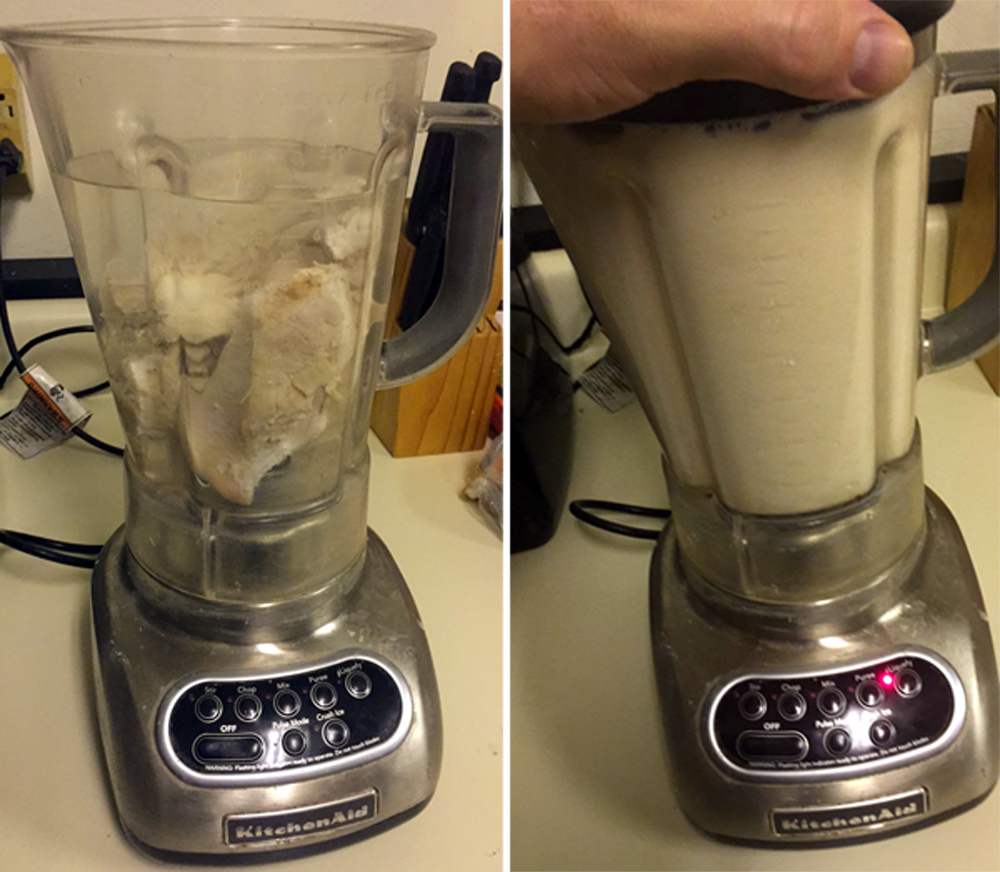
I choose foods that are easy to consume.
When the time comes, I don't have much time. Whether I am doing an all day clinic with clients visiting from out of town, or doing back to back sessions with prospective Keyhole Barbell team members, my schedule is booked solid and I usually have about fifteen minutes I can spare for each meal.
This doesn't make chewing up dry chicken breast seem like a very practical option. Yet, chicken breast has long been my primary protein source. In fact, I have it at least four times per day. The thing is, I drink it.
That's right, I drink it. I make 2.5 pounds of chicken in the form of chicken shakes per day. First, I boil the breasts for about a half hour and then remove the fat by hand, before blending them into a puree with 32 oz of water. The result is broken up into four servings and becomes the protein source for as many of my meals.
I got the idea from Derek Poundstone maybe four or five years ago, and at the time I'd been chewing up chicken multiple times daily for about 15 years. By that point, I was literally gagging every time I had to do so and was willing to try it. It took the work out of eating chicken breast, so I never looked back.
The lion's share of my carbohydrates come from jasmine rice. At night, I make six cups for the next day's meals while I am preparing my chicken. I do not believe that jasmine rice is any better than white rice except that it sticks together, making it easier to eat.
RELATED: The Daily Diet of an IFBB Pro
I can drink the equivalent of ten ounces worth of chicken breast and eat two cups of jasmine rice in about eight minutes if I have to. Sometimes I have to.
My favorite fat sources are the various nut butters. These can also be consumed pretty quickly. I try to eat a pound of vegetables per day, split over two meals. I don't always succeed.
I eat almost half of the day's carbs pre/peri/post workout.
On a normal training day I consume 450-500 grams of carbohydrates. About 200 of those are split up into to shakes. The first one I start sipping about a half hour before I start training; the second, about a half hour before I'm done. The carbs come from a powder product and each shake also includes 50g of protein from a blended source powder product, as well as a seven-gram scoop of creatine monohydrate.
The days I don't train, my fat intake is a little higher in total, and my carb intake is about 150 grams lower. The extra fat comes from lean beef. It costs me around 10 dollars or so per day to eat this way.
Keep in mind that I'm in the 290's.
I don't let my diet control my life.
Four score and seven years ago, when I was new to dieting, I would freak out anytime life showed up and I was forced to, or decided to, go a little off the rails with my eating. Over the years, I realized that letting loose and enjoying some delicious foods now and again, say 10-15% of the time, really didn't set me back all that much, as long as I didn't let it turn into a few days or a week of eating like total shit.
It's good for morale and some of the times I look and feel best are after these "cheats" or breaks from the diet. Just make sure you have the gumption to get right back on track and the occasional transgression can be an beneficial part of the process.
15 calories per pound of bodyweight is a good starting point to figure out your maintenance calories. That is where I start.
To lose fat, I typically set calories at 12 per pound and adjust from there. The reduction in calories will come mostly from carbohydrates, but I try not to let that effect my training shakes dramatically.
When I am trying to add mass, calories will usually stay between 18 and 20 per pound, though I have had to push them much higher to continue gaining at times. The increase in calories will be largely from carbohydrates. During these times I may add a meal in the form of a shake, simply because it is easier to get down.
My protein intake stays the same, at around 1.1 grams per pound, regardless of diet phase. I recommend a little less than that usually. These figures work really well for most people who train, assuming those people are not very fat, in which case they should be adjusted down slightly.
Now you know how I get the diet thing done and hopefully you were able to take something useful from it. I'm not recommending that you guys drink chicken shakes, or even saying that you have to do anything else the way that I do. The fact is, there is no wrong way to do this stuff as long as it ends up with you actually doing it.
Think about things logically, come up with a strategy, prepare, and follow through. Diet is just like any other aspect of an athlete's life: you get out of it what you put into it.
There are simple rules to follow to keep your nutrition 90% perfect, without letting diet control your life. This is how I do it.
Have you ever wondered, as you scroll through your various newsfeeds on social media, how some lifters manage to hit heroic lifts in their training videos that are so much heavier than what they ever end up pulling together in a meet?
I lost sleep over it for a while. I mean, if a lifter is able to get these numbers ever in their life, why would they not make it on the platform? You know, where it actually counts for something?
Every reason you can imagine, I have imagined. I've played every scenario out in my mind. Is the lifter wearing briefs in their training video to hit a higher number? Why would they train in gear, knowing that performing raw in competition will be so drastically different? Is the spotter really helping that much? Why is the fucking spotter helping at all, again, knowing that performing in competition will be so drastically different? Is the lifter's grip really so weak that when they take off the straps, their pull goes down 80 pounds? If so, why are they training with straps in the first place, knowing they won't be able to do so in competition?
Could these people really be doing this idiotic bullshit for the "likes?"
RECENT: Choices and Accountability
Sadly, the answer to that question is a resounding "YES." But taking a closer look, I realized that this was much bigger problem than cheating in training. The number one overarching cause for the huge discrepancy between training video lifts and meet lifts seems to be a widespread, complete and utter lack of understanding of the importance of training for peak performance in competition. I'd like to say this phenomenon is exclusive to novice competitors, but it's tentacles reach to some of the strongest people on the planet.
And that's where things get frustrating, because we almost expect newbies to do dumb shit. They are new, it's part of the learning process. But there is no excuse for a lifter who competes at a high level to be consistently doing this. So if you are one of these, beginner or advance, right now, I am going to start talking to you. If the shoe fits, lace that motherfucker up. (If not, read along and learn more about the subject.)
Maybe you don't know how to set up programming to get your lifts done where they count. If that is the case, hire a coach who does! I would love to help you. I do know about fifteen other awesome coaches who could make it happen for you, if you don't want to work with someone as handsome and charming as myself. That can be quite a distraction, I understand.
Do you not have enough money to work with a professional coach? That's hard to believe, but even if it's true, I have a book you may have heard of called 5thSet for Powerlifting. Inside you will find an entire chapter which will teach you how to peak for a meet. That, and just about everything else you need to know to keep from embarrassing yourself at a powerlifting meet, all for about the price of a singlet.
The book makes things thoughtless and lays out some very easy framework for you to follow, with specific testing and percentages to not only select all of your attempts for the meet, but also dial in and wind down correctly so that you will perform best where it counts: on the platform.
With that said, as is my usual method of teaching, I will never present a problem and not offer a solution. So here are some general recommendations to avoid the problems I outlined above. And I'm going to keep this pretty general, because these concepts are not the science of rockets.
Overreaching
In order to peak for a powerlifting meet, you will need a period of overreaching. In other words, you cannot just decide "hey, I want to peak for a powerlifting meet," then pick a meet six weeks down the road and run a peaking cycle for it. There has to be a period of overreaching before the peaking cycle begins, in order for this to work the way we want it to.
During this period of overreaching, you should be imposing strength-specific demands in your training. That is to say the meat of your work for the three competitive lifts should be performed in the two to five rep range. Assistance work may be geared toward hypertrophy or more toward specific weaknesses, depending on the needs of the lifter. This period should usually span one to three mesocycles or at least a couple of months.
The workload should be set low enough that you can recover from microcycle to microcycle, but high enough that a microcycle (7-10 days) of reduced work (or a deload) will be necessary every mesocycle (or every couple of months).
Peaking
One you have accumulated sufficient fatigue, ideally around 30-35 days out from a meet, you'll want to begin a peaking cycle.
There are quite a few ways to do this, but generally speaking, all of them will involve some extreme overreaching in the competitive movements, in the early weeks of this cycle. Most schemes will have you doing less work, if any, for hypertrophy during this early period, while almost all work for the main movements will be singles. The objective is to increase specific physical preparedness (SPP) as the meet approaches by pushing overreaching about as far as possible in this manner, before dialing things back with a period of reduced work.
WATCH: Table Talk — Learning From Novice Mistakes
Usually around 14-18 days out from the meet the objective switches to maintaining your current level of fitness while reducing the fatigue you've accumulated. That's right; at this point you are just trying to maintain, which means the total amount of work is going to drop drastically. The percentages you will work with should drop also. So if you're doing your second attempts one week out, in my opinion, you're fucking up.
During this period, preparedness (the ability to perform at a maximal level) will increase and hopefully "peak." This is what Verkhoshansky referred to as the long-term delay to the training effect.
Results
I'm sure you are wondering what you will gain in return for the glory you will lose by not competing in the YouTube Olympics right up to your meet. Well, for one, you hopefully will not shoot any vertebral discs across the room while performing fatigued, rounded back maxes every single week on every lift. And beyond that, if you pull off what I outlined above correctly, you can expect gains in performance to the tune of four to six percent on every lift in the meet compared to training.
Sound crazy? How do I know? These are not arbitrary figures. I've been doing this a long time and I keep meticulous records. In the beginning of the peaking cycle I take fatigued maxes for each lift, for all of my lifters. Then, in the meet, when they are peaked, they give me new maxes on the platform. The second set of numbers are on average 4-6% greater than the first. Pretty much every day of the week, four percent is safe.
Now, you can take any advice and be an asshole with it. Don't do that. If the second attempt in the meet is a grinder, adjust accordingly and don't go to 104% for the third. Even better, hire a coach to make these calls for you.
With that, I have hopefully made another worthwhile contribution to what is right in the world of powerlifting. For a more in-depth, step-by-step guide to thoughtlessly peaking for a meet, as well as everything else you need to know to be successful in the sport, buy my complete methodology, 5thSet for Powerlifting, today. I also spend one or two weekends per month traveling the country to work with lifters, teaching about powerlifting and correcting technique, hands-on, at my Reclaiming Real Strength seminars. I can't emphasize enough how much of a difference proper technique can make in your performance. Don't pass up the opportunity to attend one of these. I have dates coming up in NJ and NY in early February.
A lot of lifters show huge discrepancies between their strength in training videos and their performance in competition. If you design your program correctly, your best lifts will happen where it counts: on the platform.
Not every day or even every month, but a few times over the years, I have been contacted by would-be gym owners, seeking my opinion on what is necessary, equipment-wise, to open a facility geared toward powerlifting or strength training. I've even done some real-world consulting work on the subject on more than one occasion and at least one of those facilities is still in business and very successful.
If you know anything about me, you know prioritizing is kind of my thing. As recently as this past week, one of my lifters who trains here at Keyhole Barbell asked for my input on putting together a floor plan of just the necessary items for his own garage set up, which he will use for personal training. I decided to put him in touch with Matt Goodwin at elitefts.
At some point, all of these things started to click and I realized that a good number of people would benefit from me organizing a very basic list of what I think are the ten most important pieces of equipment for a gym owner to have. With the holiday season coming up, some of these would make good gift ideas, too. So, what better time is there for me to put this together than now?
Without further ado, these are the items that no training facility should do without, in order of importance.
Texas Power Bar
This is kind of a no-brainer. It's really hard to lift weights without a barbell. I'm not stuck on a brand for this, there are a few good ones, but the Texas Power Bar is a good multi-purpose bar.
While I am a fan of specificity and using the right tool for the job, benching with a good bench bar, squatting with a good squat bar and, certainly, deadlifting with a good deadlift bar, you still need something to do rows, overhead press, shrugs and other such assistance work with.
This bar is also great for smaller girls to squat or bench with. Probably the same would apply to very small men, although keep in mind that some federations require larger bars to be used in contest. You should train with the bar you will use in competition.
Power Rack
Any of you reading this who run 5thSet (hopefully all of you) know that I am a big fan of pull ups and chin ups as assistance work for the powerlifter. All the lifters at Keyhole Barbell, myself included, do them out of a power rack.
Power racks are also great for rack pulls, barbell rows, shrugs, floor press, overhead press and the list goes on. In a pinch you can even squat out of one. I did for the first ten or twelve years of my lifting career.
This piece of equipment is an absolute staple in any strength training facility.
Competition Bench
Can you slide any old bench into a power rack and bench bench press out of it? Yes.
However, if your facility is going to be used by lifters who compete in the sport of powerlifting, you are probably going to want to invest in a real competition bench. This is going to make life a lot easier in regard to hand offs, spotting, and learning to set up and dig into the pad the way you will on the platform.
Lifting Platform
Whether or not you will have Olympic lifting in your facility, a platform for performing deadlifts is something which should not be undervalued. Hopefully, you will have some really strong lifters training there. They will absolutely drop deadlifts. Sometimes because they fail, other times because they are assholes. But understand that heavy ass deadlifts are going to be dropped at some point. If you prepare for that eventuality, by providing a platform to deadlift on, you won't have to whine like a bitch when it happens. It might make some noise, but it won't damage anything.
Nothing annoys me more than gym owners whining about shit like that. Encourage people to return to the floor with their deadlifts, sure. They have to do it in competition, anyway. And if someone is being disrespectful, by all means, toss them. But if loud noises upset you, find something else to do besides owning a gym. Same goes for crying about chalk. No one cares that you have to vacuum. I vacuum everyday. Comes with the territory.
Dumbbells
There is a list of uses for the standard dumbbell about a mile long and there is not really much that needs to be said here, aside from make sure that your gym has them.
Safety Squat Bar/Yoke Bar
My favorite assistance exercise for the squat, aside from the squat itself, is the SSB squat. You will have a hard time performing these without the bar.
Depending on the angle of the handles, some SSB can be used for a back squat variation, by flipping the bar around and putting the pad across your clavicle and unracking that way. The elitefts SSB/Yoke bar handles are angled in such a way that you can do it, but with some others, where the handles are parallel to the camber, it will basically choke you out. Even when the handles are angled it can be uncomfortable, so why would you do that instead of just back squatting?
It's hands-free. You have the option of using the bar normally, which is similar to a front squat, or backwards to simulate a back squat, and either way can be hands-free.
That's helpful when a lifter has a shoulder, bicep, triceps, or pec injury, or even when recovering from surgery to any of these.
It allows you to continue squatting, even with one or both arms off the bar. I was able to train through two pec tears and a bicep tear using an SSB/Yoke Bar in this manner.
Deadlift Bar
Nowadays, most powerlifting federations use a deadlift bar in competition. This is reason enough for every facility where lifters will train for powerlifting to have one.
Squat Bar
Along the same line of logic as a deadlift bar, you want to train the way you compete. If your facility will house any strong lifters, a standard power bar is not going to cut it. Even six or seven hundred pounds squats will cause so much whip on a regular bar that the lifter will hate their life. A good squat bar is stiff and won't whip. The sleeves are longer so the bar can hold more weight, which is a must for geared lifting.
Reverse Hyper
It's no secret that I believe the reverse hyper is the best assistance exercise for a powerlifter, bar none. In my opinion, doing these will help promote spinal health, prevent injuries, and make you an all around stronger, better lifter.
I can't say enough good things about this this exercise. I fabricated a custom version of this machine for Keyhole Barbell which has the lifter's hands in a position more similar to where they would be for a deadlift. The standard versions of this machine work just as well.
Monolift
The world of modern powerlifting can be broken in two groups at this point: walked out and monolift. There is a lot of contention regarding this topic, but one thing that cannot be debated is that lifters who compete with a monolift should be training in a monolift. That means you need to have one.
I had mine custom fabricated from drawings I made, to suit my own specifications. If you aren't going to do that, which you probably will not, because it's entirely impractical, elitefts has the coolest monolifts I've ever seen, available for order directly off the site.
So get one from us.
Now, I wanted to limit my list to the ten most important things, and for all intents and purposes you could run a great gym with just those, but I'd like to offer some additional insight, as far as ideas for equipment.
Bench Bar
If you will have geared bench pressers or even really strong raw bench pressers in your facility, buy a good bench bar. Even with me taking benches over 500 pounds with my moderately narrow grip, a Texas Power Bar gives me much more whip than I'd like. A good bench bar eliminates that. Also, when you have geared benchers working with upwards of 600 pounds, those extended sleeves are literally a lifesaver when it comes to spotting.
Cable Machine
These are great to have for a variety of assistance exercises as they provide constant tension and allow you to train through many planes of motion.
Bands
Bands are awesome for pull-throughs, pull-aparts, assisted chins, or pull ups, and also as an accommodating resistance device for speed work or as a stimulus variable for just about any barbell or dumbbell exercise.
Specialty Bars
There are a whole bunch of these beyond the SSB I recommended above. Some people would have you believe that these are the most important tools for progress in powerlifting. While I believe they do have some potential benefit, I just don't believe that is entirely true. People were getting "holy shit" strong, long before any of this stuff came in to play. In fact, I was really quite strong before I ever touched any of it.
One of the major tenants of the traveling seminars I do is bringing the focus back to what matters, to the basics, and not getting distracted by the many, many attempts that have been made in recent years to reinvent the wheel. Train with barbells and dumbbells. Make modifications when needed to train around injuries and limitations. Use proven methods and systems. Make nutrition and recovery a priority. THAT'S ABOUT IT.
Everything I just said notwithstanding, there are some specialty bars that can be extremely useful for, you guessed it, "special" applications, like injuries and limitations. My favorites are: Buffalo Bars, Swiss type neutral grip bars, and cambered bars. These are a much lower priority than the items on the list above, but I would definitely have all three of these before even thinking about buying a leg press or any other type of machine like that.
That about wraps things up. I hope you all find this helpful.
MORE: 10 Gifts for the Training-Obsessed Woman
If you want your facility to be capable of producing successful strength athletes, you need the right equipment. Here is my must-have list.










